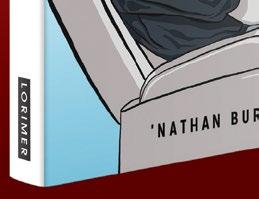FEATURING 313 Industry-First Reviews of Fiction, Nonfiction, Children’s, and YA Books

JEFF


FEATURING 313 Industry-First Reviews of Fiction, Nonfiction, Children’s, and YA Books

JEFF

The acclaimed novelist headlines a special Science Fiction & Fantasy issue



 FROM THE EDITOR’S DESK
FROM THE EDITOR’S DESK
I DISCOVERED Isaac Asimov’s Foundation series at age 14, in the wake of a middle school fixation with J.R.R. Tolkien. That year, I read and reread the novels Foundation (1951), Foundation and Empire (1952), and Second Foundation (1953). Up until that point, I hadn’t thought of myself as a science fiction fan. But the epic scope of Asimov’s books—tracing the decline and fall of the Galactic Empire, as predicted by mathematician Hari Seldon through his (fictional) field of “psychohistory”—surely appealed to my love of ancient Roman history and desire to be immersed in a grand narrative.
The intersections of science and history inform much great science fiction, including the Southern
Reach Trilogy written by Jeff VanderMeer, who appears on the cover of this special issue dedicated to science fiction and fantasy. These modern classics of speculative fiction were published a decade ago, and this summer his publisher will release new editions with introductions by Karen Joy Fowler, N.K. Jemisin, and Helen Macdonald. Even more exciting for fans is the upcoming publication of Absolution (MCD/Farrar, Straus and Giroux, Oct. 22), an unexpected fourth volume in the series. To find out how he came to write it, turn to the interview on page 10.
For history buffs like myself, there’s a rich vein of historical fantasy that is more rooted in the world of the past—with some magical flourishes. The book in this
Frequently Asked Questions: www.kirkusreviews.com/about/faq
Fully Booked Podcast: www.kirkusreviews.com/podcast/
Advertising Opportunities: www.kirkusreviews.com/book-marketing
Submission Guidelines: www.kirkusreviews.com/about/publisher-submission-guidelines
Subscriptions: www.kirkusreviews.com/magazine/subscription
Newsletters: www.kirkusreviews.com
For customer service or subscription questions, please call 1-800-316-9361
genre that first entranced me was Susanna Clarke’s Jonathan Strange & Mr. Norrell (2004), set in England during the Napoleonic Wars; the historical events and players are all there (Lords Wellington and Byron both have cameos), but running beneath them is a secret society that aims to preserve the practice of magic.
Three novels being published this year promise similar enchantments. Bestselling fantasy novelist Leigh Bardugo tries her hand at the genre with The Familiar (Flatiron Books, April 9), set in 16th-century Madrid, where a scullery maid conceals her Jewish heritage—and the magic spells she knows how to cast—as the Inquisition looms. Our starred review called it “a story as intelligent as it is atmospheric.”
Lev Grossman, popular for his Magicians Trilogy, wades into classic territory with The Bright Sword: A Novel of King Arthur (Viking, July 16), in which a young man from the
Scottish isles journeys to Camelot to join the knights of the Round Table—only to find that King Arthur has been killed in battle and the future of the kingdom is in jeopardy. There’s plenty of magic and myth in this book that our critic, in a starred review, calls, “astoundingly, a fresh take on an extremely well-trodden legend.”
Lighter on the fantasy elements—but not quite set in our world—is Nicked (Pantheon, July 23), the adult fiction debut of YA novelist M.T. Anderson. This is, at heart, a heist tale, as an 11th-century monk joins a relic hunter in a scheme to steal the bones of St. Nicholas and bring them to the Italian port city of Bari. This is a world of dog-headed men and saintly miracles: Call it fantasy if you will, but our starred review deems it an “unexpectedly poignant adventure as rare and gleaming as a reliquary.”






ISBN: 978-1-6667-9901-9 [hardcover]
ISBN: 978-1-6667-3838-4 [paperback]
 —Susannah Waters, Author of Cold Comfort
—Susannah Waters, Author of Cold Comfort
ISBN: 978-1-6667-9902-6 [eBook] For Agent Representation and Information on Film Rights, Email pinkeggs@gmail.com • judithford.com “Fever of Unknown Origin tells the moving story of one woman's battle with a debilitating illness. Ford leads us through the bewildering ups and downs of this struggle, culminating in a recovery as richly surprising and nuanced as the illness itself, as well as a deeper understanding of what it means to be fully alive and present in this world. An inspiring read.”
“Debut author Ford presents a memoir of illness and death...A touching consideration of the frighteningly precarious nature of good health.” —Kirkus Reviews (starred review)
Co-Chairman
HERBERT SIMON
Publisher & CEO
MEG LABORDE KUEHN mkuehn@kirkus.com
Chief Marketing Officer
SARAH KALINA skalina@kirkus.com
Publisher Advertising & Promotions
RACHEL WEASE rwease@kirkus.com
Indie Advertising & Promotions
AMY BAIRD abaird@kirkus.com
Author Consultant RY PICKARD rpickard@kirkus.com
Lead Designer KY NOVAK knovak@kirkus.com
Kirkus Editorial Senior Production Editor ROBIN O’DELL rodell@kirkus.com
Kirkus Editorial Senior Production Editor
MARINNA CASTILLEJA mcastilleja@kirkus.com
Kirkus Editorial Production Editor ASHLEY LITTLE alittle@kirkus.com
Copy Editors
ELIZABETH J. ASBORNO BILL SIEVER
Magazine Compositor NIKKI RICHARDSON
Contributing Writers
GREGORY MCNAMEE MICHAEL SCHAUB
Co-Chairman
MARC WINKELMAN
Editor-in-Chief TOM BEER tbeer@kirkus.com
President of Kirkus Indie CHAYA SCHECHNER cschechner@kirkus.com
Nonfiction Editor
ERIC LIEBETRAU eliebetrau@kirkus.com
Fiction Editor
LAURIE MUCHNICK lmuchnick@kirkus.com
Young Readers’ Editor
LAURA SIMEON lsimeon@kirkus.com
Young Readers’ Editor MAHNAZ DAR mdar@kirkus.com
Editor at Large
MEGAN LABRISE mlabrise@kirkus.com
Senior Indie Editor
DAVID RAPP drapp@kirkus.com
Indie Editor
ARTHUR SMITH asmith@kirkus.com
Editorial Assistant NINA PALATTELLA npalattella@kirkus.com
Indie Editorial Assistant
DAN NOLAN dnolan@kirkus.com
Indie Editorial Assistant SASHA CARNEY scarney@kirkus.com
Mysteries Editor THOMAS LEITCH

Alana Abbott, Nada Abdelrahim, Colleen Abel, Brian Alessandro, Paul Allen, Kent Armstrong, Mark Athitakis, Colette Bancroft, Audrey Barbakoff, Robert Beauregard, Elizabeth Bird, Amy Boaz, Jessica Hoptay Brown, Jeffrey Burke, Timothy Capehart, Catherine Cardno, Tobias Carroll, Ann Childs, Alec B. Chunn, Carin Clevidence, Anastasia M. Collins, Kim Dare, Michael Deagler, Dave DeChristopher, Elise DeGuiseppi, Steve Donoghue, Melanie Dragger, Anna Drake, Lisa Elliott, Tanya Enberg, Chelsea Ennen, Ilana Bensussen Epstein, Rosalind Faires, Joshua Farrington, Brooke Faulkner, Sara Fiore, Hillary Jo Foreman, Sasha Fox-Carney, Jenna Friebel, Elaina Friedman, Robbin Friedman, Roberto Friedman, Nivair H. Gabriel, Elisa Gall, Laurel Gardner, Maura Gaven, Chloé Harper Gold, Carol Goldman, Amy Goldschlager, Danielle Galván Gomez, Valerye Griffin, Michael Griffith, Tobi Haberstroh, Lynne Heffley, Loren Hinton, Abigail Hsu, Kathleen T. Isaacs, Wesley Jacques, Mikayla Kaber, Jayashree Kamblé, Deborah Kaplan, Marcelle Karp, Tracy Kelly, Ivan Kenneally, Colleen King, Katherine King, Stephanie Klose, Lyneea Kmail, Maggie Knapp, Andrea Kreidler, Alexis Lacman, Megan Dowd Lambert, Christopher Lassen, Tom Lavoie, Donald Liebenson, Coeur de Lion, Barbara London, Patricia Lothrop, Georgia Lowe, Mikaela W. Luke, Wendy Lukehart, Kyle Lukoff, Leanne Ly, Sandy MacDonald, Kaia MacLeod, Michael Magras, Joan Malewitz, Thomas Maluck, Joe Maniscalco, Gabriela Martins, Matthew May, J. Alejandro Mazariegos, Jeanne McDermott, Sierra McKenzie, Zoe McLaughlin, Don McLeese, J. Elizabeth Mills, Clayton Moore, Lisa Moore, Rebecca Moore, Andrea Moran, Rhett Morgan, Molly Muldoon, Theo Munger, Jennifer Nabers, Yesha Naik, Christopher Navratil, Liza Nelson, Mike Newirth, Mimi Nguyen, Therese Purcell Nielsen, Sarah Norris, Tori Ann Ogawa, Mike Oppenheim, Andrea Page, Derek Parker, Sarah Parker-Lee, Hal Patnott, Deb Paulson, John Edward Peters, Jim Piechota, Vicki Pietrus, Margaret Quamme, Kristy Raffensberger, Kristen Rasmussen, Arianna Rebolini, Stephanie Reents, Nancy Thalia Reynolds, Alyssa Rivera, Erica Rivera, Amy Robinson, Lloyd Sachs, Hadeal Salamah, Bob Sanchez, Gene Seymour, Jerome Shea, Sadaf Siddique, Linda Simon, Laurie Skinner, Wendy Smith, Margot E. Spangenberg, Daneet Steffens, Allie Stevens, Jenn Strattman, Mathangi Subramanian, Jennifer Swanson, Deborah D. Taylor, Paul Teed, Eva Thaler-Sroussi, Bill Thompson, Renee Ting, Lenora Todaro, Christina Vortia, Francesca Vultaggio, Elliott Walcroft, Barbara Ward, Erica Weidner, Amelia Williams, Kerry Winfrey, Marion Winik, Livia Wood

THE SCIENCE FICTION and fantasy genre covers a lot of ground—and time and space. Ranging from historical fantasies that take place in a world much like our own to generation ship stories that transport their characters over decades to the distant reaches of the galaxy, from novels that contain just a bit of magic to others that create entirely new civilizations, these books are expanding the boundaries of fiction.
Natasha Pulley is known as the author of steampunk historical fantasies, but she’s turned to science fiction in her latest novel, The Mars House (Bloomsbury, March 19). January Stirling is a ballet dancer in London when rising waters force him
to take refuge on Tharsis, the Chinese colony on Mars. The lower gravity there means that people born on Earth are bigger and stronger than those born on Mars, and they must go through a dangerous process of weakening. “Full of charming details and gender-bending gallantry, this imaginative thriller is a pleasure to read,” according to our starred review.
Leigh Bardugo’s fans have been awaiting the final installment in her Ninth House Trilogy, but they’ll have to wait a bit longer. Her new book, The Familiar (Flatiron, April 9), is a captivating historical fantasy set during the Spanish Inquisition. Luzia Cotado is a Crypto-Jew working as a


scullery maid, forced to hide the small bits of magic she can conjure by singing snatches of Hebrew—making burned bread edible, fixing broken goblets. When her striving mistress discovers her talents, though, she gets ensnared in a magical contest sponsored by the most powerful people in the land. “Part fairy tale, part political thriller, part romance, the novel unfolds like a winter tree bursting into unnatural bloom,” according to our starred review.
Samantha Mills’ 2023 short story “Rabbit Test” won Nebula, Locus, and Hugo awards, and now she’s published her first novel, The Wings Upon Her Back (Tachyon, April 23). Zenya lives in the towering and heavily stratified city of Radezhda, the daughter of scholars who’s meant to follow her parents’ path— until she runs away to train


as a mechanically modified warrior with wings on her back. Over the course of decades, though, she begins to see her fellow warriors as treacherous and becomes disillusioned with her society. Our starred review highlights Mills’ “masterful worldbuilding, brisk pacing, and stand-up-and-applaud action sequences” but says “the real power here is in her exploration of finding one’s true path, the dangers of blind faith, and weaponized zealotry.…An absolute must-read.”
The Silverblood Promise (Tor, May 7), James Logan’s debut novel, is the opening of an adventure-fantasy series called The Last Legacy. It sounds pretty standard—a young man who’s estranged from his father sets out to learn more about him after he’s found murdered. But, as our starred review says, “there’s a freshness and vibrancy to this tale, in large part because of the flawless execution of various elements. The worldbuilding is exceptional…the diverse cast of characters is insightfully portrayed…the action is nonstop, and the pacing is breakneck.…An undeniable masterwork—and a blueprint for how adventure fantasy should be written.”
Laurie Muchnick is the fiction editor.
LAURIE MUCHNICK Illustration by Eric Scott AndersonA heist threatens to shake an empire in this standalone work of epic fantasy. Seventeen years ago, a gifted dragonrider candidate, Anahrod Amnead, was falsely accused of stealing from a dragon’s hoard. Tossed 50,000 feet to the Deep below, Anahrod managed to survive and carve out a life—only to be kidnapped and convinced to join a plot to actually rob the hoard of that same dragon. Many additional twists, turns, and revelations unfold in this pointed, flaming riposte to the science fantasy series that set the standard for dragonrider novels from the 1980s forward, Anne McCaffrey’s Dragonriders of Pern. (An author’s note acknowledges Lyons’ debt to both McCaffrey and George R.
R. Martin.) McCaffrey’s books and the many series they inspired posit an environment in which dragons—despite their vastly superior size, claws and teeth, ability to fly and breathe hazardous substances, and possession of magical or magic-seeming powers—will generally submit to humans’ superior intellectual and mental capabilities as part of a biologically imperative bonding relationship. This book is set in a world where dragons seem to be equally intelligent to and more psychically powerful than humans. They recognize their obvious advantage and don’t submit: They rule over their riders in particular and much of humanity in general. Bonding has some key physical benefits for them but it’s not an

Lyons, Jenn | Tor | 448 pp.
$29.99 | July 9, 2024 | 9781250342003
imperative; it’s a choice—at least, on the dragons’ part. And the ability to speak to all dragons, which is considered a boon on Pern, is nothing but a profound danger here, because at least one dragon views it as a threat. This novel grabs a bunch of now-classic fantasy tropes and gives them a good shake;
meanwhile, the heist story sticks fairly close to its classic tropes—clever ruses, last-minute setbacks, inevitable betrayals, and so on—but injects enjoyable suspense. Finally, there’s a really sweet throuple romance and some lovely familial reconciliation. A soaringly good read.
entertaining and poignant adventure as rare and gleaming as a reliquary.
NICKED
Alatawna, Asmaa | Trans. by Caline Nasrallah & Michelle Hartman
Interlink (248 pp.) | $16.00 paper May 7, 2024 | 9781623716851

A tale of trauma. Alatawna, a Palestinian Bedouin and now a French citizen, makes a stirring book debut with a coming-of-age novel set amid Middle East turmoil. Translated by Nasrallah and Hartman, the narrative begins in Europe, where the unnamed protagonist has for two years been struggling to get a residence card to enable her to stay in France. The process is dehumanizing, she admits, but nothing like her experiences in what she calls the “open-air prison” of Gaza, where she grew up, victimized and oppressed by her family, a patriarchal society, and the Israeli military. Her father, she reports, “regularly beat me into submission, turning me black and blue as he tried to quell my constant rebellion”—refusing to wear the hijab, for example. “Where we lived, even the smallest thing frightened us,” she reveals. “We were afraid of dying, afraid of worms eating away at our flesh. Rumors instilled a fear in us that even the Israeli missiles couldn’t, though we were well aware that these might fall from the sky at any moment and decimate us.” After being suspended from college for her defiance, she found work at a Spanish news agency where she met José, a non-Arab Muslim who helped her escape. In 2001, she was in Madrid but soon left, beginning a yearslong flight from
Spain to France, as she ran “from one country, one emotional state to another,” finally ending up in a women’s shelter in Toulouse, so traumatized that she could not speak. Most of the novel recounts a past from which the narrator can never escape: humiliation at the hands of the occupiers, feuds and racism within the Afro-Palestinian community, loss and betrayals, and unremitting violence. Sadly, a timely look at a brutal reality.
Amy, Tess | Berkley (288 pp.) | $19.00 paper | July 9, 2024 | 9780593642504
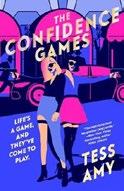
Amy’s debut follows a pair of female tricksters forced to steal something they don’t want for someone who’s given them nothing but grief. Five years ago, actuary Emma Oxley’s old school friend Nellie Yarrow rescued her after she discovered her worthless fiance/boss in bed with his secretary and lost her home, job, and love in one fell swoop. Now it’s Nellie who needs Emma’s help. Just as the duo are launching their latest con (the rules of this “Bonnie and Clyde without the guns and murder”: swindle only men who can afford and deserve it), Nellie is kidnapped by someone who uses a 10-year-old to deliver a note that takes Emma by a decidedly roundabout route to a rendezvous. There, she’s informed that Nellie—who vanished from their ritzy hotel room—will be released only after Emma steals the Heart of Envy, a diamond and emerald bracelet the dark web is buzzing about,
from an upcoming Tiffany exhibition at the St. Jude gallery and turns it over to the kidnapper, who calls himself James Reid, and his boss, the shadowy Mr. L. Emma’s first reaction is panic, because after all, she’s a con artist, not a thief. But working first with Dax Frederick, her tech sidekick and assistant, and then, improbably, with Nellie herself, she hatches a scheme that depends on impersonation, split-second timing, a fake Heart of Envy, and an unbroken skein of luck. Complications ensue. Amy can’t make this caper remotely plausible, but she keeps it tense, inventive, and fizzy. More, please.
Anderson, M.T. | Pantheon (240 pp.)
$28.00 | July 23, 2024 | 9780593701607
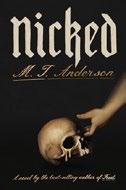
A cloistered monk and a relic hunter must work together to steal St. Nicholas’ bones in this enthralling work of historical fiction based on true events.
In the midst of a 1087 pox outbreak in Bari, Italy, the terminally honest Brother Nicephorus dreams of St. Nicholas. While Nicephorus interprets the vision as an exhortation to leave the abbey and minister to the sick, his abbott and other town leaders see it as a saintly cry for help: Nicholas is clearly unhappy with his current resting place in Myra and wishes for his mystically healing bones to be brought to Bari. After a speedy vetting process, the sly Tartar Tyun is hired to relocate the holy corpse, with Nicephorus supervising to make sure the treasure hunter holds up his end of the bargain. On a ship teeming with odd and imposing crew members from across Europe and Asia, the unlikely pair sets out to burgle St. Nicholas Church. Mishaps and acts of derring-do, interspersed with tales of St. Nicholas’ miracles, ensue. In a novel this funny, it would be all too easy to let
an omniscient, present-day narrator earn laughs at the expense of its characters’ outdated beliefs, but Anderson instead approaches the medieval with curiosity and compassion. Here is a world where spiritual scammers might live alongside genuine dog-men and where devotion to the body—living or dead—can be serious, sensual, and irreverent. This, plus rich prose (“the company of relic thieves appeared like this to him, scattered, tenuous; for the victory feast of one creature, he knew well, was always the corpse of another”) and a queer slowest-of-slow burns, should shoot this to the top of a heist lover’s to-read list. An always entertaining and unexpectedly poignant adventure as rare and gleaming as a reliquary.
Askaripour, Mateo | Dutton (432 pp.) $14.99 paper | July 9, 2024 | 9780593472347
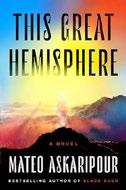
A dystopian fantasy in which our present-day racial hierarchies and caste prejudices are ramped up—as are the humiliations, cruelties, and perils that go with them. Askaripour follows up his debut, Black Buck (2021), by imagining an America even more divided by region and race 500 years into the future. By then, the world’s land masses are designated as hemispheres rather than continents and nations. The action takes place in the Northwestern Hemisphere, whose people are divided between what’s called the Dominant Population, or DPs, and Invisibles, second-class citizens denied opportunities and rights because they aren’t fully “seen” by DPs, who demean, ostracize, and even brutalize them when their presence is acknowledged. One of these Invisibles is Candace, who also goes by Sweetmint, a young woman whose intelligence and determination lead to a coveted apprenticeship with Croger Tenmase, an illustrious inventor
considered a mystifying eccentric by his fellow DPs. Among the many tribulations Sweetmint has had to overcome is the disappearance of her older brother, Shanu. Still, she flourishes under Tenmase’s guidance until her world crashes around her with the news that Shanu is the primary suspect in the assassination of the hemisphere’s chief executive. Sweetmint leaves Tenmase’s haven to search for Shanu, hoping to find him before the authorities do. Her principal nemeses are Curts, the hemispheric guard director, and Stephan Jolis, a ruthless young aspirant for the executive’s job, pledging greater repression of the Invisibles if elected. Askaripour, whose first novel was a satire of class and racial transactions in corporate America, exhibits some of the same hard-driving and, at times, heavy-handed depictions of bigotry here. The author infuses his conscientious worldbuilding with audacity and intricacy down to the social rituals and the epithets casually hurled at minorities. (In this future Earth, the words “Black” and “white” are never explicitly used to classify characters.) And as the propulsive narrative runs its course, the interactions between social castes become subtler and less predictable, especially toward the book’s stunning, even stinging, conclusion.
A page-turning vision of a future made all too plausible by our volatile present.
Banta, Isabel | Celadon Books (336 pp.) $27.99 | June 25, 2024 | 9781250333469

A turn-of-themillennium pop star recounts her disillusioning journey to the top of the charts in this self-assured debut.
In 1990 New Jersey, 10-year-old Amber Young sings Taylor Dayne’s “Tell It to My Heart” at a local talent show, not realizing an agent is in the audience—or that this performance will direct the trajectory of her life. She lands
a spot in the girl group Cloud9, where she befriends Gwen Morris, who soon goes solo and convinces Amber she’s good enough to do the same. Separately, the two achieve quick success, and their friendship continues via voicemails sent from recording studios and tour buses around the world. Both Amber’s intimate first-person narration and Gwen’s messages reveal a worrisome loss of autonomy, their bodies becoming hypersexualized vehicles for others’ desires, power plays, and entertainment. When Amber starts touring with massively famous boy band ETA, she grows close to one of the guys, Wes Kingston, despite knowing the media is desperate to see him with Gwen. This won’t end well, which we know from the get-go; the book opens with a flash from 2002, when Amber is on the cover of Rolling Stone talking about her role in a scandalous Wes and Gwen breakup. Amber’s fame comes quickly and easily, so the tension isn’t in her pursuit of it but rather in anticipation of its consequences. Readers who lived through the Britney vs. Christina TRL era will likely feel an ambivalence similar to Amber’s own. The pop craze was fun, but at what cost? It’s never quite clear how Amber feels about the music of it all: She says singing allows her to “understand the purpose of gods,” but it takes up so little space on the page it’s easy to forget that’s what she’s famous for. Then again, maybe that confusion is the point. While memoirs from former teen stars are starting to expose behind-the-scenes exploitation and abuse, this fictionalization brings readers close through the kind of rich, immersive worldbuilding and gut-punch depth of feeling that only a masterful novelist can provide.
A provocative, quietly foreboding examination of the teen idol industrial machine, arriving at the perfect cultural moment.

For a review of Britney Spears’ memoir, visit Kirkus online.
Kirkus Star
The Heart in Winter
Barry, Kevin | Doubleday (256 pp.)
$28.00 | July 9, 2024 | 9780385550598
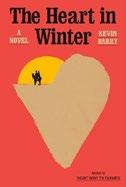
Would-be outlaws, tough dames, large gunmen, and lousy lovers commingle in this heady yarn. The restless Barry mind has carried readers from a hellscape of Celtic gangbangers (City of Bohane, 2012) to John Lennon visiting an island he owned (Beatlebone, 2015) to most recently a pair of bantering ex-drug dealers in a Spanish ferry terminal (Night Boat to Tangier, 2019). Here he’s gone West, to Butte, Montana, in 1891. Tom Rourke has been drifting between bars and brothels and opium dens and dreaming of “being the outlaw type” when he falls hard for Polly Gillespie. She’s just arrived from the East and is newly married to gruff mining boss Anthony Harrington, who preps for his wedding night with self-flagellation and crazy prayer. She and Tom soon light out for San Francisco after stealing cash and a horse and plotting a vague route to the train station in Pocatello, Idaho. Not far behind them are Harrington’s hired pursuers, led by a Cornish gunman seven feet tall and half as wide. At bottom, the novel offers fairly standard fare for a Wild West tale, but the Irish writer’s humor and prose magic give the genre’s conventions a refreshing spin. He recalls Flann O’Brien’s mock-heroic flair in At Swim-Two-Birds and the phrase-weaving and less extreme moments of weirdness in William Kotzwinkle’s The Fan Man and Barry Hannah’s The Tennis Handsome. A dissipated photographer has “the look about him now of dying poultry.” For a man with a hangover, his “noggin end was a tower of screeching bats” and “his stomach was a failing metropolis.” A stranger met on the road “wore a heap of weather and a troutbrown corduroy longcoat.”
Barry’s fans will be delighted and many a newbie beguiled.
Bhattacharya, Tathagata | Seagull Books (184 pp.) | $25.00 | July 6, 2024 | 9781803093574
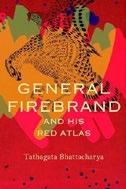
A dizzying tale of guerrilla resistance in the face of growing totalitarianism.
When Colonel Firebrand, a freedom fighter in the People’s Resistance
Committee Guerrilla Army of a fictionalized future India, hears the voice of a scarecrow while out for a cigarette, he thinks he’s being pranked by one of his soldiers. But the voice is no trick—it’s the ghost of General Konstantin Rokossovsky, a long-dead Soviet officer, come to warn Firebrand of an impending shift in the war the PRC is engaged in. Firebrand and the PRC are fighting on behalf of the Sands region, which declared itself an independent nation following an aggressive land acquisition attempt by the republic and its president, Nida Dodi. Dodi, a “far-right religious-party leader,” needs Sands’ resources to maintain power, and the republic’s attempts to take over the land lead to a full-blown civil war. But the pace of the war has changed as of late: An attempt by one of Dodi’s allies to detonate a neutron bomb in Calcutta is foiled by PRC forces, and soon Firebrand and his allies find themselves visited, quite strangely, by all manner of historical ghosts and prophetic animals, who warn of an impending attack by the republic. The clairvoyant creatures carry instructions to ensure Sands’ survival in the coming escalation, and in the course of heeding their advice, Firebrand is
brought face to face with the family he thought he’d lost. Bhattacharya’s debut leaps wildly among perspectives and introduces a staggering array of secondary characters, many of whom play no significant part in the action; the novel also leans heavily on extended sections detailing military activity at the expense of developing characters. A scattered debut.
Blake, Katherine | Harper/ HarperCollins (416 pp.) | $18.99 paper July 9, 2024 | 9780063342200
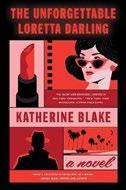
A young English makeup artist, hoarding secrets as well as starry-eyed dreams, takes on midcentury Hollywood. Margaret, a 20-year-old from England, lands in Los Angeles in 1950 having successfully blackmailed a con artist named Jimmie into getting her there. Renaming herself Loretta as soon as she hits U.S. shores, she heads for Sunset Boulevard, appearing to be a wide-eyed ingenue. But Margaret-nowLoretta is anything but naïve; in fact, she arrives with a particular knowledge gleaned from her mother—a pinch of this vegetation and a petal of that plant, and she has the means to impact another person’s health and even end their life. Still, what she really wants to be is a makeup artist. She befriends Primrose, a proverbial gold-hearted prostitute, and soon meets and marries Raphael Goddard, a ridiculously handsome man whose heart proves to
A young English makeup artist takes on midcentury Hollywood.
be as tarnished as Primrose’s is pure. As Loretta apprentices with Alecs Petraś, a celebrated makeup artist, she also develops a tantalizing relationship with screenwriter Scott Eliot. So far, so golden Hollywood with a frisson of mystery. There are entertaining scenes focusing on the art and magic of makeup, and Blake clearly enjoys exposing the cattiness of Loretta’s colleagues. But the uneven narrative is frustrating at times: The plentiful and lighthearted celebrity sightings and glamour-infused scenes—at one point, Loretta attends the Academy Awards— clash jarringly with an unexpected violent near-rape, and what is meant to be a final big reveal is foreshadowed so frequently that it emerges as a whimper rather than a bang.
Scattered elements of mystery and an entertaining Hollywood success story never quite gel in this unsatisfying debut.
The Material
Bordas, Camille | Random House (288 pp.)
$28.00 | June 11, 2024 | 9780593729847

A riffy, funny, whip-smart novel about comedians and their art form. The nearly 10-year-old Stand-Up MFA program is housed—awkwardly, a little resentfully—within the English department of a Chicago university. Bordas’ novel begins in a most inhospitable place for comedy, a faculty meeting: worse, a faculty meeting in which people are waxing indignant about the impending hire of a visiting professor, scandal-ridden celebrity comic Manny Reinhardt. The novel spans a single Wednesday, and its point of view moves freely among those in the program: faculty members, students (Olivia, who’s reluctant to mine her trauma for laughs; Phil, who’s too hesitant to offend; Jo, who’s obsessed with Andy
Kaufman and believes he’s still alive and 40 years into the deep, dark, edgy bit of his “death”; sweet, accommodating Artie, who’s hampered by being too handsome), and Reinhardt himself, who’s on his way to Chicago a bit early and may get to meet his new students at a late-night competition they’re having with an improv troupe. Though there are minor disasters and sources of anxiety aplenty, this is not a book that hinges on plot events or reversals. Instead, Bordas wittily constructs her narrative out of minor encounters, incidents, riffs, meditations. Stand-up, we learn, isn’t any of the cliches, a craft or a knack or a calling; for these practitioners, it’s less a way of making a living than a way of living. Bit-writing, funny-making, is the lens they use to understand themselves and the world. What makes the book work, first and foremost, is that it’s funny —fast and fizzy and dangerous in the way the best stand-up feels improvisatory without ever actually being improv (a discipline for which they feel mostly contempt). But beneath the laughs and digressions lies a surprisingly profound book about the costs and consolations of art. Does doing comedy make these people’s lives better? The question is moot, pointless. The last word of that question falls away, has to; the material and the life are the same thing. Can a Künstlerroman also be a gas? Yes!
Brady, Ali | Berkley (448 pp.) | $19.00 paper July 9, 2024 | 9780593640821
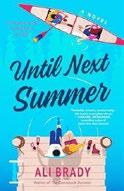
Estranged best friends reunite for one last summer at their beloved camp. Jessie Pederson and Hillary Goldberg spent their childhoods waiting all year to get back to summer camp. Camp Chickawah was where Jessie found a
home in the midst of her parents’ divorce and where Hillary could finally be herself. But most importantly, they had each other, and they were going to be camp counselors together…until Hillary took a job opportunity that her father thought was a better fit, leaving Jessie alone at camp. Hillary grew into a successful consultant, while Jessie worked her way up to camp director. Now, Jessie gets the bad news that Camp Chickawah is about to be sold, and she’s devastated. She decides to give the camp one last hurrah, inviting former campers back for an adult summer session that will celebrate everything that made her favorite place so special. Hillary comes back to run the arts and crafts program and to try to rekindle her friendship with Jessie. As the two of them work together, they realize that their friendship never really died. There are also romantic sparks with returning campers. Hillary reconnects with the cook, Cooper, who was her first kiss. And Jessie is in turns infuriated and intrigued by Luke, the grumpy novelist who’s there to work on his book. As the summer goes on, Hillary and Jessie start to wonder if they might be able to keep the camp—as well as their renewed friendship and their budding romances—going. Brady, the author team behind beach reads like The Comeback Summer (2023), creates a nostalgic and entertaining look at camp life. Jessie and Hillary both have satisfying character arcs, and it’s especially nice to see Jessie begin to realize that camp isn’t the only good thing in her life. While the romances have their steamy moments, this story is ultimately proof that platonic soulmates are just as important as romantic ones. A fun, sun-drenched homage to camp memories.

For another novel about summer camp, visit Kirkus online.
The acclaimed science fiction writer calls his new novel the product of an “ecstatic trance.”
BY MARK ATHITAKIS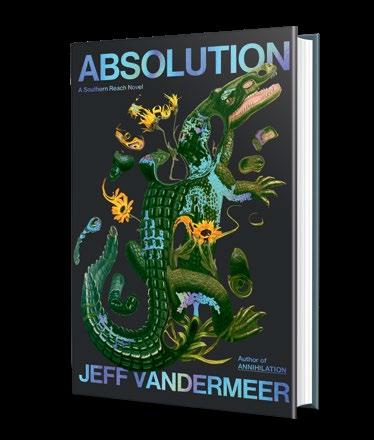
Absolution
VanderMeer, Jeff
MCD/Farrar, Straus and Giroux | 528 pp. $29.00 | Oct. 22, 2024 | 9780374616595
In early April, Jeff VanderMeer dropped a surprise on fans, announcing the release of Absolution (MCD/Farrar, Straus and Giroux, Oct. 22), the fourth book in his bestselling and critically acclaimed Southern Reach trilogy. No question, there’s still plenty to explore: The first three books chronicled the shadowy Area X, a mysterious uninhabited coastal region, and organizations like the Southern Reach and Séance & Science Brigade that have conducted ill-fated expeditions into it. While revealing the prehistory of Area X and extending its story into its future, the new book will resolve many of the series’ plot threads, VanderMeer says—while retaining the discomfiting ambiguity that’s been the hallmark of his horror/ science-fiction mashup.
Absolution will be preceded next month by reissues of the three previous books to celebrate the 10th anniversary of the first of them, Annihilation. Speaking from his home in Tallahassee, Florida, VanderMeer discussed the genesis of Absolution, revisiting his past work, and whether we’ve truly reached the end of the Southern Reach story. This interview has been edited for space and clarity.
Were you surprised that you wanted to pursue a fourth book in the series? I really didn’t plan to write another [Southern Reach] book, but there were these questions that had their hooks in my subconscious. I really wanted to know more about what the Séance & Science Brigade had been up to before Area X came down the border. I also had this weird vision of a scientific expedition to the Forgotten Coast, 20 years before Area X occurred, which had somehow created a condition for, or had an influence over, what happened later. And that was very powerful. All
of this kind of lived beneath the surface of my mind.
What was the writing process itself like?
Last year, the floodgates broke open. For six months, I really wrote in a fever dream, which is very much like how I wrote Annihilation. Morning, noon, and night, basically. Writers don’t like to talk about this phase because it sounds…maybe too surreal. But you’re literally in an ecstatic trance—you’re basically having visions. So by year’s end, the novel was complete. It was the single greatest writing jag of my entire life, and so instinctual that I don’t remember large portions of it. I’m still figuring out how it happened.
Do actual dreams play a role in helping you create that dream state?
I will often have a dream that I write down that becomes the foundation for something. I have a lot of dreams I write down that don’t become anything. But often I’m also kind of primed by something, and I reward my subconscious a lot. So if a dream comes up with something that seems powerful, I will think about it consciously for a while, and then let it drift back into the subconscious until it’s ready.
People often talk about the Southern Reach series as relevant to our present concerns about the environment and politics. Was there something specific you were concerned about that fueled Absolution?
I think that to some degree it was the idea of the world compromising us— feeling this burden of guilt or anxiety over not being sure how much agency we have, not being sure if we’re doing the right thing. That manifests [in Absolution] somewhat in the character of Old Jim, an operative for Central who
had been very intensely manipulated by Central, trying to do the right thing in these difficult circumstances on the Forgotten Coast. There’s always something in the text that reflects the modern day. There was a lot in Authority about bureaucracy that is really also about how we receive information in the modern era, like through the internet, and how dangerous and difficult and anxiety ridden that can be. I think that there are things like that in Absolution Maybe it’s in a different context, but it is commenting on the modern condition.
Whom did you first tell that you were working on a fourth book?
I told my wife, Ann, and then vaguely told my editor. I told him that I wasn’t quite sure what was going to happen with it. And then about a month in, it was so intense that I knew I was going to have a book. I just decided to just keep writing. I didn’t really tell anybody, though at certain points, when I felt I’d reached a certain level of completion, I’d share some excerpts online, which helps motivate me.
How do you handle fan response to those excerpts? I imagine a lot of
writers would just find the comments on a work-in-progress overbearing. My readers have been extremely kind to me, so [there’s been] a very generous sense of play. They’re really cheerleading more than critiquing when I do that. That’s the kind of energy that I’ve tried to use to engage with my readers online, like over fan art. The feedback doesn’t live in my headspace except in a really good way.
One hallmark of the Southern Reach series is that it’s written in a variety of registers. Was it a challenge to find a tone that was unique to Absolution? It was such a pleasure writing this book, because it’s in three distinct parts, which interlock and form the full story. The first part of the story involves this long-ago expedition and its impact on things in the first three books. It’s uncanny fiction, and it allowed me to get to that sweet spot of what I think readers love about the books. It’s told in a more clinical style, because the things that are happening are so startling. The middle section involving Old Jim and the Séance & Science Brigade is more in the style of parts of Acceptance and Annihilation. The third part is the story of what really
happened on the first expedition, and it’s just out of control—a total head trip and in a totally different style.
Did you have a hand in selecting the writers who wrote introductions for the reissues of the first three books? They were writers I recommended who I really love, and writers who I really respect in terms of how they express themselves. It was a dream to have these three write about the series.
In her introduction to Annihilation, Karen Joy Fowler writes that the Southern Reach series is at four books “and counting.” Are you done with Area X? That’s a good question. Absolution could be considered a prequel, even though it also covers part of the time period covered by the first three novels. And then also, without giving too much away, it could in some ways be considered a sequel. And in that context, there are some ideas I’m kind of developing as another self-contained story. There are some ideas floating around. But I don’t know.
Mark Athitakis is a writer in Phoenix.
It was the single greatest writing jag of my entire life, and so instinctual that I don’t remember large portions of it.

Brodesser-Akner, Taffy | Random House (464 pp.) | $30.00 | July 9, 2024 | 9780593133491
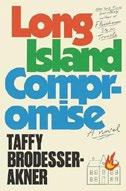
After the paterfamilias is kidnapped, nobody in this family is ever the same.
“Do you want to hear a story with a terrible ending?” Of course we do. So begins the glorious festival of schadenfreude that is this second book by Brodesser-Akner, who was apparently just getting started with her blockbuster debut, Fleishman Is in Trouble (2019)—she hits it out of the park with this much more ambitious follow-up. As the children of Carl Fletcher joke among themselves, discussing a TV show that’s like a Jewish version of Succession, “What Jew our age wants the family business?” Well, it’s a styrofoam factory, not a media conglomerate, for one thing, and for another, these three broken people have been stewed in the juice of a terrible event in their family history: In 1980, when Nathan and Beamer were small and Jenny was in utero, their father was kidnapped out of the driveway and held for several days. He was released upon payment of the third-largest domestic ransom to that time, $250,000. While two of the perps were convicted, the majority of the loot was not recovered, a fact that Carl is still thinking about at his twin grandsons’ bar mitzvah decades later. “White people problems” are generally those that can be fixed by judicious spending, but no amount of money can fix what’s wrong with the Fletchers; as the knowing narrator points out, “There is no post. There’s only trauma.” To which Carl’s wife, Ruth (what a great character), might snort, “Dr. Phil over here.” Indeed, for all the trauma, there are laugh-out-loud moments galore. And the title? It starts out coined by teenagers as something dirty, but as the book progresses, one comes to see that
After the paterfamilias is kidnapped, nobody in this family is ever the same.
LONG ISLAND COMPROMISE
even the crime at the center of the book is a (very sad and twisted) version of the Long Island compromise.
A great Jewish American novel whose brew of hilarity, heartbreak, and smarts recalls the best of Philip Roth. A triumph.
Butler, Halle | Random House (336 pp.)
$28.00 | July 16, 2024 | 9780593730355

Sex and the City meets Ottessa Moshfegh meets the quasi-campus satire in this wickedly funny novel. It’s said that misery loves company; by Butler’s reckoning, millennials love misery and other miserable millennials. Thirtysomething Margaret Anne “Moddie” Yance returns to the Midwestern college town where she grew up; after splitting from her long-term boyfriend, she’s in despair—at one moment wondering why she spent so much time with Nick, a “megalomaniac or perhaps a covert narcissist,” and at others lamenting the loss of someone who knew her intimately and appreciated her biting humor…to a point. Most of Moddie’s friends are hardly friends [insert sarcastic tone], and she has no idea how to play nicely with them. Indeed, she’s a scathing critic, a kind of politically correct liberal who listens to NPR and relishes regurgitating facts from it. She tells a woman who loves Facebook that it’s “the number one worldwide distributor of child pornography, but whatever helps you stay connected, I
guess.” At the same time, most of Moddie’s “friends” are seriously and hilariously insipid; for example, they plan to address a high-profile campus sexual assault in a “global inter-student way” with “molestation and rape questionnaire[s]” at the beginning of the semester. Shifting from one point of view to another, sometimes within a single chapter, Butler skewers all her characters as they whine about being overworked by their academic jobs and unappreciated by their friends and significant others. Sound like fun? Butler writes with a bee-stingsharp sense of humor and irony, and nothing is sacred, not Hillary Clinton, not Ruth Bader Ginsburg, not Christine Blasey Ford’s testimony before Congress. What’s most surprising is that this cooler-than-the-cool-kids novel actually has an emotional center that will make your pulse race.
A tart, irreverent rant of a novel that takes a sharp turn toward something more serious.
Kirkus Star
Carson, Jan | Scribner (288 pp.)
$17.99 paper | July 9, 2024 | 9781668056615

In Carson’s fifth collection of short stories, Northern Ireland is a place that protects and punishes in equal turn. The unnamed protagonist of the title story has finally convinced his Spanish girlfriend, with whom he has a tense, confusing relationship, to visit his native Belfast.
Kirkus StarShe has no interest in meeting his family or seeing the places he frequented growing up or even appeasing him. Carson has set this story in an alternate present in which animals seen as obsolete are culled or sent away; what Paola wants to see is the last horse in Britain. The narrator’s daydreams of how lovely it will be to share his hometown with his partner are quickly squashed after they arrive, but he still at one point feels “the gut-twist relief of belonging somewhere specific.” This feeling—at once soothing and nauseating—is present in each of these 16 stories as their characters confront upsetting or deeply frightening obstacles, some absurd, some starkly mundane. In “Grand So,” a couple struggles to keep their jam business afloat. Granda buys a used car for Granny and their granddaughter Ruth to drive around the province, handing out samples, even though “nobody wants to buy luxury jam. This is Northern Ireland. In the eighties. People have other things on their minds.” Ruth discovers that the ghost of the car’s previous owner—a large chain-smoking man she dubs the Backseat Man—is haunting it. Worse, her family is Protestant, and this man is clearly “the other sort of ghost.” “Caravan,” another standout, is told from the point of view of a young girl. Caroline is 10, “almost a grown-up,” and tired of kiddie stuff. Her father promises that if she can fix up the old caravan she and her sister play house in every summer, she can have it as her very own grown-up room. This story’s strengths are in its subtleties, especially its framing of the ways in which the vibrancy of girlhood can lurch, all of a sudden, into the bleak logic of adulthood.
An admirable collection of stories, saturated with acerbic wit and startling empathy.

Kirkus Star
Dineen, Roz | Overlook (336 pp.)
$28.00 | July 2, 2024 | 9781419767951

British writer
Dineen’s dystopian story about a woman struggling to keep her children safe in a world on the brink of collapse feels uncomfortably as if it’s describing not a fictional future but next week.
Cass lives in “The City,” never named and located in the south of a country also unnamed but with a British feel. It’s facing extreme versions of conditions familiar today: an increasingly hot climate, frequent fires, collapsing infrastructure, corrupt authoritarian government, extremist gangs, and fraying social norms. Choosing to work abroad, Cass’ husband, Nathaniel, a doctor, has left her behind in The City, where she attempts to protect their children from deteriorating conditions. Many of the strong mothers in recent fiction pale in comparison to Cass, with her fierce maternal commitment—not only to her own baby but also to the 4- and 8-year-olds whose mothers died during Nathaniel’s previous two marriages. She experiences typical moments of contemporary motherhood, from easing a resistant child to sleep to resenting a husband’s lack of involvement to sexual fantasizing, but Cass also deals with the breakdown of electricity and communication technology, has a room devoted to bottled water storage, worries that the kids have become used to breathing burned air, and regularly rehearses “terror runs” in her head to prepare for the potential moment when she must escape with the kids. Then a group of male climate activists—Nathaniel thinks they’re incels—attacks a playground. Cass first heads to her mother-in-law’s secluded rural home, where there’s food and breathable air, but staying with the untrustworthy
Eden proves untenable. Cass’ next stop is a commune of sorts in the supposedly safe, walled-off north. But safety is never certain; Cass’ choices, never easy to make. The new world order described by Dineen’s graceful prose is sometimes unbearably depressing, yet this is not an apocalypse. Happiness remains a possibility for Cass and her kids. Often alarming and upsetting, but worth reading for the deep heart at its center.
Dunlay, Emily | Harper/HarperCollins (320 pp.) $30.00 | July 2, 2024 | 9780063354890

It’s not all la dolce vita and Pucci dresses in Dunlay’s 1969 Rome. From the outset it’s apparent that something has gone off the rails in the life of Teddy, the eponymous narrator of Dunlay’s debut novel. Teddy Huntley Carlyle, recently married to the stolid David Shepard— ostensibly a business development liaison at the U.S. Embassy in Rome—is a beautiful debutante, Texas born and raised. Before a whirlwind courtship with David, who was visiting Dallas on government business, Teddy worked for her wealthy and politically influential family’s art foundation, but her remaining single at age 34 had caused consternation within the clan. Teddy sees her move to Rome with David as an opportunity to create a new life and to become the wife she believes David wants while cleaning up a few loose ends and secrets she has been carrying with her. Finding herself alone for stretches as David travels, Teddy’s resolve to stay on the straight and narrow is tested as it slowly becomes clear to her that she is not the only player in her personal drama with secrets to hide. Teddy’s account of how she winds up being “interviewed” by security agents from the embassy is, by turns, a fast-paced overview of the glittering high life of late 1960s Rome and a slow-burn reveal of the family and personal secrets weighing so heavily upon her. Her direct approach in
relating her complicated life story creates sympathy for a character who is otherwise messy, not always scrupulously honest, and prone to self-indulgence. Descriptions of couture dresses, jewelry, and extravagant accessories provide enjoyable eye candy, and it is easy to visualize Teddy’s well-clad life in Rome on a big screen in this satisfying meetup of suspense, rom-com, family drama, and historical fiction.
Make an Aperol spritz, get out the lounge chair, and enjoy this Roman holiday.
Grames, Juliet | Knopf (416 pp.)
$29.00 | July 23, 2024 | 9780593536179

An idealistic American gets educated about Italian realities in a remote Calabrian village. Francesca Loftfield is 27, “a bluestocking with big dreams for building a better world, one needy child at a time,” when she arrives in Santa Chionia in 1960 to open a nursery school for an international charity. She has fled a disintegrating marriage, alluding to it intermittently before she finally explains how it came apart to Cicca Casile, her grumpy landlady. Cicca warns Francesca that it’s dangerous to search for the identity of the skeleton uncovered beneath the rubble of the post office, which was destroyed in a flood that also wiped out the single bridge connecting the village to the outside world. But Francesca’s curiosity is piqued when not one but two women claim the skeleton belongs to a loved one who allegedly emigrated to
America but was actually killed by “them.” As Francesca delves into the stories of Leo Romeo and Mico Scordo, she faces increasing hostility from town authorities and eventually realizes there’s a lot going on in Santa Chionia that she doesn’t understand. Complicating matters is the arrival of Ugo, a handsome village boy who is home from his job in Milan to help with his dying father and openly taken with the American visitor. The tangled plot becomes more so when Francesca decides there’s a third possible identity for that skeleton, and the final revelations would be more compelling if she were a more engaging narrator. The amount of time she spends agonizing over her not-yet-ex-husband becomes irritating, as does her cluelessness about a major character she continues to trust long after readers have seen multiple glaring clues that he’s in on all the dirty deeds. Despite some wonderfully rendered portraits of individual villagers and vivid descriptions of the Calabrian landscape, the novel never quite clicks.
Stronger on atmosphere than plot and narrative focus.
Green, Lauren Aliza | Viking (320 pp.)
$30.00 | July 2, 2024 | 9780593654132

Upper-crust New York families collide after the loss of a promising young violinist. Brooklynites Morgan Hensley and Benjamin Weil are getting married. They’ve waited until the last moment possible to reveal their relationship to their families, giving everyone just enough
A photographer discovers a magical land hiding in plain sight.
notice to gather in Maine for the nuptials. The Weils and the Hensleys are not meeting for the first time for this happy occasion—they have history. What the two families share is Alice Weil, an elite classical musician who was Benji’s sister and Morgan’s best friend, who jumped off a bridge 12 years earlier, her body never located. Green shows the group in their fraught, damaged present—at the couple’s rehearsal dinner, the wedding ceremony—to highlight the awful fireworks among family members. There’s Benji’s divorced Upper West Side parents: laid-off businessman Nick, whose younger wife and new daughter have not been able to dispel his ghosts, and failed ballerina Linnie, whose new philosophy teacher partner knows more about her past than she realizes. Meanwhile, Morgan’s father, an acclaimed pediatric surgeon, carries a torch for Linnie. Lest readers presume that grief has transformed these people into shells of their former selves, though, Green intersperses the present action with glimpses into the past—Alice’s memorial service, the lead-up to her jump, the dissolution of Nick and Linnie’s marriage—to show the same uncomfortable interactions germinating that will play out on a large scale later. This could all make for salacious, fun reading, as these are deeply unpleasant people who spend years bickering with each other, but instead the novel is mostly dreary and Green’s prose is weighed down by a curious formality (“The words shattered the concupiscent undercurrent of his thoughts,” Green writes of Nick during a confrontation with Linnie).
Like left-out wedding champagne: expensive, bitter, and a bit flat.
Harris, Joanne | Pegasus (336 pp.)
$28.95 | July 2, 2024 | 9781639366637

A photographer discovers a magical land hiding in plain sight. Tom Argent always wanted to believe that there was something
special about him as a child, but his adoptive parents constantly reminded him that fairy stories weren’t real. Now in his late 20s, he lives above and works in a photography shop, spending his days wandering London with his camera. Everything changes one morning when he takes a picture by the Regent’s Canal that shows a woman he hadn’t seen on the negative. Later that day, a woman named Vanessa comes into the shop and, in just a moment, Tom has fallen desperately in love. Eager to meet her again, he rushes to a champagne bar she says she sometimes visits, and the night ends with a kiss, a fight, and a meeting with the girl from the photograph. There’s a secret world of moths and butterflies in the shadows of London, and Tom is about to find out how he fits into it. Like the children’s fantasy stories Tom was discouraged from reading when he was young, this book is off from one incident to the next, adventure to adventure. While it creates a fantastical world, the constant movement doesn’t let anything get too deep, from set pieces to magic to characters. The reader is told Tom falls in love with Vanessa, that he has lost memories of a market and a girl, but none of these things are ever actually shown; there’s a trilogy worth of mythos and characters crammed into one normal-length novel with no room for anything to breathe. While the book has great ideas and incredible lore, there’s no connection formed between reader and characters. A glitzy tale with little substance.
Hostin, Sunny | Morrow/HarperCollins (336 pp.)
$30.00 | May 28, 2024 | 9780062994257

An elite Black community in coastal Maryland learns that the mayor has a “secret love child.”
Having set her previous Summer Beach books in the enclaves of Oak
Bluffs, Massachusetts, and Sag Harbor, New York, The View host Hostin closes up shop in Highland Beach, a resort community founded in the late 19th century by Frederick Douglass’ son. According to its website, it is “residential only, does not offer opportunities for tourism and cannot accommodate visits from the general public.” Hostin definitely conveys that attitude as her character Olivia Jones pays a hesitant first visit to the snooty town, whose mayor is her long-estranged father, Charles “CJ” Jones, whose reelection will be compromised by her arrival. (Olivia’s complicated backstory is explained hastily and will remain opaque to those who haven’t read the first two books.) She is also meeting for the first time her evil grandmother, Christine Douglass-Jones (that Douglass), a woman who sees the death of two of her three children as more a reputation problem than a cause for mourning. Don’t feel sorry for me, she tells an old enemy, “I have money, class, and I’ve traveled to places you’ve only dreamed of.” Maybe this is meant to be a laugh line, but some of the wooden dialogue, the tabloid-type gossip about Frederick Douglass, and the oddly placed, uninspiring descriptions of people’s attire are not. In one laugh-out-loud moment, a deus ex machina character storms into a town meeting “wearing an ankle-length persimmon dress.” No designer or anything! As in previous books, characters rely on therapy to deal with their messy lives and romances (Olivia has managed to screw up a good thing she had going in Sag Harbor). The wisdom of Olivia’s therapist, Dr. LaGrange, saves the day: “Life is a journey. You hit a milestone and then you move on to your next goal. The work never really ends. Nor should it.” This beach trilogy, however, should. Lacks the zest of the earlier books and doubles down on the weak writing.

Hur, Anton | HarperVia (256 pp.)
$26.99 | July 9, 2024 | 9780063344488

Letters from humankind and our descendants weave together a story of love, robots, and poetry.
“Poetry is different from fiction, it’s not about story, it’s about becoming someone else,” explains one of the leads in this thoughtful speculative experiment. In it, translator Hur tackles the existential questions posed in Blade Runner but finds answers (and a title) in Emily Dickinson. The novel opens on a crisis in South Africa, as researcher Mali Beeko wonders why one of her most important patients has disappeared. In this near-future, a chosen few have been rescued from early deaths by scientists who systematically replace every diseased cell in their bodies with a bioengineered healthy cell using nanites. This alone would be a cool way to ponder the Ship of Theseus, a philosophical exercise that questions the nature of identity when a person or object is replaced, but the experiment just keeps going. First, over time, the patients themselves becomes influential. Ellen Van der Merwe is a classical cellist whose terrible fate will only become clear later, while Yonghun Han is a literary researcher who uses his extra years to create an AI called Panit, or “Beloved,” as a way to stay close to his late husband. Leaning more on literary discovery than hard SF tropes, the story is extrapolated to the far future by transposing Panit into an android body, followed inevitably by a war between the evolving androids (all reproductions of Ellen) and what people remain. That’s a big idea, but the narrative here is more interested in who we are than who wins. It’s a sad story, but Hur uses its disquieting ideas to sweet effect. It’s an unfailing affirmation of the persistence of love and art, even in the face of oblivion, one that tells us “it’s the story you write that is you.” A novel that traces humanity’s journey from what we imagine ourselves to be to what’s next.
Almost half of the nominees for the prizes withdrew from consideration over the group’s Gaza stance.
PEN America canceled its literary awards ceremony after a number of nominees withdrew their books from consideration in protest over the nonprofit’s response to the Israel-Hamas war.
PEN made the announcement in a news release, with the organization’s literary programming chief officer, Clarisse Rosaz Shariyf, saying, “We greatly respect that writers have followed their consciences, whether they chose to remain as nominees in their respective categories or not. We regret that this unprecedented situation has taken away the spotlight from the extraordinary work selected by esteemed, insightful and hardworking judges across all cate-
gories. As an organization dedicated to freedom of expression and writers, our commitment to recognizing and honoring outstanding authors and the literary community is steadfast.”
PEN had come under fire for what some saw as their insufficient response to the Israel-Hamas conflict. The Washington Post reports that almost half of the nominees for the prizes asked not to be considered.
The organization’s biggest prize, the $75,000 PEN/Jean Stein Book Award, was in peril after nine of its 10 nominees withdrew from consideration. No winner for that prize will be named and, at the request of Stein’s estate, the money will be given to the Palestine Children’s Relief Fund.
PEN said in a statement, “Winners who remained under consideration for their respective award will receive their cash prizes. No winners will be announced if the selected winning title was no longer under consideration for the award.”—T.B.



To see which books were longlisted for the PEN America Literary Awards, visit Kirkus online.




The Fourth Wing author’s romance novel Variation will be published in October.
Bestselling author Rebecca Yarros is returning to her traditional romance roots with her next novel, People magazine reports.
Yarros, who dominated the bestseller charts with her Empyrean series of “romantasy” novels, will publish Variation with Amazon imprint Montlake this fall. The novel follows Allie, a dancer at loose ends after sustaining an injury that ends her career, who meets a niece, given up for adoption long ago. The niece leads her to reconnect with Hudson, her first love.
Yarros wrote several romance novels, including The Last Letter, Great and Precious Things, and The Things
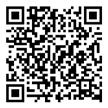
We Leave Unfinished, before publishing Fourth Wing in 2023.
Fourth Wing became a hit with TikTok’s BookTok community; the novel’s success on that platform led it to national bestsellerdom. The book’s sequel, Iron Flame, was published six months later; it too became a huge hit. The third novel in the series, Onyx Storm, is slated for publication next January.
Yarros told People that she is “thrilled” to be publishing Variation with Amazon. “They’re such a supportive, incredible team to work with, and I can’t wait for readers to fall in love with Allie and Hudson’s story and the years of family secrets that surface when these two collide after years apart,” she said.
Variation is scheduled for publication on Oct. 8.
—MICHAEL SCHAUB

Kirsanow, Peter | Putnam (384 pp.)
$30.00 | July 9, 2024 | 9780399171222
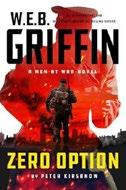
Three Allied leaders may be in mortal peril at a critical World War II conference in 1943.
In a sequel to The Devil’s Weapons (2022), Professor Sebastian Kapsky has been extracted from Nazi-dominated Poland and whisked off to Gotland. He has a notebook with “strategically critical scientific and mathematical data” that could lead to the development of a frightening, war-ending weapon. The enemy knows of the notebook and wants it, but Major Richard Canidy and First Lieutenant Eric Fulmar of the U.S. Army are assigned to protect it. Unfortunately, the Thorisdottir twins, “six-foot Nordic goddesses,” betray their trust. They steal the notebook from the American duo and will gladly sell it back to them or to the Soviets for an exorbitant price. The Americans screwed up, but they get a new assignment because they are still the best. Churchill, Stalin, and FDR plan to meet at a conference in Tehran, where Uncle Joe will press for his allies to open a western front to relieve Nazi pressure on the Soviets. Aware of this plan, Hitler orders a decapitation strike to kill the three heads of state and throw his enemies into chaos. Meanwhile, the Russians are thinking of staging a sham—a failed assassination attempt to make the eastern front situation appear even more dire. This is the crux of an exciting and highly plausible story. Expect blood to flow and skulls to crack as elite Nazi forces try to eliminate the American officers. There’s a good balance of skill
and power among the main characters— SS Obersturmbannführer Otto Skorzeny and Soviet Major Taras Gromov are top assassins with a lot of people to kill, not the least of whom are Canidy and Fulmar. And how bad are the bad guys? One of them wants to work alone, so he slits the throat of the man assigned to help him. Damn, that’s cold. All the important characters appear first in The Devil’s Weapons, so you may prefer to read the books in order. Based on the ending, a third installment looks likely in this absorbing series.
A fast-paced, compelling yarn that thriller readers will enjoy.
Lattimore, Ashton | Ballantine (368 pp.)
$30.00 | April 2, 2024 | 9780593600153

The lives of three Black women— one free, one enslaved, one in between— are entwined in Philadelphia in 1837.
Nell lives a life of relative privilege as the daughter of a prosperous, socially elite Black family that’s been free for generations. As she enters adulthood, she wants to give back, and so she throws herself into working with an abolitionist organization. Philadelphia, her home, is an ostensibly free city, but all around her she sees signs of racism and proslavery rhetoric that sometimes explode into violence. Evie is an enslaved teenager, brought from her home on a Maryland plantation to Philadelphia by her owner, a self-absorbed young widow, Kate, who has already sold off Evie’s mother and brother, leaving the girl brokenhearted.
The lives of three Black women are entwined in 1837 Philadelphia.
Linking Evie and Nell is another young woman. Nell knows her as Charlotte, a free Black domestic worker with a quick mind and ambitions, whom she befriends as an abolitionist ally. Evie has known her, much longer, as Carrie. They were enslaved on the same Maryland plantation until a few years before, when Carrie’s father, Jack, escaped with his daughter. In Philadelphia, Jack calls himself James—light-skinned enough to pass for white, he has established a successful woodworking business. But to maintain his disguise, his dark-skinned daughter must pose as his housekeeper, always hiding her past and calling herself Charlotte. Each woman wants to rise above her current life, but Evie’s need is most urgent—Kate is about to remarry and move to South Carolina, legendary for exceptionally brutal treatment of the enslaved. As Nell and Charlotte resolve to help Evie escape, Lattimore shows us the complex, deeply restrictive social structure that they must overcome to take action. The first part of the book moves slowly, but the pace picks up in the latter half as the escape plan for Evie takes shape. Although the book’s history lessons sometimes interrupt its narrative, the well-rounded main characters keep the reader engaged. This rich historical novel widens the scope on the variety of Black American experiences.
Lee, Miye | Trans. by Sandy Joosun Lee Hanover Square Press (288 pp.)
$21.99 | July 9, 2024 | 9781335081179
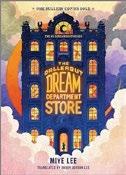
A young woman gets her dream job—working in a department store that sells dreams to sleeping people. Starting with the premise that the dream plane is a bustling metropolis, this book follows Penny, a new employee at the Dallergut Dream Department Store. The gently unwinding story follows Penny from her interview through her first year on the
job. She works at the front desk of the department store and gets to know the managers and their teams on each floor above her: the hyperorganized Vigo Myers sells dreams of simplicity—quick getaways, hanging out with friends, enjoying good food—on the second floor; the cheerful Mogberry on the third floor sells groundbreaking activity-related dreams with her free-spirited teammates; the fast-talking, fast-moving, jumpsuit-clad Speedo sells nap-exclusive dreams with his team on the fourth floor, many of them to babies and animals; and Penny’s loud, center-of-attention-seeking old schoolmate Motail on the fifth floor sells all the leftover dreams from the lower floors at steep discounts. Penny’s mentor is Mr. Dallergut himself, descended, as legend has it, from the family that founded the metropolis. The story touches on the customers who arrive to buy dreams, never remembering that they’re shopping for dreams but returning again and again; the furry Noctilucas who run around behind dreamers making sure they’re properly clad in dressing gowns and socks if they arrive naked; as well as the dreams themselves: soothing dreams of people loved and lost, dreams of flying, dreams of eating, dreams to process trauma, and dreams of otherworldly worlds and richly drawn travel. Translated from Korean, this delightful story transcends Penny’s experiences to be about so much more.
A comforting story of dreams, lives, and the ways people process all that reality offers them.
Jewel
Crown Lewis, David | John Scognamiglio Books/ Kensington (304 pp.) | $27.00 July 23, 2024 | 9781496749093
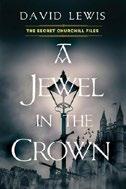
The Blitz is on, and Britain must protect its precious symbol. With his nation in peril in 1939, Winston Churchill concocts a scheme to protect
the crown jewels: transport them to a submarine that will whisk them off to the safety of Canada. He recruits Hector, Lord Neville-Percy of Marlton, and police constable Caitrin Colline, a “Welsh firebrand, antiroyalist, and future destroyer of England’s aristocracy,” to act as a squabbling married couple driving a hay wagon. While this may not have been one of Winnie’s better ideas, he certainly finds two people with clashing backgrounds and personalities. (In reality, the jewels were buried on British soil.) The book is an oddity for a World War II novel. It’s funny and filled with witty dialogue, coming mostly from Caitrin. To each other, they are Hecky and Catty. When anyone asks what they’re carrying in the hay wagon, she answers the crown jewels, correctly expecting not to be believed. Some people they meet are not even convinced that they’re married. And they must deal with Die Brücke— The Bridge—whose members wish the English could just get along with Hitler. Violence is a long time coming in this novel, and for a while the humor carries more weight than the plot. But sometimes the interchanges cross into plain silliness: “‘…a horse box full of hay bales that no one is allowed to see. Tip-top secret, no?’ ‘Yes,’ Caitrin [replies.] ‘The hushest of all hushedy-hushes.’” The exchanges between Hector and Caitrin show off many of the class differences between them. Caitrin would just as soon expropriate all the aristocrats’ property and tell them to go get jobs like everybody else. Hector is defensive about his class, saying hey, don’t blame me for the circumstances I was born into. Eventually there is bloodletting— this is war —and Caitrin acquits herself as a woman you wouldn’t care to mess with. Meanwhile, they remain well aware of the scourge of the Nazi bombers pummeling England. So the big question is whether they will make it to the submarine or end up somewhere they’d never imagine. Good for smiles and chuckles until war becomes more real.
Kirkus Star
Lock, Norman | Bellevue Literary Press (352 pp.) | $17.99 paper July 2, 2024 | 9781954276277
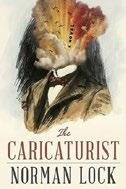
An illustrator seeks his fortune on the eve of the SpanishAmerican War. Though it opens in 1897, Lock’s new novel feels very relevant in 2024. The narrator, Oliver Fischer, is 20 when the book begins. He’s studying art, to the frustration of his wealthy, bigoted father, who urges him to take up a career in banking instead. Much of Oliver’s time is spent discussing politics and thinking about the nature of art. Painter Thomas Eakins—one of Oliver’s instructors— instructs him to read Stephen Crane’s article “An Experiment in Misery,” an account of living hand to mouth. It’s at this point that Oliver’s life begins to draw closer to Crane’s, with the two men eventually crossing paths in Key West. The story of a young man’s discovery of what is and is not important to him is well handled here, and Lock offers reminders of the more unseemly aspects of this society, from Oliver’s father’s bigotry to a racist attack on a Chinese restaurant. The novel’s description of the unlikely alliances at work in the anti-imperialist movement are intriguing—but it’s Oliver’s voice and the lyricism of his observations that make this novel especially strong. Here’s Oliver exploring a collection of swallowed jacks in the Chevalier Jackson Foreign Body Collection at Philadelphia’s Mütter Museum: “Their number testified to the popularity of the schoolyard game and to the appetite of children for the inedible.” Oliver is a wry narrator; he observes that, as tension between the United States and Spain escalates, “the temperature of the nation’s war fever could be told by the number of exclamation marks” in newspaper headlines. In the end, it’s a book haunted by Crane’s literary work and his legacy—to say nothing of the man himself. A resonant story of art, rebellion, and politics.
Kirkus Star
Quincas Borba
Machado de Assis, Joaquim Maria Trans. by Margaret Jull Costa & Robin Patterson | Liveright/Norton (368 pp.)
$29.99 | July 9, 2024 | 9781324090687

A parodic novel by the great Brazilian writer, first published in 1891.
Quincas Borba is a philosopher of sorts, the inventor of a doctrine he calls Humanitism, which takes logical positivism to its extremes. Having propounded it, Borba declares himself “the greatest man on Earth,” but although he confidently denies death, soon thereafter he dies. His friend Rubião, who tolerates Borba’s eccentricities, is the sole recipient of Borba’s considerable fortune, with but one proviso: He must take care of Borba’s beloved dog, itself named Quincas Borba. The dog is a sweet thing; Rubião not so much, leaving the poor critter alone while he enjoys the life of high society in Rio de Janeiro. Among other things, Rubião tries mightily to seduce the beautiful young wife of his financial advisor. Sofia is no Emma Bovary, and though she’s well aware that Rubião desires her, she seems more interested in an empty-headed social climber closer to her age. She’s also well aware of her powers: “Once she had laced up her corset, still standing before the mirror, she lovingly arranged her breasts to show off her magnificent décolletage,” attributes that Machado, fond of allusion, likens to a passage from the Greek historian Herodotus. Rubião has fully absorbed just one lesson of Quincas Borba’s: There’s not enough to go around, making it necessary for one tribe to kill another in order to eat, a lesson that Rubião distills into “a signet ring inscribed with the motto: TO THE WINNER, THE POTATOES!” Alas, potatoes are elusive, and the only admirable figure in Machado’s novel is the dog, who “loves being loved. He’s happy to believe that he is.” He’s
probably not, but, like the other hapless characters in Machado’s satire, he’s happy to chase his own tail.
A welcome, fresh translation of an overlooked classic, a superb novel of (bad) manners.
Maier, Thomas | Post Hill Press (288 pp.)
$28.99 | July 9, 2024 | 9798888453643

A down-on-hisluck New York newspaperman hoping to make it big via a lavish TV adaptation of his novel stumbles into controversy. Jack Denton’s fact-based book, The Life Line —about railroad tycoon Austin Corbin’s theft of tribal land from the Montaukett Indians on eastern Long Island in the 1880s—hasn’t sold many copies. But the story of Corbin’s unscrupulous efforts to build a port in Montauk for “Mile a Minute” trains to Manhattan has captured the interest of Max Kirkland, a “genius” director with uncontrollable Harvey Weinstein–like traits. Hired as a consultant on the project, Denton attends location shoots, stargazes, frets over changes in his narrative, and sleeps with a disgruntled actress who promptly disappears. For Kirkland, her vanishing is the least of his worries. The Montaukett community is up in arms over the casting of a white actor to play the tribal hero and other cultural offenses. And Denton, who is covering the rise of Donald Trump and dealing with a busted marriage, has other fish to fry. While the individual pieces of Maier’s novel unfold agreeably enough—even if Denton’s accounts of the filming go on too long—they never come together in a meaningful way. And the Denton character has a serious credibility problem. He boasts about the awards he’s won for his exposés but never reveals any of the essential qualities he would need to be a standout reporter, including basic smarts. “Covering Trump for the paper these days has
really made me think—where is this country going…?” Ya think?
A novel set in “Hollywood East” that never figures out which direction to go.
Malerman, Josh | Del Rey (384 pp.)
$28.00 | June 25, 2024 | 9780593723128
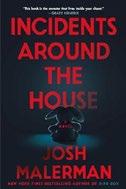
Frightened by the “Other Mommy” in her bedroom closet who asks her, “Can I go into your heart?,” lonely 8-year-old Bela enters into a horrific waking nightmare involving her whole family.
Set in the fictional small town of Chaps, Michigan, near the other made-up places in dread specialist Malerman’s novels, the story involves a deeply troubled family. Bela’s actual mommy has been cheating on her father, Daddo, whose friendliness and good cheer clash with his wife’s dark streak. Wrapped up in their squabbling and work demands, they’ve neglected to pay attention to Bela. Sweetly seductive in the beginning, Other Mommy offers Bela, who blames herself for the whole mess, a solution. They will trade places, with the Babadook-like presence reincarnated in the girl, and the girl... who knows where she’ll go. “Whatever you do, most of all, don’t allow someone else’s meanness, someone else’s cruelty, to get inside of you,” Daddo lectures Bela. Soon enough, a screaming, shape-shifting version of Other Mommy is revealed to everyone, leading the family to run off to an assortment of supposedly safe places and bring in experts in the spirit business to get rid of Other Mommy. Leave it to Mom and Dad to get so caught up in their plight that they miss half of what Bela has to say. As a result of long monologues about secrets and lost innocence and such, the book loses some of its edge. And though Bela may well be little more than a stick figure by design, that deprives the novel of a deeper dimension. That said, Malerman keeps us in
his grip, as he did in his best book, Bird Box (2014). The novel isn’t the original that Neil Gaiman’s Coraline is, but it still deserves a place alongside it on anyone’s Halloween bookshelf. Screwy but scarrry!
Manguso, Sarah | Hogarth (272 pp.)
$28.00 | July 23, 2024 | 9780593241257

A slow-motion portrait of a collapsing marriage. Jane, the narrator of this piercing second novel by poetessayist Manguso, is an accomplished writer who’s fallen for John, a visual artist. From the start of their relationship, it’s clear that he has a competitive streak that manifests as jealousy: When Jane wins an esteemed fellowship in Greece that John lost out on, he sulks and judges. In the years that follow, Jane episodically tracks how her life with John tightens (marriage, a child) and then asphyxiates—John is constantly short on cash, perpetually traveling and moving the family for work, absent when it comes to housework, and dismissive of Jane’s ambitions. (Every time she mentions John taking another trip to Calgary, you can feel Jane grit her teeth a little harder.) Given the asymmetrical nature of the relationship, it’s not hard to predict the novel’s eventual arc. But given the title, it’s also easy to wonder how much Jane might be eliding—though, more brutally, the narrative showcases how much self-deception is required to keep a struggling marriage together. Regardless, much like Very Cold People (2022), the novel is driven by tart, brutal sentences. Sometimes Jane is sarcastically furious (“Congratulations! You’re forty years old and completely financially dependent on your husband!”) or vividly resentful (“At supper, I bit down on a shard of glass he’d gotten into the stir-fry”). Most often, though, the tone reflects a kind of bitter self-resentment
A slow-motion portrait of a collapsing marriage.
that an intelligent and self-possessed feminist has been roped into a conventional, sexist gender role. Catching herself defending John, she thinks, “That’s just me projecting a pretty moral onto a story of deliberate harm.”
A bracing story of a woman on the verge.
Moniz, Tomas | Algonquin (288 pp.)
$28.00 | June 11, 2024 | 9781643755816
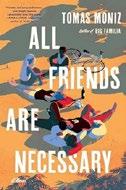
An intimate look into the bonds that rebuild us after tragedy. Thirty-sevenyear-old Efren “Chino” Flores has just moved to the San Francisco Bay Area from Seattle. In Seattle, Chino lived with his wife, Luna, and taught middle school biology. But when Luna got pregnant and then had a miscarriage, the grief ripped them apart. Now, Chino must navigate a new beginning, relying on the support of his closest friends, Metal Matt and Mike and Kay, along with the romantic and sexual partners—both men and women—that he meets. Often the borders between sexual and platonic are not clear—for Chino, friendship toes the line of eroticism. Spanning the years 2018 to 2022 and the Covid-19 pandemic, the book follows Chino as he moves from San Francisco up to Guerneville and then to Oakland, teaching after-school classes about local wildlife to middle schoolers and eventually starting his own naturebased educational institution. Interwoven in the plot are vignettes of his childhood, teachings on ferns and other native plants, and meditations on ever-changing and ever-present grief: “There is something about grief that holds on to you. Or
maybe it’s you holding on to it. Like itching a scab, like stroking a scar. A reminder.” Chino’s voice is quirky and refreshingly frank: With a new lease on life, he’s exploring what he likes and doesn’t like, reflecting on the gifts and frustrations of friendship, sex, and loneliness. But there are moments in this story that feel thematically underdeveloped: At one point, Chino and his friends go to a spin class before heading out to protest a Nazi gathering; during the spin class, they all enthusiastically cheer “Fuck Nazis,” a scene that feels both out of touch and a little overwrought. A thoughtful, tender, if somewhat earnest tribute to the joyful minutiae that sustain us.
Norman, Howard | Norton (240 pp.)
$27.99 | July 9, 2024 | 9781324076339
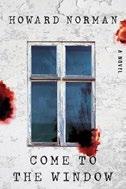
A tragic love story becomes a journalist’s obsession. This novel by Norman, like much of his fiction, is constructed out of a handful of reliable elements. Nova Scotia setting? Check. Quirky protagonist? Check: The narrator, Toby Havenshaw, is a courtsand-cops reporter gathering notes for a book on insomnia. Crime of passion? Check: Toby is covering the trial of a woman, Elizabeth Frame, accused of killing her husband on their wedding night in a seaside hotel. But there are some unique elements, most obviously the whale that has beached on that seaside. And into whose



ISBN: 978-1-964428-00-0 [paperback]
ISBN: 978-1-964428-01-7 [eBook] For All Inquiries, Please
DISCOVERING JELLYFISH HAVE EYES IS A LIFELINE FOR NATIONALLY RECOGNIZED SCIENTIST RICARDO SZTEIN. UNMOORED BY HIS WIFE’S DEATH AND TRAPPED BY BUREAUCRACY, THE AMBITIOUS SCIENTIST RECKLESSLY SEEKS MEANING IN A MEANINGLESS DISCOVERY.
OR IS IT? COMPELLED TO PROVE ITS VALUE AND ALLEVIATE HIS GUILT, RICARDO IS BLIND TO THE PERILS OF HIS PURSUITS.

“Ricardo Sztein is an unforgettable character, and this story is de��nitely a winner.”
—Robert Bausch, Author of A Hole in the Earth
“In this original and provocative combination of science and ��ction, Joram Piatigorsky brings to life evidence of Dr. Johnson's observation that Truth can be made more accessible when draped in the robes of Fiction.”
—Warren Poland, MD, Psychoanalyst, & Author of Meltingthe Darkness
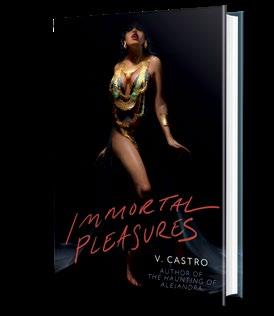
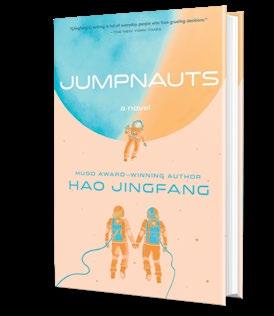
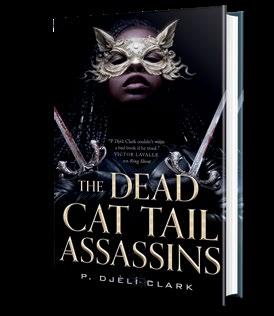


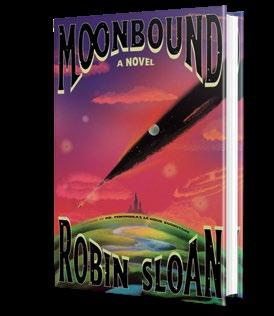
blowhole Elizabeth has tossed the murder weapon. And which is ultimately, spectacularly blown up. Not to mention that Elizabeth is pregnant from a man she was married to before her slain husband—and has run off with a PTSD-struck court stenographer after the explosion. It says something about Norman’s command as a novelist that this setup doesn’t read as comic, or even particularly absurd—as usual in his work, he conjures up a world where calamity is the norm, and his heroes’ roles are to find poise somehow within it. Because the novel is set in 1918, as the Spanish flu begins running rampant through Nova Scotia, it’s hard not to read it as a Covid-19 allegory, echoing contemporary paranoia and nativism. “Today…is going to be busy as any day in the Old Testament,” one character says, and the novel does create the feeling that epic, tragic, metaphorical events stalk Toby wherever he goes. Yet for all the chaos, Norman has written what is at heart a tender book, sensitive to the surprising nature of relationships, the depths of personal trauma, and the capacity of affection to alleviate the pain. A well-turned story suffused with Norman’s trademark melancholy.
Kirkus Star
Obioma, Chigozie | Hogarth (384 pp.)
$29.00 | June 4, 2024 | 9780593596975

A man is forced into the turmoil of Nigeria’s brutal Biafran war.
Adekunle Aromire—the protagonist of Booker Prize finalist Obioma’s third novel—has overheard his mother saying that he’s cursed. By her lights, his neglect caused a car accident that nearly killed his younger brother, Tunde, when the boys were 9 and 6. Years later, in 1967, Kunle is a recent college graduate who learns that his brother has moved with a woman to the new separatist state of Biafra;
guilt-stricken and fearing for his brother’s safely, Kunle volunteers with a Red Cross group, one of the few ways for a Nigerian to safely enter the region. Unfortunately, Kunle is separated from the group, found by Biafran soldiers, and compelled to join its army. Biafra’s two-year war with Nigeria was a failed and notoriously brutal affair, killing hundreds of thousands of soldiers and civilians, and Obioma’s rendition of it is distinguished in part by his unflinching writing about the violence and how Kunle “has drunk his fill of the war’s raw water.” In short order, he and his fellow soldiers grow hardened and demoralized, skeptically considering the generals and mercenaries who deliver their marching orders. (One is Rolf Steiner, a real-life German soldier of fortune.) The horrors are tempered by an unlikely but well-sold battlefield romance and by Kunle’s commitment to fulfilling his original mission of finding Tunde. The story is also leavened by Obioma’s consideration of the role of fate in all this: Interstitial chapters feature a Seer who has prophesied the novel’s events. Obioma has captured the essential elements of the war novel—the near-death experience, the tragic losses, the flickering moments of generosity and grace—but he inhabits them with a rare command, empathy, and intensity of feeling.
A top-tier war novel, inventive and cleareyed about the consequences of violence.
Ramuz, Charles Ferdinand | Trans. by Bill Johnston | Archipelago (250 pp.)
$22.00 paper | July 23, 2024 | 9781953861825

A malevolent mountain terrorizes the village folk who live below. In what might be rural Switzerland, residents of a hamlet face a quandary. Their animals have little good to feed on but the lush grass growing in Sasseneire, the pasture high on the local mountain at 7,500 feet. Two decades earlier, the mountain had given the townsfolk such
a fright that they have avoided it ever since. But such a pity: “all that grass up there going to waste.” Dare they try again? “Don’t you know, they have the sickness up there!” “No one actually believes any more in those stories, except a handful of old men.” After contentious debate, they vote yes. Young Joseph joins a work crew so he can earn enough money to marry Victorine, who waits anxiously at home. Workers bring their animals up the mountain and hear mysterious noises at night, portending evil. They sense an undefined Him, aka the Other, or the Evil One. Indeed, something up there hates them, and that’s the nut of this spooky tale. There are lovely descriptions decorated by similes galore, such as “the air moved like when a bed sheet is shaken by its four corners.” Taken individually, most comparisons work well. Taken as a whole, they are like the effort of a writer who is trying too hard. Many passages enhance the mood: “The shadows had retreated into the objects that had brought them forth.” But there is a darker portent than the shadows. A worker gets a splinter in his thumb, and his body becomes “black and swollen.…He rotted before he died.” There’s a puzzling episode in which another worker, Romain, uses his ramrod-loaded rifle to shoot at and miss a jay, blowing away his hand instead: “tatters of skin…were all that was left of the fingers of his left hand.” You don’t have to be a gun enthusiast to know how improbable that is. And some readers might find annoying the apparently random switches from past tense to present. One example of many: “He gets up. He was ashamed for himself.” Yet there are great lines as well, such as “misfortunes marry one another, they make children.” That’s surely true on this mountain. Flawed horror, but suitably creepy.
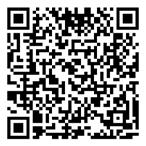
Regel, Hannah | Verso (240 pp.)
$19.95 paper | July 2, 2024 | 9781804295373

A flailing young London sculptor obsesses over a cache of letters, the legacy of an artistic forerunner.
Linear thinkers may find themselves frustrated by this prismatic novel centered on a trove of letters housed in the musty Feminist Assembly archive (presumably a fictional analogue of London’s real-life Women’s Library). As the editor of an avant-garde arts journal, the author clearly knows the territory; however, the narrative is needlessly overwrought—a mosaic akin to an artfully shattered and reconstructed pot. The biggest impediment is a plethora of points of view, perversely scrambled—sometimes in the course of a single sentence (the reader must constantly recalibrate). The present-day tale of Nicola Long plays out in the past tense, where her artistic ambition appears permanently stalled. She works at a nursery school and spends her lunch hours lying on a bathroom floor; her boyfriend helpfully suggests hairdressing school. Nicola is obsessed with the letters of Donna Dreeman, who died, presumably by suicide, in the 1980s. Her story surfaces in epistolary excerpts that quickly segue into present-tense scenes. Also accorded her own voice is the letters’ addressee, Susan Baddeley, Donna’s supposedly dull childhood friend, who bridges both eras. There are riches to be found here: exquisitely described physical details (the library’s “fuzzy lemonade light”) and smart takedowns of artsy pretension. Still, the overall message seems to undercut the artist’s mandate: to create something
new out of nothingness. A few flights of fancy apart, this is fairly well trodden ground. Sadly for the reader as well as for the protagonists, both artists’ pasts prove singularly joyless, tripwired as they are by self-doubt.
An overly complex structure mars this otherwise astute and timely examination of the challenges facing women artists.
Rich, Simon | Little, Brown (224 pp.)
$28.00 | July 23, 2024 | 9780316569002

The travails of an aging Super Mario, the media battle between David and Goliath, and the workplace woes of the foul-mouthed Tooth Fairy are among humorist Rich’s latest concoctions.
“Our wands are defective. Our fairy dust is toxic. They make us buy our own tutus from the company store,” moans the Tooth Fairy. Now his employers are threatening him with painful measures for continually failing to secure the baby teeth of his assigned Tooth Producing Unit—which the parents had quickly encased in glass. Who else to turn to but a labor litigation lawyer? Up against the media savvy of little David, who with his cute blond looks, endearing grin, and slick correctness is “so hot everyone’s creaming themselves to get a fucking piece,” glum Goliath desperately agrees to be sponsored by a porn company. Then there’s Mario’s midlife crisis, which has him questioning his blind devotion to saving the Princess: “Did I really want to be with her? Or was her love just another form of points?” And so it goes with this misbegotten cast of characters—including God Himself, who
A dynamic rock song of a novel from an exciting new author.
LO FI
admits to messing up with Adam and Eve and now regrets that he “set a precedent with that fucking fruit thing.” Things go better for lonely Death Skull, who makes up for his social failures with Ultra Man by connecting with a customer service worker through “male friendship speed dating.” As ever, Rich overworks the same basic schtick and the laughs are more of the heh heh variety than har har. But his follow-up to New Teeth (2021) is clever fun, never more than when rubbing our noses in our devices. Why have books? “Because it sounded smarter to say that you had read something. You couldn’t admit you’d spent the whole day watching TikTok llama videos.”
No S.J. Perelman–like gems here, but this New Yorker contributor commands the form.
Riggs, Liz | Riverhead (320 pp.)
$29.00 | July 9, 2024 | 9780593714577
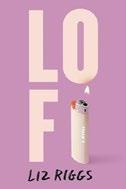
An unmoored 23-year-old navigates the dazzling, grungy Nashville music scene. Alison Hunter has just arrived in Nashville after graduating from the University of Michigan; her parents are missionaries in Korea, so her only familial tether to Tennessee is her bohemian aunt Izzy. Al lives with her bold best friend, Sloane, and stamps wrists at the door of a historic club called The Venue, where artists like Leonard Cohen and The Shins have performed. Al is still reeling from a recent embarrassment: a failed open mic performance, sung totally out of tune. She wants to be a musician, but she’s encountering persistent writer’s block, unable to come up with her own melodies to fit the angsty lyrics she’s writing. She’s haunted by a former flame from Michigan, an up-and-coming artist named Nick in a band called Flirtation Device; he won’t give her the time of day, except when it’s convenient for him, and he comes floating in and out of Nashville
A brilliant, of-the-moment, almost perfect book.
without any warning. As Al works alongside the brooding, mysterious Julien at the door and The Venue’s sexy bartender, Colt, she must navigate her complicated relationship to all three men. Lonely and hurting, Al spirals in a series of self-destructive behaviors. Set in what seems like the visual and musical aesthetic of the early 2010s—Hot Topic, beanies, Warped Tour, physical CDs, Vampire Weekend, Facebook—Riggs’ novel is vital, electric. Al is magnetic, and readers will root for her, eagerly following her triumphs and her heartaches. The story works best as an examination of young adulthood: of the forces that ground or unsettle people, and the climactic moments that demand introspection. Less successful is Riggs’ commitment to voicing a version of musicality through her prose; the story is peppered with clunky, contrived metaphors—a paper cut “as thin as the high E string on the guitar” and a box sticking out of a bag “like an extra syllable that doesn’t fit the rhythm of a song.”
A dynamic rock song of a novel from an exciting debut author.
Kirkus Star
Savaş, Ayşegül | Bloomsbury (192 pp.)
$24.99 | July 9, 2024 | 9781639733064

A young documentary filmmaker considers the ways she could live in the future.
Savaş’ unnamed narrator relates the quotidian circumstances of life with her husband, Manu, a nonprofit worker. Both are émigrés from different unnamed
countries who met at an unnamed college in an unnamed country and moved to an unnamed city to begin their adult lives. Far from being remote and soulless, Savaş’ compact novel conveys warmth and human detail in exploring the universal question confronting all (named and unnamed) people: how to live or “be” in the world. Relating the details of the couple’s inside jokes and rituals—which bond them together in a country where they are not among the “natives”— Savaş sympathetically illustrates the power of the everyday moments of joy and comfort found in a cup of coffee, a snack, or jokes with a friend. Once the couple begins searching for an apartment to purchase in an effort to create a more “sturdy” life for themselves, they are treated to the interior workings of the households they visit on their hunt. The narrator’s work in progress, a documentary about a city park and its denizens, provides more opportunities to glimpse other ways to live and behave. The lives of the narrator’s and Manu’s families continue to evolve as well, with all of the attendant heartaches of illness, aging, and misfortune communicated, however awkwardly, from afar. Friends and neighbors experience their life crises during the brief interval illuminated beautifully by Savaş, creating further scenarios for her questioning narrator to investigate, as if documenting the social practices of an unfamiliar civilization. There are no explosions or battle scenes in this subtle novel, just an appreciation of the value and marvels of living a life that is your own. Perfectly perceptive.

Kirkus Star
Senna, Danzy | Riverhead (288 pp.)
$29.00 | July 30, 2024 | 9780593544372

When her second novel hits a wall, a biracial California writer makes a desperate attempt to start a TV career.
One of the funniest scenes in this brilliant, of-the-moment, just really almost perfect book happens early on, in a flashback to the party in Brooklyn where Jane met Lenny, her husband and the father of their two kids. Feeling that she’s aging out of the dating game, Jane has recently consulted an “intuitive psychodynamic counselor with a specialty in racial alchemy,” aka a psychic, who told her she’s about to meet her future husband, a funny, tall, handsome Black man who would be wearing “West Coast shoes.” But when she meets Lenny, who seems to perfectly fit this description, he’s with a very possessive White girlfriend. “Ebony and ivory, together in disharmony...perhaps because it was her origin story, she could not bear the sight of interracial love.”
For more by Danzy Senna, visit Kirkus online.
She calls the psychic from the party to confirm. The psychic says it’s definitely him, and then goes into a rant against intermarriage. “Listen, our ancestors didn’t survive the horrors of the Middle Passage so some Caucasoid poet could miscegenate us out of existence.” He also says that if she doesn’t get this guy, she’ll be alone for 24 years. That gets her moving. And since Senna is married to the writer Percival Everett, it’s kind of fun to imagine that this intellectual, anti-capitalist, abstract visual artist husband is sort of...yeah. But that’s just one of the great things. The rant about teaching Gen Z versus Millennial college students is sure to kill any college professor (“She had in recent years begun to assign only minimalist autofiction by queer POC authors to her undergraduates, and she had to admit it was a better classroom experience for
all”), and the story of Jane’s doomed second novel, an opus on biracial characters in history that she’s spent 10 years writing, is literary satire par excellence, like R.F. Kuang’s Yellowface or Everett’s Erasure. Anyone who’s ever been obsessed with a Hanna Andersson catalog: You are also the target market. The only reason we said “almost perfect” earlier is that there’s a big plot twist that doesn’t quite compute, but if you care, that makes one of us. That’s entertainment.
Kirkus Star
Shattuck, Ben | Viking (320 pp.)
$30.00 | July 9, 2024 | 9780593490389

A dozen paired stories, thematically unified across decades and centuries. Echoing a song form popular in 18th-century New England, the second story in each pair deepens and clarifies the first. A painting of a bird left as a parting gift in 1796 (“Edwin Chase of Nantucket”) turns up in a widow’s attic more than 200 years later (“The Silver Clip”), yet in both it is a token of regret and loss. The Massachusetts apple orchard where Hope abandoned her baby in 1881 (“Graft”) has been reduced by the 21st century to “a few grizzly old apple trees” on a property owned by a couple desperate to help their son, lost to drug addiction (“Tundra Swan”). A mysterious 1991 photo of a bird presumed to be extinct prompts a podcast episode 30 years later in “Radiolab: ‘Singularities,’” but in “The Auk” we learn that it is a husband’s poignant tribute to his dying wife. This particular pair is the only one that presents an explicit explanation of a mystery posed by the first tale; the unsettling duos of “August in the Forest”/“The Journal of Thomas Thurber” and “The Children of the New Eden”/“Introduction to The Dietzens…” are more typical in evoking a sense of
connection without presuming entirely to explain the mysterious workings of destiny and the human heart. The paired stories that open and close the collection are perhaps the saddest: Wax cylinders used to make field recordings of traditional folk songs in 1916 appear as symbols of cherished first love lost in “The History of Sound,” but in “Origin Stories” they prompt a painful acknowledgment that first love sometimes would be better left behind. Shattuck writes with delicacy and restraint of the uncertainties, missed signals, and mixed feelings that trouble personal relationships across the centuries even as we yearn for love and meaning.
Intricately structured, powerfully emotional, beautifully written: This is as good as short fiction gets.
Thompson, August | Penguin Press (320 pp.) | $28.00 | July 9, 2024 | 9780593656563
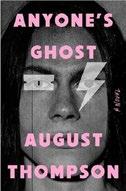
A young man has an emotional and sexual awakening through a fellow troubled teen.
Thompson’s debut is narrated by Theron, who at 15 is forced to shuttle between the East and West coasts after his parents’ divorce. Spending a summer with his tough-as-nails dad in New Hampshire, he brings along a bag of pot brownies to cope; when dad finds it, Theron is made to work at a hardware store. But his ostensible boss is 17-yearold Jake, a fellow stoner and aspiring musician who recognizes that the store is a tax write-off and runs things lazily when he’s not robbing the till. So ensues “a kind of permanent hang,” with the two bonding over heavy metal, weed, and hard-to-articulate sexual feelings. Thompson writes beautifully and with a sense of tension about having nothing to do—no simple trick. And he’s graceful when considering young male insecurity and self-loathing. (“He was beautiful. I was a brace-faced gremlin with boy tits and stalagmites of cystic acne ridging
my cheeks.”) Over time, this dirtbag Call Me by Your Name turns more perilous and gloomy. Jake is prone to vehicular calamities, and though Theron gets older, attending college and pursuing a relationship with a woman, he’s not much wiser. A reconnection with Jake becomes a boozy, druggy push-and-pull as he sorts out his feelings, and poor choices and insecure selfishness abound. (“I wanted to control both of them. I wanted them both to give me their focus.”) Yet Theron remains a sympathetic character, and Thompson recognizes that though sexual identity doesn’t always arrive like a thunderbolt, or settle into simple definitions, the process can be all-consuming. The arc of the story’s plot is largely tragic, but the mood is bighearted, revealing the power of the first flush of romantic and erotic connection. A brash and well-turned coming-ofage tale.
Thuân | Trans. by Nguyên An Lý New Directions (192 pp.) | $16.95 paper July 9, 2024 | 9780811238540
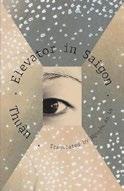
A chance discovery after a mother’s tragic death propels a daughter on a search from Saigon to Paris in this novel, banned in her native Vietnam, by award-winning author Thu . â n. Our narrator lives an expatriate’s life in Paris with her young son, giving Vietnamese language lessons to get by. Meanwhile, in Saigon, her older brother makes a fortune building luxury apartments; it’s been 15 years since she last saw him. When their mother dies in a freak accident connected to the unveiling of a new attraction, she’s forced to return to Saigon. There she finds an old photograph of a young white man carefully stitched inside her mother’s pillow. All her life, her mother seemed a model Communist Party member.
“Mrs. Socialist New Wife, performed for twenty years opposite my father, was perhaps my mother’s most iconic role.” Who was she, really, our narrator wants to know. What happened in her youth? What follows is a sometimes hapless wild-goose chase imbued with a poetic imagination, a critique of Communist rule, and more questions than can be answered. Why was her mother locked in an infamous prison at age 19? What was the relationship between her and the white man in the photograph? What lay behind the facade of “Mrs. Deputy Secretary of the Party Committee” and “Mrs. Vice Head of the Local Civil Unit”? Thu . â n writes at times with sly humor: “It is a truth universally acknowledged, that in Vietnam your local police have better and more detailed knowledge about your life than you do yourself.” She has a sharp eye for detail, describing “a Hanoian voice of the kind that could now rarely be heard, and only in Sài Gòn or in Paris, a Hanoian voice that belongs to a Hanoian who has been away from Hà NÔ . i for at least half a century.” Her themes of identity and estrangement unfold within a series of mysteries, like a set of Matryoshka dolls.
At its heart, a book about the weight of the past and the unknowability of others, even the ones we love.
Vercher, John | Celadon Books (272 pp.) $28.99 | June 18, 2024 | 9781250894489
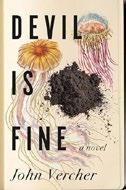
A biracial man deals with the death of his son and the inheritance of a plantation. The first thing the narrator of Vercher’s new novel says is, “The morning we buried you, a road flagger danced in the street.” He’s addressing Malcolm, his 17-year-old son, who recently died; on the way to the cemetery where the boy is to be buried, he experiences a panic attack and is
comforted—as much as he can be—by the flagger, who recognizes his symptoms. The narrator’s life is already challenging: He’s estranged from Malcolm’s mother, and his job as a professor might be in peril because he can’t sell his new book. (A colleague urges the narrator to return to his literary roots: “The mixed-race angle on your first one was brilliant. People love that stuff. You know, socially relevant but not threatening. Something for everyone.”) Things get worse when the narrator learns he’s inheriting a few hundred acres of land from his loathed white grandfather—and it turns out to be a former plantation that still has the corpses of enslaved people on its grounds. The narrator, a recovering alcoholic, starts drinking again and makes a series of poor decisions while trying to manage his grief: “Who decides the appropriate amount of time you need to cope? This person or persons have to exist, right? Do they have an actuarial table calibrated for sorrow?” Vercher’s novel is gut-wrenching, but he leavens it with some humor; one of the narrator’s fellow bar patrons calls him names like “Colson Half-Whitehead” and “Phony Morrison.” His prose is self-assured, and while some of the dialogue comes across as a bit too movie-ready, most of it sparkles. It’s an intelligent book that never loses its heart.
A solid novel that’s both funny and heartbreaking.
Kirkus StarWatson, Brad | Norton (288 pp.)
$29.99 | July 16, 2024 | 9781324076421
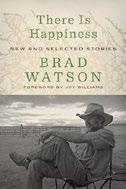
From an American original, a posthumous collection that includes short stories old and new.
Watson’s stories—those in the volumes
published in his lifetime and the new ones—are wry, tender, darkly funny, and deeply idiosyncratic. His first book, Last Days of the Dog-Men (1996), focused on dogs—always simply themselves, and therefore enviable and admirable—and often inhabited their bodies, channeled their voices. In one story here, “The Zookeeper and the Leopard,” Watson’s animism goes yet further; a zookeeper’s miscalculated revenge against a rival results in his being eaten by a big cat...and by story’s end his consciousness has been scattered among piles of scat that carry—poignantly, if you can believe it—what remains of his voice. In the terrific introduction here, Joy Williams speaks of the “strange, piteous, futile, and fickle” characters—often thwarted men self-exiled from their families—who people Watson’s world, and the kinships between his work and hers come clear. There’s the attentiveness to animals and the conviction—which never seems mean-spirited—that they’re superior to people; there’s the strong, often elegiac sense of the natural world. But perhaps the strongest link is an imaginative fearlessness that seems, finally, doglike: Both Watson and Williams exemplify Watson’s remark that a dog “is who he is and his only task is to assert this.” The stories in Watson’s two earlier collections were excellent, lyrical, moving (see the title pieces, “Last Days of the Dog-Men” and the doomed-young-love story “Aliens in the Prime of Their Lives,” both included here), but the new work seems even deeper, stranger, riskier. The title piece is surely the sweetest, gentlest story ever to center on the dialogue (yes, dialogue) between a serial killer and the wig stand that she’s covered with grim bodily trophies of her kills and named Elizabeth Bob. “Noon,” about the loneliness and emptiness that can enter a marriage post-stillbirth, ends with a dream in which the grieving woman, who is so delicately entwined with a catfish that her husband cannot, even with his best filleting knife, “detach the fish’s brain from
It’s a novel of flight or fight, of finding family and a reason to live.
THE ENTIRE SKY
her own,” dies. Her husband buries her in the yard, and over time, as she “drift[s] into the soil,” she keeps an eye on him. “The times between mowings were ages,” it concludes—a Watsonian happy ending. Strange, wondrous, luminous—a lovely coda to a career (and a life) cut sadly short.
Wilkins, Joe | Little, Brown (384 pp.)
$29.00 | July 2, 2024 | 9780316475389
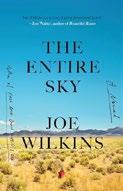
In desolate, scenic Montana, this novel of lost souls shows them finding themselves in each other.
The ghost of Kurt Cobain pervades Wilkins’ story. A broken Seattle family and a brutal uncle have sent 16-year-old Justin on the road to nowhere, looking to get away. A sensitive soul, he idolizes Cobain, looks a lot like him, even sounds like him when he plays his guitar. He feels like a misfit, and when he learns of the Nirvana frontman’s suicide, he’s devastated. The narrative alternates between Justin’s vagabond adventures and the lonely depression of Rene, a rural Montana rancher with strong principles and a body that’s breaking down. He’s recently lost his wife to cancer after losing a son to suicide. Daughter Lianne, who’d taken time off from teaching at a community college to nurse her mother, feels compelled to stay and look after her dad. She faces her own existential crisis after her husband and sons return home to Spokane. As the novel
switches between sections of present (“April, 1994”) and past (“Before”), it seems that the stories of all three include secrets they would rather not share. It also seems structurally inevitable that Justin’s wanderings will lead him to Rene’s ranch. Though some of the thematic parallels seem belabored and peripheral characters veer toward caricature, the novel is emotionally powerful and richly descriptive, rapturous in its evocation of the big skies and vast expanse and the lives that have come to seem so small and empty. As Justin becomes Rene’s helper, the boy he’s found reminds the rancher of the son he lost. “These past days on the old man’s ranch had been enormous as the every-which-way blue of these prairie skies, almost blue and big enough for Justin to forget what he had been running from. Almost.” The tale builds with inexorable tension, revealing what has happened, and what could. This is no country for sensitive boys. It’s a novel of flight or fight, of finding family and a home and a reason to live.
Zaher, Yasmin | Catapult (240 pp.)
$27.00 | July 9, 2024 | 9781646222100

A woman in search of herself. Palestinian journalist Zaher makes an absorbing fiction debut with a disquieting tale about race, class, morality, and artifice. Her narrator is a young Palestinian woman who finds herself in New York, teaching Black and
immigrant middle school students. Hugely wealthy, although without access to an inheritance of more than $28 million because of the terms of her father’s will, she lives on a monthly allowance doled out by her brother. As a friend remarks, she is “simultaneously rich and poor.” Intent on looking “consistently chic and expensive,” she wears designer clothing: Dior, Dolce & Gabbana, Miu Miu, Chloé, Fendi, and so much more. She is also simultaneously Black and white, a light-skinned Arab with a “deceiving complexion” that masks her true identity: an émigré with a troubled connection to her “biblical homeland” and to a current home she finds alienating. “I was scared of American culture,” she admits. “When I say that, I don’t mean the right to bear arms, I mean wedding dresses and obesity.” Emotionally isolated and culturally estranged, she becomes obsessed with dirt. “I’m a moral woman,” she says, “…all I want is to be clean.” Zaher lavishes much attention on the narrator’s constant scrubbing, bleaching, and abrading; she rubs herself raw. Her compulsion for cleanliness, she realizes, was instilled by the women she recalls growing up, who “placed a lot of importance on being clean, perhaps because there was little else they could control in their lives.” Her own sense of control erodes after she becomes caught up in a pyramid scheme involving the resale of Birkin bags. “Fashion is pretense,” she comes to realize, “education is pretense, personality, too, is a form of internalized pretense.” In search of her “true essence,” she withdraws into self-flagellating solitude that leads to the novel’s shattering conclusion. A perilous journey, rendered in sensuous prose.

For more fiction reviews, visit Kirkus online.
This review originally ran online June 23, 2022.
A woman and her therapist try to decode her strange visions of interstellar captivity in Frelick’s romantic SF thriller.
After waking from a mysterious, hourslong blackout in her car at the side of the road in small-town Tennessee, Asia Burdette returns home to find that her children have been killed in a house fire. Guilt-stricken, the young mother suddenly finds herself plagued by dreams of enslavement on another world. Confounding in their realism, the dreams depict an alien civilization in which human adults and children are forced to work as miners, extracting
precious crystals amid brutal conditions. Asia remains tormented by restless nights and preoccupied with the circumstances of her blackout; it’s only when her case is assigned to Ethan Roberts, a handsome psychiatrist specializing in people dealing with lost time, that her luck begins to change. The vividness of her experience eventually reveals her to be an alien-abduction survivor, even turning Ethan into a believer. He jeopardizes his career to help unravel the mystery of Asia’s dreams, accompanying her on an increasingly dangerous journey of discovery that reveals that she’s not alone in her experience. Before long,
This review originally ran online Jan. 4, 2024.
An unlikely duo faces off against a sinister cult and tyrannical rulers in Gilchrist’s dark-fantasy debut and series launch.
In a distant-future dystopian world, fate pushes together black-market recycler Mica Stone and cyborg “mod” Animkii. Mica has somehow escaped captivity from the After Cult, a group convinced that her dreams harbor the portal to another world. Animkii has inexplicably lost her link to the vicious ruling Technocrats who modified her, freeing her of their mind-control and flooding her with premod memories. She becomes infected by “pseudo-metal”

the pair discover that there are some people who will do almost anything to keep Asia’s story a secret. Frelick offers imaginative descriptions and pulse-pounding action (“Dust billowed and choked the life from lungs and air filters. Supports collapsed and tons of mountain crushed screaming workers in pockets of tens or hundreds”). Although it does offer some upsetting
Memory: Interstellar Rescue Series: Book One
Frelick, Donna
Self-published | 411 pp. | $15.99 May 17, 2019 | 9781732019041
content at times, its scenes of violence aren’t graphic. Throughout, the plot keeps readers guessing with a thoroughly well-crafted mystery, but those looking for passionate romance will not be disappointed; there are several love scenes. It all concludes with a hint of more adventures to come that will leave readers wanting more. A suspenseful and steamy otherworldly tale.
biosteel, which consumes her body like a parasite, including, most alarmingly, her remaining flesh. Mica happens to be searching for an old friend, Samiel, who may be able to help reverse Animkii’s infection. Teaming up, the two fend off Technocrats and the After Cult while keeping their heads down in this world’s lowly undercities. Animkii and Mica ultimately run into even more dangerous enemies who threaten the entire world. Gilchrist drops readers into a dense plot already underway, with Mica imprisoned and Animkii and other mods leveling a city. But the author’s razor-sharp descriptions quickly
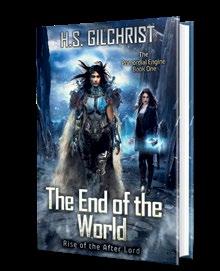
Gilchrist, H.S.
Dystopian Sunrise Press | 357 pp. $21.99 | Feb. 5, 2024 | 9781738061112
make the bizarre world familiar—nightmares still torment Mica after losing most of her family to a plague years earlier, and Animkii fondly recalls her serene home village. A vibrant cast populates the story: Reptilian hybrids, Dreamers (with their “awful necrotic power”), and beings from the “Other World” emerge as potential allies and menaces. All the while, Gilchrist’s prose limns
indelible passages: “Her skin still bore wounds resembling cracks in ice, though the deeper fissures on her arms had already begun to mend themselves, healing at an unnatural pace and leaving behind thin, black scars.”
The story ends on a superlative cliffhanger.
A masterful kickoff to a series depicting a fascinating world and the spellbinding characters who inhabit it.


EDITORS’ PICKS:
Made in Asian America: A History for Young People by Erika Lee & Christina Soontornvat (Quill Tree Books/HarperCollins)
Muse of Fire: World War I as Seen Through the Lives of the Soldier Poets by Michael Korda (Liveright/Norton)
Clear by Carys Davies (Scribner)
ALSO MENTIONED ON THIS EPISODE:
One Mighty and Irresistible Tide: The Epic Struggle Over American Immigration, 1924-1965 by Jia Lynn Yang
THANKS TO OUR SPONSORS:
Hollis and Gray by J.P. Zeigler
The Sands Shall Witness by Walter Hurst Williamson
Soul Flowers by Cynthia Schumacher
EPISODE
On this episode of the Fully Booked podcast, Alexandra Tanner discusses Worry (Scribner, March 26), a stunning novel starring two sisters who spend an unhinged year (2019) living together in a tiny Brooklyn apartment. In a starred review, Kirkus calls it a “dark millennial comedy starring testy, needy Floridian Jewish sisters who move in together in New York City and drive each other nuts.”
Tanner is a Brooklyn-based writer and editor who earned an MFA at the New School. Worry is her first novel.
Here’s a bit more from our starred review: “This is the kind of book you will constantly be reading out loud to others, so forgive the abundance of quotes in the following. ‘My sister Poppy arrives on a wet Thursday, dressed ugly and covered in hives.’ Announcing itself with this sardonic opening line, Tanner’s debut is narrated by older sister Jules Gold, 28, who will have you laughing/horrified by page 2, where she explains that ‘to save fifty bucks on airfare, Poppy flew from the Palm Beach airport not to JFK or LaGuardia or even Newark but to MacArthur, on Frontier, then rode a shuttle from the airport to Ronkonkoma to catch the LIRR, then took a two-hour train that ended up taking three hours because someone jumped onto the tracks and died as it was pulling into Jamaica.’



Fully Booked is produced by Cabel Adkins Audio and Megan Labrise. Worry Tanner, Alexandra Scribner | 304 pp. | $27.00 March 26, 2024 | 9781668018613

On the edge of a breakup with a new boyfriend, Jules passive-aggressively both invites and discourages her sister, who not long ago attempted suicide, from staying on. Continually. For months.…Poor, miserable, hive-covered shoplifter Poppy expands their codependent household by adopting a three-legged rescue dog named Amy Klobuchar.…This hilarious, unremittingly jaundiced depiction of modern young adulthood hits rare extremes of both funny and sad.”
Tanner and I talk about the pre-publication jitters. She describes the painting
that adorns the cover (“Sumertime” by Shannon Cartier Lucy) and calls the story within “a 300-page anxiety spiral [that] I hope people are going to find cathartic— at least a little bit.” We consider what it means to be a sister and to have a sibling; how different versions of our selves might exist in parallel universes; how to depict feeling overwhelmed in fiction; whether Worry might be the great American novel; and dark humor. We have a little fun discussing what reviewers talk about when they talk about books, including the phrase “four generations of women.” We consider whether we made too much fun of book designers circa 2021/2022, when they were hot and heavy with those “color blob” covers, and wonder if that’s why everyone has fine art covers now. Finally, we consider Tanner’s characters’ many forms of emotional expression and explore an archaic definition of the word worry. Then editors Mahnaz Dar, Eric Liebetrau, and Laurie Muchnick share their top picks in books for the week.
Editor at large Megan Labrise hosts the Fully Booked podcast.
So propulsive you’ll hardly care about the detective’s final quarry.THE WRONG HANDS
Berenson, Laurien | Kensington (304 pp.) $27.00 | June 25, 2024 | 9781496746689
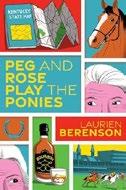
Dog breeder Peg Turnbull ups her game as she plunges headfirst into the world of thoroughbred horse racing. Peg has always let the staff at Six Oaks Farm handle the sales of brood mare Lucky Luna’s offspring. This year, though, the Keeneland September Yearling Sale overlaps so nicely with the Bluegrass Cluster dog show in Lexington that she decides to drive down to Kentucky over Labor Day weekend to witness the sale of Luna’s latest colt in person. Asking her late husband’s sister, Rose Donovan, to come with her may feel like a stretch, since the sisters-in-law have just recently patched up their rocky relationship in an uneasy truce. But Peg seems eager to prove to Rose that the principles that lead someone to become one of the country’s top breeders of standard poodles apply equally well to thoroughbreds. Having spent most of her adult life living among the Sisters of Divine Mercy, Rose is hardly equipped to deal with the rough and tumble world of horse racing, but she provides an important counterweight to Peg’s unbridled exuberance. Rose’s knack for moderation becomes especially important when Jim Grable, the yearling manager at Six Oaks, is brutally murdered. The senior sleuths discover that the higher the stakes, the higher the human capacity for evil. Taking the
sisters-in-law’s complicated relationship to a new level, Berenson combines a thorough tutorial on the care of yearlings with a chilling account of the vice than can infect those who care for them. Berenson at her best.
Billingham, Mark | Atlantic Monthly $27.00 | July 23, 2024 | 9780802163097

A second oddball outing for DS Declan Miller, still literally haunted by the murder of his wife that hung over his debut in The Last Dance (2023). When you’ve hired a hit man to eliminate a troublesome target, it’s only natural that you’d want proof of death, right? So gang leader Wayne Cutler, who’s already battling former drag queen Ralph Massey for control of Blackpool’s underworld, has asked Dennis Draper (not his real name) to bring him a briefcase with the ringed, severed hands of the late George Panaides. These best-laid plans are torpedoed by Andy Bagnall, a thief-in-training who nicks the briefcase while Draper’s in a public washroom and then, horrified by his discovery of its contents, abjectly presents it to Miller. Miller, already suspecting Cutler of complicity in the death of his wife, Alex—who continues to pop up in disconcerting contexts and launch conversations with him—would love to use this unexpected gift to bring Cutler down, perhaps with the help of Finn,
Alex’s homeless daughter. While he’s trying to do that, though, Cutler, unaware that the evidence he wanted is already in the hands of Serious and Organised Crime, calls in Martin “Torchy” Molineux, an even more fearsome killer, to retrieve it by leaning hard on Draper, on Andy, and on Andy’s sister, Natalie, a nurse at Victoria Hospital. Although the tone of these nonstop shenanigans is never exactly lighthearted, their frantic pace, the ineptness of both cops and robbers, and the constant habit of many characters of sizing up their self-performative personas make it never less than madcap.
The whole shebang is so propulsive you’ll hardly care about the identity of the detective’s final, and forgettable, quarry.
Cartmel, Andrew | Titan Books (320 pp.) | $17.99 paper June 25, 2024 | 9781803367927
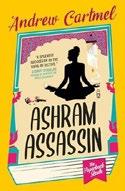
A zealous bibliophile stumbles into another comically complex murder mystery. Cordelia Stanmer, London’s Paperback Sleuth, has swapped her drug addiction for an obsession with noir fiction in softcover. Edwin, her laidback landlord, arranges a potentially fun freelance gig for her at the Silverlight Yoga Centre, the ashram of the title. Knowing of Cordelia’s success in recovering some missing books and incidentally solving a murder, Edwin has engaged her to recover some valuable books stolen from the center, the haunt of his new girlfriend, Lorna. She begins on a Wednesday; Saturday finds Cordelia standing once more over a dead body in a delightful echo of her detecting debut, Death in Fine Condition (2023). The discovery of a corpse makes Cordelia’s mission more exciting, if also more perilous. A
second death, that of bookstore owner Duncan Fairwell, doubles the mystery. Cartmel’s romp is equally discursive and playful. The rambling road to solving the murders and recovering the books is long and tangled; to call it tightly plotted would be not so much inaccurate as beside the point. The author of the long-running Vinyl Detective series delights in quirky characters with equally quirky names who offer entertaining detours into offbeat lifestyles, all related with Cordelia’s sassy attitude. Refusing to suffer fools gladly, she quickly determines that the ashram is shady and tags its two directors Silver Shrew and Howdy Doody. Others will be dubbed Rainbottle and Lipstick Teeth. A savvy sleuth whose adventures are sublimely pitched for book-loving readers.
Day, Maddie | Kensington (336 pp.)
$8.99 paper | June 25, 2024 | 9781496740571
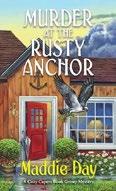
A bike shop owner kicks into high gear when an unpopular high school teacher is found dead in a local pub.
Even before the murder, Mackenzie Almeida has her hands full. It’s the middle of tourist season on Cape Cod, and cyclists are flocking to rent bikes and gear at her shop. Her parents are throwing an impromptu anniversary bash, giving her less than a week to help coordinate food and spread the word to their guests. And she and her husband, Tim Brunelle, are working hard to present them with a second grandchild to accompany Mac’s niece, Cokey. When Yvonne Flora, the cook at the Rusty Anchor, discovers Bruce Byrne dead behind the bar, no one mourns his loss. “Bruce was a jerk, a bully, and a tyrant,” local librarian Florence Wolanski reflects in valediction. As the investigation heats up, Mac enlists her
buddies at the Cozy Capers book group to help the police. Adopting modern business practices, the sleuths divvy up their efforts into “action items,” with each member responsible for vetting one suspect. Still, the lion’s share of the quest falls on Mac, and she doesn’t disappoint. Her pointed queries have exactly the result you’d expect: She rattles enough cages to get herself into personal peril before unmasking the culprit.
Day’s feisty heroine elevates an otherwise routine shopkeeper cozy.
Ellicott, Jessica | Kensington (288 pp.)
$27.00 | June 25, 2024 | 9781496740168

The medium is definitely not the message when private enquiry agents Edwina Davenport and Beryl Helliwell probe a murder at a séance in post–World War I England.
Looking back over the past year, Edwina can hardly believe all the changes to her life since she reluctantly invited American adventurer Beryl to share her home at The Beeches, a gracious but costly Victorian house in the small village of Walmsley Parva. Never would she have imagined that she’d learn to drive, write a book, open her home to her former gardener, or start a detective agency with her brave but impulsive housemate. Even police constable Doris Gibbs admits that the pair have a knack for resolving their fellow villagers’ dilemmas.
When Muriel Lowethorpe, the vicar’s wife, asks them to persuade organist Hazel Moffat to stop providing music at Maude Dinsdale’s séances, they agree that working with a medium is not an appropriate side hustle for a church musician. But when Hazel turns up dead in Maude’s spirit guide’s sarcophagus, it’s PC Gibbs who solicits the private investigators’ help. Gibbs knows that together, conventional Ed and unconventional Beryl have their fingers squarely on Walmsley Parva’s collective pulse. Not even Maude’s second sight can predict the ways their foray into the world beyond will rock their own world, leading to an even greater expansion of The Beeches’ bespoke extended family. Ellicott helps her characters grow as they become ever more their true and endearing selves.
Hilton, Matt | Severn House (240 pp.)
$29.99 | July 2, 2024 | 9781448310845
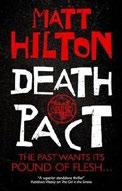
And now for something completely apocalyptic in this standalone from the creator of Tess Grey and Po Villere. Back in 1999, Nate Walker was one of the lucky few Children of Hamor to be rescued from Weyland Berith’s abusive cult by FBI agent Milo Turrell, who died in the process. When someone starts torturing and killing present-day Cumbrian locals in ways clearly reminiscent of
Ellicott helps her characters grow as they become ever more their true selves.
Berith’s cult, Nate, reborn in the U.K. as Nate Freeman, emerges from his secluded position as a woodland warden and reaches out to DCI Grant Openshaw, his old boss at London’s Metropolitan Police, to alert him of the deadly affinities. Despite his enduring trauma over the death of Jenny Onatade, whose abusive husband stabbed her moments before Nate could shoot him dead, Nate’s eager to sign on as a consultant to the National Crime Agency task force that includes Openshaw, DS Kylie McMahon of the Greater Manchester Police, and Dr. Emily Prince, an expert on cults at the University of Newcastle upon Tyne. He doesn’t anticipate that Openshaw’s number one suspect will be Will Walker, his own kid brother, whose rescue from the Children of Hamor kicked off a long string of activity that’s attracted police attention before. Hilton provides so much background information about Berith’s nefarious doings that fans of cults will be in their element. The plot is more pared down: Berith’s people strike at innocents; Will Walker is arrested and escapes; Emily Prince is kidnapped; Nate goes after her, looking to exchange himself for her; members of the task force go after him; much blood is spilled.
Want to spend a few hours with characters who are truly mad, bad, and dangerous to know? Here’s your chance.
Lasky, Kathryn | Severn House (192 pp.)
$29.99 | July 2, 2024 | 9781448313846

The peace and inspiration sought by Georgia O’Keefe when she traveled to New Mexico in the 1930s is disturbed by a brutal murder.
Georgia has come to stay in Taos with wealthy heiress Mabel Dodge Luhan after
having designed the stained-glass panels for the D.H. Lawrence Chapel in San Cristobal. Her design was executed by talented Navajo artist Mateo Chee, whose fiancee, Flora Namingha, made the urn for Lawrence’s ashes, which sadly ended up mixed with cement. Mabel’s Taos home has long been a haven for an ill-assorted group of people, currently including the infamous narcissist Wallis Simpson, soon to be the Duchess of Windsor. After her husband, Alfred Stieglitz, cheated on her, Georgia was drawn to New Mexico lawman Ryan McCaffrey, with whom she finds balance and repose. When Flora is discovered murdered in the chapel, Mateo is arrested by two dimwitted and often drunk police officers. Since Ryan’s away at a conference, the only one who can help clear Mateo is Flora’s cousin Jessie Yazzie, a clever 15-yearold forensics expert. Coyote teeth found on the scene point to the Navajo witches called the Skinwalkers, but Georgia is sure that neither Skinwalkers nor Mateo killed Flora. Determined to find the truth, she begins an investigation that leads to a very mixed bag of motives and a Nazi spy ring.
The Land of Enchantment is the perfect backdrop for a murder investigation among historic characters both artistic and evil.

For more by Kathryn Lasky, visit Kirkus online.
Leon, Donna | Atlantic Monthly
$26.00 | July 9, 2024 | 9780802162540

A tussle between two of Venice’s “baby gangs” leads Commissario Guido Brunetti into a tangled mystery whose extended reach would be remarkable for anyone but him. After all but one of the teenage boys who’ve been arrested are released to their parents’ custody, Commissario Claudia Griffoni offers to walk home the last of them, Orlando Monforte, who’s afraid to call his father. The reasons why, Griffoni learns as the two of them stop for a pre-dawn cup of coffee, are obvious. As the Hero of Nasiriyah, whose actions saved two comrades from being killed by a bomb during their service in Iraq, Dario Monforte has high expectations for his son’s probity (don’t engage in gang fighting) and masculinity (don’t get caught). Although Orlando warns Griffoni he’s heard whispers from his schoolmate Gianpaolo Porpora that something big is in the offing, trouble next strikes elsewhere, in a murderous attack on Enzo Bocchese, the Questura’s chief lab technician, whose plans to sell most of his valuable collection of sculptures are upended by whoever breaks in and destroys them. In the meantime, there’s more whispering—but this time, it’s about Griffoni, who was photographed and identified at that coffee shop by someone who tipped off peerlessly shady avvocato
Beniamino Cresti. Cresti, apparently acting on behalf of the elder Monforte, threatens to end Griffoni’s career if she doesn’t accept a restraining order that prohibits her from any contact with Orlando. As usual in Leon’s books, the mystery plays second fiddle to the characters and relationships from whom hints of secret misbehavior gradually coalesce into revelations as sordid and violent as you could wish. Is all this really “the stuff of television drama,” as Brunetti fears? Only of a very high order indeed.
Levine, Laura | Kensington (240 pp.)
$27.00 | June 25, 2024 | 9781496728197

Ghostwriting a fitness book proves a mixed bag for copywriter Jaine Austen. Although Jaine’s piqued that Chip Miller, owner of The Muscle Factory, sees her muscle-free body as a plus in choosing her to ghostwrite his guide to becoming fit, she reluctantly admits that she might have an advantage in reaching out to the pre-ripped public. That recognition—and the promise of a $20,000 fee—helps her overcome her reluctance to deal with the self-centered fitness guru. She even agrees to take an overnight train trip to Santa Barbara with the Miller entourage. She revels in the cuisine provided by chef Mario and basks in the attention of Sean, the train’s steward. But Chip’s spoiled adult children and ice queen girlfriend are more of a challenge. The greatest challenge, however, is Iron Man himself. His relentless ego and cruelty to his staff set everyone on edge. So it’s no surprise when he’s found dead in his stateroom. Encouraged by
Chip’s down-to-earth sister, Versel, Jaine tries to unmask his killer, but at every turn she discovers deeper and more compelling reasons that almost everyone wanted him dead. Though it will take all her grit and determination to find the murderer, the answer to the riddle of who killed Chip isn’t the only, or even the greatest, surprise. The tried and true meet the unexpected in Levine’s latest romp.
Mark, David | Severn House (240 pp.)
$29.99 | June 4, 2024 | 9781448311996

Is an ex-con ex-cop being framed for murder a second time?
Mark’s gritty crime yarn unfolds at first in splintered pieces, lurching slowly forward in time, beginning with the morning in 1995 when Cumbrian Police Constable Wulfric Hagman wakes up in a drunken stupor, calling for his wife, Trina. His subsequent discovery of Trina’s savaged corpse is followed in short order by his arrest for her murder. The transcript of a juicy radio broadcast from the following year fills in the details of the case and describes Wulf’s conviction and lengthy prison sentence. A rambling 2001 letter from Trina’s eldest daughter, young adult Salome Delaney, presents a more sympathetic view of Wulf, who strove to block Trina’s abusiveness
and act as a responsible stepfather to Sal and her several siblings. Praise is also showered on Wulf’s solicitor, Dagmara Scrowther, who fought for him and became a surrogate mother to the abandoned Delaney brood. Much more recently, an unidentified man is tortured and killed, and the killer’s final words implicate Wulf, who’s now out of prison. Unfortunately for Wulf, this victim turns out to be Barry Ford, the man Trina left him for decades ago. The story ultimately settles on Sal, now a police officer, her equally scarred brother Jarod, and their efforts to exonerate their stepfather. The first installment in a new series from the prolific author of the DS Aector McAvoy novels is masterfully plotted, teasing armchair detectives with pieces of the full murder puzzle.
A welcome series kickoff from a seasoned veteran.
Masters, Priscilla | Severn House (224 pp.) $29.99 | July 2, 2024 | 9781448313099
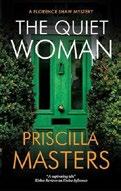
Two patients with very different problems give Staffordshire nurse Florence Shaw sleepless nights. No matter what tests the doctors Florence works with run on retired solicitor’s clerk Christine Clay, they always come back negative. If she’s feeling fit, though, why does she keep calling for more appointments? It might
Ghostwriting a fitness book proves a mixed bag for copywriter Jaine Austen.
Think British writers had a monopoly on the formal detective story between the wars? Penzler may change your mind.GOLDEN AGE WHODUNITS
be easier for Florence to ask her patient questions if Christine’s overbearing husband, Richard, didn’t accompany her on every visit, answering most of the questions Florence puts to her. The one time Christine shows up without Richard, she all but accuses Florence of hiding a dire diagnosis from her, and shortly afterward she’s found in her home with her husband, the apparent victim of a suicide pact Richard has conveniently survived. Florence’s suspicions of Richard, already percolating, reach a boiling point when he announces his intention of suing her practice for medical malpractice. Nor can the rest of her caseload offer much relief, because she’s worried about Ryan Wood, a charming petty thief who alternates between repeated visits for antismoking medication and darker doings outside that indicate he’s forging uncomfortably close ties with serious criminals. If only Christine’s daughter, investigative journalist Harriet Clay, and Florence’s new love interest, DC William Summers, would provide some of the information that might help her engage more actively with her patients. Sadly, they both seem intent on pursuing their own agendas, some of them quite antagonistic to her own. Rooting the story deeply in the daily rhythms of her heroine’s professional life, Masters spins out every thread till they all come together. As quiet, deft, and professional as an effective medical procedure.
Noonan, Roz | Kensington (304 pp.)
$27.00 | July 23, 2024 | 9781496746719

An Oregon librarian gets sucked into a murder case and discovers that her skills in researching give her quite a knack for it. If it’s not one thing, it’s another. In the run-up to her daughter Celeste’s wedding, Ruby Milliner comes home to discover her husband, West Hazel city comptroller George Byrd, in a compromising position with an unidentified woman and then, while she’s still venting her outrage to her old friend Alice Pepper, gets news that George has been bashed to death—maybe, the cops insinuate, by Ruby herself. Luckily, it doesn’t take long for Alice—who left her own husband after he ran the restaurant he started with the family savings into the ground—to establish that there are plenty of other candidates for the role of murderer. George’s quest to hunt down the low-stakes Cola Bandits, high school students Tony Preston and Jimmy Moynihan, through DNA evidence he collected through EYE-dentify, the high-tech security firm run by Jared Chase, turns out to be only the tip of a surprisingly unsavory iceberg. While Ruby was doing her best to make an honest living at Ruby’s House of Wigs, George was using trace evidence
EYE-dentify gathered for him at top prices billed to the city to blackmail everyone in West Hazel. Will more people get killed? Not a single one. Will the killer get off scot-free? No way. Will Celeste’s wedding to Jamal get postponed? Absolutely not; cozy fans can breathe easy.
Is a series likely to follow? Yes—under the branding of the Alice Pepper Lonely Hearts and Puzzle Club. Your move.
Penzler, Otto | American Mystery Classics (288 pp.) | $27.95 | July 2, 2024 | 9781613165416
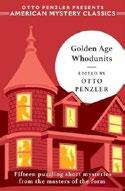
Think British writers had a monopoly on the formal detective story between the wars? Penzler presents evidence that may change your mind. The single most appealing feature of this collection of 15 stories first published by American writers between 1925 and 1949 is, in fact, their varied sources. Ellery Queen is here, of course, with “Man Bites Dog,” whose mystery and solution unfold in the stands during the 1939 World Series, and so are other genre stalwarts like Mary Roberts Rinehart, Melville Davisson Post, C. Daly King, Mignon G. Eberhart, Anthony Boucher, Helen Reilly (her only short story), and Vincent Starrett, whose novella Too Many Sleuths includes enough twists and detectives for a full-length novel. But it’s revelatory to see the material supplied by Stephen Vincent Benet, F. Scott Fitzgerald, and Ring Lardner—even if, as Penzler notes, “it takes a while before the reader recognizes that [Lardner’s often-anthologized “Haircut”] is a crime story,” and nobody would call it a whodunit. The best stories here are among the shortest—“Haircut,” along with Stuart Palmer’s “Fingerprints Don’t
Lie,” in which Hildegarde Withers stars in a tale that manages to be both lighthearted and ingenious, and Clayton Rawson’s “The Clue of the Tattooed Man,” in which the Great Merlini, basing his deductions entirely on Inspector Gavigan’s description of a murder, solves the mystery so quickly it’s over almost before it’s begun. The most original entry is Fredric Brown’s futuristic “Crisis, 1999,” even though its title date has passed and it’s not a whodunit either. And psychologist Henry Poggioli, who investigates the murder of a Trinidad servant’s bride in “A Passage to Benares,” provides the perfect punchline for the whole volume. Guaranteed to make Americans prouder of their country than any episode in its recent political history.
Pitts, Delia | Minotaur (320 pp.) | $28.00 July 16, 2024 | 9781250904218

Pitts launches a new series with an apparently routine case for a Black New Jersey private eye that morphs into another case, and then another and another, as she struggles to keep up with its twists and turns.
Leo Hannah, deputy head of research at ArcDev Pharmaceuticals and the unofficial prince of Queenstown, wants Evander Myrick to follow his wife because he’s convinced she’s in danger. Except she isn’t; he really wants Vandy to follow Ivy Mae Hannah because he thinks she’s cheating on him. His worries are soon ended by an episode at his home that leaves Ivy dead along with Hector Ramírez, the intruder who Leo says was beating her to death when Leo shot him. None of this smells right to Vandy, and the fact that Leo’s aunt, Josephine Hannah, has been the mayor of Queenstown forever just
A duo follows the methods of Sherlock Holmes with help from the man himself.
THE MUMMY
makes it smell worse. So she’s fine to take on a new client—Ivy’s father, Professor Samuel Decker— who hires her to prove that Leo killed his daughter, and still another client, Hector’s sister, 16-year-old Ingrid Ramírez, who hires her to clear her brother’s name. Unsurprisingly, there turns out to be trouble aplenty in Queenstown, and it reaches deep into the mayor’s office. The surprise is how closely it’s connected to Vandy’s own family, especially to her father and namesake, a former cop who’s now in a nursing home where you’d think he’d be entitled to a much quieter life than his author has planned for him.
A darkly atmospheric debut whose heroine just might want to reconsider her decision not to carry a gun next time.
Westerson, Jeri | Severn House (224 pp.)
$29.99 | July 2, 2024 | 9781448310760

A detective duo follows the methods of Sherlock Holmes with a little help from the man himself. Tim Badger was once a Baker Street Irregular, and his partner, Benjamin Watson, is a clever bloke with a scientific bent. Determined to have their own detective agency, they struggled until Sherlock recommended them for some jobs and gave them
MAYFAIR
financial assistance. Now they’ve been hired to provide security for a mummy reveal at the home of Dr. Enoch Sawyer. When their host is late arriving, his colleague Dr. Cornelius Archer opens the sarcophagus to reveal the body of Sawyer wrapped up like a mummy. Among the wealthy, well-connected crowd is Badger’s crush, journalist Ellsie Littleton, who’s helped them by reporting on their exploits for the Daily Chronicle . When the cause of Sawyer’s death is determined to be poison gas, Archer hires the partners to find the killer, setting them on a road that becomes much more complicated than they could have imagined. Learning that many valuable artifacts have gone missing from the homes of collectors, they suspect some sort of gang, especially since a number of those collectors have died under questionable circumstances. Jimmy Wiggins, another former Irregular and a friend of Badger’s, has worked for the doctors and seems to know a lot more than he’s willing to admit. Could he provide the clues that will solve the case? A highly enjoyable look at the Great Detective’s methods from the viewpoint of his less-accomplished peers.
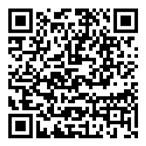
This review originally ran online March 15, 2024.
In the third entry in Hayman’s SF thriller series, after time-traveling psychologist Jackson Traine is captured by scheming psychiatrist Uwe Bent, Traine’s loved ones work to set him free.
The story picks up from where Scatter (2022), the previous installment in the series, left off. Brilliant villain Bent has released all his captives, save for Traine, who’s determined to do whatever he must to find his brother, Kenny, whose presumed death years ago has traumatized him. On the time-travel front, the narrative adds something new: Traine, who has the ability to go 10 minutes back in time,
finds that he’s now able to do so on command; before, he needed to be traumatized to access his power. While he and Bent are locked in an escalating battle of wills (“The road to your brother is long,” Bent tells him), Lena Cortland, Traine’s romantic interest, and his office administrator, Megan McKenna, plot to find out where he’s being held and free him. This story unfolds briskly from multiple perspectives; in addition to Traine’s first-person narrative, alternating chapters, written by Traine in the third person, effectively chronicle the stratagems and psyches of the supporting characters. They include physicist


Lena; Traine’s sister, National Security Agency operative Kansas; his “treacherous best friend,” Jude Spiegelman, who betrayed him to Bent; and Bent himself, who’s using them all as pawns in his grand schemes involving SCATTER, a former CIA operation to locate and capture time travelers. As this summary indicates, readers would do well to start with the first two installments of the series, which began with Jumpback (2021); it’s a complex tale already, and this entry’s
Fuse Hayman, Terry Fiero Publishing | $7.99 June 14, 2024 | 9781927920503
storytelling structure adds a new wrinkle. Hayman does helpfully provide a cursory summary of the story so far, however, and the characters are exceptionally well developed, whether they’re good, bad, or conflicted; as such, even newcomers to the saga will be inexorably drawn in. Also, Bent’s evil nature makes him, as Traine puts it, “a clear villain to fight”—and to root against. An increasingly exciting series proves itself to be well worth readers’ time.

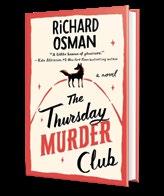
Helen Mirren, Ben Kingsley, and Pierce Brosnan will star in the adaptation of Richard Osman’s novel.
Steven Spielberg’s Amblin Entertainment is enlisting some serious star power for its film adaptation of Richard
Osman’s The Thursday Murder Club. Helen Mirren, Ben Kingsley, and Pierce Brosnan will star in the movie, Deadline reports. This is the first casting news for the film, which will be based on Osman’s bestselling cozy mystery.
Osman’s novel, published in 2020 by Pamela Dorman/ Viking, follows four retired people in Kent, England, who band together to solve the mystery of the murder of a real estate developer. In a starred review, a critic for Kirkus called


the book “a top-class cozy infused with dry wit and charming characters who draw you in and leave you wanting more, please.”
The novel became a huge bestseller for Osman, the British television host known for his work on series including Pointless, House of Games, and Two Tribes. It has spawned three sequels—The Man Who Died Twice, The Bullet That Missed, and The Last Devil
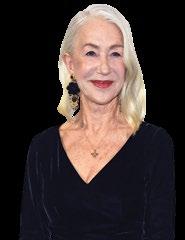
To Die—with another scheduled for next year. Mirren, Kingsley, and Brosnan will play three of the four pensioners in the film; the fourth character, Joyce, is yet to be cast. The film will be directed by Chris Columbus, known for helming Home Alone, Mrs. Doubtfire, and the first two Harry Potter films. Columbus replaces Ol Parker, who was originally announced as the director in 2020.—M.S.


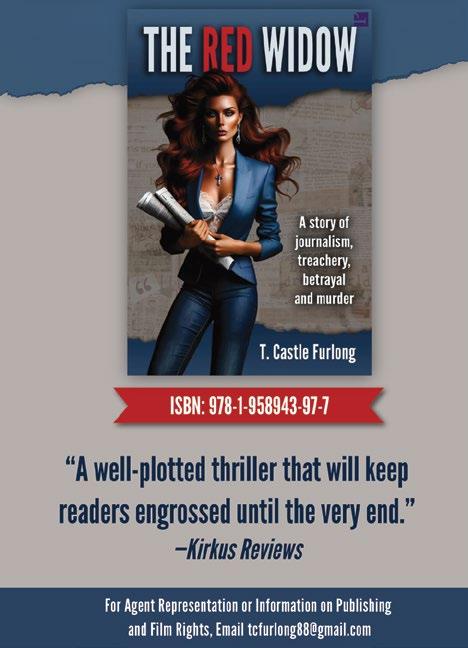
rollicking fantasy follows a squad of Marines trapped in a magical realm.
Buckell, Tobias S. & David Klecha Tachyon (288 pp.) | $17.95 paper June 18, 2024 | 9781616964160
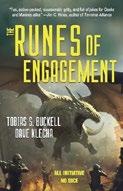
This rollicking military fantasy follows a squad of Marines trapped in a magical Tolkienesque realm and their quest to return home. After rifts open up all over the planet and Earth is invaded by armies of creatures straight out of The Lord of the Rings , humankind joins together to drive the orcs, trolls, and dragons back through the portals. Military forces assigned to secure the rifts are stationed on the other side and must defend the gateways from a never-ending barrage of “fairy tales coming to life to kill [them].” After embarking on a perilous mission to locate and transport Lady Wíela, an elven princess, through the portal in an attempt for humankind to join forces with the elves, staff sergeant Raymond Cale and his squad are cut off from Earth after a forward operating base is destroyed. Vowing to somehow get the princess to safety, Cale and company set out across a dangerous realm inhabited by a multitude of nightmarish fantasy creatures that is described as “something out of Peter Jackson’s wet dreams.” While the initial blending of fantasy and military fiction is appealing, the charm quickly wears off as the storyline
becomes predictable and none of the characters evolve into anything other than two-dimensional stereotypes. The nonstop action and battle sequences, however, do keep the momentum going and will have readers furiously turning pages. The saving grace is the humor throughout, which will have fantasy fans—particularly Tolkien nerds—laughing aloud. In one fight scene, for example, the elven princess is described as “twisting her body and running through the gauntlet like Legolas on speed.” In another scene, a line from Pulp Fiction is referenced brilliantly. The laughs, however, can’t compensate for cardboard characters and an unsurprising storyline.
A fun but forgettable fusion of adventure fantasy and military fiction.
Gordon, Marianne | Harper Voyager (384 pp.) | $18.99 paper July 2, 2024 | 9780063248779

A young woman is dragged from her quiet country life into the vicious, backstabbing world of politics and religion in this fantasy series opener. Hellevir has always been different. When she was 10, she discovered the ability to travel into Death, the strange, liminal world ruled by a
mysterious man in black. When she is 12, and her mother dies in childbirth, Hellevir travels to Death and offers the man in black a trade: If Hellevir gives up “something from life that is full of life” and a “blood gift” (in this case, one of her fingers), she will be able to return her mother to the world of the living. Milandre, an old healer and Hellevir’s mentor, warns Hellevir to keep her gifts a secret. But when the queen brings her poisoned granddaughter’s corpse to Milandre’s doorstep, Hellevir can’t stop herself from bringing the young woman, Sullivain, back to life. Soon afterward, Hellevir receives a royal summons to move to the city and be ready to bring Sullivain back from the dead at a moment’s notice. Only the man in black isn’t happy with Hellevir defying the laws of nature, and he requests a new kind of price if she wants to bring back any more lost souls without losing even more of herself. Gordon’s fantastic series opener paints the world of Rochidain with vivid detail, from its network of canals to the drunken parties of its nobles to the sinister state religion that has a strong hold on Hellevir’s mother. Hellevir’s complicated relationship with Sullivain, whose gratitude and attachment to Hellevir don’t stop her from threatening Hellevir’s family should she let Sullivain die, has more than enough substance to sustain the books to come.
A richly imagined beginning that shouldn’t be missed.
Ogundiran, Tobi | Tordotcom (160 pp.) $20.99 | July 23, 2024 | 9781250907967

In this fantasy novella, the first of a duology, an acolyte’s religious beliefs are shaken to their core—and also, the world is in danger.
Five seasons after each of her peers was chosen by a divine orisha and rose to the priesthood, Ashâke remains an acolyte, never having heard an orisha speak to her. Frustrated and resentful, Ashâke decides to force the issue by attempting to summon an orisha in a forbidden ritual that goes horribly wrong. In the aftermath, Ashâke resolves to depart from the temple and the only life she’s ever known and strike out into the world; but can she truly leave her past behind? (Answer: No.) Meanwhile, a creepy organization whose members prolong their existence by permanently taking over other people’s bodies seems close to finding something it’s long been seeking. Ashâke is a vividly drawn and sympathetic character, as is Ba Fatai, the former priest turned cranky witch doctor. Ogundiran offers some lovely worldbuilding inspired by Nigerian (specifically, Yoruban) myth and religion; one great example is the friendly traveling griots with the power to physically immerse you in their stories, leading to a unique use of magic in a pivotal scene. But he also leans on a trope familiar to readers of European-based epic fantasies: The protagonist’s obvious lack of a specific ability that their peers possess means that they are actually more special than everyone else. (Mentioning that last might seem like a spoiler, but it should be fairly obvious to the reader, even if it isn’t to Ashâke, which is also often part of the trope.) But in a typical fantasy of that type, the revelations that unfold near the end of this tightly
A
written novella would merely be Act 1 of a doorstopper-size work that would be the start of a trilogy, at minimum. Instead, the story stops just when things are getting really interesting, which is an excellent way of whetting the reader’s appetite for the second (and concluding) novella. If not entirely groundbreaking, an enjoyable and commendably bloat-free read.
Saintcrow, Lilith | Orbit (416 pp.)
$19.99 paper | June 11, 2024 | 9780316440530

In the second volume of what is now a blatant Tolkien pastiche—following A Flame in the North (2024)—a young wisewoman and her loyal shield-maiden grope for their roles in a looming conflict with Evil.
Solveig, a human magic-worker with exceptionally rare elemental powers, and her sworn protector, Arneior, are at first captives and then guests in the hidden Elder (read: elven) city of Laeliquaende, or Waterstone, finding refuge after many travails. Solveig believes that their Elder companion, Aeredh, intends to take the Jewel (read: Silmaril) that the king of Laeliquaende keeps in a locked tower so that Solveig can use it (somehow) against the Enemy, the evil eldest son of the Allmother. She does not wish to do that, but she’s also fairly angry
when Aeredh reveals that he doesn’t intend for her or the Jewel to be used against the Enemy: He simply wants to keep both of them in the city so the Enemy doesn’t get them for himself. Since the book is entitled The Fall of Waterstone , it’s not a spoiler to reveal that things don’t go as planned. Saintcrow does draw on the Norse sagas, the same source material that Tolkien did, but also freely helps herself to Tolkien’s original work, mainly the Silmarillion (specifically, the stories that would later be published separately as Beren and Lúthien , 2017, and The Fall of Gondolin , 2018) but also a fair bit of The Lord of the Rings (e.g., desperate chases through the wilderness and a relationship between a father and his sons that bears a strong resemblance to that of Denethor and his sons Boromir and Faramir). Solveig and Arneior— who are appealing characters—are seemingly unique to Saintcrow’s work, while other characters are considerably less so. And despite these significant borrowings, very little happens to drive the story along in any interesting way. At this point, the wider plot seems to be meeting new people, spending a little time with them, and then they and/or their homes are destroyed. Unlike in Tolkien, no real large-scale resistance seems to be going on. High fantasy involving a battle against an enemy who is evil just for the sake of embracing evil was terribly popular in the late 20th century; these days, most readers prefer something more nuanced. For nostalgic fantasy fans only.

Jayci | St. Martin’s Griffin
(400 pp.) | $18.00 paper
July 30, 2024 | 9781250907769
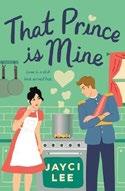
A Korean American cooking teacher in Los Angeles falls head over heels for a handsome professor who’s actually a European prince. Emma Yoon treats love like a recipe: Follow the rules and you can never go wrong. Her parents’ divorce proved love isn’t foolproof, teaching Emma at a young age that it’s always best to follow head over heart. She’s been in no rush to find a partner, though, as she’s been perfectly content running her Korean cooking classes and dreaming of opening a culinary school. But now that Emma is 28, her godmother— a renowned matchmaker— considers her practically a spinster. She reluctantly agrees to avail herself of Auntie Soo’s services, attending matseons (marriage interviews), in hopes of finding a suitable Korean husband. Match after match proves fruitless, though, until, following a particularly disastrous date, the handsome stranger at a nearby table sends Emma an extra plate of madeleines. Michel Chevalier—tall, blond, with a devastatingly romantic accent—is a visiting professor of international relations at USC with a royal secret: He’s the crown prince of Rouleme. Given three months to travel to the U.S. for one last taste of normalcy, Michel is set to assume the throne once his father, the king, abdicates. But that’s not all: Michel has three months to find a woman he truly loves or risk betrothal to a friend he likes but feels no attraction to. Emma and Michel take a chance on one another, immediately finding a passion and connection neither have previously felt. Can their love withstand family expectations, or is their whirlwind romance just a recipe for disaster? Lee’s latest novel is a
refreshingly modern take on an old story. Equally sweet and spicy, Emma and Michel’s relationship constantly races against the clock, leaving little room for unpronounced feelings or damning miscommunications. They’re open, understanding, and wholly devoted to one another, which may be a relief to readers expecting an achingly slow burn. A crowning romantic achievement.
Long, Julie Anne | Avon/HarperCollins (384 pp.) | $9.99 paper | April 23, 2024 9780063280953 | Series: Palace of Rogues, 7

A country miss meets a jaded reformist politician in her first London season. Slightly older than the average debutante, Catherine Keating is still a wide-eyed newcomer hoping to be dazzled by London’s beau monde. Lord Dominic Kirke, a Welshman by birth and a Whig Member of Parliament, finds high society boring, but he relishes crossing verbal swords with its powerful members on behalf of his poor constituents. When the two meet as new guests at the Grand Palace on the Thames boardinghouse, no one predicts that they will strike sparks off each other. Their initially unplanned meetings in the ballrooms for various gatherings turn into a secret friendship, which then hums with unspoken desire that neither can resist for long. But Dominic is a self-confessed rake who has no intention of ruining a country doctor’s daughter, while Catherine suspects that he’s feeling more for her than he admits. Their evenings at the cozy inn, with its kind and quirky inhabitants, wrap them tighter in warm intimacy, countering their attempts to keep a safe emotional and
physical distance. London society has taken notice, though, and personal and political jealousy soon threatens Dominic’s closely held privacy and Catherine’s reputation. Long is masterful in building sensual suspense, and the story throbs with metaphors that conjure images of hearts and bodies under siege from sensations the protagonists battle. Though the third-act breakup is such a frequent feature in her books that it can feel forced, the potency of her style and her skill at building complex characters do much to compensate. The epilogue strikes a poignant note, extending beyond the main characters to promise many stories of others yet to be told. Another appealing addition to this series of Regency romances anchored by a London boardinghouse.
Mazarura, Rufaro Faith
Flatiron Books (352 pp.) | $19.99 paper July 9, 2024 | 9781250354532

Romance blossoms at the 2024 Summer Olympics. The Olympics are back where they originated, and two British citizens are journeying to Athens for the Games. Go-getter twenty-three-year-old Olivia Nkomo has been working diligently toward her childhood dream of a job at the Olympics, and she’s thrilled to finally land an internship—even if it’s unpaid. Happygo-lucky heartthrob Ezekiel “Zeke” Moyo, 24, already has a silver medal, but this year the sprinter is going for the gold. Olivia and Zeke, both children of Zimbabwean immigrants, meet when they literally run into each other in the Olympic Village, forever changing the trajectory of their lives. Flirty banter and sizzling chemistry lead to genuine connection, but this summer can’t last forever. As they each grapple with big
questions about the lives they want to lead and people they want to be, they begin to realize just how much they’ve grown to mean to each other. This layered story expertly captures the excitement of the Games while Olivia and Zeke’s developing relationship (with closed-door romance) serves as a prompt for personal reflection. Their loving families play huge roles in their lives; Olivia questions how much her aspirations are fueled by trying to fulfill her parents’ dreams while Zeke starts to process the grief he’s been avoiding for years about losing his father. The weightier topics are delicately handled and balanced out by lighthearted and humorous scenes, often featuring the couple’s charming, bighearted friends. This delightful romance is a ray of sunshine. A debut deserving of a gold medal.
Rocha, Kit | Montlake Romance
$13.10 paper | Aug. 6, 2024 | 9781662513206
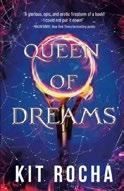
Two women discover the extent of their newfound powers.
Sachielle, the daughter of a king, grew up betrothed to the dragon god, Ash. In the first book of this series, Consort of Fire (2023), Sachi and her handmaiden, Zanya, attempted to assassinate Ash, but instead the three fell in love. Sachi and Zanya discovered that they’re not regular human women but are themselves gods. Sachi is the goddess of creation, which manifests in dreams, while Zanya is the goddess of destruction, which is known as the endless void. Now Sachi and Zanya struggle to understand and control their new powers. Zanya’s warrior skills are underdeveloped; she has heightened strength and reflexes and can transport herself through shadows, but she’s vulnerable to her emotions. Zanya forgets all her training if she thinks Sachi or Ash is under attack. Sachi learns that, in the dreamscape, she can travel through time and space, talking to
people both living and dead. On one of Sachi’s trips through the dreamscape, she’s captured by Ash’s archnemesis, his brother, Sorin, the Betrayer. Thousands of years ago, a battle between Ash and Sorin almost destroyed the Earth. Sorin retreated and created his own empire, a vicious mirror of Ash’s, including a twisted court of evil demigods. While trapped in Sorin’s realm, Sachi is determined to learn the source of Sorin’s malevolent power while Ash and Zanya work to attack his stronghold from the outside. While the first book in the series developed the romance among the three lovers, this installment prioritizes a tale of war. Sachi, Zanya, and other women lead the fight, with Ash deferring to their skills and judgment as they marshal the forces needed to defeat Sorin in battle. It’s satisfying to see strong women at the forefront of the story, but the book could also serve as a cautionary tale about the difficulties of balancing plot and character development in a romantasy. Fantasy and the fight against evil take the pole position in this sequel, leaving the romance plot a distant second.
Rowell, Rainbow | Morrow/ HarperCollins (400 pp.) | $28.00 July 23, 2024 | 9780063380196
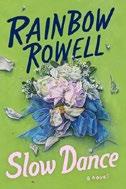
True love waits. In high school, Cary, Shiloh, and Mikey were a tightknit trio of quirky kids. Cary and Shiloh loved each other deeply but could never admit it, even to
themselves. When they reconnect in their 30s thanks to Mikey, lots of things have changed, and some have not. Cary is still in the Navy—his high school ROTC training and destiny to leave Omaha was something Shiloh hated in high school. He’s stationed in California and spends months at sea. Shiloh is still in Omaha. She has two wonderful children and a jerk of an ex-husband and hasn’t done anything with her life that she thought she would. Both of them are smart, clever, misanthropic, and stubborn. They are also, along with the omniscient narrative voice and tertiary characters, very funny. Rowell does longing like nobody’s business. She pits epic love against relatable, painful foibles. Cary and Shiloh want each other palpably, but they get hung up on little details, feel shame, project, overthink. They struggle mightily to believe they’re lovable. And they aren’t rolling in privilege, having many practical limitations besides her kids and his career: Shiloh has no family other than her mom and can’t afford to travel; Cary has a mother in poor health and a lot of family that can’t help. Just as the things that keep Shiloh and Cary apart are rooted in real-life problems, the things that might bring them together are quotidian and harder to accomplish than any grand gesture: Hope. Communication. Grief and trust. Chapters that dip back in time play to Rowell’s strength writing the confused passions of teenagers and show just how long these two have been absolutely gone for each other. Readers will be desperate to see them work it out.
A treat for fans of Rowell and of realistic romance.
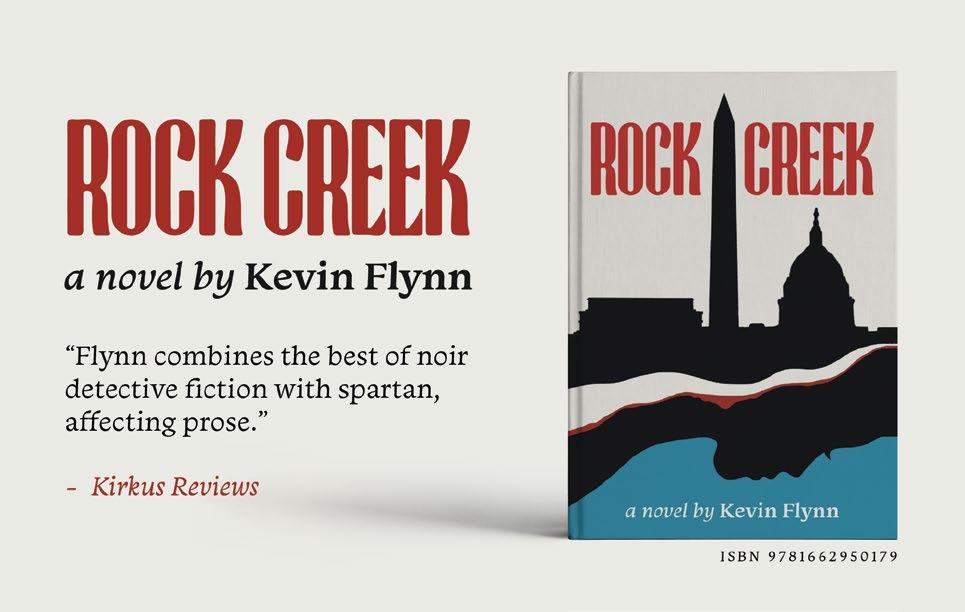
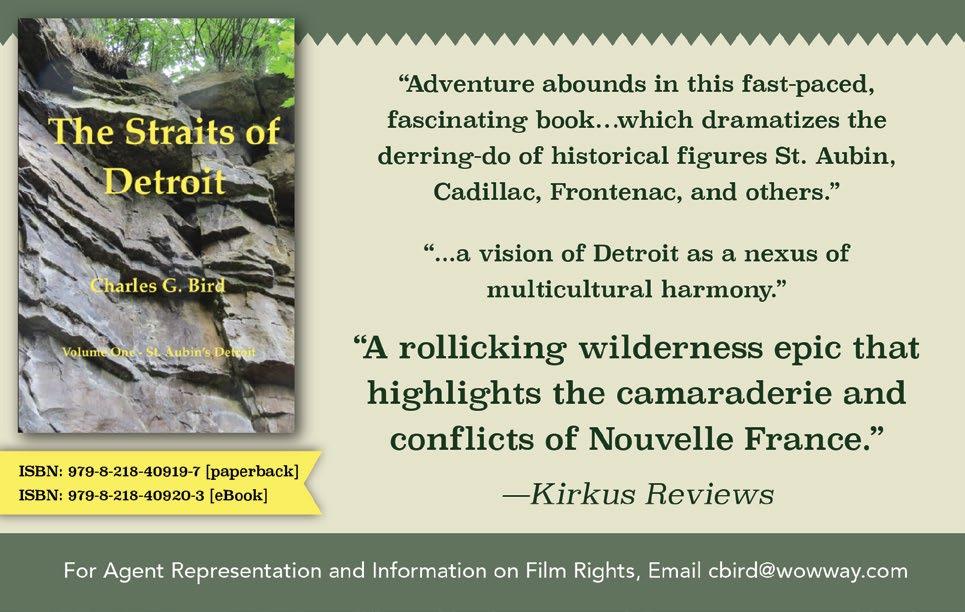
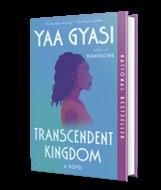
The actor and comedian is developing a series based on Yaa Gyasi’s 2020 novel.
Yvonne Orji is bringing Yaa Gyasi’s Transcendent Kingdom to the small screen, Deadline reports.
The actor and comedian, known for her role as Molly on Issa Rae and Larry Wilmore’s Insecure, is set to produce an adaptation of Gyasi’s novel for Sony Pictures Television.
Gyasi’s book, published in 2020 by Knopf, follows a neuroscience graduate student who seeks to understand what led her brother to die of a drug overdose and her mother to struggle with suicidal depression. In a starred review, a critic for Kirkus wrote of the book, which was shortlisted for the Women’s Prize for Fiction, “In a quietly poignant story,
a lonely woman finds a way to be less alone.”
Orji, author of the 2021 book Bamboozled by Jesus: How God Tricked Me Into the Life of My Dreams, will develop the adaptation for Sony Pictures Television under her first-look deal with the production company.
Orji confirmed her involvement in the project on Instagram, writing, “Been chasing this story for 4 solid years and will continue to ride hard for it ’til it’s on your televi-

sion screens WORLD WIDE!! You can BANK ON IT!… And to execs and networks— please don’t sleep on African stories. They are worthy to be told. They are worthy to be INVESTED in. And there IS a GLOBAL audience for them. BANK ON US!”—M.S.


This review originally ran in the May 1, 2021, issue.
In Jeffrey’s SF sequel, an earthling must thwart a shadowy conspiracy that could lead to the end of the universe.
It’s 2217, and humanity can travel from an environmentally devastated Earth to distant stars via “voidoids”—invisible space gates of an unknown nature. But even with thousands of planets to explore, only one Earthlike world, Silvanus, has been found. Navigator Aidan Macallan contacted and explored it in Through a Forest of Stars (2017), and it turned out to be off-limits to colonists, due to a sentient entity there called the
Rete; it’s not hostile, but it’s wary of the destructive potential of Homo sapiens. Now, on Earth, radical environmentalists and a reactionary, anti-science political buffoon named Houda Thunkit are at the forefront of a movement against space exploration. At the same time, voidoids are becoming unstable and closing down, potentially stranding outposts, ships, and colonies across the cosmos forever. Aiden now commands his own stateof-the-art starship, the Sun Wolf, and he and his crew form an uneasy alliance with Earth’s military to
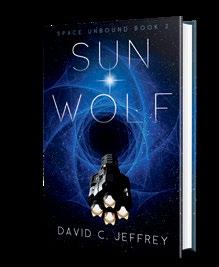
determine who’s disrupting the voidoids. The stakes rise considerably when scientists reveal that the gates are key to keeping all matter in balance; without them, the universe will dissipate into nothingness. Jeffrey’s yarn is a dandy cosmic mystery conceived on the vast scale of an Arthur C. Clarke or Olaf Stapledon epic. Some moments have a New Age–y tone, and it’s a bit odd when jazz music, a real-life
pursuit of the author, is revealed to be particularly important to the plot. But there’s a gallery of welldrawn, diverse characters that may pleasantly remind readers of Star Trek; a memorably sinister cabal of villains; and even a smattering of romance. There’s also no shortage of imaginative perils along the way. A fine spacefaring adventure story on a macroscopic scale.
This review originally ran in the March 1, 2022, issue.
A courier takes on more than she bargained for when she accepts a gig transporting an alien relic through hostile space in Matiasz’s SF novel. In a spacegoing future, earthlings are regarded by various alien species as violent, verminous upstarts whose greed ruined their home world and botched attempts to terraform Mars and Venus. Many feel that Homo sapiens, or “Gaians,” as they’re known, have no right to be zooming among the stars; nonetheless, many Gaians work throughout the galaxy as mercenaries and criminals. Stacey Jones, a Gaian, grew up in a Mars colony and self-identifies as a proud, socialist Martian,
but despite her politics, her services as a transport-courier are still for sale. Desperate for cash, she takes a seemingly easy assignment to ferry an ancient artifact to Kapala, a planet maintained as a sort of shrine to the mysterious Progenitor civilization, which seeded life throughout the cosmos. The cuplike item, called a “sangrael,” turns out to be an archetypal relic that’s featured in numerous Terran legends, including that of the Holy Grail, but its curator—the mysterious part-cyborg Medea— assures Stacey that the object is harmless on its own. However, heavily armed attackers from all over known space (including
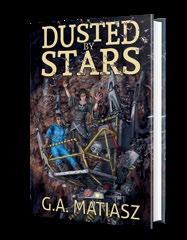
other Gaians) soon converge on the tiny expedition. What kind of task has she really taken on? Matiasz delivers a flighty space-opera adventure in a compact package that has the feel of a teen-oriented chapter book or comic-book tale—a feeling that’s further cemented by the inclusion of Hunt’s flavorful blackand-white illustrations. It offers shoutouts to such SF pioneers as Larry Niven, Olaf Stapledon, and even Edgar Rice Burroughs. The text,
Matiasz, G.A.
62 Mile Press | 124 pp. | $12.00 Jan. 27, 2022 | 978-1737005513
narrated by the determined Stacey, packs a lot of information into a small space—it’s a virtual singularity, one might say—but it doesn’t stop it from snapping into actionpacked fight scenes in the blink of an eye. There’s not a lot of character development, though, and an asteroid field of subplots remains in orbit at the end.
A brisk, if occasionally uneven, yarn that will still appeal to old and young space-action fans.
This review originally ran in the March 15, 2024, issue.
The Grim Reaper’s daughter must save her friend from eternal damnation in Paisley’s comic debut novel.
Trixie D’Vita’s mother is death—literally. As in, the Grim Reaper. “She was a red-headed, black-corseted, stiletto-wearing force of nature,” Trixie reports with a mix of awe and annoyance. “And she casually moved through time and space.” Trixie, who was raised primarily by her “uncle,” former drag queen Aunt Harry, isn’t interested in joining the family business. Instead, the 22-year-old works as a waitress at Aunt Harry’s popular Seattle bar, Quandors, where witches, zombies, vampires, and the tourists who
want to mingle with monsters enjoy all manner of alcoholand blood-based cocktails. When agents from the Angel Investigative Bureau show up asking for her mother’s whereabouts, Trixie finds herself caught up in a scandal involving a potentially rigged game show. To the Wheel features newly departed souls winning desirable next lives…or being cast into the pits of Hell. Trixie doesn’t want to get involved— her relationship with her mother is complex—until her best friend, Zuzi Gonzales, dies suddenly and ends up as a contestant on the show. Can Trixie save her friend from a horrible afterlife, even if it means descending into Hell itself…
This review originally ran online Nov. 22, 2023.
In Williams’ contemporary fantasy novel, a private eye investigates tangible facts and his own subconscious in order to work a case of theft, demons, and dreamlike landscapes.
Johnny Talon’s latest client seems like any other: Eve wants to recover the goods that her ex ran off with. The San Francisco–based “surreal detective” follows reality-based leads as adeptly as those he sees in dreams. But Eve’s case is bizarre, even by Johnny’s standards. His car, for starters, begins changing to an entirely different model every time he drives it, much like Eve’s ever changing (or altogether

and, even worse, teaming up with her mother? Paisley brings a great deal of humor and invention to her premise. Here, a demon Trixie meets in Hell describes how torture has been revolutionized through Applied Health Sciences: “We’re all about creative, personalized Hellscapes. Our goal is producing well-rounded, rehabbed souls able to move on to their next lifetimes. By finding each soul’s unique triggers, we break them down and open them
up so they can get back on the Wheel of Life.” Paisley takes her characters seriously, even when she places them in screwball situations, which makes for an unexpectedly moving reading experience. The mixture of surreal comedy, mythology, and memorable characters makes for a winning combination that will surely have fans eagerly awaiting a sequel.
An imaginative and entertaining novel about life, death, and mother-daughter relationships.
disappearing) outfits. While the P.I. rightly guesses that Eve is lying about some things, that doesn’t quite prepare him for what he finds, including dead bodies, hostile demons, and possibly a portal to Hell. Johnny takes cues from his peculiar dreams and coolly handles such outlandish developments as traveling through time and space without warning. Retrieving the pilfered items leads to the much more dangerous tasks of vanquishing monsters and setting a soul free. Williams’ tale is, by design, a mishmash of oddities. It doesn’t always make sense; even Johnny is surprised

Wild Rose Press | 218 pp. | $18.99 Feb. 21, 2024 | 978-1509253852
when he suddenly finds himself in medieval attire, armed with a demon-slaying “magical sword.” Much of the surreality involves sex and drugs. The author summons memorable imagery ranging from the Lovecraftian (“Eve grabbed my arm as an immense many-legged creature scampered past us to climb up the green stone road”) to the more whimsically Carrollian (a hookah-smoking butterfly passes a talking walrus
playing cards). There’s a clear mystery as well, with Johnny and Eve hunting for a particular item (against a deadline) and dealing with a villainous mastermind. Amazingly, the ultimate explanation for all that’s going on in this baffling plot resolves most, if not all, of the questions the story stirs up in a satisfying fashion.
This robust fusion of mystery and the otherworldly revels in bewilderment and kookiness.
Every year, countless celebrities from the TV and film worlds publish books about their lives and careers. Unfortunately, most of them belong in the remainder bin, but there are always a few worthy gems among the dross. These three books—two about movies and one about TV—stand out for their thoughtfulness, creativity, and depth.
In the early 2000s, many so-called experts (and even uninformed amateurs like me) predicted a swift end to the reality TV phenomenon. Cut to nearly a quarter-century later, and reality programming is still going strong. Though I’ve never been a fan, outside of the occasional cooking show, I do enjoy reading criticism of the genre, and few TV critics are as simultaneously astute and entertaining as Emily Nussbaum, author of Cue the Sun! The Invention of Reality TV (Random House, June 25). In her follow-up to her excellent 2019 book, I Like
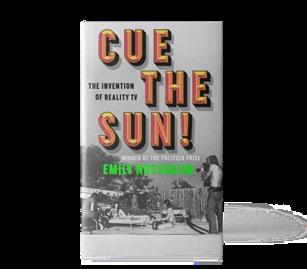
To Watch —which our starred review called a collection of “sharp, insightful writing that firmly positions Nussbaum as one of the leading TV critics of our time”—the New Yorker critic offers a “comprehensive history of a TV genre that shows no signs of disappearing.”
From The Real World to The Bachelor to Who Wants To Marry a Millionaire?, the author focuses her “critical, compassionate, practiced eye” on a topic that never fails to generate discussion, effectively “drawing connections among pop-culture trends and painting big personalities with a broad stroke.”
Big, vibrant personalities abound in the Dunne family, captured memorably by actor, producer, and director Griffin Dunne in The Friday Afternoon Club: A Family Memoir (Penguin Press, June 11), in which the author “retraces [his] history, offering colorful snippets of life in an intriguing, privileged milieu,” according to our starred review. Dunne

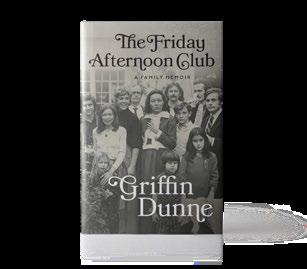
frames the narrative with an account of the murder of his sister, Dominique, and the birth of his daughter, Hannah, and he explores the progress of his career and the ins and outs of his unique family life, describing his relationships with everyone from John Gregory Dunne and Joan Didion to Carrie Fisher, one of his primary confidantes. Despite the many bright lights that populate these pages, darkness is never far away. As our reviewer notes, “the tragedy of Dominique’s murder looms throughout,” and the author delivers “a poignant love letter and evidence that through it all, genuine love is the backbone that keeps a family strong.”
This month brings us another career retrospective from a Hollywood veteran, director Susan Seidelman. In Desperately Seeking Something: A
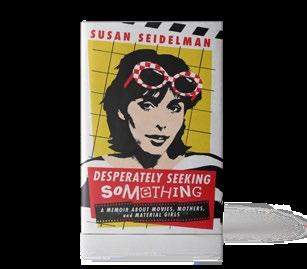
Memoir About Movies, Mothers, and Material Girls (St. Martin’s, June 18), she offers what our critic called “a revealing peek” into her life and career. Unlike many celebrity memoirists, Seidelman opens with “an appealing vulnerability,” writing, “‘In one of my bored and narcissistic check-ins I found the following question posted under my Wikipedia page: Whatever happened to Susan Seidelman? ’” She answers that question and more, shedding valuable light on the punk drama Smithereens , which made her “the first American independent filmmaker to compete at the Cannes Film Festival,” as well as her career-long work as “an advocate for groups of underrepresented people.” Film buffs will eat it up.
Eric Liebetrau is the nonfiction editor.
Illustration by Eric Scott Anderson ERIC LIEBETRAUA penetrating exploration of the life and work of the acclaimed novelist, memoirist, and pioneering figure in gay culture. While Christopher Isherwood (1904-1986) may be best known for Goodbye to Berlin , which drew on his experiences in Weimar-era Berlin and inspired the musical Cabaret , this new biography by Bucknell, director of the Christopher Isherwood Foundation, astutely highlights the considerable merits of his other novels and candid autobiographical works. The author renders a sweeping portrait of Isherwood’s remarkable life journey, during which he forged indelible connections with many of the era’s preeminent literary and artistic figures. Early on, Isherwood moved within
an influential circle of writers that included W.H. Auden, E.M. Forster, and Steven Spender. In 1939, he moved to Hollywood and pursued screenwriting, while also initiating a spiritual conversion to Vedanta under the guidance of Indian monk Swami Prabhavananda. Over the ensuing years, his vast circle expanded, bringing in Truman Capote, Tennessee Williams, and David Hockney, among others. Bucknell dedicates perhaps too many pages to Isherwood’s early years, privileged upbringing, Cambridge education, and elements of his complex family dynamics (including his father’s death in World War II and his suffocating relationship with his mother), but this detailed exploration lays the foundation for her

Farrar, Straus and Giroux
explorations of her subject’s later writing and the complexities that shaped his intimate relationships, particularly his romances with various men at different stages of his life, most enduringly with artist Don Bachardy. Throughout, Bucknell urgently draws attention to Isherwood’s courageous life as an openly gay man and his vital role in
advancing gay liberation through his writing: “He saw from his career’s outset that he must make homosexuality attractive to mainstream audiences if he was to change their view of it, and he worked to do this in all his writing in different ways.”
An engrossing, rigorously documented study of a 20th-century literary trailblazer.
A PLAUSIBLE MAN
Adams, Jon & Edmund Ramsden Melville House (384 pp.) | $32.50 July 9, 2024 | 9781685890995

A consideration of an ecologist who spent three decades studying rats as a method for understanding how humans might react as urban density grew. From 1947 to 1977, John B. Calhoun, employed by the National Institute of Mental Health to study the consequences of overcrowding, built large-scale rat habitats designed to allow his subjects to display their innate social behaviors. Over time, deprived of space to expand as the population grew, the rodents’ “escalating social disorder collapsed to violent extinction.” Overcrowded conditions led to infant neglect, lower fertility rates, aggressive sexual activity, and rampant violence. Interestingly, rats who opted for social withdrawal as a survival technique were calm and healthy. Adams, a former BBC New Generation Thinker, and Ramsden, a historian of science at Queen Mary University of London, offer detailed histories of urban development, in cities like Baltimore and New York, showing how rat infestations have always accompanied human population growth. They explain when and how rats were used as models for psychological and behavioral research, as well as conclusions from various approaches to eradicating rats—i.e., poisoning is only a temporary solution. “Rats had lived in American cities as long as people had: either both
belonged there, or neither did,” write the authors. When Calhoun built his first citylike habitat (the Towson enclosure) in the 1950s, he documented every detail. His 1963 book, The Ecology and Sociology of the Norway Rat (the result of two years of daily observations, followed by six years of analyzing and writing his discoveries) “was, and remains, the most comprehensive and complete account of rodent behavior ever produced.” The authors also explore biographical details, from Calhoun’s background and personal life to the evolution of his interests. More academic and less entertaining than Robert Sullivan’s Rats, this book is nonetheless comprehensive. A largely fascinating book combining sociology, nature, and urban studies.
Ashton, Susanna | The New Press (368 pp.)
$30.99 | Aug. 6, 2024 | 9781620978191
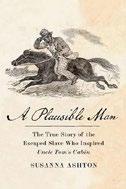
A scholarly detective story about a man who would inspire a world-changing book.
In December 1850, writes Clemson English professor Ashton, John Andrew Jackson, a formerly enslaved person in South Carolina, spent a night in Maine with Harriet Beecher Stowe. He showed her the scars left by the whippings he had endured, likely told her of the family members who had been sold away from him, and recounted his flight from Charleston to Boston as a shipboard
stowaway. He left the next day, having unknowingly provided Stowe the germ from which Uncle Tom’s Cabin would grow. He might have become a powerful symbol for the abolitionist cause, but, writes Ashton, Jackson had a talent for alienating fellow travelers: “His is a tale of individual hustle; separate from most established Black and white organizations, he would almost always go it alone.” His path would take him to Canada, then to England, where, having decided to “forcefully intervene in the global politics of slavery with nothing more than his witness and testimony,” he tried to become known on the lecture circuit while subsisting on work as a whitewasher and rough painter. Perhaps daringly—or perhaps out of desperation, once he’d burned enough bridges—he returned to South Carolina after the war with the intention of creating a Black farming community on the land held by his former enslaver. Ashton sorts diligently through what she memorably calls “obfuscatory nineteenth-century ledger lines,” piecing together the life of a man who might have been better known had his former allies not repudiated him. The narrative she unfolds has moments of both tragedy and victory as she capably returns a “canceled” man to history. It’s a story worth knowing and makes a solid complement to Ilyon Woo’s Master Slave Husband Wife
A capable contribution to the literature of slavery and abolition.
Bartlett, Robert | Cambridge Univ. (220 pp.) $24.95 | Aug. 22, 2024 | 9781009457156
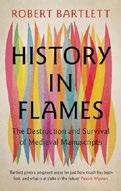
A scholarly study of how warfare led to the loss of countless historical manuscripts that were both important and beautiful. When the past speaks to us, it is
often through the records that survive. Bartlett, emeritus professor of history and author of the Wolfson Literary Prize–winning The Making of Europe, recognizes not only the importance of historical primary sources, but also their fragility. While figures are hard to calculate, a rough guess is that more than 90% of manuscripts from the Middle Ages in Europe have been lost. While many noteworthy political and religious documents survived, everyday items such as contracts and letters have also offered important insights. For those willing to dig into the literature, one advantage was the centralization of archives in cities in the modern era, but this also brought the danger of wholesale destruction. Bartlett investigates cases of military action, ranging from the Franco-Prussian War to World War II, in which massive amounts of material were destroyed in the space of a few hours. He cites the power of explosives as the factor that did the most damage. He also recounts the efforts of scholars and archivists to save as much as possible, and they have been able to painstakingly resurrect some manuscripts from fragments. Bartlett seems to know nearly everything about his subject, but the book will appeal most to readers with a special interest in medieval history. Others are likely to find it a difficult read, even while regretting the loss of so many key pieces of the past. “What we can know of the past depends on what has been handed down, and that is not a constant,” writes the author. “We make the past, but we can also lose it.”
Not for general readers, but Bartlett’s love for the documents of the past shines through.

Beauchamp, Zack | PublicAffairs (272 pp.) $32.00 | July 16, 2024 | 9781541704411
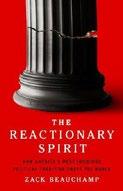
A politically savvy exposé of the recent rise of “a global antidemocratic movement that claims to be acting in democracy’s defense.”
the United States might not be nearly as widely shared” as many think. To counter the reactionary spirit, Beauchamp argues for democratic activism and evidence-based governance, and he thoughtfully presents the history of competitive authoritarianism and defines its major dimensions. As a broad assessment, the author’s approach is more than sufficient in detail and attentiveness to political theory and academic scholarship. A conscientious peeling away of the false democratic facade of contemporary authoritarianism.
For more on the history of authoritarianism, visit Kirkus online.
Beauchamp, a senior correspondent for Vox who focuses on right-wing populism, argues that the emergence of competitive authoritarianism, whose proponents hold (rigged) elections and undermine such democratic institutions as a free press and politically independent courts, is a consequence of a perceived need to defend social hierarchies from advances in social equality. This reactionary spirit pits democracy’s equal citizenship against a form of liberalism that embraces individual freedom and xenophobic nationalism. “Democracy, by its nature,” writes the author, “encourages the upending of social hierarchies,” and it’s “always possible for citizens to elect leaders whose policies would challenge the existing social order.” The rise of competitive authoritarianism was precipitated by postwar decolonization, the formation of welfare states, mass migration, and efforts to reduce discrimination against marginalized groups—e.g., Black citizens in the U.S. and the lower castes in India. Beauchamp uses four cases as illustration: the U.S., Hungary, Israel, and India, epitomized, respectively, by Donald Trump, Viktor Orbán, Benjamin Netanyahu, and Narendra Modi. Although Beauchamp suggests American origins for competitive authoritarianism, his evidence is more congruent with it being a global phenomenon similar to the spread of democracy after World War II. As the author writes, it’s possible that “the consensus around the basic principles of liberal democracy in countries like
Behar, Richard | Avid Reader Press (400 pp.) $35.00 | July 9, 2024 | 9781476726892

A penetrating account of the web of lies that won the late con man Bernie Madoff his billions. The subtitle notwithstanding, words are likely to be forthcoming still about Madoff’s crimes. As Forbes contributing editor Behar notes, a court-appointed administrator is busy recovering the billions of dollars Madoff distributed in his massive Ponzi scheme, which robbed countless people, among them Elie Wiesel, Sandy Koufax, and Steven Spielberg. That so many of Madoff’s victims were Jewish was itself a swindle, for Madoff well knew that “Jews through the centuries…, due to persecutions in country after country, tend to trust fellow Jews more than others simply because they are Jewish.” For all that, Behar, who visited Madoff in prison and exchanged emails and phone calls over several years, has an odd sort of empathy with his subject. He notes that a couple of Mafia dons with actual blood on their hands who did time alongside Madoff earned lighter sentences, in part, it seems, because the judge who sentenced Madoff to 150 years in prison was
BRING JUDGMENT DAY
determined that Madoff never see free daylight again. Empathy or no, Behar enumerates Madoff’s extensive lies, tracing his network of fraud far back in time and implicating a number of accomplices, noting that 13 associates and two external accountants received sentences as well. “It’s tempting and perhaps common sense to dismiss everything Bernie says as bullshit,” writes the author; in this, Madoff and Donald Trump are blood kin (Behar isn’t shy to venture into this territory). Of particular interest, apart from Behar’s deep dive into the mechanics of the scheme, is his complimentary account of how the Securities and Exchange Commission, always strapped for cash and hated by the free-marketeers of the GOP, managed to bring Madoff down.
A well-written, swift-moving story of true crime and punishment.
Kirkus Star
Bring Judgment Day: Reclaiming Lead Belly’s Truths From Jim Crow’s Lies
Bernard, Sheila Curran | Cambridge Univ. (243 pp.) | $27.95 | July 11, 2024 | 9781009098120

A new biography of the Black musician Huddie Ledbetter seeks to reclaim him from “the Lead Belly mythology.” Promulgated by folklorist John Lomax, who brought Ledbetter to a national stage, both moniker and myth do the “talented and multifaceted” performer an injustice, argues Emmy and
Peabody winner Bernard convincingly. Born in Louisiana in 1889, Ledbetter grew up in the teeth of Jim Crow and was serving his third prison sentence when he met Lomax and his son Alan as they collected folk songs at the Louisiana State Penitentiary in 1933. Following his release, he traveled with John Lomax gathering songs in other prisons and making their way north, where Lomax presented him to admiring audiences. Bernard interleaves her account of the men’s travels with retrospective examinations of Ledbetter’s encounters with Jim Crow law. As represented by the Lomaxes in their book Negro Folk Songs as Sung by Lead Belly, Ledbetter was a “dangerous” killer, but Bernard corrects and contextualizes this representation. Drawing on oral histories and court records, she juxtaposes Ledbetter’s arrests and incarcerations against the Lomaxes’ false accounts. Equally revealing are John Lomax’s letters to his wife, in which he gloats about life with “a ‘body servant’” and repeatedly calls Ledbetter “a n[-].” The author explains that she partially redacts the N-word but otherwise retains many “offensive dialect and stereotypes.” The result is, as she acknowledges, often “shocking and difficult to read.” With so little left behind by Ledbetter himself beyond his songs and recordings, readers are lucky that Bernard was able to draw on oral histories conducted with many people familiar with Ledbetter and his early life. The portrait that emerges is of a man who defined himself as “a musician, song composer and a dancer” and whose legacy deserves better than the demeaning characterization that’s persisted for decades. Essential for musicologists and fans of folk music.
Bishop, Patrick | Pegasus (368 pp.)
$32.00 | Aug. 6, 2024 | 9781639367030
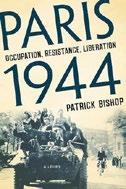
Intriguing perspectives that balance myths and realities about the occupation and liberation of Paris during World War II. Historian and former foreign correspondent Bishop, author of Operation Jubilee, presents a sweeping depiction of the occupation by, and liberation from, Nazi forces in Paris in 1944. The author conducted an extraordinary amount of research for this book, and his experience living and working in Paris as a newspaper correspondent adds a valuable sensibility to the narrative, particularly in his analysis of the political and social contexts of prewar Paris and the stark privation and fear endured by Parisians at the hands of the Nazis. The author examines Paris as a fixed idea or concept of high artistic and cultural stability in the minds of people around the world, how the impact of its capture by Hitler seemed to extinguish a light in the world, and the profoundly gleeful celebration upon that light rekindling. He tells this story through the eyes of several artistic and literary figures such as Picasso, Salinger, and Hemingway, famous and unknown fighters in the French Resistance, and the leaders of Vichy France and Charles de Gaulle, who “understood brilliantly the power that the city on the Seine exercised over the world’s imagination.” At times, the number of people Bishop profiles are so numerous that a roster or scorecard seems necessary, and some readers may wish for a more succinctly vivid description of occupied Paris, like that found in Mark Helprin’s novel Paris in the Present Tense. Still, Bishop effectively weaves the various and oftentimes intersecting stories into a fascinating and enlightening narrative that serves as an entertaining social
history of World War II–era Paris. The book includes maps, illustrations, and extensive source notes for each chapter. A unique account of the liberation of the City of Light.
Blum, Howard | Harper/HarperCollins (240 pp.)
$32.00 | June 25, 2024 | 9780063349285
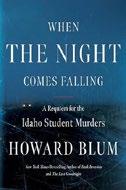
The prolific nonfiction author returns with the story behind the 2022 slayings of four University of Idaho students. Blum, author of Night of the Assassins, Dark Invasion, and other bestselling books, characterizes Moscow, Idaho, as a “quaint” and “churchy” town that also happened to be home to a university known for being “the best party school in the state.” Beneath the pleasant exterior, a disturbing history—which included drug trafficking, brutal murders, and allegations of pedophilia and sexual assault against respected members of a local church—quietly lurked. Blum reveals how the stabbing deaths of Kaylee Goncalves, Maddie Mogen, Xana Kernodle, and Ethan Chapin on November 13, 2022, revealed, in their shocking senselessness, Moscow’s unacknowledged dark side. The police investigation ultimately yielded a suspect, a troubled criminology doctorate student named Bryan Kohberger, and circumstantial evidence pointed to Kohberger’s guilt. However, there were no significant connections between the indicted killer and any of the victims, which has since led to multiple postponements of the trial: “And so now after all the tedious, exasperating delays, whenever it finally does take place, it will be a footnote to the larger, ineluctable events….Besides, what will the trial reveal? The dialectics of the courtroom would inevitably prevail and opposing teams of experts will be summoned to go at one another.” Blum suggests that a second tragedy—the effect
the murders have had on victims’ families—exists alongside the actual murders themselves. In their frustration with the criminal system and desire for justice, Goncalves’ parents and siblings offered support for death penalty legislation that would permit death by a firing squad, effectively making them victims of a “raging, all-consuming anger” that would mark them for life. Blum capably maintains the suspense and thoughtfully probes into the motives of key players in this intriguing yet profoundly unsettling story. A compelling true-crime book.
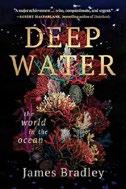
A novelist, activist, and naturalist writes a paean to the sea. Bradley, editor of The Penguin Book of the Ocean, reminds readers that we live on a planet whose surface is mostly water. “We spend the first nine months of our lives suspended in the liquid of the womb; once we emerge our tissues are made of water, our blood salt as the sea,” he writes. With a nod to Rachel Carson, who also wrote about “the ocean’s mysteries” and “the way its meanings haunt and elude us,” Bradley brings the science up to date with the latest findings of oceanographers and biologists. He begins with a history of the Earth; soon after the planet cooled, water appeared. Bradley delivers a vivid, expert education on the ocean’s makeup and behavior, including valuable information on currents, tides, sea creatures, reefs, glaciers and sea ice, abyssal depths (amazingly rich in life), beaches, and resource extraction, with an emphasis on the heavy hand of human exploitation. In the 20th century, scientists mourned species extinction and disappearing forests, but the current century’s onslaught of climate change, massive chemical and plastic pollution, and technology that literally vacuums up
life from the ocean and ores from its floor means that many modern natural histories—Bradley’s included—deliver as much pain as pleasure. Human cultures barely disturbed the ocean until technology from Western Europe exploded across the world after the Middle Ages, followed by the industrial revolution. While historians do not ignore the despicable international slave trade, colonialism, and racism that followed, Bradley devotes more space than the average natural historian. His warnings about the mass human disaster already in progress, including continued warming and rising sea levels, are more focused, though equally disturbing.
A satisfying tribute to the wonders of the ocean and the myriad dangers it faces.
Callahan, Maureen | Little, Brown (400 pp.)
$32.50 | July 2, 2024 | 9780316276177
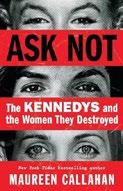
A sharp-edged exposé of Kennedy men. Investigative journalist Callahan, author of American Predator, reports on the physical and psychological abuse—neglect, public humiliation, rape, murder—meted out by generations of Kennedy men. Drawing on interviews and archival sources, the author provides ample evidence of the “perverse double standard—in the press, in the justice system, and in the court of public opinion” that allowed the men’s insidious behavior to persist. The infamous family tree begins with Joseph P. Kennedy Sr., “financially and sexually rapacious,” and includes his sons Jack, Bobby, and Ted; Bobby’s son Robert F. Kennedy Jr.; and Jack’s son John Jr., who was killed, along with his wife, Carolyn Bessette, and her sister when the plane he was piloting—irresponsibly and in bad weather—crashed. Like his father and uncles, John Jr. was risk-taking, arrogant, spoiled, demanding. But women, some who married
>>>
Bradley, James | HarperOne (464 pp.) $18.99 paper | July 2, 2024 | 9780063390171The author’s new memoir, Nephew, is a poignant tribute to family bonds.
BY MARIETTE WILLIAMSM.K. ASANTE JOINS us for this interview from a recording studio—which is appropriate, given how deftly his writing weaves rap lyrics, poems, diary entries, and voicemails to create a powerful ballad about a family in crisis. Asante’s latest memoir, Nephew: A Memoir in 4-Part Harmony (HarperCollins, May 21), is essentially a letter to his nephew, Nasir, who has been hospitalized by gunshot wounds he sustained while shielding his young cousins from a drive-by shooting. What follows is Asante’s attempt to document the family’s struggles and triumphs to show Nasir where he came from and help him to avoid making the same mistakes.
Asante introduced readers to his family in his first book, Buck, taking us into his gritty Philadelphia neighborhood, sharing his losses and struggles, and showing us the first stages of his older brother Uzi’s incarceration. In essence, Nephew is a follow-up to Buck; Uzi looms over each page, his incarceration affecting each family member, especially his son, Nasir, for whom he takes no responsibility. Eventually, Asante steps in, playing a father-figure role to his young nephew, determined to offer the stability and mentorship that Uzi won’t. Kirkus praises the book’s “passionate, moving, spirited reflections on art’s therapeutic potency.”


sure that they speak to one another.
I spoke to Asante over the phone about his writing process, breaking generational cycles, and his complex relationship with his brother and nephew. The following conversation has been edited for length and clarity.
The book includes lyrics, poems, diary entries, letters, and even voicemails from various family members. Can you walk us through the process of fitting all these pieces together? I approached it like building layers. My narrative, the story that I’m telling you, is the primary layer. Then the lyrics from my nephew and my brother
are also helping to tell the story that’s in the primary layer, but, independently, they tell their own stories. It’s about taking all these elements that people might see as scraps but the quilt-maker sees as part of something bigger and more beautiful. Once I’ve identified the layers that I want to use, it’s then just a process of weaving and melding and making
In the book you discuss how Black Arts Movement poet Sonia Sanchez reveals that her purpose as a writer is, in her words, “to keep in contact with our ancestors and to spread truth to people.”
Do you see your book doing that?
That’s certainly my goal as a writer. I go by M.K. Asante, but my first name [Molefi] means “keeper of traditions.” So I’ve always felt like a custodian of the culture. And I’ve always felt like it was my job to make the ancestors proud, and to do the things that they may have not been able to do, and to make sure I take those opportunities and give those opportunities to the people coming after me, as
well. It’s very important to me in that ancestral tradition to speak truth.
Has seeing how your brother approached fatherhood changed how you yourself parent?
Absolutely. Nasir was like my first experience being in a fatherly role. I was pretty young, didn’t have any kids, and wasn’t thinking about it at all. When Nasir was born, I immediately felt connected to this kid, even though he didn’t know my brother. I immediately felt connected to him, and it kicked in—this instinct that I didn’t even know I had. I was in college and people wanted to hang out with me, but I just wanted to hang out with my nephew. It taught me to be protective in a way I wasn’t before. The situation with my brother, the way he wasn’t involved in his son’s
life, disturbed me from the beginning, but it didn’t really hit me until I had kids. It was never an option not to be a part of my kids’ lives. Now that I’m a father, I’m seeing how important all these moments are with my kids.
There’s also a lot of writing devoted to the generational cycles of violence, poverty, and absentee parenting. Do you think the cycle has been broken for the next generation of men in your family?
I’d like to think a couple of things. One of the differences with Nasir is that he’s got a really strong support system. I think the other difference is that he’s aware. Part of the journey of this book was him also learning things and implementing changes in his life and being aware of [his family’s history]. His involvement in this book and this project
means that he understands the story and that he understands his legacy.
What conversations about mental health need to happen in Black families? What progress has been made?
I think these conversations are starting to happen. I’ve even seen some change in my lifetime. I remember, growing up in the ’90s, you didn’t talk about that kind of stuff. You didn’t talk about going to a therapist—there was a real stigma around it. And so I’ve seen a real shift in terms of Black people being able to even have the conversation.
I hear young people talk about their mental health and mental wellness. I’m a professor at Morgan State University in Baltimore, and we have Mental Health Week. Things have changed a lot, and I’ve seen that
talking about mental health has become more accepted.
Has the writing of these memoirs changed your relationship with your brother?
I wrote Buck before this, a memoir that was the beginning of this story. When you start Buck, I’m 12, and Uzi’s 16. We’re living in our parents’ house in Philly, and he gets arrested and I get kicked out of school. I’m going through all these things, and I discovered in high school that I want to be a writer. Buck introduces you to Uzi and his letters from jail, so me and my brother have already gone through this whole I’m a public memoirist who writes about my family. He’s fine with that. He understands. Our relationship has always had a level of complexity because of my relationship with his son, but writing this
book didn’t change our relationship.
What’s the takeaway for readers?
First, love is everything. It’s the thing that makes a father show up or makes an uncle show up. It’s the thing that makes a nephew save his little cousins. The other thing is that it’s never too late. I always told my brother that it’s never too late, and it’s still not too late. That’s the amazing thing about life. If my brother got his shit together right now, and decided that he wanted to be different and have a different role in Nasir’s life, it’s absolutely possible. Would it be super easy? No. But is it possible? Absolutely.
Mariette Williams is a South Florida–based writer with bylines in Travel + Leisure, Teen Vogue, Cosmopolitan, and Essence.
It’s about taking all these elements that people might see as scraps but the quilt-maker sees as part of something bigger and more beautiful.
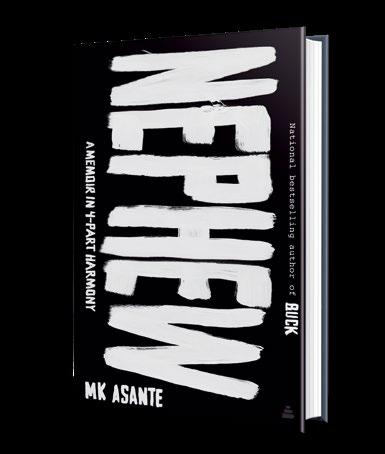
them and remained married despite betrayals, others who had affairs with them, were drawn to their glamour and charisma. Ted, a “legendary drunk and womanizer,” denigrated his wife; Jack didn’t try to hide his affairs with students, interns, coworkers, and Marilyn Monroe. The family’s power protected them: When Ted, driving drunk with an expired license, plunged his car into the waters off Cape Cod, leaving his companion to die, the media presented the event as a tragedy for him; his young victim, Mary Jo Kopechne, was hardly mentioned. Callahan reports on the murder of Martha Moxley, for which Kennedy cousin Michael Skakel was convicted—a conviction that later was vacated through the family’s machinations. “The most famous of these women,” she writes, “have too often been recast as architects of their own demise, or as women who were asking for it, or as imminent threats to the Kennedy dynasty.”
An informative and gossip-filled history of a notorious clan.
Chariton, Jordan | Rowman & Littlefield (256 pp.) | $26.95 Aug. 6, 2024 | 9781538194249

An investigative reporter digs into the water crisis in Flint, Michigan, to call out failures in government oversight and in officials elected to serve the people.
Chariton’s professional interest in the crisis began in 2016 after he spoke with a local activist. He learned that the decaying city, once a thriving exemplar of middle-class prosperity, now threatened the health of its citizens. Further investigations Chariton conducted over the next eight years made it clear that much of the blame lay in governmental corruption that began with former
governor Rick Snyder, who repeatedly ignored warnings about the toxicity of Flint River water, and an administration that misappropriated funds meant to assist Flint residents. Cuts in funding for oversight efforts, disguised as bids to save the cash-strapped city money, only added to the problem. When officials initially changed the source of Flint’s water from Lake Huron (and more specifically, the Detroit Water and Sewage Department) to the heavily polluted Flint River, the city’s water plant did not test for carcinogens. Government negligence led to harmful levels of lead and Legionella bacteria making their way into Flint homes through brown-looking water that “smelled like wet cardboard, dirty feet, or straight up chemicals.” Over time, residents—many of whom were poor and/or Black—developed everything from rashes and loss of hair to life-threatening cancer and liver, kidney, and central nervous system ailments. Chariton’s dedication to exposing the truth behind the lies and coverups is admirable, even though the amount of detail he offers at times slows the narrative down. Nonetheless, the author delivers important journalism that serves as a sobering reminder that in the face of government injustice, it is up to citizens to spread awareness and take action. The book includes a foreword by Erin Brockovich. An impassioned and enlightening work of current events.
Chollet, Mona | Trans. by Susan Emanuel | St. Martin’s (304 pp.)
$27.00 | July 2, 2024 | 9781250285720

An examination of how to make heterosexual love equitable. In a spirited social critique, French feminist Chollet draws on movies, TV, novels, advertisements,
psychoanalysis, and feminist theory to examine impediments to fulfilling experiences of heterosexual love. Real, reciprocal love, she believes, feels like a gift, “an intoxicating bond, an immediate and crazily benevolent intimacy with someone who could have been totally unknown to us.” Yet depictions of love in popular culture have undermined that benevolent intimacy by presenting women as weak, vulnerable, and intellectually inferior and fueling male fantasies of women as compliant bodies, silent and docile. “By deluging girls and women with romances,” Chollet writes, “by vaunting the charms and importance of the presence of a man in their lives, they are encouraged to accept their traditional role as caregivers.” Patriarchy, colonialism, racism, and imperialism have validated the image of the domineering man who takes “sexual appropriation of the female body.” The author shows how this depiction helps to explain women’s attraction to male killers and even to the exploitative figure of the male artist or writer, “whose creative process justifies the worst actions against those close to him.” Chollet suggests ways for women to revise the romance narrative by reexamining their own sexual desires, perhaps by subverting the idea of domination. In underscoring women’s need for independence, the author suggests non-cohabitation, which, among other benefits, eliminates the problem of sharing domestic tasks. For Chollet, a happily loved woman, financially independent and childless by choice, non-cohabitation may fit her life more than it would others’. Nevertheless, she is an impassioned advocate of love, urging readers “to breathe life back into it, by pulverizing both the bourgeois straightjacket of the obligatory trajectory of romance, as well as the equally conventional (and limiting) view of destructive passion.”
A vital celebration of loving.
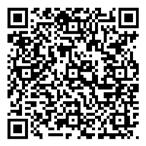
For more on water crises, visit Kirkus online.
Chu, Jon M. & Jeremy McCarter
Random House (320 pp.) | $32.00 July 23, 2024 | 9780593448946

A filmmaker looks back at his life, from his time growing up in Silicon Valley through his direction of Crazy Rich Asians and the forthcoming film version of Wicked . Chu, a hardworking and clearly cheerful (“I [don’t] have dark and brooding in me”) director and screenwriter, is the youngest of five children in a family of Taiwanese immigrants, and his parents built and still run a wellknown restaurant in Los Altos. With occasional inspirational and practical asides to readers, whether they’re aspiring filmmakers or not, the author, writing with McCarter, details a childhood spent scrabbling together digital film equipment—often discarded by the patrons of his parents’ restaurant—and working on elaborate projects with his friends. During his years at the University of Southern California, Chu cultivated a passion for freewheeling musical extravaganzas, and though he didn’t always fit in, he won multiple awards. The following years included a stint as a wunderkind, during which he was temporarily taken up as a project by Steven Spielberg, the lows of unemployment and “development hell” after he was fired from his first project, many years of working on sequels, from Step Up 2 to G.I. Joe: Retaliation, and filming two Justin Bieber live concert films. As he recounts, Chu really came into his own with Crazy Rich Asians, the first full-length movie to allow him to explore his heritage, and In the Heights, which gave him a chance to do the kind of musical he had always longed to produce. Occasionally introspective, as he examines why his life and work sometimes seemed to work and sometimes didn’t, and always down to earth, the author is a reliable guide
THE
through many of the less-glamorous aspects of being a director. Entertaining insights from a unique film industry insider.
Cloepfil, Georgia | Riverhead (208 pp.)
$27.00 | July 16, 2024 | 9780593714881
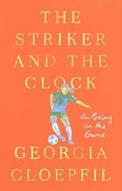
A former professional soccer player shares her memories of the game. During her career, Cloepfil once told one of her younger siblings what she considered the greatest feeling in the world: “scoring a goal.” Throughout her career as a striker, that opinion didn’t change, despite the many injuries she had to endure and the challenges she faced as a woman athlete. This book is Cloepfil’s tribute to the game she loves and a memoir of her decade of competition. The author moves back and forth in time, chronicling her soccer-obsessed Oregon childhood as a daughter of supportive parents who were athletes in their own rights—her mother was a state champion sprinter, her father “captained his perpetually winless high school football team”; years in which she “played in six countries, on four different continents: Australia, Sweden, Korea, Lithuania, United States, Norway”; and the sexism she and other women athletes had to contend with, from the dismissive attitude toward women’s sports to the fact that, in Australia, women played for free, whereas male players in the same division earned over $1,000 per week. The text consists of 90 short chapters, most of them only a page or two, each one named for a minute of play, plus a chapter in the
middle titled “Halftime.” Their terseness robs the narrative of depth and prevents it from venturing beyond the anecdotal. Fortunately, most of the anecdotes are amusing and informative, and, like many soccer devotees, Cloepfil gets winningly philosophical about the game—e.g., when she notes that a match’s duration is “a temporal perimeter of an hour and a half” or states, “The beginning of the game, like the beginning of a life, is bloated with possibility.” A poetic, heartfelt tribute to the beautiful game.
Coleman, Cady | Penguin Life (272 pp.)
$28.00 | July 2, 2024 | 9780593494011

An upbeat memoir from a former astronaut who served on the International Space Station. Coleman, a former colonel in the Air Force, chronicles her 24-year career at NASA, during which she flew two missions on the space shuttle and spent six months on the ISS. Early on at the agency, women were largely ignored. “By the time I got to MIT in 1979, only six women had been selected as NASA astronauts,” writes the author. “But seeing Sally Ride on the stage that day turned a possibility into a reality—a reality that could include me.” Coleman recounts some of the prejudice she faced, but overall, she gives her fellow astronauts high marks. She joined the program in 1992, and she delivers vivid accounts of flying on the space shuttle. However, her
greatest thrill was her time on the ISS. Chosen in 2007, she describes three years of intense practice, study, and simulation, during which she traveled the world before the mission itself. Coleman writes well, and readers will learn a lot about the technical details of spaceflight as well as the daily life, duties, and interactions of a career astronaut. Since she began her career, plenty has changed; the newer astronaut classes are 50% women. As always, however, the job requires top-level intelligence, fierce ambition, scientific and technical aptitude, a generous tolerance of human foibles, and physical and mental fortitude. “Throughout my career, navigating around my smaller size in the EVA suit required imagination, supreme negotiating skills, a sense of humor, and showing up cheerfully, even to meetings where I wasn’t invited,” she writes. Regardless, “blaming the equipment was not an option.”
An appealing account of a unique life that will encourage readers aspiring to a life in space.
Crowley, Roger | Yale Univ. (320 pp.) $25.00 | May 14, 2024 | 978-0300267471

An engaging study of the first era of globalization, focused on the spice trade. British historian Crowley has written a series of well-regarded, popular books about European history, including City of Fortune, Conquerors, and Accursed Tower. In his latest, the author keenly dissects the 16th-century contest between Portugal and Spain to capture the lucrative spice trade, even though it meant traversing the globe. Their competition, writes Crowley, was “a great game that literally shaped the world.” In the early 1500s, a trickle of nutmeg, cloves, and mace had found its way to Europe and sparked huge demand,
but their origin was a mystery. Exploratory voyages led to a small archipelago known as the Moluccas, located in what is now eastern Indonesia and the only source of the spices at the time. In 1494, Portugal and Spain had divided the southeast region of Asia—with no regard to the Indigenous populations—with a north-south line via the Treaty of Tordesillas. However, there was no concrete way to judge longitude or effectively enforce the treaty. Both the Portuguese and the Spanish sought to build on the region’s existing trade networks as well as export spices back to Europe, and the silver mined from Spanish-controlled mines led to a vast expansion of commerce. In short, Europe and Asia had become tied together, and in a span of less than 80 years. The narrative could easily have become lost on the vast canvas, but Crowley, a consummate storyteller, has the experience to keep control of it, and he capably juggles the large cast of characters. He also peppers the book with illuminating maps and illustrations, creating a fascinating examination of a significant period in world history.
Crowley has the knack of turning fragments into a mosaic, and his latest book is another colorful, sweeping saga.
Do I Know You? A Faceblind Reporter’s Journey Into the Science of Sight, Memory, and Imagination
Dingfelder, Sadie | Little, Brown Spark (304 pp.) | $32.00 June 25, 2024 | 9780316545143

A spry memoir of life in a whirlwind of neurodiversity.
“I’m about as good at face recognition as Elon Musk is at branding,” writes freelance science journalist Dingfelder. Diagnosed with prosopagnosia, or faceblindness, she explores the many different ways in which minds work. Along with amblyopia, she also has stereoblindness, the inability of the eyes to
work together, making it “hard to catch a ball, walk on uneven ground, or merge your car onto a highway.” (She does not drive.) Thus, as she notes in her lively discussion, “we neurodivergent people” often bear multiple labels. For example, a significant percentage of autistic people are faceblind and have ADHD. Dingfelder explores how the brain sorts things such as the faces of others into a vast database for retrieval, with memories processed in areas close to the eyes and then transferred to the occipital lobe at the back of the brain, only to come back into the front of the brain as visual information when needed. Given the billions of neurons in the brain and the many possibilities for differential wiring, so to speak, it’s small wonder that memory can be so various: Two people looking at the same thing may see something entirely different. Oddly enough, as Dingfelder notes, the brain stores facial information by splitting an image between its two hemispheres, reassembling it in a small area of the brain just above the ear. “That seems like a really convoluted way to do things,” she remarked to a researcher, who replied, quite rightly, “Brains are weird.” So they are, and Dingfelder’s accessible examination of their weirdness does much to make readers appreciate how difficult it is to understand what’s going on in the minds of other people.
A lucid explanation of how we experience the world and each other.
Dolnick, Edward | Scribner (336 pp.)
$30.00 | Aug. 6, 2024 | 9781982199616

Dinosaurs and the birth of paleontology.
Dolnick, former Boston Globe chief science writer and author of The Clockwork Universe and The Forger’s Spell,
begins his latest exuberant tale in 1802, when “something ominous shrieked in the night” in Massachusetts: A young boy had discovered petrified tracks. At the time, “no one had ever heard of dinosaurs.” Soon, others began uncovering fossils, and science called for answers to these mysterious relics. In one of the narrative’s first intriguing profiles, the author introduces us to Mary Anning, who was good at finding and selling fossils, massive plesiosaur, in the resort town of Lyme Regis. As Dolnick recounts, England’s “God-soaked people,” including scientists, had a hard time grappling with the riddles of time, fossils, and Noah’s Ark. In 1665, Robert Hooke broke through first, arguing that “fossils were relics of living organisms,” but finding them was difficult. In 1796, naturalist Georges Cuvier boldly stated that “extinction was a fact,” while Jean-Baptiste Lamarck recognized that “species do change” and Charles Lyell argued that the Earth is very old. A scientist author’s 1830 watercolor was the “first depiction of animals in a world before humans.” A few years earlier, the eccentric William Buckland, Oxford’s first professor of geology, identified the megalosaurus. He also argued that glaciers once covered Earth, and it was “those glaciers, not a flood, that had reshaped the world.” Prolific fossil hunter Gideon Mantell, discoverer of the iguanodon, boldly proposed England had a tropical, “remote, sultry past.” At the time, scientists were close to stumbling on evolution. Fossil fanatic Thomas Jefferson named his own giant sloth, and America had their giant mammoth, which was exhibited in London. In 1842, anatomist Richard Owen invented a new word to describe the animals— dinosaurs. Darwin was just around the corner.
A delightful, engrossing confluence of Victorian science and history.

MERKEL’S LAW
Dugard, Martin | Dutton (352 pp.) $32.00 | June 11, 2024 | 9780593473214
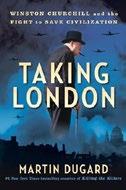
A ham-fisted account of the Battle of Britain. A frequent collaborator with Bill O’Reilly in the gee-whiz school of history, Dugard does not confront a fact without spinning it into the moral equivalent of a tweet, as these two complete paragraphs suggest: “The British like Hitler. A lot.” One of the author’s glancing examples is that of the future King Edward VIII teaching his niece, the future Queen Elizabeth II, how to do the Nazi salute. Alas for Hitler, Winston Churchill wasn’t buying it. Churchill looms large over this narrative, though Dugard peppers the text with characters straight out of a 1960s epic film, including heroic soldiers and RAF pilots, sneering Nazis, children’s toys lying in ruined streets. For all the purple flourishes, the author takes care with the historical details. He extensively analyzes Britain’s reluctance to enter into armed conflict with Germany, as well as the Nazis’ going for broke on the air war in the summer of 1940, sending wave after wave of bombers until, finally, Britain’s war machine kicked into gear and “the workers, skilled and unskilled, men and women alike, stood to their lathes and manned the workshops under fire as if they were batteries in action.” Those words are Churchill’s, by far the better writer than Dugard, who favors chyronworthy telegraphic prose. Entire paragraphs again: “A single German U-boat could kill the highest levels of Anglo-American leadership
Eddy, Melissa | One Signal/Atria (192 pp.) $28.99 | Aug. 20, 2024 | 9781982191030
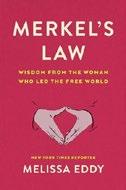
A New York Times Berlin correspondent explores the remarkable political tenure of former German chancellor Angela Merkel. Before the election of Donald Trump in 2016, the U.S. was the global champion of liberal democracy. After that, many observers turned to Germany, headed by then-chancellor Merkel, as the new leader of the free world. Eddy examines Merkel’s life and political career not just in terms of what she achieved, but also in terms of what they can teach both leaders and citizens about how “to lead on any level, or simply to live with integrity.” At the heart of Merkel’s power was her ability to resist expectations to fit any molds. She never let the fact she was a female in a sexist, male-dominated government and society stand in her way. Instead, she focused intensely on the work of governing, brushing off superficial criticisms about her appearance and attire until they became nonissues. Turning weaknesses into strengths, she
>>> with a single well-placed torpedo.” “The Germans are coming back.” “And yet five German bombs will make this morning quite unforgettable.” That the narrative is full of action is thanks to the facts of the matter, which don’t really need Dugard’s breathlessness. Readers with an interest in the early years of World War II would do better to read Churchill’s Their Finest Hour. A lead balloon of a book.

The AP reporter wrote about his ordeal in the 1993 book Den of Lions.
Terry Anderson, the Associated Press reporter who was kidnapped in Lebanon in 1985, held hostage for almost seven years, and later wrote a book about the experience, has died at 76, the AP reports.
Anderson was a U.S. Marine Corps veteran who reported for the AP in the U.S., South Africa, and Japan before being assigned to Lebanon by the news agency in 1982. Three years later, after leaving a tennis game with a friend, he was kidnapped by members
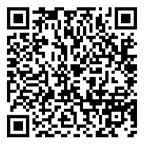


of the Islamic Jihad Organization militia. He was held hostage for six years and nine months.
In 1991, Anderson was released by his captors. Two years later, he published a book about his ordeal, Den of Lions: Memoirs of Seven Years . A critic for Kirkus wrote of the book, which became a bestseller, “That a man can spend seven years chained to a wall and less than two years later write such a lucid and compassionate memoir of his ordeal is a remarkable testament to humanity—as well as an unimpeachable indictment of the terrorism that chained his body but not his spirit.”
Anderson’s admirers paid tribute to him on social media. On X, fellow journalist Dan Rather wrote, “The very definition of a courageous journalist, Terry Anderson suffered years of torture at the hands of Iranian-backed terrorists. My thoughts are with his family.”—M.S.

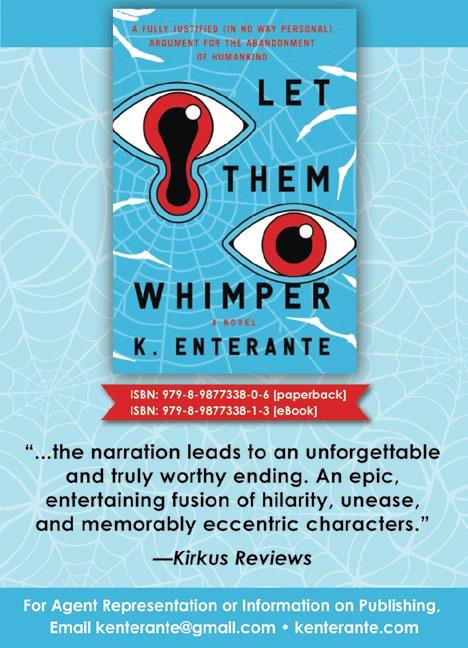
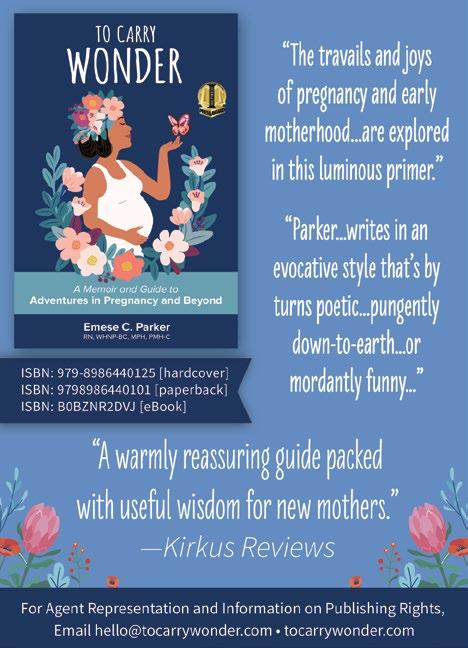

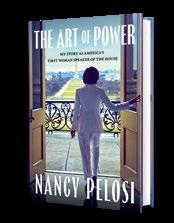
Simon & Schuster will publish the former House speaker’s The Art of Power.
Former Speaker of the House Nancy Pelosi will tell the story of her groundbreaking political career in a new memoir.
Simon & Schuster will publish the California Democrat’s The Art of Power: My Story as America’s First Woman Speaker of the House this summer, the press announced in a news release. The press says the memoir “is about the fighting spirit that has always animated her, and the historic legacy that spirit has produced.”
Pelosi was born and raised in Baltimore, the daughter of politician Thomas D’Alesandro Jr. She later moved to San

Francisco, hometown of her husband, Paul Pelosi, and in 1987 was elected to the U.S. House.
In 2001, she was elected House minority whip and became the chamber’s minority leader in 2003. She became the House’s first woman speaker in 2007, serving for four years, and was elected to the post again in 2019, serving until 2023, when Republicans took the House.
In her memoir, Simon & Schuster says, Pelosi “describes the perseverance, persuasion, and respect for her members that it took to succeed, but also the joy of seeing America change for the better,” and she “shares moving moments with soldiers sent to the front lines, women who inspired her, and human rights activists who fought by her side.”
The Art of Power is slated for publication on Aug. 6.—M.S.
 Nancy Pelosi
Nancy Pelosi
used every part of her unique background to her advantage. Eddy notes that Merkel’s training as a research scientist taught her to consider “all sides of an option,” even though doing so made her appear indecisive. She also remarks that Merkel’s outsider status as an East German taught her the art of building alliances, which later helped her save the European Union during the financial crisis of 2008. When the ex-chancellor allowed Syrian and African refugees into Germany between 2015 and 2016, she displayed not only a desire to move beyond Germany’s brutal Nazi past, but the moral courage to stand down opposition from critics. As Eddy honors the woman who helped rebuild and reshape a formerly divided country, she suggests that despite the messiness of the democratic process, it still offers the most humane way forward for all in an increasingly unstable world. Good reading for chaotic times.
Ehrensaft, Diane & Michelle Jurkiewicz
The Experiment (304 pp.) | $28.95 Aug. 6, 2024 | 9781891011559
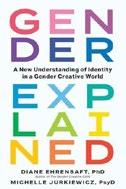
A comprehensive analysis of gender identity and the debates it continues to provoke.
Few topics have fueled the culture wars during the past decade like gender. “Hardly a day goes by across media outlets without reference to a gender-related issue, usually about children and adolescents,” write clinical psychologists Ehrensaft, author of The Gender Creative Child, and Jurkiewicz. Gender creativity is the idea that children should be able to explore their own genders in ways that make sense to them. “Human minds are creative and complex, so binary thinking is not the only way,” write the authors, who declare their allegiance to gender-diverse youth and their families while also rigorously
educating readers on the bigger picture. As psychologists, they lead their discussion with a preponderance of data. “The misinformation presented in the media,” they write, “creates an unnecessary and added burden to those already carrying so much.” The authors thoughtfully examine how and why gender has become a pressing concern for today’s youth; why so much anxiety surrounds the topic (“People don’t understand what is going on as they experience…seismic shifts in gender, and the unknown feels threatening”); the lifesaving consequences of the gender-affirming model; the claims that a disproportionate number of children designated female at birth are transgender or genderqueer; and how parents can raise their children in a gender-healthy manner. Ehrensaft and Jurkiewicz also parse the controversies of gender in sports, education, and medicine, and they urge readers to engage in self-reflection to confront their own prejudices about the issue, noting how it’s a “lifelong” process to attain literacy. “We shouldn’t be aspiring to gender neutrality, but rather gender inclusivity,” they write. “It’s not ‘down with gender,’ but rather down with constricting gender rules and regulations.”
A thorough, evenhanded illumination of a contentious topic imbued with compassion and cleareyed data.
General and the Battle for Honest and Accountable Government
Fine, Glenn A. | Univ. of Virginia (216 pp.)
$29.95 | Aug. 27, 2024 | 9780813952468

A former inspector general discusses the critical role IGs play in maintaining the integrity of U.S. governmental operations. Polls show that confidence in government has dropped to all-time lows; Congress bottomed out at 7%. The only institution that still garners
trust is the military because “when it identifies mistakes or misconduct, in most cases it seeks to take corrective actions.” Fine, who served as an IG for both the Department of Justice and the Department of Defense, examines the invisible but very necessary work he and other inspectors general have done to hold government agencies and officials accountable for their actions. Unlike other external government watchdogs like the Government Accountability Office, public interest groups, and the free press, IGs exist within each federal agency but are independent of them. They “investigate misconduct and promote efficiency” and encourage transparency on behalf of their “ultimate boss,” the American people. Speaking with the candor that made him less than popular “in the halls of the Justice Department or on the Pentagon food court,” Fine cites numerous examples of agency debacles, including the FBI’s inability to provide more than 1,000 documents to convicted terrorist Timothy McVeigh’s lawyers and the DOD’s failure to implement strategies that would better protect it from price gouging by government contractors. The author also offers recommendations to improve oversight, including setting term limits for IGs and creating IG roles for the Supreme Court and federal judiciary, especially in light of recent allegations of ethical misconduct by multiple justices, most notably Clarence Thomas. While the book will appeal primarily to those interested in law and American government, anyone seeking to understand—and perhaps improve— the system of checks and balances crucial to a healthy, functioning democracy will find it useful.
An illuminating look at an overlooked but crucial element of American governance.

For more on gender identity, visit Kirkus online.
Frangello, Gina | Ig Publishing (184 pp.) | $15.95 paper
July 9, 2024 | 9781632461629
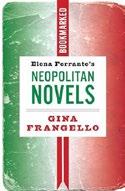
What is it about the Neapolitan Novels that accounts for their tremendous appeal?
Novelist and memoirist
Frangello, author of Blow Your House Down, chronicles the ways in which we can explore Ferrante’s epic—and how her own reading of the work has changed over time. Viewing the novels, initially, through an autobiographical lens, Frangello relates the parallels between her own life and that of Elena (“Lenu”) Greco, the series’ narrator. Eventually, she realizes that she was sometimes a “Lila,” too, as she reflects on the course of her early life in an Italian American enclave in Chicago and the course of her own friendships with other girls. Approaching the work from several different angles, Frangello dissects the elements of envy and carnal awareness in Lenu and Lila’s intense friendship and ponders the singular, hyperrealist way in which Ferrante focuses on Lila’s character. In a discussion of gender and the violence (sexual and otherwise) visited upon women whose “honor” (and protection against its violation) exists only as a derivative of the primary honor possessed by the men in their lives, the author also examines the role of class in the misogyny the young women endure. Intriguingly, Frangello devotes a substantial portion of her analysis to the myriad theories swirling around the enigmatic Ferrante’s identity and the question of authorship of the Neapolitan
saga. The author addresses the theory that Ferrante’s works might actually be a sort of performance art project by married Italian authors Anita Raja and Domenico Starnone, and she believes that ordinary readers don’t need to parse that out for themselves and can leave that question to the critics and scholars. The author’s conversational tone and frequent references to episodes in her own life—illuminated by her reading of Lenu and Lila’s odyssey—create an approachable, informed literary critique. Good fodder for further Ferrante debates.
Fuller, Brian Rashad | Dafina/ Kensington (256 pp.) | $28.00 July 23, 2024 | 9781496746603
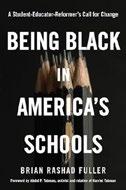
A Black educational leader and strategist uses his personal experiences to expose the racist underpinnings of America’s school system.
Fuller began his schooling as a student in a predominantly white, Reggio Emilia–inspired preschool in Richmond, Virginia. The author remembers that being the sole Black child in his class made him feel “a strange sense of otherness,” a feeling that followed him as a high achiever in his elementary school in Sumter, South Carolina, and as a hardworking student selected for a prestigious International Baccalaureate program at his high school, where academic tracking separated him from most of the other Black students—and especially Black men. Racism continued to affect Fuller after high school, from Emory
A promising debut by a Black educator with a vision for change.
University to his time at the Success Academy Charter School and New York City Department of Education, as well as during his pursuit of an advanced degree at the Harvard Graduate School of Education. “I began to contemplate how systemic racism is the symbolic center in our education system and what it would mean to truly dismantle it,” he writes. The author encapsulates that vision within this narrative, which “flows from a deep commitment of mine to storytelling, to a belief in the way personal stories hu manize the policies and systems that give rise to present inequities.” At its best, the book is perspicacious, passionate, and insightful, and the author shines in his analyses of how the pressure to overachieve intersects with racist systems, as well as how, though his personal awards were celebrated, their effect was not fully positive. At times, Fuller seems torn between specifying and generalizing: Moments when he refers to the broader, systemic problems often lack citations and pull focus away from his gift for storytelling.
A promising debut by a Black educator with a vision for change.
Glover III, Hoke S. & V. Efua Prince Norton (192 pp.) | $13.54 paper
June 4, 2024 | 9781324078876
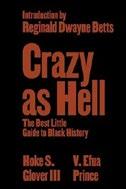
Two cultural studies scholars offer a darkly humorous guide to Black history. In this collaboration, Glover and Prince seek to challenge views that Black Americans are solely defined by the brutality of their history. Toward that end, the authors organize the text around the great cultural “luminaries” who have not only “transcend[ed] the boundaries” imposed on Black Americans, but also demonstrated their (very
A SEASON FOR THAT
human) imperfections by showing themselves to be “crazy as hell.” The authors gather those figures under categories they see as representative of important Black cultural archetypes. Glover and Prince begin with “The Runaway,” offering brief stories of well-known enslaved people who were able to escape— e.g., Harriet Tubman, who returned to the South “at least nineteen times” to lead other enslaved people to freedom, and Frederick Douglass, who taught himself to read and write and beat up a former master who mistreated him. Several categories, including “The Badass,” “The Outlaw,” and “The Lawless,” emphasize the way the heroes discussed in those sections (Muhammad Ali, Assata Shakur, Shirley Chisholm, Jack Johnson) were not only “bold enough to do something other folks [considered] crazy,” but also courageous enough to show no fear in evading unfair laws. Other sections, including “The Funky” and “The Black Intellectual and The Activist,” emphasize the fabulously boundary-breaking creativity and thinking demonstrated by brilliant eccentrics, from funk music godfather George Clinton and writer Zora Neale Hurston to Flavor Flav, Erykah Badu, and the Wu-Tang Clan. The final section introduces “The Unwitting Representatives of the Anonymous Masses,” a category that includes Emmett Till, Trayvon Martin, Sandra Bland, and George Floyd. As it entertains and enlightens, this book also makes readers keenly aware that the “craziness” demonstrated by Black heroes is a direct response to the madness of a racist American society.
An entertainingly provocative and informative reading experience.
Goudeau, Jessica | Viking (416 pp.)
$30.00 | June 18, 2024 | 9780593300503

An invigorating history that will displease legislators and would-be despots throughout the Lone Star State. In 2019, Stephen Harrigan’s Big Wonderful Thing asked difficult questions about Texas from a macro level. Goudeau, a San Antonio native with a bloodline in the state stretching over two centuries, examines some of the same issues through the lens of her family history. Though she “loved Texas my whole life,” what she uncovered is not pretty. For example, an ancestor executed by Santa Anna’s forces at Goliad was one of a generation of newcomers who was part of “an ad hoc system that grew from the machinations of desperate men trying to make a buck and get ahead.” That system, if it were to be successful, relied on the labor of enslaved people, and one reason to revolt against Mexico was that Mexico planned to abolish slavery. The political fortunes of many Anglos hinged on keeping the Latinx population terrified. One Texas Ranger relative, Goudeau writes, very likely “lied under oath to free a serial killer” in that interest. The author is consistently thoughtful and unsparing, and although she hits on just the right formula to explain the Texas attitude of conquest and control (“our right to flourish was
God-given, and higher than anyone else’s rights”), she catalogs as many failures as successes among forebears who wound up full of lead and forced from land and power. Throughout, she skillfully connects past to present. The redlining that marginalized communities in big chunks of Texas cities, for instance, is part and parcel of the habit of right-wing Texas politicos to consider everyone with a Spanish surname to be in Texas illegally.
Expect to see bans of this powerful book, one that every Texan should read.
Hoffman, Steve | Crown (368 pp.) $30.00 | July 9, 2024 | 9780593240281
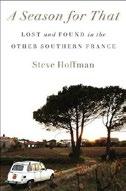
The transformation of a Minnesotan family in rural France. In his tender debut memoir, tax preparer and food journalist Hoffman recounts his family’s adventure of living for six months in Autignac, a village of 800 people in rural Languedoc that, at first, seemed decidedly not as magical as he had hoped. It was not picturesque, like Provence; above all, it wasn’t Paris, where he had spent nine months during college. “I don’t know what I’m doing here,” he told his wife. “This isn’t the trip I expected. It isn’t the trip I wanted it to be. It’s not the village I wanted it to be. It’s not the climate I wanted it to be. It’s not even the French food I wanted it to be. We’re just here.” But as time passed and he, his wife, and their two children—14-year-old Eva and 9-year-old Joseph—got to know their “new, unfamiliar neighbors,” they settled into the rhythms of the place, from the fishmonger’s weekly visits to the seasonal changes that presented them with succulent ripe apricots in
summer and sweet wine grapes in the fall. Hoffman describes in sensuous prose his delighted discovery of new aromas and tastes, including aromatic herbs, briny oysters, and pungent cheeses. Even a homemade vinegar, “filling my sinuses and wringing my salivary glands, changed the definition of whatever I had previously understood ‘vinegar’ to mean.” With the help of neighbors and shopkeepers, he learned to cook coq au vin, rabbit, beef daube, mackerel, and anchovies. “The kitchen,” he writes, “had begun to feel like the center that held this all together, and I craved my nightly aproned shift.” If food is central to Hoffman’s memories, so are the warm, embracing friendships that enriched each member of the family.
A collection of engaging recollections.
Horn, Tina | Hachette (272 pp.) | $30.00 June 4, 2024 | 9780306832567
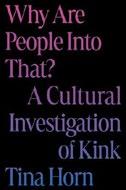
A sex educator analyzes how and why kinks captivate us. Through a queer feminist lens and suffused with a strikingly authoritative flair, sexuality podcaster Horn, creator of the comic series SfSx (Safe Sex), attentively examines a variety of sexual kinks, including spanking, bondage, and the sexualization of financial domination, among others. Featuring sharp analysis and a solid dose of humor, the opening section explores the eroticization of feet. Elsewhere, Horn examines how group sex, cannibalistic “vorarephilia,” and theatrical sploshing (“wet and messy” fetishists) found their way into fetishistic communities. Horn generously interjects aspects of her own kink identity into every chapter, offering anecdotes, intimate stories, erotic musings, and truths about
her early beginnings in the sex industry and, later, as a sadomasochistic sex worker. She imparts how the realities of fear, humiliation, and shame became the “fundamental raw materials” of modern-day sex work and, as a professional dominatrix, how she teaches (and learns from) her clients about the “prismatic possibilities of desire.” Horn delivers refreshing opinions on gender, identity, and the need for a new societal code of sexual ethics based on imagination, curiosity, and communication. “The danger comes when authority figures think they can control our desires, coaxing our identities into normalcy by censoring our experience,” she writes. “But desire, like nature, finds a way.” Since there are only nine kinky categories headlined in the book, each one benefits from pages of intriguing, judgment-free inspection, and the author approaches all her material with the authenticity and cultural analysis only a true aficionado of sexual exploration like Horn could deliver. Perfect for kink enthusiasts, the “pervert-curious,” and fans of Horn’s titular sexuality podcast, the book respectfully isolates a heady collection of fetishes that, for many, represent sexual freedom in all its kaleidoscopic wonder.
A probing, sex-positive report on the origins and values of fetishes.
Howell, Bill with Hélène Lee | Akashic (200 pp.)
$22.95 | Aug. 6, 2024 | 9781636141725
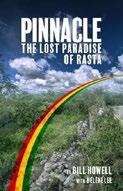
A son of one of the founders of the Rastafarian movement tells the inside story of the utopian village his father founded and the colonial forces that ultimately destroyed it.
Born and raised at Pinnacle, Howell had the unique opportunity to witness the events surrounding this
first-ever Rasta community’s rise and fall. Working alongside his father’s biographer, Lee, the author offers insights into Leonard Howell (1898-1981), the man who founded the commune, and the troubled history of Pinnacle itself. Toward the end of World War I, Leonard left Jamaica to fight for England. Then he split time between Panama and New York City, where he met Black intellectuals like Marcus Garvey, who inspired him to create a pro-African belief system that extended divinity to Ethiopian emperor Haile Selassie. Upon returning to Jamaica in the 1930s, Leonard earned a reputation among members of the Jamaican establishment as a radical who “advised poor people to start working together to build their own society.” Preaching “peace and love,” Leonard, who was at different times jailed and thrown into a psychiatric hospital for his beliefs, founded Pinnacle as a refuge for those who followed his beliefs. Built on the grounds of an old colonial estate, Pinnacle was a place where “everybody lived comfortably.” Fruit and fish were plentiful, and drumming and singing were a part of everyday life. However, peace was elusive. Fearing Leonard’s growing influence on the poor and dispossessed, procolonial Jamaican government forces did everything in their power—from invalidating his purchase of Pinnacle lands to subjecting him and Pinnacle to periodic police harassment—to lay waste to a thriving Rasta community. Illustrated throughout with blackand-white photographs, this loving tribute will appeal to historians of Jamaica and the Caribbean, as well as anyone with an interest in the origins of Rastafarian culture.
An instructive and enlightening book.



These audiobooks bring their unforgettable subjects to life.
BY MARION WINIKTo say that beloved queer cabaret performer Justin Vivian Bond is the perfect narrator for Cynthia Carr’s Candy Darling: Dreamer, Icon, Superstar (Macmillan Audio, 14 hours and 2 minutes) is an understatement, darling. Bond’s interpretation of the transgender icon’s speaking voice—and their sympathy for her experience—adds sparkling texture to this riveting and tragic story. As we all know from the Lou Reed song, “Candy came from out on the Island”—and that is where Carr begins, with the difficult 1950s childhood of “Jimmy Slattery” in North Merrick and Massapequa Park. As our reviewer noted, “Carr devotedly pieces together this incandescent portrait from irregular diary entries,
hilariously unreliable narrators, and taped interviews conducted by Candy’s friend Jeremiah Newton after her death.”
One remarkable scene occurs in the Chelsea Hotel, where Candy was visiting designer Charles James and where Lou Reed was living at the time he wrote “Walk on the Wild Side”—he came down and played his new song for Candy and Co., months before it was released as a 45 rpm record. The New York cultural scene of the 1960s, including insane-sounding off-off-Broadway shows and patience-testing Warhol projects, emerges in all its glamorous weirdness, and Carr’s entrancing treatment affirms Candy as the star she truly was.

One of the most unusual biographies you’ll ever listen to is To Anyone Who Ever Asks: The Life, Music and Mystery of Connie Converse by Howard Fishman, read by the author (Penguin Random House Audio, 14 hours and 7 minutes). When Fishman first heard a snatch of one of Converse’s songs at a party, the singer was almost completely unknown, having vanished in 1974 after abortive attempts to make it as a singer-songwriter in New York City. Fishman became virtually possessed by Converse and spent more than 10 years piecing together what he could about her life, beginning with her childhood in New Hampshire and tracking her through her final years editing an academic journal in Ann Arbor, Michigan (where close friends knew nothing of her already-obscure music career), closing with her intentional disappearance at age 50. “The text’s power derives as much from the writer’s obsession as from Converse’s music,” noted our reviewer, as Fishman compares her talents to those of Bob Dylan, Dinah Shore, Hank Williams, Emily Dickinson, and Jack Kerouac—to name but a few. You may not be convinced, but it doesn’t really matter: The generative force of the author’s conviction and his intense identification with Converse’s failure to make it
big are what make this a fascinating listen.
“Swisher for President” was the Kirkus reviewer’s verdict on Burn Book: A Tech Love Story (Simon and Schuster Audio, 7 hours and 40 minutes), read by author Kara Swisher; our critic responded to Swisher’s uncanny ability to explain confusing topics, separate good from evil, and even see the future. Swisher began her journalism career at the Washington Post, covering the rise of the internet, and has since become tech royalty herself, running conferences, publications, podcasts, and writing opinion columns. She’s had a front-row seat to the rise (and sometimes fall) of companies from AOL to Uber and to the careers of Steve Case, Jeff Bezos, Travis Kalanick, Mark Zuckerberg, Elon Musk, and many others. The book lives up to its title with withering portraits of self-absorbed “man-boys” and their excessive behavior. There’s a baby shower you’ve got to hear to believe—guests of Sergey Brin and then-wife Anne Wojcicki wore giant diapers and drank White Russians from an ice-sculpture breast fountain. Perhaps the most moving aspect of the memoir is Swisher’s deep respect for Steve Jobs, whom she laments as one of a kind.
Marion Winik hosts the NPR podcast The Weekly Reader.


Jones, Amanda | Bloomsbury (288 pp.)
$29.99 | Aug. 27, 2024 | 9781639733538

A memoir by a middle school librarian from Louisiana who fought censorship. After speaking up against censorship at her local public library board meeting in Livingston, Louisiana, in 2022, Jones, the former president of the Louisiana Association of School Librarians, began receiving threatening emails and attacks via social media. In response, she filed a defamation lawsuit against the two men she contends were at the center of those attacks. “I chose to take a stand, and that decision changed the trajectory of my life. I chose to fight back,” she writes. “It was a hard decision that I did not take lightly. It has taken an emotional, physical, and mental toll on me and my family.” Nonetheless, she notes, “I have zero regrets.” In this straightforward narrative, Jones shares her point of view, details her experiences, including the status of her lawsuit, and offers advice to other librarians who may find themselves in similar situations. At the end of the book, she includes the transcript of the speech she gave at the board meeting. At times, Jones’s narrative is repetitive, and her raw anger often detracts from her intended message and “newfound purpose…to inspire and support others like me.” She acknowledges that she has “wrestled with how much is too much when describing these people and the hatred I’ve felt, and sometimes still feel, about them.” Despite a few flaws, she offers sound advice about
how individuals from a variety of viewpoints can better educate themselves regarding library content, purchasing processes, and reconsideration policies. Ultimately, she writes, “everyone in the United States should stand up for intellectual freedom and stand against censorship, regardless of party line. You start banning one thing, and you’re on a slippery slope to banning everything.”
A useful book for readers interested in better understanding a persistent problem.
Joof, Camara Lundestad | Trans. by Olivia Noble Gunn | Univ. of Wisconsin (116 pp.) | $18.95 paper July 23, 2024 | 9780299348540
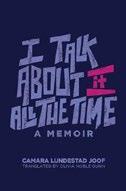
Exposing racism in Scandinavia. In her debut, Joof, a queer Black Norwegian Gambian hip-hop artist, performer, and playwright, bears witness to systemic racism throughout Scandinavia. As Monica L. Miller, a professor of Africana Studies, and feminist scholar Nana Osei-Kofi explain in their introduction, this book is part of a series called Norwegian Truth, committed to bringing diverse voices into Norwegian literature. Writing in Nynorsk, one of Norway’s two official languages, juxtaposing short, anecdotal fragments, Joof conveys the reality of being Black in a majority white society, where neo-Nazi parades, violence, and use of the N-word are among myriad macro- and microaggressions. Published in Norway in 2018, the book was quickly adopted into school curricula to facilitate
Candid, insightful, hard-hitting testimony against the myth of racial colorblindness.
I TALK ABOUT IT ALL THE TIME
discussions of race and racism. The author sees this contribution as consistent with her ongoing—and frequently exhausting—efforts to change minds. As she travels throughout the world, she writes, “I talk with politicians, teachers, students, journalists. I answer long emails and short Facebook messages. I write this book. I’m afraid,” she adds, “that my whole life has been reduced to the color of my skin… .I’m afraid I’m brown first and foremost. Brown first, and everything else afterward. Brown first, then daughter. Brown first, then friend. Brown first, then artist.” Attesting to the racism that she has experienced and observed, she admits to frustration at having to repeat the same stories over and over. She feels angry—at her editor, publisher, and readers, all of whom expect her to temper her outrage. “I’m angry,” she writes, “because it’s all about finding a language that isn’t didactic, that isn’t aggressive, that isn’t confrontation, that isn’t moralizing.”
Although she sometimes doubts the impact of talking about race, she knows “it doesn’t help to keep quiet. Keeping quiet helps no one.”
Candid, insightful, hard-hitting testimony against the myth of racial colorblindness.
Kahn, Jeremy | Simon & Schuster (336 pp.) $29.99 | July 9, 2024 | 9781668053324
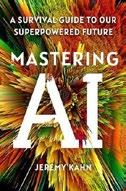
An experienced tech journalist examines the current AI landscape and highlights the need for careful design decisions and robust governance structures.
Kahn, who reports on emerging technologies for Fortune magazine, brings a great deal of expertise to this discussion of artificial intelligence, but his book is not a how-to manual on using AI. Rather, the author surveys the challenges that it presents to society as a whole. He identifies the release of ChatGPT by OpenAI in late November
2022 as the “light bulb event.” The difference between this system and its precursors was the capacity for conversational interaction, heralding a true breakthrough in the development of the technology and its adoption by people with limited technical expertise. Kahn explores the significant advantages that AI can bring—in business, education, health, environmental management, and even warfare. However, for every advantage, there are plenty of worrying downsides. AI could create powerful new medicines, but it could also lead to terrible bioweapons. It could expand educational possibilities, but it could also, especially because of its writing ability, degrade the human ability to think creatively and empathetically. The time to work out these questions is within the next few years, writes Kahn. This view makes obvious sense, but the key weakness of the book is how to actually come up with and implement “Goldilocks” solutions. The author suggests a role for government, but so far, political institutions have not been effective in dealing with technological issues. Kahn hints that a social consensus could form to place limits on AI development, but that seems more hopeful than realistic. Still, the author provides a solid analysis of the issues coming down the road, suitable for specialists as well as general readers. Kahn is a reliable guide through the AI minefield, assessing the pros and cons in a plainspoken, fair-minded way.
Animal Minds and Life in a More-Than-Human World
Keim, Brandon | Illus. by Mattias Lanas Norton (384 pp.) | $29.99 July 16, 2024 | 9781324007081

Sage lessons in coexistence among our planet’s nonhuman species. Keim, a Maine-based nature and science journalist, wants readers to develop
empathy and consideration for our “neighbors” and see them as thinking, feeling beings with whom we share much in common. The author examines the science of animal intelligence and communication, citing scientific journals as well as empirical examples from the everyday world. He supplements descriptions of animal emotion from folk stories and personal accounts with Darwinian proof that this emotion is deeply rooted in evolutionary history. For example, he notes that the sounds of a baby’s distress resonate across species. Keim extensively covers the animal rights movement and advocacy groups such as the Nonhuman Rights Project, and he provides an in-depth analysis of the case of the Bronx Zoo’s Happy the elephant: Should she have been considered a “person” under the law and treated as such? The author also follows efforts by managers of “domestic tensions with urban wildlife,” commonly known as “pest control.” Keim presents all of this information with insight and compassion, considering our animal neighbors from not only a legal but also a moral perspective. They include not only charismatic animals on the brink of extinction, but also common creatures encountered in our everyday environments, such as frogs and squirrels. In a characteristic formulation, Keim reflects, “As different as they are from me, they’re still someone, living in the first-person.” Although his polemic is well supported by scientific and scholarly references, his earnest plea is firmly rooted in a layperson’s language; this is a consideration of animals, wild and domestic, as our fellows, not our property. Lanas’ delightful pen-andink illustrations drive the point home. A comprehensive guide to thinking of animals not as anonymous creatures, but as individuals.
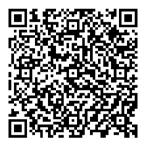
Alexander at the End of the World: The Forgotten Final Years of Alexander the Great Kousser, Rachel | Mariner Books (432 pp.) $35.00 | July 16, 2024 | 9780062869685

A professor of ancient art and archaeology tracks Alexander III through the last years of his Iranian and Indian campaigns, arguing that this period proved his greatness.
Kousser catches up with Alexander the Macedonian king in 330 B.C.E., after four years of wildly successful conquests through Central Asia in pursuit of his rival, Persian Emperor Darius III. Although the Macedonians found the seasoned warrior already assassinated, Alexander resolved to continue his rampage through eastern Persia and down into India for another seven grueling years. The author asks: Why did he press on when his exhausted, devoted army beseeched him to return home, where he could have rested on his laurels and vast riches? Inspired by the Hellenistic ideals taught to him by his early tutor, Aristotle, Alexander chose to embody them.
Kousser shows him as a godlike Achilles figure who challenged lions single-handedly, even while he was chided for recklessness by his own men. Although impulsive and quick to anger—e.g., he stabbed his longtime companion Kleitos at a drunken feast, an act he quickly regretted, considering suicide—Alexander evolved as he became more aware of the humanity of the people he conquered. As he pushed his army in pursuit of rogue Persian generals like Bessos through eastern Persia and across the formidable Hindu Kush, he took Persian lovers and a wife, Roxane; assimilated Persian generals into his army; and began to adopt Persian clothes and customs. “The East did not corrupt the Macedonian king,” writes the author. “Instead, from the outset he contained within himself the seeds of everything he would one day become.”
Kousser argues astutely that assimilation and integration with those he conquered
would ultimately define his enduring legacy. The text includes maps. A thoughtful, elegant study that sheds new light on an endlessly fascinating historical figure.
Kripal, Jeffrey J. | Univ. of Chicago (280 pp.)
$35.00 | July 12, 2024 | 9780226833682

A philosophical engagement with the impossible. Kripal holds the J. Newton Rayzor Chair in Philosophy and Religious Thought at Rice University, so it is his job to think outside the conventional box. In his latest book, following The Flip and The Superhumanities, the author interrogates the nature of consciousness, belief, even reality itself. His thesis is that the body of things considered impossible by the norms of rational thought and scientific inquiry is so large, when taken as a whole, that it should be placed at the center of discourse rather than pushed to the margin or dismissed entirely. Kripal examines precognition, near-death experiences, altered states of consciousness, religious visions, psychic connectivity, and quantum entanglement (“whereby invisible particles seemed to influence and affect one another across unimaginable distances instantly”), concluding that they indicate that the structure of time and space is not linear and fixed but omnidirectional and fluid, folding back on itself in unpredictable ways. “Why do people believe impossible things?” he asks. “People believe impossible things because impossible things happen to people….One does not need to believe any of the belief
systems that build up around such extraordinary experiences to acknowledge that the experiences in fact happened.” It is an interesting paradigm, but, as befits the subject matter, many sections of the text are convoluted and difficult to follow, even after repeated reading. However, readers who can navigate the labyrinthine narrative will appreciate Kripal’s idea of broadening your mind to see the nonrational as a deeper form of rationality. Certainly, this book is not for everyone, especially those who adhere to conventional religious teachings, but readers who want to venture into the world behind the world might find it an intriguing journey. Kripal bravely dives into fundamental questions, and he offers mind-stretching possibilities as a result.
Lampert, Natalie | Ballantine (432 pp.)
$30.00 | July 16, 2024 | 9781524799380
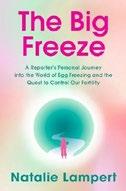
An investigation into a littleunderstood element of reproductive medicine. In her informative debut book, Lampert combines health journalism and personal history to offer a close look at a significant innovation in assisted reproduction: egg freezing. After she lost an ovary when she was still a girl, and almost lost the other when she was in her 20s, a doctor urged her to protect her ability to have biological children by freezing her eggs. Contemplating that step, she writes, “became the main impetus behind the deep dive that resulted in this
Levitin’s story is a fascinating piece of work.
book.” Egg freezing, she discovered, is a lucrative business, costing an average of $16,000 per cycle for the typical egg freezer, “a highly educated professional woman in her thirties, well established in her career by the time she walks into a fertility clinic,” but lacking “a suitable partner with whom to start a family.” Egg freezing, its proponents enthusiastically claim, lets women take control of their reproduction. Lampert, though, suspicious of the hype, sought reliable medical advice about the technology of egg freezing and storage, the nitty-gritty of the procedure, and its short- and long-term risks. Along the way, she gained new insights into the workings of her body, the history of birth control (the first pills were approved by the FDA in 1960), the development of pregnancy tests, the process of in vitro fertilization, and the probability of a live birth from frozen eggs. That statistic is hard to determine, Lampert found, because most women who freeze their eggs don’t use them. Of those that do, according to one study, the chance of a live birth was 39%. Lampert recounts the widely varying experiences of several women who opted for egg freezing, and she reflects in candid detail on the process of her own decision-making process. An engaging and well-researched book.
Levitin, Daniel J. | Norton (432 pp.) $32.50 | Aug. 27, 2024 | 9781324036180
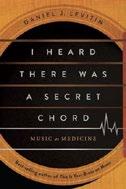
A leading researcher delves into the unique healing powers of music. Most people have certain pieces of music that improve their mood or make them tap their foot. Levitin, a respected neuroscientist and cognitive psychologist with a long list of academic and artistic qualifications, has been studying this phenomenon for years, using MRI and other advanced technologies to find out what is going on
inside the brain. He delved into this area in his books This Is Your Brain on Music and The World in Six Songs, and this book extends and updates his research. Listening to music activates certain areas of the brain, and the aim is to use that increased stimulation to help areas that have been damaged by illness or are malfunctioning to produce depression or other mental problems. Levitin has had significant success using music as a form of treatment, although he acknowledges that there is still much about neuroanatomy that is unknown. Using it for movement problems has been the area that has shown the most promise, and the chapter on treating Parkinson’s disease is illustrative of what can be achieved. There has also been success with treating PTSD, helping sufferers reconnect with their pre-trauma identities. The author emphasizes that there are no magic bullets, and not everyone responds. Moreover, each patient has to find a piece of music—or a genre or style—that speaks to them. Nonetheless, Levitin is convincing in his argument that this area potentially offers an alternative or supplement to pharmacological methods. Informative and enjoyable, this book is for anyone interested in how the practice of medicine is expanding, and it’s a mustread for fans of the author’s previous books on music and the brain.
Levitin’s story is a fascinating piece of work, written with authority, empathy, and occasional humor.
Lloyd, Nick | Norton (608 pp.) | $42.00 Aug. 27, 2024 | 9781324092711
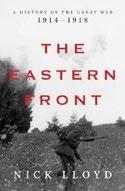
A respected military historian examines the unknown battlegrounds of a crucial conflict.
Even after a century, the bloody, mud-soaked images of World War I are deeply ingrained in the public consciousness. However, that is only one part of a larger picture, according to veteran WWI historian Lloyd, author of The Amritsar
Massacre, Hundred Days, and Passchendaele In Eastern Europe, there was a very different war. This book is the second part of a planned trilogy, following The Western Front (2021). Like the previous installment, the author delves deeply into records and correspondence of the time. Though the outbreak of war was triggered by a political assassination, there were deep-seated tensions and ambitions on all sides that had been simmering for years. When Austria-Hungary invaded Serbia, Russia took the opportunity to launch an offensive, and Germany counterattacked. Russia had huge numbers, but Austria-Hungary knew the territory, and Germany had the advantages of aerial reconnaissance and a reliable transport system. This was a war of maneuver and logistics fought across a broad front, with civilians caught in the middle. Lloyd capably lays out the strategies of each side, examining why certain battles were won or lost. A key point was the constant drain of Germany’s men and resources, which fatally weakened its army in the West. The final count in the East, according to Lloyd, was 16 million soldiers dead and 2 million wounded. Furthermore, the Austrian-Hungarian and Russian empires collapsed, presaging at least a decade of instability. This is an unquestionably compelling story, but Lloyd sometimes becomes bogged in the complexity and details of the narrative. Aficionados of military history will enjoy the book, but general readers may find it heavy going. With a wealth of research material, Lloyd reveals a different side to the war that would shape the 20th century.
Lohman, Nina | Univ. of Iowa | (328 pp.)
$24.00 paper | July 3, 2024 | 9781609389499

debut with a lyrical meditation on the “land of in-between,” an invisible kingdom between sickness and wellness, that she has inhabited since 2007. “I was healthy,” she writes, “until, quite suddenly, one day I was not.” She was a 27-year-old graduate student in theology, drawn to the field because of her interest in stories, when she suffered the first of the intense, debilitating headaches that persist to this day. Consultations with medical doctors, therapists, acupuncturists, chiropractors, and alternative medicine practitioners; multiple scans and lumbar punctures; a visit to the famed Mayo Clinic—nothing revealed a cause. “The unknown,” she reflects, “elicits fear by projecting worst-case scenarios onto life’s blank spaces.” The author took a cornucopia of medications, from ibuprofen to antipsychotics, rubbed herself with peppermint oil, and tried to sink into “the deepest realm of relaxation” through yoga and massage, but got only transient relief. Understandably, frustration led to anger: “When the anger comes, words like deserve, words like fault, punishment, consequence, commit, words like always crowd my mouth. Blame.” Searching for a name for her illness, for a narrative that would give her experiences coherence, or for a place in a community of fellow sufferers, she was dismayed when she was finally diagnosed with chronic daily headaches: “less a diagnosis,” she admits, “than a description of what I already know to be true.” All facets of her identity—wife and mother, friend and co-worker—have been changed by her pain. If theologians see pain as “a portal to the divine,” Lohman has come to see it as complex and contradictory, with the potential to incite creativity—and, as her elegant prose attests, even beauty. A graceful memoir of suffering and coping.
An acute examination of pain.
Lohman, founder and publisher of the literary journal Brink, makes a moving book
 Kirkus Star
Kirkus Star



Interactive Content

Kindle eBook ISBN: 978-1-7343635-4-8 www.laevnotes.com
Paperback ISBN: 978-1-7343635-3-1

“Rich personal and cultural history of a young woman in Berlin’s Belle Epoque.”
—Publishers Weekly/ BookLife Reviews
“A tender, personalitycentered biography of golden age Berlin.”
—Kirkus Reviews
“A wonderfully composed portrayal that could be considered narrative Art Nouveau.”
—BookTrib
The former first lady visited Target to autograph copies of The Light We Carry.
Michelle Obama’s The Light We Carry is out in paperback, and the
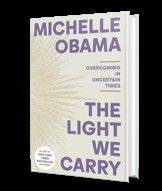
former first lady made an undercover visit to a Target store to sign a few copies.
Obama’s book, published in hardcover in 2022 by Crown, is a self-help book that gives advice to readers about handling anxiety and stress. A critic for Kirkus wrote of the book, “No surprises or reveals but plenty of warmth and encouragement, particularly for young people.” Obama won her second Grammy for the audiobook edition.
On X, formerly known as Twitter, Obama posted a video of her visit to a Target in St. Louis. “We are on a mission,” she says from the backseat of an SUV. “It’s a secret mission. I had the crazy idea—I heard my paperback is out, and it’s in Target—so we are going to go undercover, because I have not seen my book in a Target store.”
Obama enters the store, donning sunglasses and a baseball cap, and finds a display of her books. “Here we are,” she says. “It’s me. Should I do a reading here?” She

For a review of The Light We Carry, visit Kirkus online.
signs six of the books, before grabbing a handheld shopping basket and wandering through the store, seemingly unnoticed by other shoppers.
She checks out and returns to the SUV, saying, “Mission accomplished. See you guys later, on the next covert operation.”
—M.S.


Martin, Edna Cowell & Megan Atkinson
Permuted Press (272 pp.) | $30.00 July 23, 2024 | 9798888450604

Ted Bundy’s cousin reflects on the impact that being related to one of America’s most notorious mass murderers had on her life. Martin knew Bundy (19461989) as the loving cousin who treated her like a “kid sister.” Their lives became intertwined in the 1950s after Bundy’s mother moved to Tacoma to be near Martin’s family. From an early age, “Teddy,” writes the author, “had visions of a grand life,” which she speculates may have emerged out of his closeness to her family and her gifted musician-father, who was “wined and dined by the affluent and elite of the music world.” As Bundy grew older, he exhibited not only cleverness and an apparently affectionate nature, but also the ability to make people, including Martin, “feel special.” The author remembers Bundy as an anti-violence “champion for females” and a rising star in local Seattle politics. What she did not know was that his outward demeanor masked not only the predator he had become, but also a deep and twisted longing to be in the spotlight by whatever means possible. By 1974, women had begun to disappear from the campus of the University of Washington; soon, many were afraid that an unknown killer walked among them. Martin, who herself became the victim of a separate assault, never once suspected her cousin, even after he was questioned by Seattle police and then left for Utah, where he would commit more murders. Part of what makes this true-crime account so compelling is the inclusion of personal correspondence that took place between the author and her cousin while he was in prison. As they reveal Bundy’s chilling nonchalance and Martin’s own heartbreak, the letters also offer insight into the trauma that pushed the author into a
50-year silence about her ties to a violent sociopath.
Eye-opening and quietly disturbing.
Herbert Walker Bush:
Meacham, Jon | Random House (384 pp.) $45.00 | May 28, 2024 | 9780593729458

The prolific presidential historian offers a photo-heavy look at the life of George H.W. Bush (1924-2018).
“Don’t brag about yourself. Let others point out your virtues, your strong points.” That was a late-in-life piece of advice from the former president, whose parents offered a list of his son’s virtues on an admissions form for Phillips Academy, pointing out that “Walker” was considerate and “learns easily and rapidly” though also was “less neat than we consider desirable.” The grown-up Walker would remedy the demerit. After heroic service in World War II as a Navy pilot, he put himself together smartly, became successful in the oil business in Texas, and then entered politics. As Meacham notes in this heavily illustrated tribute, which serves as a complement to his 2015 bio, Destiny and Power, the political road was tough. Bush lost both of his senatorial races to Democrats in 1964 and 1970 after having won a seat in the House of Representatives. A fine moment of political history comes when Bush, hat figuratively in hand, visits Lyndon Johnson to ask whether he should try for the Senate, to which Johnson replied, “The difference between being a
member of the Senate and a member of the House is the difference between chicken salad and chicken shit.” Bush later took jobs that he didn’t necessarily want but assumed dutifully, notably head of the Republican National Committee under Richard Nixon, whom, in a letter reproduced here, he encouraged to resign during the Watergate hearings. Meacham notes Bush’s evenhandedness as president, thinking of himself as “a steady steward” without the rhetorical flair of his predecessor. Indeed, he was the last of the quietly competent Republicans, a breed now extinct—and worthy of this historical reminder of their existence. As much a keepsake volume as a biography, but rich in insights on the 41st president.
Minteer, Ben A. & Jonathan B. Losos Princeton Univ. (256 pp.) | $26.95 Aug. 13, 2024 | 9780691228624
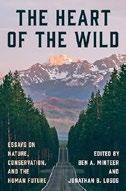
Essayists seek an ecological path forward. Editors Minteer, author of A Wilder Kingdom, and Losos, author of How Evolution Shapes Our Lives, open with a consideration of 19th-century landscape painter Thomas Cole, the allegorical content of his work, and his warning to America about abandoning its wilderness roots. Yet they caution that Cole’s profoundly influential message rested, in part, on what today seem like problematic assumptions, chiefly his idealized,
mythic sense of what constitutes “wilderness” and the American exceptionalism it implies. What is truly “wild” in the sense that the early European settlers in the Americas understood it, ignorant of the land’s actual cultural and biological history? Much of what we think of as wilderness areas are actually nothing of the sort; they were husbanded by Indigenous peoples for centuries. The scientists, humanists, and nature writers whose essays grace this book present subtle, though sometimes striking, differences in defining the term wild Their thought-provoking essays not only convey the complexities involved—the tensions among preservation, rewilding, and human access—but often surprise with their unconventional attitudes and perspectives. Yet each essayist seems to share a conviction that having a scientific grasp of the perils facing our planet is incomplete without forging a moral and emotional bond with it. The theme of discovering, protecting, and actually experiencing nature is the linchpin of the book, together with a call to modify or discard outmoded ideas for a more effective approach. Rarely is the tone sententious or the writing ponderously academic. There are too many varied and nuanced voices to neatly summarize, yet there’s the dispiriting feeling that these writers may be preaching to the choir. Contributors include Hal Herzog, Martha L. Crump, Kathleen Dean Moore, and Gary Paul Nabhan. Clarity and complication mark this wide-ranging collection.
Kirkus Star
Mollick, Ethan | Portfolio (256 pp.)
$30.00 | April 2, 2024 | 9780593716717
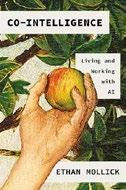
to break into the mainstream business landscape, and workers throughout the corporate hierarchy will need to learn how to effectively use it. Mollick— author of The Unicorn’s Shadow and professor at the Wharton School, where he specializes in innovation and entrepreneurship—focuses on the practical, near-term implications, mixing theory with case studies and his own experience. He emphasizes that AI is a big step beyond simple software, and it can creatively manipulate huge amounts of information to solve problems in almost any field. The paradox is that to interact most effectively with an advanced AI system, a user has to treat it like a human (in some ways) while recognizing that it is still a machine. We must learn “to think together with an alien mind.” Mollick offers useful suggestions for how to approach AI and warns that it has the ability to make stuff up, even if inadvertently. Consequently, human oversight is crucial, especially when ethical decisions are involved. Mollick predicts that the impact of AIs will be felt most keenly by junior members of an organization, allowing them to function like veterans. This is likely to improve overall productivity, but it might devalue the skills of experienced workers. There is also the danger that some workers will become dependent on AI assistance, so managers will have to ensure that AI systems remain tools and not bosses. One way or another, writes the author, there will be a period of disruption and reorganization, so be prepared. Mollick wraps these ideas into an accessible package, aiming mainly at CEOs and managers, but with something to say to anyone in a workplace.
An important road map through the AI labyrinth, written with authority and free of technojargon.
Random House (256 pp.) | $28.00
June 18, 2024 | 9780593448090

An expert in innovation explores the next stage in the AI revolution.
Already performing a myriad of specialized tasks, AI is poised

To read our review of The Unicorn’s Shadow, visit Kirkus online.
The former executive editor of Teen Vogue and Feministing considers the nature of ambition and how corporate feminism sets women up to fail. By the mid-2010s, it seemed that America had entered the “girlboss era,” when ambitious women could finally have it all: wealth, power, relationship fulfillment, and “feminine chic.” Mukhopadhyay, however, argues that “the quest for structural equality and justice asked women to fetishize gender inequality as something you could overcome with quirky personality traits, disarming oppressive men with a twinkle of the eye and a touch on the arm.” As she shows, that brand of feminism did nothing to change the basic structural inequality and injustice in the workplace or the misogyny that undergirds society. When, for example, startup founder Elizabeth Holmes was convicted of criminal wrongdoing, “some felt—despite her company’s egregious lies—that Holmes’s treatment by the industry and the press highlighted an unfair double standard for women founders.” Drawing on both research and her own experiences, Mukhopadhyay shows how the workaholic “hustling” that also goes along with “girlbossing” has helped fuel workplace toxicity, which has led to high rates of burnout and, more recently, “quiet quitting,” an ethic that rejects the professional win-at-all-costs mentality for a “politics of laziness.” What the author argues for instead is that women “channel our ‘hustle’ energy” into organizing the workplace in terms that take into account not only gender, but other factors like race and sexuality. She also asks women to reconsider the “false bill of goods” that capitalism has sold them about what makes for a prosperous life and consider embracing the ethos of “having enough.”
Provocative and intelligent, Mukhopadhyay’s book will appeal to both feminist scholars and working women seeking more humane ways to navigate the sexist, racist, hypercapitalist minefield of the modern workplace.
An incisive study of the current business landscape.
Kirkus Star
Neumeyer, Joy | PublicAffairs (320 pp.)
$32.00 | Aug. 20, 2024 | 9781541702790

A historian recounts her experience with domestic violence and academia, exploring how larger patterns of abuse and misogyny affect whose stories are heard.
Neumeyer moved to Berkeley in 2016 to complete her doctorate in history, but when her romantic relationship with a fellow student turned violent, her education expanded to include learning how to navigate Title IX and what it means to be a survivor of abuse. In this sharp debut memoir, the author expertly weaves together historical abuses of power on a global scale with carefully researched stories of interpersonal violence, allowing her to reflect deeply about—and beyond—her own experiences. She describes her process of coming to understand her story through those she encountered in her research. “Posing us like puppets in an abusive playhouse like any other allows me to put my experience together with my education and capture how it feels when personal and intellectual worlds collide,” she writes. Though Neumeyer remains firmly rooted in her own voice, her work as a historian, with a focus on Russia and Eastern Europe, offers pertinent insights from multiple perspectives and across time. In narrating her personal experience, she presents documentation from the investigation of her case to supplement her memories, yet
she also reminds readers that “we are all imperfect historians of our own pasts whose recollections are colored by our present knowledge and desires.” Despite the deeply personal nature of the author’s subject, her intricate narrative spirals out from herself to examine Russia’s war against Ukraine and Trump’s changes to Title IX processes, among other timely events. This is a book for all readers, though survivors of domestic violence or sexual assault will find particular richness in Neumeyer’s compelling first book. A smart, powerful memoir gives a fresh perspective on what it means to be a survivor.
Nussbaum, Emily | Random House (464 pp.) $30.00 | June 25, 2024 | 9780525508991
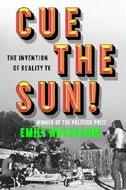
A Pulitzer Prize–winning critic chronicles the history of reality TV. In 2003, when New Yorker staff writer Nussbaum, author of I Like To Watch, first pitched her idea to write a book about “a hot new pop-culture genre,” her friend told her that she “‘better write that one fast’….Reality television was a fad, he told me—a bubble that would pop before I could get anything on the page.” Yet, as her entertaining narrative proves, reality programming existed long before 2000—and will continue for years to come. Nussbaum begins her examination with a behind-thescenes look at reality radio shows such as A.L. Alexander’s Goodwill Court, a predecessor to courtroom dramas like The People’s Court; Candid Microphone, the prank-show forerunner to Candid Camera; and Queen for a Day, which the author describes as “The Bachelor crossed with GoFundMe.” Nussbaum then draws parallels between An American Family, one of the first shows to document a loving relationship between a mother and her gay son, and The Real World, the MTV program that introduced the world to queer Cuban American AIDS activist
Pedro Zamora. The author also uncovers a variety of disturbing little-known facts. For example, she reports that the first man featured on Who Wants to Marry a Millionaire? not only barely qualified as a millionaire, but also participated in the show after an ex-fiancee filed a restraining order against him. Nussbaum brings her critical, compassionate, practiced eye to a subject that she infuses with the intensity recognizable to readers of her previous book and her work at the New Yorker. She is adept at drawing connections among pop-culture trends and painting big personalities with a broad stroke—though the text is sometimes overly detailed, which contributes to its prodigious length. A thoughtful and comprehensive history of a TV genre that shows no signs of disappearing.
Pappas, Theodore | Harper Celebrate (256 pp.) | $24.99 Aug. 20, 2024 | 9781400246151

A talented writer presents a uniquely entertaining and edifying cultural history of the U.S. presidency via hair. Long before Donald Trump entered politics, Christopher Hitchens said of one of the future president’s signature characteristics: “He’s managed to cover 90 percent of his head with 30 percent of his hair.” The hair of U.S. presidents, their wives, and other significant figures in American history is the subject of this wonderful book by Pappas, who has been the executive editor of Encyclopaedia Britannica for 25 years. While some of the stories the author includes are well known to even casual students of presidential history—why Abraham Lincoln decided to grow a beard, and a recounting of Bill Clinton’s controversial haircut—most are novel and enhanced by the author’s style and tone, which demonstrate that he had as much
fun researching and writing the book as readers will reading it. Pappas is terrific in his examinations of the talismanic qualities of hair in history—e.g., a vignette about Lincoln’s secretary John Hay’s gifting of the locks of Lincoln and George Washington to a trio of presidents. Additionally, Pappas takes a look at how DNA has figured into the lives and histories of various presidents, including the extracurricular activities of Clinton and Thomas Jefferson. As for Hair, Pappas covers the spectrum, from the sublimely absurd intrigue involving the hair of one of John F. Kennedy’s nemeses to the poignant story of whether the harrowing loss of a child turned Barbara Bush’s hair prematurely gray. The book is richly adorned with color photographs and illustrations, and insightful and amusing sidebars—e.g., did James Buchanan’s hairline have something do with the possible asexuality of the only bachelor president?—accentuate the lively text. The delightful snippets of presidential and U.S. history that Pappas has assembled in this engaging book entertain and inform. A thoroughly fun read for a wide audience.
Pearlman, Wendy | Liveright/Norton (288 pp.)
$28.99 | July 9, 2024 | 9781324092230
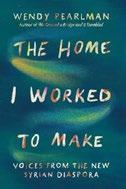
A collection of interviews with Syrian refugees about their conceptions of home. When Pearlman, author of We Crossed a Bridge and It Trembled, began interviewing Syrian refugees in 2011, she thought she was going to write about the Arab Spring. When the theme of home emerged from her conversations with more than 500 participants, she began to seek deeper truths. “Commentators have analyzed the Syrian war through lenses such as protest, violence, geopolitics, sectarianism, extremism, and refugee crisis,” she writes.
“Fewer have considered what Syrians’ extraordinary experiences can teach us about something so commonplace that it touches every human life: home.” Pearlman’s inquiry leads to a set of stunningly diverse stories that paint a picture of not only the traumatic displacement of the Syrian diaspora, but also the profundity with which Syrians approach their exile from their country. In one story, a gay refugee defines home as a place where he can be himself. After a rocky start in Trogen, Germany, one refugee’s insistence on being helpful to his new community resulted in a loving relationship with a German woman who insisted that he call her “Oma,” the German word for grandmother. In Turkey, a devastating earthquake helped a Syrian Australian man realize the depth of care he could expect from his newfound Australian community. In another moving story, a doctor chronicles a life-changing experience in Khartoum, Sudan, that reconnected her with her faith. Pearlman weaves these tales together beautifully, artfully teasing out their commonalities, complexities, and contradictions. No matter how dark the content, the author effectively centers the voices of refugees, drawing unexpected and incisive conclusions from her rich data. Pearlman includes a detailed chronology that runs up to August 2023.
A stunningly curated text that “strikes at the core of what it means to exist as a person in the world.”
Popper, Nathaniel | Dey Street/ HarperCollins (352 pp.) | $32.50 June 11, 2024 | 9780063205864

A sidelong though revealing look at the odd “laddish” subculture that has fueled private Wall Street trading for the last few years. Whereas Ben Mezrich’s The Antisocial Network
and Spencer Jakab’s The Revolution That Wasn’t were straightforward takes on the GameStop meltdown, former New York Times finance and technology reporter Popper, author of Digital Gold , is more interested in some of the subthemes behind the debacle. Though he pays attention to the bigger picture, he is especially good in his portraits of the little actors whose interactions turned disastrous—and even dangerous. At the center of the narrative is WallStreetBets, an online forum that “fed into a whole universe of lonely, often mistrustful young men.” The community arose at a time when many young men decided that they were just aggrieved enough to become vocal Trump supporters, some diving headlong into QAnon and 4chan, most venting at some point or another about the unfair economic cards they’d been handed after the recession of 2008. In the process, Popper writes, WallStreetBets and its founders remade the small-investment landscape: Whereas $21 billion came onto the table through amateur traders in 2019, four years later, that figure was $118 billion. Much of the side-bet activity centered on cryptocurrency. However, as a survey conducted by Charles Schwab revealed, those young investors “started with the goal of notching short-term wins but were learning from their mistakes and focusing more on long-term investing,” democratizing the market with fresh blood and money. Popper’s account is densely detailed on both the financial and technical fronts—aspiring investors will learn some valuable information—but the author never loses focus on the people involved, however disaffected and conflicted. A look inside what one investing whiz kid called a Pandora’s box—one that, Popper makes clear, won’t soon be closed.
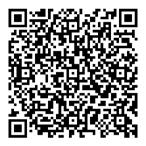
To read our review of We Crossed a Bridge and It Trembled, visit Kirkus online.


 By Ferris Jabr
By Clayton Page Aldern
By Ferris Jabr
By Clayton Page Aldern

 Zoë Schlanger
By Carl Elliott
Dante S. Lauretta
Zoë Schlanger
By Carl Elliott
Dante S. Lauretta
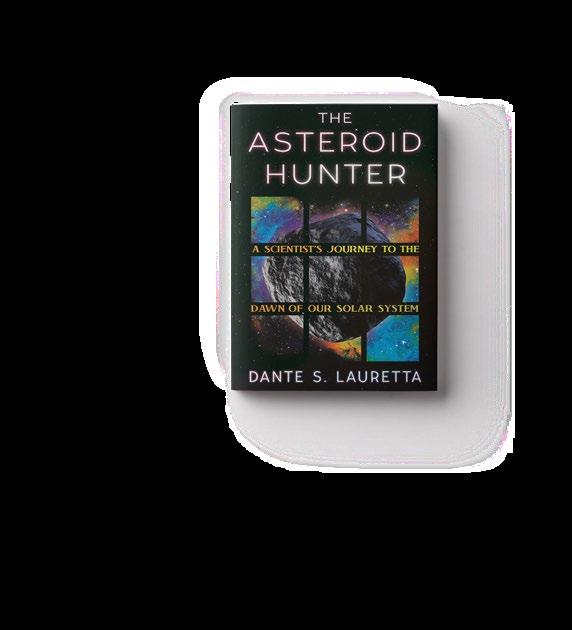


Rankine, Claudia | Graywolf (176 pp.)
$20.00 paper | July 9, 2024 | 9781644452554
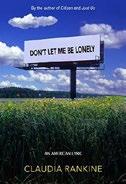
A 20th-anniversary reissue of Rankine’s 2004 reckoning with post-9/11 America. In her introduction to this new edition, the author frames her prose-poems as the first panel of a triptych completed by Citizen and Just Us —altogether, a cleareyed but plainly infuriated study of American injustice. Revisiting it now is a reminder of how much we are still living with the tragedies of the past 20 years. Rankine’s subjects include James Byrd Jr., the Black man brutally murdered by three White men who dragged him behind their pickup; Amadou Diallo, shot 41 times by New York police; the ever-expanding world of big pharma; domestic terrorist Timothy McVeigh; strife between Israel and Palestine; viral diseases like SARS; and 9/11, especially then–New York City mayor Rudolph Giuliani’s flag-waving response to it. Throughout, as she writes in the introduction, her goal was to wrestle with the assertion “that politics have no place in poems,” a posture she calls “self-erasure.” Her approach to these issues can be intimate, as Rankine shares her personal medical history and contemplates her anxiety over the state of the world and struggle to connect with it. But her chief rhetorical mode is declamatory: The author suggests that many of our current political divides are a function of our collectively talking past each other, unwilling to address the racial and political challenges Americans face. “It strikes me that what the attack on the World Trade Center stole from us is our willingness to be complex,” she writes. “Or what the attack on the World Trade Center revealed to us is that we were never complex.” The lyricism the subtitle refers to speaks to the fluidity of her subjects as well as the elegiac tone she brings to each one. The topics have changed, but the struggle Rankine provocatively outlines is grimly persistent.
Rocca, Mo & Jonathan Greenberg
Simon & Schuster (384 pp.) | $28.99 June 11, 2024 | 9781668052501

A celebration of legends who never let old age get the best of them.
In the style of Mobituaries, Rocca’s 2019 encyclopedia of underappreciated greats, this book presents the stories of people who did their best work in their golden years. With assistance from Greenberg, Rocca profiles a wide range of subjects with accomplishments that are just as varied as their biographies. Among them are Harland David Sanders, who started what would become a “Kentucky-fried empire” at 66; Kenneth Felts, who virally came out of the closet at age 90; and Snowman the horse, who, at age 10, became an award-winning show jumper and was later inducted into the Show Jumping Hall of Fame. “One thing everyone in this book has in common: a belief that late life is no time to surrender,” writes Rocca. While the author covers many familiar names, such as Morgan Freeman, Frank Lloyd Wright, and Carl Reiner, his definition of extraordinary goes beyond popular recognition. Rocca dedicates chapters to war veterans of advanced age and women who experience renewed vigor in widowhood. Such is the charm of Rocca’s latest compilation, which demonstrates the importance of passion and resilience at all stages of life, even the latter years. It’s fitting that the book ends with the fictional character Ebenezer Scrooge, whose late-in-life victory was simply becoming a better person. “In fact,” writes Rocca, “you could say the whole reason Scrooge exists is to help us understand this simple, straightforward point: that it’s never too late to change.” It is because of reminders like this that readers of all ages and backgrounds can find inspiration in these pages, which also include the accomplishments of Rita Moreno, Frank McCourt, Henri Matisse, Brian May, and Diana Nyad.
A fun collection of stories that give a heartening perspective on living life to the fullest.
Rohde, David | Norton (304 pp.)
$29.99 | Aug. 27, 2024 | 9780393881967

A meticulous chronicle of the excruciating details of the battles between the Trump presidency and the Department of Justice. In a hard-hitting book characterized by careful research and documentation, two-time Pulitzer winner Rohde, author of In Deep and Endgame, delineates how the Trump White House violated well-established post-Watergate norms about judicial conduct, upending and devaluing the work of the DOJ. The trajectory of the successful attempts to sway judicial philosophy started in the first week of Trump’s presidency, as he instituted the Muslim travel ban, an executive decision that went straight to the courts. Subsequently, the new attorney general, Jeff Sessions, a Trump loyalist—caught lying about meeting a Russian ambassador when he was running Trump’s campaign—recused himself from running the investigation into Russian interference, a monumental decision that would lead to Trump turning against him. After Trump fired FBI director James Comey, deputy AG Rod Rosenstein felt compelled to choose the highly revered former FBI director Robert Mueller to run the special counsel on Russia. However, Trump’s repeated attacks on the department and its officials weakened the ability of the special counsel team to make its case to the public. Moreover, the new AG, William Barr, publicly misrepresented Mueller’s conclusion two years later as proving there was “no collusion” with the Russians, when Mueller’s report was actually more damning. The new
scandals over the phone call with Volodymyr Zelensky, along with the investigation into Hunter Biden and the commuting of Roger Stone and Michael Flynn’s sentences, all resulted in “myriad Justice Department and post-Watergate norms…shredded by Trump and Barr with seemingly little political consequence.” The resulting situation, Rohde argues convincingly, cannot be rectified by the cautious proceedings of Biden’s AG, Merrick Garland.
A cautionary, relevant study of systematic executive bullying that has cast deep skepticism on law enforcement in America.
Rus, Daniela & Gregory Mone Norton (256 pp.) | $29.99 Aug. 6, 2024 | 9781324079323

An overview of the current and prospective benefits and perils of utilizing AI. Rus, a roboticist and the first female director of MIT’s Computer Science and Artificial Intelligence Laboratory, and Mone follow up their first collaboration, The Heart and the Chip, by digging into the artificial brains inside the machines. The authors divide the book into three parts—“Powers,” “Fundamentals,” and “Stewardship”—and chapters bear concise, literal titles like “Speed,” “Generating,” and “Optimizing”; the longest is “Will AI Steal Your Job?”
Accessible to a broad readership, that narrative delves into examples of how “we should think about making use of AI to accelerate processes in all areas of discovery, work, and life.” These areas include science, manufacturing, logistics, inventory management, transportation, and other industries, as well as in the home and in artistic contexts. “We should all think about using AI as a tool,” write the authors, “that can help us dig deeper, reach further, and imagine more boldly across all fields.” They point to
This equitable work offers something for both AI enthusiasts and skeptics.
THE MIND’S MIRROR
ways in which AI can help synthesize raw data into useful knowledge. “It’s what we do with this information, and what ideas we generate from it, that really matters,” the authors write. “What we really want is to turn this knowledge into insight.” Citing numerous studies, they describe techniques for improving insight- and foresight-generating AI engines. Additionally, they present criticisms of the flaws, including vulnerability to hackers. One suggested protective measure is data distillation, which identifies common features of data and creates a new data set modeled on those patterns. To apply AI’s potential to a wide audience, the authors conclude, repeatedly, that people are more necessary than ever. Though the authors work in a highly technical field, they do an excellent job of speaking to nontechnical audiences.
This equitable work offers something for both AI enthusiasts and skeptics.
Rushdie, Salman | Random House (256 pp.) $28.00 | April 16, 2024 | 9781039009653

The noted author recounts the vicious August 2022 assault that nearly ended his life.
“To be born again…first you have to die.” So speaks the protagonist at the opening of Rushdie’s infamous novel The Satanic Verses, which has brought him so much trouble over the years. The alleged perpetrator of the 2022 attack, whom the author calls “the
A”—it stands for many things, including Assassin and Assailant —was unfamiliar with the contents of the book, so that “we can deduce that, whatever the attack was about, it wasn’t about The Satanic Verses.” Ironically, the knife assault, which cost Rushdie the use of an eye and a hand, came at a conference devoted to “the importance of keeping writers safe from harm.” Indeed, the audience saved him, restraining the attacker. For Rushdie, that moment speaks to the “worst and best of human nature,” the urge to harm and the urge to protect acted out at once. The author’s account is seldom harrowing. Instead, he writes with calm assurance about long weeks in the hospital—and, “because you have no alternative,” the poking and prodding that come with it. He affectingly evokes the accompanying emotions, including the psychic emptiness that comes in the presence of death, which did not shake him from his atheism: “My godlessness remains intact. That isn’t going to change in this second-chance life.” What sustained him in recovery, he writes, was a blend of willpower, good medical attention, and, especially, love found late in life after years of living alone.
Addressing “the A” in absentia at several points, he comes close to taunting. Art survives the artist even as his alleged attacker, locked in prison, will soon be irrelevant to the world; in this instance, the artist survives, too: “After the angel of death, the angel of life.”
A graceful meditation on life and death that captures Rushdie at his most observant and lyrical.

Schillinger, Dean-David | PublicAffairs (352 pp.)
$32.00 | July 16, 2024 | 9781541704206

A family doctor describes a powerful healing technique. Schillinger, professor of primary care and health policy at the University of California San Francisco, joins many colleagues who deplore today’s technology-heavy, medication-oriented health care system, which often isolates patients from doctors and contributes to treatment failures. He reminds readers that it’s been proved that the greatest source of information for doctors is not a test or machine, but what a patient tells them. He illustrates his approach with a steady stream of stories from his years of training at San Francisco General Hospital and practice at the UCSF Center for Vulnerable Populations, which he co-founded. Examining the monumental struggles of marginalized communities, he makes a painfully convincing case that the present system guarantees that the poor get sicker, receive less care, and die sooner. The author’s stories are consistently illuminating: A man unable to walk reveals that he is an alcoholic and has lain unconscious for such long periods that his leg muscles have withered. A “frequent flyer” patient with scores of visits for problems stemming from her drug addiction, complicated by an obnoxious personality, appears 20 years later, drug-free and raising a child, grateful to the author and a few others who were kind to her. Schillinger devotes much of his text to diabetes, a public
health problem as serious as those caused by tobacco. His campaign to place a warning label on sugared soft drinks, essentially liquid candy, faced an uphill battle. However, as the author writes, he knew that “to declare and wage a war against diabetes, I needed to separate from a bureaucracy currently paralyzed by conflicts of interests and politics, and pursue an alternative strategy.” In this often inspiring book, he shows readers a variety of “alternative” strategies that benefit public health. Vivid medical anecdotes with occasional happy endings.
Schwartz, Theodore H. | Dutton (512 pp.)
$32.00 | Aug. 13, 2024 | 9780593474105
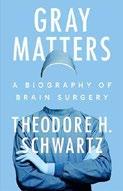
An informative study of modern brain surgery. Schwartz, a leading neurosurgeon and professor of minimally invasive neurosurgery at Weill Cornell Medicine, traces the turbulent history of his field, from the days when the chances of survival from an operation were poor to recent significant breakthroughs. Neurosurgery was one of the last areas of medicine to develop, beginning in the late 1800s, simply because of the inherent difficulty of working with the brain and the inadequacy of the available tools. For a long time, the only way to reach the brain was to break the skull, a process that could easily do more harm than good. Eventually, the discipline progressed, as scientists and doctors increased their
Schwartz provides a remarkable account of a crucial but misunderstood field.
GRAY MATTERS
understanding of the functions and parts of the brain and how to manipulate them effectively. Schwartz’s career has stretched from the days of boring holes through bone to noninvasive entry methods, such as through the nasal cavity, a technique he pioneered. Brain surgery often takes many hours, and every surgeon, writes the author, has lost patients. You must accept it and move on, but it never gets easier. Much of neurosurgery deals with head traumas caused by falls, collisions, or violence. Schwartz has worked on many such cases, but his specialty is removing tumors in the difficult areas at the bottom of the brain. With improvements like microscopic cameras, MRIs, and endoscopic tools, the success rate has dramatically improved. Schwartz provides anecdotes and case studies to give the story a human dimension, and he notes that surgery to address even strokes and Parkinson’s disease is becoming possible. While parts of the text are inevitably technical, the author is warm and insightful, making the book accessible to general readers as well as specialists. Mixing expertise with storytelling, Schwartz provides a remarkable account of a crucial but misunderstood field.
Shane, Charlotte | Simon & Schuster (192 pp.)
$25.99 | Aug. 13, 2024 | 9781982126865

Shane invites readers into the bedroom to examine love and sexuality on a personal and universal scale, from her unique point of view as a sex worker. In her 20s, the author began actively pursuing sex work, allowing herself to start to explore her curiosity about men and sexuality. In this memoir, she investigates the complex and often convoluted way in which sex is used as a currency in our personal and professional relationships. Early on, she writes, “my wildest dreams involved getting paid for
Kirkus Starbeing desirable because payment concretized validation….I reasoned that if I were accepted into environments where women were expected to be sexy…there must be a seed of sexiness somewhere in me.” With humor and wit, Shane openly shares tales of intimate client interactions. Astute in her social critiques, the author demonstrates her intuitive understanding of how people can build more fulfilling relationships with one another. She even shares conversations with her father about his separation from her mother. “I was the older child, and that may have played a role in my selection, but it seems to me that my father did what he did because I was female,” she writes. “If he needed care, I should have been the one to provide it because regardless of age, women are designated emotional custodians. He sought reassurance, not connection, in my pliability. His authority exerted pressure to make me stay put and listen, and I saw my father’s weakness in those moments—his vulnerability, his dishonesty, and his delusions.” As many girls do, Shane grew up being told that men’s feelings were more important than her own. However, through her sex work, rigorous self-reflection, and variety of experiences with men and women, she has found her voice—and it’s funny, authentic, and unequivocally honest. A graceful and candid look into sex, intimacy, misogyny, and identity.
Sonnevend, Julia | Princeton Univ. (216 pp.)
$26.95 | Aug. 20, 2024 | 9780691230337

A professor of sociology and communications examines how contemporary world leaders have used—and exploited—personal charm for political ends. In today’s political landscape, individual politicians, rather than institutions and organizations, garner the lion’s share of public attention and trust. Sonnevend,
author of Stories Without Borders, argues that this development has transformed politics into “a site of performance.” As a result, personal charm—“personal magnetism that rests on proximity to political ‘tribes’”—has become an increasingly important political tool. Like the social media platforms modern politicians use to communicate with their audiences, charm can build enduring public images for leaders and their countries. The author suggests that former New Zealand Prime Minister Jacinda Ardern’s informal mother-and-baby Facebook videos, for example, were carefully crafted to promote a relatable image of an ordinary mother who also happened to be the leader of a caring, democratic nation. Sonnevend shows how similar authenticity-creating tactics have also helped populist-autocratic leaders like Hungarian Prime Minister Viktor Orbán. Social media images celebrating Hungarian traditions and his own fatherly protectiveness have helped him maintain extraordinarily high levels of popularity among the masses, despite controversial stances on immigration, gender rights, and other issues. At the same time, the gentle seductions of charm can also be strategically “weaponized” by those perceived as threatening for short-term political goals. Sonnevend points to the example of Iranian foreign minister Mohammad Zarif, who, to defuse long-standing tensions between the U.S. and Iran, performed “visible signs of geniality or warmth in public diplomatic settings” throughout the 2015 American-Iranian nuclear deal negotiations. Pertinent and well researched, this book will be of particular interest to those with an interest in global politics, as well as readers seeking to understand what Sonnevend calls the new “era of direct and reciprocal verbal and visual communications between leaders and their audiences.”
Timely, illuminating reading.
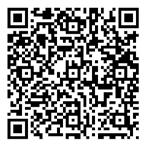
Steinzor, Rena | Stanford Univ. (344 pp.)
$32.00 | July 9, 2024 | 9781503634596

A sobering look at the forces attacking the current stability of American democracy.
Steinzor, a law professor and the author of Why Not Jail? Industrial Catastrophes, Corporate Malfeasance, and Government Inaction, argues convincingly that what she calls “the six”—i.e., the major far-right groups battering the U.S. government over the last few decades— did not rise from the grassroots level, but were “pushed, top-down, by private-sector special interest groups.” These include “big business; the Tea Party and the Freedom Caucus, its descendant in the House of Representatives; the Federalist Society; Fox News; white evangelicals; and militia members.” While all of these groups have garnered national attention for years, the author examines each in depth and elucidates their shared priorities: power, money, influence, and a determination to peck away at the “size and power of the administrative state, especially agencies that protect public health, worker and consumer safety, and the environment.” Many of these agencies formed in the early 1970s during the Nixon administration and have since been diminished and defunded. During the Reagan era, corporations were empowered to combat the rules of regulations, especially at the Environmental Protection Agency. It got far worse during the Trump administration, when officials attempted to overturn car emission and other standards. The Tea Party was opposed to big government and regulation, the society safety net, and immigration, all issues taken up by the Freedom Caucus. The Federalist Society has essentially aided Republican presidents in choosing the conservative justices on the Supreme Court and elsewhere. Fox News amplifies the far-right talking points, while the white evangelicals and militia direct,
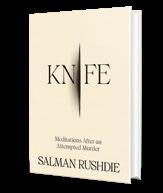
Salman Rushdie Talks New Memoir on
Knife recounts the 2022 attack that nearly killed the author.
Salman Rushdie talked about the attack that nearly killed him—and his new memoir about the incident, Knife —on 60 Minutes. (See a review of the book on p. 81.)
Rushdie is the acclaimed author of books including Midnight’s Children and The Satanic Verses ; the latter led to a fatwa against him by Iran’s Ayatollah Khomeini in 1989. Rushdie was

stabbed multiple times in 2022 while on stage for an event in Chautauqua, New York.
The attack cost him the vision in one eye and the use of one hand. Hadi Matar was arrested in connection with the stabbing and has pleaded not guilty to assault and attempted murder.
On 60 Minutes, Rushdie read an excerpt from his memoir, describing the seconds before his stabbing: “[My] first thought when I saw this murderous shape rushing towards me was, So it’s you. Here you are.”
“It’s like you’ve been waiting for it,” said 60 Minutes correspondent Anderson Cooper.
“Yeah, that’s what it felt like,” Rushdie said.
In a dramatic moment, Cooper noted that the attack lasted 27 seconds, using his cellphone to count down that period of time, as he and Rushdie sat in silence.
“That’s quite a long time,” Rushdie said after the time had elapsed. “That’s the extraordinary half minute of intimacy in which life meets death.”—M.S.
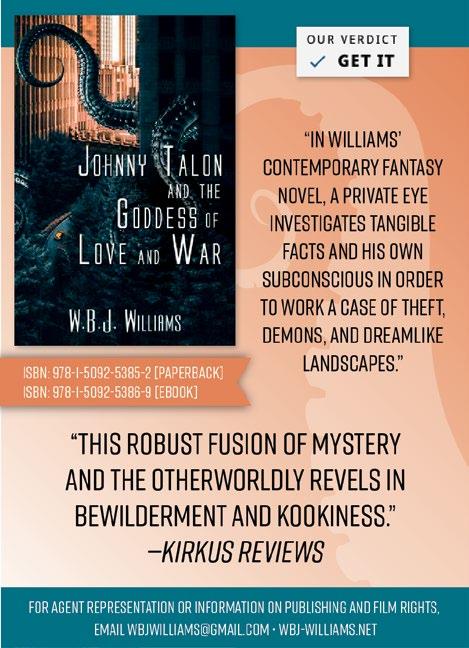


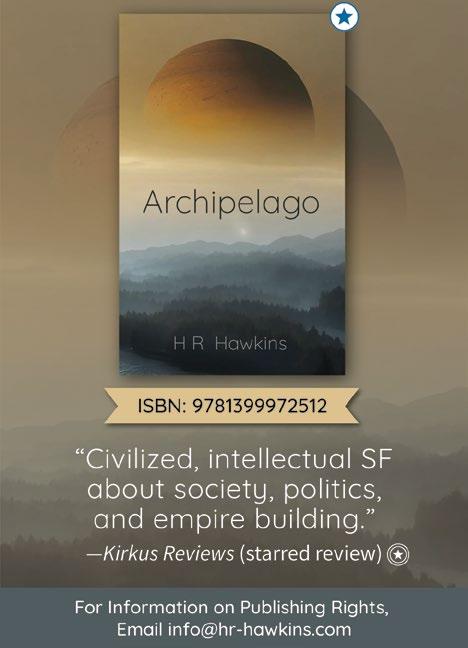

The author was a pioneering figure in the New Atheism movement.
Daniel C. Dennett, the author and philosopher known for his work on cognitive science and for his vehement atheism, has died at 82, the New York Times reports.
Dennett, a Boston native, was educated at Harvard University and the University of Oxford and taught for many years at the University of California, Irvine, and Tufts University. He made his literary debut in 1969 with Content and Consciousness ; several more books would follow, including Brainstorms , Consciousness Explained , Darwin’s Dangerous Idea , and Breaking the Spell . Dennett was a pioneer of the New Atheism movement,

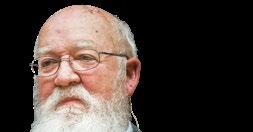

which urged adherents to challenge religious orthodoxy in public life. In 2019, he co-authored a book, The Four Horsemen , with three other New Atheism figures, Christopher Hitchens, Richard Dawkins, and Sam Harris. His most recent book, I’ve Been Thinking , was published last October. In a starred review, a critic for Kirkus called it “a delightful memoir from one of our deepest thinkers.”
Dennett’s admirers paid tribute to him on social media. On X, formerly known as Twitter, social scientist David Pinsof wrote, “RIP Daniel Dennett. He was the best kind of philosopher—empirically-minded, skeptical of ‘intuition pumps,’ and eminently readable. His idea of Darwinism as a ‘universal acid,’ a substance that eats through everything, has been deeply influential on me.”—M.S.
often violently, the actions of their extremist leaders. The author concludes with an assessment of the failure of the left to combat these forces. A pertinent scholarly work that highlights a host of significant obstacles to a smooth-functioning democracy.
Story, Louise & Ebony Reed
Harper/HarperCollins (464 pp.)
$32.00 | June 18, 2024 | 9780063234727

An eye-opening look at how the wealth gap between Black Americans and the white majority grows ever wider. Reporting largely from the Atlanta area, veteran investigative journalists Story and Reed focus closely, but not solely, on Black millennials and the challenges they face in building wealth. The impediments to their success are many, and most have been deeply entrenched for decades. The Black-white wealth gap began, of course, with enslavement and the unpaid labor it entailed, but it persisted long after. As the authors show, the benefits of the New Deal did not often extend into Black communities, and the service of millions of Black men and women in the military did not translate into the equal application of the GI Bill, one great flaw of which “was that the VA offered housing assistance but made no requirements that players in the housing market treat Black buyers equally.” In Atlanta, an epicenter of Black American culture and commerce, the banking and housing systems are still biased against Black borrowers and mortgage holders. Ironically, the authors write, one purported remedy was the formation, thanks to Andrew Young and other civic leaders, of a homegrown Black bank; the irony comes with their steady discovery of how much of the money flows into white hands and how many of the principals within the bank are outsiders. Efforts to buy locally and from
Black producers ended with one activist’s discovering that “there was nothing in his fridge he could eat, no vehicles he could drive, and not even weed he could smoke.”
In the end, by the authors’ calculus, the 15 cents of the title isn’t hyperbolic: A gap already known to be vast takes on the contours of the Grand Canyon. An important book that should inform conversations about equity at every level.
Su, Adrienne | Paul Dry Books (238 pp.) | $19.95 paper Aug. 6, 2024 | 9781589881921

A poet and creative writing professor gathers a cross-genre, cooking-inspired collection of her writing from the last 30 years.
Atlanta native and food lover Su, author of Peach State and Living Quarters, selected these essays to represent “the conversational, ‘prose’ side of my body of work so far,” offering valuable context to her poetry and life. In the first of five sections, the author explores the impact of her Asian heritage. In the wider context of her Southern upbringing, it helped to inform the enthusiastically “omnivorous” cultural and culinary sensibility that embraced mashed potatoes alongside her Chinese parents’ beloved Fuzhou-style cuisine. She also pays tribute to the love of cooking that in an “alternate universe” might have led to a career as a food writer. Indeed, later essays, particularly those in the fourth section, “Sustenance, Culinary and Literary,” reveal how cooking and food still influence her perception of her work. The order suggested by poetic forms like the sonnet, for example, inevitably reminds Su of the order she seeks in her kitchen and especially her cooking. In the essay “You Are What You Read,” she suggests that the children’s books people “consume” can produce stereotypical thinking about race and ethnicity. Su’s wide-ranging interests as a writer unafraid of mingling flavors are evident throughout
the book. While many of the pieces are personal, some celebrate mentors or beloved poet-friends or engage in critical analysis of poetry by such poets as Su’s former classmate Claire Kageyama-Ramakrishnan. Still others take the form of interviews Su has done with a variety of publications, including the New England Review and the Best American Poetry blog. Seasoned with a dash of her meticulously crafted poetry and even a recipe, this collection celebrates words, culture, food, and the human act of making that binds them all together. A literary gourmand’s delight.
Tatel, David S. | Little, Brown (352 pp.) $32.00 | June 11, 2024 | 9780316542029

A distinguished jurist recounts a lifetime of trials in and out of the courtroom. Dispense with the bit about justice being blind. Tatel, who has been blind for most of his legal career as a result of a degenerative retinal disease, has heard it all. Regarding that fact, he dedicates a bit of hard-won advice: “Don’t deny your challenges, embrace them.” The author’s principal challenges came in two forms: his growing blindness, first diagnosed when he was still in high school, and many years of trying to hide that blindness from colleagues and students, fearing that it would harm his career. By the time Bill Clinton appointed him to the Washington, D.C., circuit court, Tatel was well established; he had worked for years in corporate law while devoting countless pro bono hours to civil rights issues in the 1960s and beyond. “Despite my best efforts, my blindness had become part of the narrative,” writes the author, although he had long since learned to accommodate that blindness through a combination of technological aides (a Braille computer, for instance) and a powerful memory. Although his memoir is both affecting and inspiring, of particular interest to readers of a legal bent
are Tatel’s well-informed criticism of the current Supreme Court’s conservative majority for its steady diminishment of voting rights and dismemberment of various provisions of the Voting Rights Act. A committed liberal, the author notes that the current Court’s insistence that the states enjoy “equal sovereignty” is an anachronism that the Constitution does not support, “invented, recently, not for principled reasons, but to produce the Court’s preferred outcomes.” He urges readers to remedy an ideologically corrupt Court by voting for legislators willing to fight for civil rights and other causes. A provocative, well-written pleasure for students of contemporary jurisprudence.
Kirkus StarTwilley, Nicola | Penguin Press (400 pp.)
$30.00 | June 25, 2024 | 9780735223288

An oddly fascinating look at the world of refrigeration. A chef may speak knowingly about every piece of food brought from farm and garden to table, writes New Yorker contributor Twilley, but may well draw a blank on details of the supply chain in between. The “missing middle,” she writes, is “a black box whose mysterious internal workings allow perishable food to conquer the constraints of both time and space.” If you want elucidation on those mysterious innards, Twilley has got you covered. In an account packed with accessibly delivered technical and historical detail, she explains the long quest to discover and develop the physical bases of cooling. Much of the food we eat in the U.S. arrives courtesy of refrigeration, an infrastructure that, Twilley estimates, amounts to 5.5 billion cubic feet of cooled space, “a third polar region of sorts.” We’ve come a long way from the
ice caves of our distant ancestors—a long way even from the days of George Washington, who complained that the large haul of ice that he’d stowed away in his icehouse was completely gone by midsummer. Twilley’s book is a delightful mine of meaningful trivia: One learns from her pages, for instance, why pizza and ice cream are shipped separately and why baked goods are cooled gradually (because, as a cold storage warehouse manager told her, “bread will crystallize if it’s cooled too fast”). Throughout, the author’s historical reach traverses seemingly effortlessly from the Roman Empire to 19th-century America, when refrigeration essentially remade the livestock economy by allowing cattle to be raised on distant ranches in the West and their meat to be shipped east—“contributing,” she adds, “to the ongoing displacement of Native Americans and the near-extinction of the bison upon which they had depended.”
A literate treat for tech- and history-inclined foodies.
VanDeMark, Brian | Norton (416 pp.)
$35.00 | Aug. 13, 2024 | 9781324066255

A masterful chronicle of the political and cultural divide of the 1960s that culminated in one of the darkest days in U.S. history.
In this follow-up to The Road to Disaster, his fresh history of the Vietnam War, VanDeMark—who teaches history at the U.S. Naval Academy and co-authored Robert McNamara’s Vietnam memoir—delivers the definitive book about the atrocity that took place at Kent State in early May 1970, when bullets from the guns of the frightened and thoroughly unprepared Ohio National Guard killed and wounded students protesting the war. Few authors have managed to capture the enormous
scope and all angles of the political, cultural, and social divide among the citizenry, the counsels of government, and college campuses caused by the war and social unrest of the 1960s. VanDeMark’s thorough, balanced, and nuanced reporting, extensive quotes from scores of principals, and vivid, absorbing prose will stay with readers for a long time. He profiles several individuals and families whose lives were shattered by the bullets, details the political and practical considerations of law and order taken by Ohio’s then-governor and those in command of the Ohio National Guard, and thoroughly analyzes the civil and criminal cases that followed. He even shows how merely attempting to commemorate the events of May 1970 generated controversy and polarization: “Two decades passed before an official memorial to the slain students was erected on the Kent State campus in 1990.”
VanDeMark fully captures the tenor of the times in a book that will appeal to an audience ranging from seasoned historians to younger readers who are unfamiliar with the tragedy. Positive reviews sometimes claim that a book is important for a certain field of study, genre, or aficionado. That is not the case here; this book is simply required reading. VanDeMark’s top-notch book embodies the term must-read.
Van Duyne, Emily | Norton (352 pp.) $27.99 | July 9, 2024 | 9781324006978

A new look at a famed poet. Van Duyne, a professor of writing, makes a thoughtful book debut with a revisionist take on “the life, death, and literary afterlife” of Sylvia Plath (1932-1963). She contends that “selective editing and censorship” by Plath’s husband, poet Ted Hughes, and his sister Olwyn, resulted in a “thorough pathologizing of Plath’s creativity” by portraying her as obsessed with a “poetic death wish,”
INTERRUPTING VIOLENCE
a conclusion repeated by critics such as Al Alvarez and George Steiner. Van Duyne considers published and unpublished biographical sources; Plath’s poems, especially the marriage poems that Hughes excised from Ariel; and feminist analytic philosophy to support her assertion that Plath suffered from, and was undermined by, Hughes’ abuse. As a survivor of intimate partner violence, Van Duyne is particularly sensitive to evidence of repeated instances of marital cruelty in Plath’s writing, and she cites studies connecting intimate partner violence and suicide. Rather than being “a stabilizing factor” in Plath’s life, Hughes was manipulative, brutish, and unfaithful, behavior he repeated in his relationship with his lover Assia Wevill. He sent the emotionally fragile Wevill “a ten-point list of directives” for what to wear and cook and how to speak, denigrating her appearance and her accent and reimagining her in his poems as a “monstrous mother.” In 1969, Wevill killed herself and their 4-year-old daughter, after which “Hughes began a campaign to obscure, and then erase, Wevill’s existence from memory.” Van Duyne is forthright about her love for Plath: “She is part of every single thing I’ve been and done,” she writes. Although Plath devotees have been characterized as “extremist, suicidally depressed, hysterical, angry or misandrist”—or just emotional teenagers—Van Duyne sees Plath as a continual inspiration. She surely conveys her admiration in this book.
A fresh melding of scholarly investigation and personal reflection.

For more on urban violence, visit Kirkus online.
Way, Niobe | Dutton (336 pp.) |$30.00 July 9, 2024 | 9780593184264
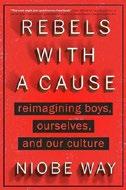
The importance of nurturing connection in boys. Way, a professor of developmental psychology and the author of Deep Secrets, draws on considerable research, including her own longitudinal studies into the lives of boys, to show how society’s construction of “boy culture” undermines their well-being. That culture, she writes, “is rooted in ideologies that intersect with one another, including but not limited to patriarchy, capitalism, white supremacy, antisemitism, and Islamophobia.” As boys grow up, they learn that “soft” qualities, such as “vulnerability, dependency, sensitivity, feeling,” are associated with the feminine, while “stoicism, independence, assertiveness, thinking” are considered male. The author shows how this insistent binary gets in the way of fulfilling friendships. The early- to mid-adolescent boys she studied valued friendships, which were characterized by trust and involved sharing secrets and problems. However, by late adolescence, holding onto or finding male friends became a struggle. Although boys know that friendships are crucial for their mental health, they are indoctrinated into believing that “it’s not ‘normal’ for boys to want or have such relationships,” and they learn that showing emotion is considered unmanly. Boys at this stage, writes the author, become
increasingly isolated, depressed, and angry, in some cases leading them to suicide or even homicide. Way also demonstrates how the media abets these feelings of loneliness and disconnection. She suggests that “listening with curiosity” is a crucial first step to addressing the crisis of connection in all settings: the workplace, the classroom, and the home. “Nurturing our relational and emotional intelligence,” she writes, is “necessary to disrupt a culture that brings out the worst in us and makes us treat ourselves and one another poorly and sometimes even makes us kill ourselves and/or kill each other.”
A thoughtful, well-informed look at contemporary boy culture and its many inherent problems.
Williams, Cobe & Josh Gryniewicz
Rowman & Littlefield (322 pp.)
$29.95 | July 2, 2024 | 9781538166871
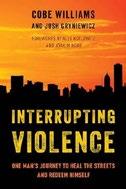
A stirring account from the front lines of urban violence prevention.
Writing with Gryniewicz, Williams alternates between frank discussions of the challenges faced by anti-violence “interrupters” performing conflict mediation in Chicago’s resource-poor Black neighborhoods and a memoir about his own improbable transformation from a second-generation member of the Black Disciples. Alongside other aspects of restorative justice, the movement gained visibility following the acclaimed 2011 documentary The Interrupters, in which Williams appeared. In the foreword, director Alex Kotlowitz writes, “It’s formally known as community violence intervention, but that doesn’t begin to capture the scope of what Cobe and others do as they walk their communities with an open heart and a quiet fury stemming from their belief that things
need not be this way.” Williams later adds, “Community violence intervention is a growing public safety movement that stops shootings and killings on the front end. It uses formerly incarcerated gang members as ‘credible messengers’ to interrupt violence.” The narrative presents a vivid family history, including intense vignettes like his own father’s murder following success as a drug dealer, alongside an ongoing account of the complex networking involved in the conflict resolution efforts of organizations like CeaseFire (since renamed Cure Violence), which provide “a model for this approach borrowed from the discipline of public health rather than criminology.” Indeed, during the pandemic, writes the author, “we moved from solely focusing on violence prevention to serving as community health workers.” Following the police murder of George Floyd and subsequent uprisings, “the community violence intervention model, which I had been promoting for over a decade, reached new prominence.” The complex narrative’s earnestness can drag at points, but Williams is deeply perceptive about brutal urban realities, and he dismantles assumptions rooted in implicit bias with academic rigor and effective storytelling. A heartfelt, authentic guide for combatting community violence.
Winegard, Timothy C. | Dutton (544 pp.) $35.00 | July 30, 2024 | 9780593186084
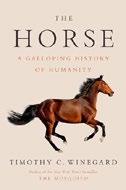
Everything you ever wanted to know about the genus Equus. Until the rise of the automobile, humans were dependent on horses for transportation, “so paramount and pivotal to human society that we base our units of mechanical energy or engine output on horsepower.” Winegard, author of The Mosquito, takes a long view of the horse’s fortunes, suggesting that had it not been for human intervention, horses might well have gone
extinct, with many former species now reduced to the common horse, Equus caballus, along with a small population of Przewalski’s horse, Equus ferus przewalskii. (For fans of genetics, one distinction is that the latter has 66 chromosomes against the former’s 64.) The author takes a kitchen-sink approach to his subject, with sometimes not quite digested and repetitive stocks of data and detail piled up on his pages. Even so, he turns in some good stories, such as the unfortunate choice of the Persian ruler Cyrus the Great to tangle with the Scythian horse masters of the Eurasian steppe, who likely turned his skull into a drinking bowl for his trouble. Another intriguing element is Winegard’s account of how the horse returned to the Americas, where it had first evolved but, after crossing over the Bering land bridge into Asia, disappeared. Brought by the Spanish, the horse occasioned the rise of wide-ranging Indigenous warrior cultures on both continents. Perhaps most meaningful to the sensitive horse lover will be the author’s look at the use of horses in World Wars I and II, with appalling losses that far surpassed those of humans: 8 million of 16 million horses in the Great War died, “the bloodiest conflict for horses in the history of warfare.”
Sometimes weighed down by too-abundant detail, but a thorough, comprehensive look at the horse across time and space.
Kirkus StarWong, Edward | Viking (464 pp.)
$30.00 | June 25, 2024 | 9781984877406

A New York Times diplomatic correspondent reflects on returning to his family’s homeland and unraveling their complicated past.
Wong, whose father immigrated from China in 1967, grew up in Washington, D.C., knowing little about his family’s lives in China and how his father made the decision to come to America. Stationed in Beijing for the Times from 2008 to 2016, the author, an expert journalist, learned more about his father’s convoluted life journey, which is the primary focus of this fascinating, ambitiously textured narrative. His father’s parents were Cantonese merchants who “moved effortlessly between Hong Kong, with all its trappings of imperial Britain, and the subtropical countryside of neighboring Guangdong Province in China.” The author’s father endured Japanese occupation and saw his older brother, Sam, depart to America on the eve of the communist takeover. He ventured north to Beijing Agricultural University and embraced the ideals of the new communist leadership. Promised a career at the air force academy in Harbin as the Korean War broke out, he was rerouted to the remote region of Xinjiang, where he spent “six years in hard postings…in places most Chinese citizens feared going.” With the Great Leap Forward, widespread famine emerged, and he began to question the party’s leadership and to plot his journey to join Sam in America. First, he went to Hong Kong, “a significant step away from the bleak future that awaited…if he stayed under the Communist system.” The author chronicles his other visits to China—e.g., his 2023 trip to Beijing accompanying Secretary of State Antony Blinken— and he closes with an account of his time in Hong Kong in 2019, as violent protests were breaking out just before the stringent antidemocratic National Security Law was passed. Throughout, Wong capably interweaves intimate details with broader truths.
A well-written, multilayered work of poignant familial memories and personal reflection.
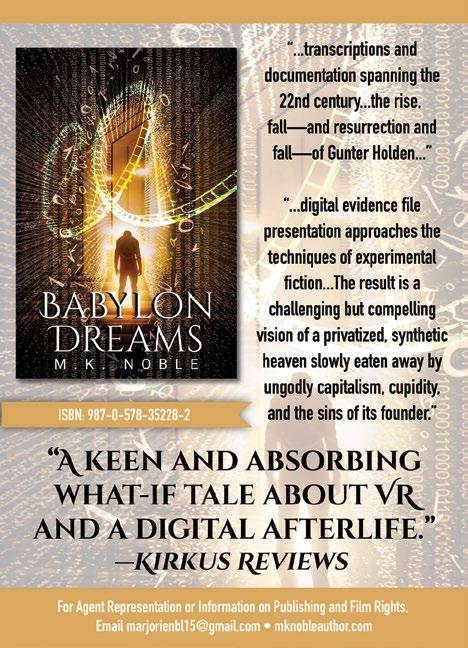
Named to Kirkus Reviews’ Best Books of 2021

“An extraordinarily beautiful, touching adventure that can stand with the classics of children’s literature.”—Kirkus Reviews (starred review)

“Imaginative and emotional, this underworld adventure thrills, chills, and o ers insightful lessons. Lee’s vivid imagination shines through each chapter…and his quirky characters will keep readers… hooked throughout.”
BookLife Reviews by Publishers Weekly

reviews lanceleeauthor.com
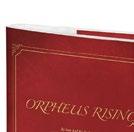


ISBN: 978-0-578-88559-9


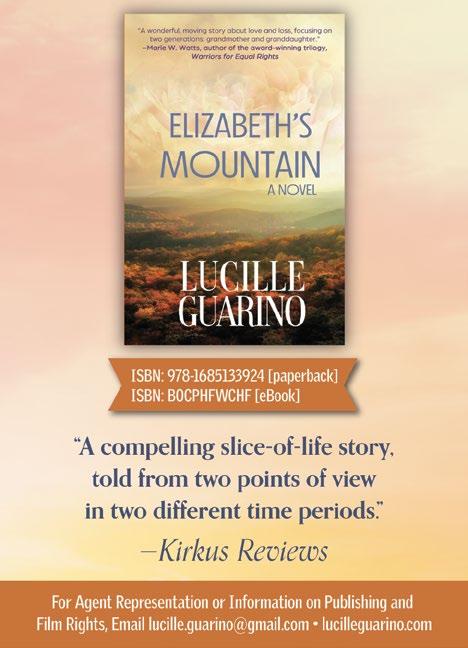


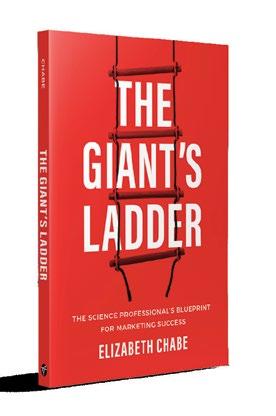





IN A COLUMN last spring, I reflected on Judy Blume’s legacy and highlighted several middle-grade authors who have taken up her mantle, often by writing probing works on menstruation. Among these works is Calling the Moon: 16 Period Stories From BIPOC Authors (2023), edited by Aida Salazar and Yamile Saied Méndez. Recently, I was delighted to see a new book from Salazar, this time exploring a teenage boy’s experiences with puberty. Ultraviolet (Scholastic, April 2), a novel in verse, follows 13-year-old Mexican American Elio Solis through first love—and first heartbreak. Calling the Moon offered a new take on Blume’s 1970 classic, Are You There God? It’s Me, Margaret. In many ways, Ultraviolet is a spiritual successor to Blume’s Then Again, Maybe I Won’t (1971), about 12-year-old Tony Miglione, whose family moves from Jersey City to a wealthy Long Island suburb.
Blume and Salazar both examine the often mortifying experiences of
puberty with a mixture of tenderness and humor. Tony wonders what to do if he unexpectedly gets an erection in public (his solution: carry a raincoat everywhere), while Elio cringes when his mother notices he has an erection one morning. But in other ways, the boys are worlds apart. Tony often spies on his crush, next-door neighbor Lisa, as she undresses. Though he feels conflicted, he decides that his actions are acceptable, since nobody knows what he’s doing. Readers might feel differently: How would Lisa feel if she knew?
Blume broke ground with her candid depictions of adolescent sexuality, but she also glossed over hurtful behavior—a reflection of the “boys will be boys” attitude of the time.
Salazar, in contrast, holds her protagonist— and her readers—to a higher standard. Elio is devastated after his girlfriend, Camelia, breaks things off, and when her new boyfriend offers to share photos of


her in a bikini, he eagerly accepts, in part because he wants to hurt her, just as she’s hurt him: “Let Camelia suffer, let the pictures roll!”
These are words he later regrets once he sees the error of his ways, but he resolves to grow into a strong, empathetic man. Unlike Tony, whose tendency to bottle up his emotions leads to debilitating stomachaches, Elio doesn’t have to do it alone. Earlier in the novel, his father introduces him to a support group for adolescent boys, and after the breakup, his mother assures him that it’s OK to cry.
It’s tempting to look at Then Again, Maybe I Won’t and feel smug— See how far we’ve come? Sexism remains terrifyingly
common, however; just look at the misogyny peddled by social media influencers such as Andrew Tate. Still, books like Ultraviolet give me hope. They offer a blueprint for a new conception of masculinity, for a world where young men take pride in being gentle nurturers—in one of my favorite scenes, Elio and his mother assemble a care package to help Camelia cope with menstrual cramps— and maybe even a world where the patriarchy is ultimately dismantled. As Elio’s mother tells him, “Keep your heart open, amor. / We need it from boys and men in this world .”
Mahnaz Dar is a young readers’ editor.
Illustration by Eric Scott AndersonThe boy “did something bad. Truly bad.”
A 107-year-old narrator speaks directly to someone named Olka, saying the stories in the book are about “me and you” as well as the boy, Alex (who presents white). What follows is an intense dual narrative that moves between the speaker’s tragic life during the Holocaust and contemporary 12-year-old Alex’s tale of loss and its aftermath. Alex’s mother has disappeared, and he lives with an aunt and uncle who don’t want him. His resentment, self-loathing, and all-consuming anger cause him to commit a violent act, “the Incident,”
for which he’s arrested. His social worker arranges community service at Shady Glen Retirement Home, where he meets the narrator, Joseph “Josey” Kravitz, who keeps to himself and hasn’t spoken in five years. But he’s drawn to Alex and decides to share his story. When Alex’s terrible Incident is finally disclosed, readers will grasp its gravity. Both storylines are filled with misunderstandings, tragedy, horrible acts of hatred, and selfless acts of bravery, which affect the protagonists in profound ways. As they realize that they have much in common, both Alex and Josey learn they can “rise
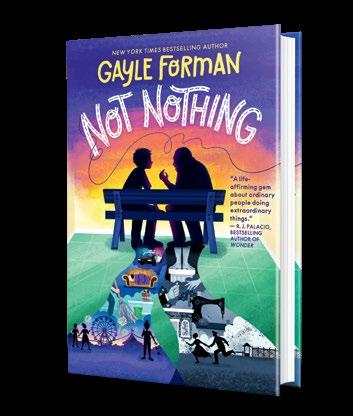
to the occasion of [their] lives.” Best-selling award winner Forman interweaves the tales carefully, with striking language and depth of feeling, allowing readers to understand the characters’ changing perspectives as
they learn more about themselves and open up to people around them, many of whom become advocates and friends. Powerful, heartbreaking, and hopeful. (author’s note, bibliography, further reading) (Fiction. 10-14)
Abe, Julie | Illus. by Karmen Loh
Little, Brown (400 pp.) | $16.99
Aug. 20, 2024 | 9780316448826

Tessa and Jin are called to partake in a battle against the gods in this follow-up to Tessa Miyata Is No Hero (2023). It’s been two months since Tessa fought an evil samurai god in Tokyo. She’s finally getting to enjoy her summer in Japan, attending festivals and hanging out with bestie Jin. Tessa never expected to encounter their friend Kit, the Unlucky God, or anything else magical again. But on the night of Obon Matsuri, the friends receive invitations to the Academy of Gods in the last magical city, where they’ll have to fight immortals. If they win, they’ll save Kit and will become immortals themselves. Losing means Kit will be turned into ether, and they’ll be banished from the City. Tessa and Jin must survive one-on-one battles and race through the four magical arenas. Being mortal puts them at a severe disadvantage, but with the help of Kit and some new friends, they muster all their strength and determination to protect those they love. This sequel offers readers another exciting underdog tale as the misfits struggle with disappointments, failure, being looked down upon, and meeting familial expectations. Along the way, they learn about true strength and resilience. Real Japanese cultural elements are incorporated into the beautifully crafted fantasy world. Final art not seen. A magical underdog story, full of grit and heart. (map, glossary, list of gods) (Fantasy. 8-12)

A thought-provoking look at a brief but meaningful historical moment.
THE PAINTER AND THE PRESIDENT
Adler, David A. | Illus. by Edward Miller
Holiday House (32 pp.) | $18.99
Aug. 27, 2024 | 9780823448630
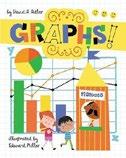
For more by Julie Abe, visit Kirkus online.
Simple introductions to common types of graphs and some of their distinctive features. A visit to an amusement park serves as a frame story: Two children (one light-skinned, one brown-skinned) and their brownskinned mother count the number of variously colored carriages on a Ferris wheel, cars in a bumper car rink, and kids over, at, and under the required height for a roller coaster; track changing temperatures over the course of a day; and poll visitors about their favorite rides. They then convert the data into single or double bar graphs and line graphs, a pictograph, or a pie chart as appropriate. One of the two temperature graphs is oriented with temperature along the x, rather than y, axis, so the line counterintuitively bulges to one side rather than going up and down, but the charts are otherwise easy to read, and the explanations about what they show and how each is particularly suited to different types of data (e.g., single figures, collective ones, changes over time, or parts of a whole) are clear. Along with the graphs themselves, Miller supplies simple views of rides and racially diverse groups of visitors so that readers can count along. A final set of examples with test questions (and answers at the bottom) offers a quick check on comprehension. Charts helpful ways to visualize and express numerical data. (Informational picture book. 6-8)
Albee, Sarah | Illus. by Stacy Innerst Calkins Creek/Astra Books for Young Readers (40 pp.) | $18.99 Aug. 27, 2024 | 9781662680007

An account of the rocky relationship between the U.S.’s first president and his most famous portrait painter.
“They did not,” as Albee puts it in a nutshell, “hit it off.” Dubbed an “infernal chatterbox” by the grumpy elder statesman, Gilbert Stuart was in the habit of reeling off amusing stories and “corny jokes” to relax his subjects as he worked. Still, both painter and sitter well understood “the power of art”— and the two stuck with each other long enough for the former to break through the latter’s reserve, which was exacerbated by the pain of bad dentures, to capture a more animated expression so well that the unfinished image of 1796 has remained by far the best-known portrait of Washington or any president. Stuart went on to paint portraits of five more chief executives, which Innerst incorporates, with the painter’s “selfie” and other works, into droll caricatures of 18th-century dignitaries and the busy artist adroitly wielding his brush with many a vigorous “dab” and “swish.” A timeline at the end daubs in further biographical details about the disparate duo, and the whole not insignificant historical anecdote is capped by closing comments on Washington’s “tooth troubles” and why
Kirkus Starhis picture on the dollar bill has him facing the other way. The result is a humorous yet enlightening work that humanizes seemingly distant or imposing figures.
A lighthearted, illuminating, and thought-provoking look at a brief but meaningful historical moment. (bibliography) (Informational picture book. 7-10)
Allen, Josh | Illus. by Sarah J. Coleman Holiday House (192 pp.) | $18.99 Aug. 20, 2024 | 9780823456321
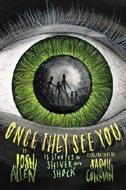
Thirteen more terrifying tales. Following Only if You Dare (2021), Allen and Coleman’s latest set of horror shorts for middle-grade readers once more strikes the perfect balance for its intended audience—frightening but never overly disturbing. This time around, ordinary objects reveal their true natures. Anything from a breakfast pastry to a sleeping bag could be a potentially deadly hazard, while familiar fears are proved not to be unfounded in this gruesome collection. In “Fortune,” after a middle child who’s always felt overlooked by his family receives a blank fortune cookie paper, he becomes literally invisible to the world; in “El Diablo,” a bicycle has a mind of its own. A piano student realizes that her instrument may require a more painful sacrifice than her time and energy in “Sweat, Tears, Blood.” The main characters aren’t always on the receiving end of the danger, however— Damien has finally had enough of being called every name except his own in “The Emperor of Thumbtacks.” Determined to be seen as “The Opposite of Cute,” Emree inadvertently becomes a vampire when she purchases the wrong Halloween costume. The suspenseful tone and creeping dread aren’t hampered by the stories’ short lengths, and Coleman’s dark, unsettling full-page illustrations further heighten the horror and add to the appeal
of this well-paced, compelling anthology. Character names cue some racial diversity. Superbly scary. (Horror. 8-13)
Allen-Fletcher, Carly | Eerdmans (44 pp.) | $18.99 | Aug. 13, 2024
9780802855916 | Series: Spectacular STEAM for Curious Readers

Brilliant illustrations teeming with living creatures light up this quick introduction to the biosphere’s six kingdoms.
To the enduring irritation of tidy-minded taxonomists, living things resist falling into neat categories, but the six-kingdom structure (animals, plants, fungi, protists, bacteria, and archaea) is broadly accepted as a useful working model, and Allen-Fletcher makes a game effort to briefly define and distinguish each—while properly pointing to pesky misfits as she goes. So it is that plants draw energy from sunlight but, she notes, so do green sea slugs; aspen trees, unlike most plants, reproduce by cloning. Still, she leaves younger readers with at least basic ideas of prominent characteristics that most members of each kingdom share and offers glimpses of select examples, both typical and oddball. For more technical-minded audiences, she wraps up by briefly mentioning the subdivisions within kingdoms and noting renowned taxonomists such as Carl Linnaeus and al-Dīnawarī. Allen-Fletcher closes with the scientific names of all 164 species that crowd her vivid montages with numbered, naturalistic images. If it’s not always clear which specimen in the crowd she means when referring to “these” corals or edible mushrooms, life’s astonishing variety of hues, forms, and habitats definitely comes through. Tiny human observers in a racially diverse array put in occasional appearances, too. A perspicuous first glance, with radiant illustrations.
(Informational picture book. 7-9)
Anlauf, Lena | Illus. by Vitali Konstantinov Trans. by Marshall Yarbrough | NorthSouth (64 pp.) | $24.95 | Sept. 10, 2024 9780735845626 | Series: Genius Animals

The creators of Genius Noses (2023) present a populous gallery of land animals with prominent ears—long, large, tufted, hidden, false, and sometimes red. The three examples in the “Sometimes Red-Eared” section—Tasmanian devils, black rats, and humans—point to a common theme: External ears serve multiple purposes beyond amplifying outside sounds. So it is that people blush, elephants use theirs as cooling fans, happy rats “smile with their ears,” and wild donkeys swivel their long, expressive auricles like semaphores to signal moods. Anlauf’s entries, translated from German, highlight these animals’ distinctive general features or behaviors and frequently mention characteristic calls or sounds, such as an aye-aye parent’s affectionate ggnoff to its offspring. Following a final set of animals, including the eared leafhopper, which has appendages that look like ears but aren’t (“Leafhopper’s ears are located on the insect’s rear end”), a discursive glossary with diagrams gets into more detail about the inner and outer anatomy of hearing organs. Wild creatures, many sporting small smiles and prominent lashes, look alertly at viewers with direct, friendly gazes in Konstantinov’s animated illustrations. From the tiny jerboa leaping energetically across the title page to the red-eared young couple (one dark-skinned, the other light-skinned and freckled) exchanging an embarrassed glance at the close, the art is loaded with lively appeal.
A particularly engaging addition to natural history shelves. (map, sources and notes, index) (Informational picture book. 7-10)
WHEN I SEE YOU
Barnes, Brynne | Illus. by Brianna McCarthy | Denene Millner Books/ Simon & Schuster (40 pp.) | $18.99 May 7, 2024 | 9781665914857

A lyrical ode from an expectant mother to her soon-to-beborn child. A Black, freckled, pregnant mother describes the magical adventures she’d love to go on with her child, depicted with dark skin covered with tiny stars. “I wish I could float to you / in a red balloon,” the parent sighs. “Find you in a galaxy. I dream of the things we’d do.” The mother’s fantasies are whimsical: ice-skating on Pluto, making s’mores out of marshmallow moons, eating macaroons while “dancing down chocolate-ice-cream streets.” The two regale extraterrestrials with ghost stories, sing “Twinkle, Twinkle, Little Star” to the Nebula lagoon, make snow angels among the clouds, go sledding along Saturn’s rings, and construct sand castles on Martian dunes. Featuring an inspired use of imagery (“We’d braid air like Rapunzel’s hair”), Barnes’ rhyming text exudes a sense of joy and anticipation; expectant parents will readily relate. McCarthy’s illustrations are the standout; her ethereal artwork makes it clear that we’re all made of star stuff. Mother and child romp against saturated, textured backgrounds, and while the scenes take surreal twists, the overall mood is loving, dreamy, and tender. A rapturous journey powered by love that’s sure to transport readers across galaxies and back. (Picture book. 0-4)
Barnes, Natalie | Illus. by Aviel Basil Tiger Tales (24 pp.) | $10.99
Aug. 6, 2024 | 9781680103021
Series: 10 Things I Love About

Eight nights, 10 reasons to celebrate. Hanukkah lasts eight days, but this bubbly young narrator needs 10 reasons to explain why the Festival of Lights is so wonderful— from lighting the menorah to singing the Dreidel Song to enjoying latkes and jelly doughnuts—and makes an excellent case for each. As the child takes part in meaningful rituals and has plenty of fun, it becomes clear that Hanukkah is a family-centered celebration. After all, as we learn from reason number four, it was the “brave Maccabee family” who vanquished the soldiers sent by “a mean king named Antiochus,” who forbade Jewish people from practicing their religion and attacked their Temple. When the Maccabees returned to the Temple, the oil they found—enough to burn in their lamp for one night— miraculously lasted for eight days and nights. This delightful tale will charm readers, and its bright, cartoonish illustrations are ideal for a story about a festival that celebrates light illuminating the darkness. The family at the center of this tale has lightly tan skin, though their community is a diverse one. A neighborhood scene features twinkling Christmas trees in windows in addition to menorahs. A glossary with pronunciation guides closes out the book. An infectiously cheerful tribute to the Festival of Lights. (Picture book. 4-8)
Barr, Catherine | Illus. by Christiane Engel | Candlewick (40 pp.) | $18.99 Aug. 13, 2024 | 9781536236255

Provides views of bypasses around the world that allow wildlife to cross dangerous highways and other humanmade obstacles.
“Fishing gear is cutting across oceans, and fences run to the horizon to separate land,” Barr writes. Citing seven examples (plus seven more profiled in shorter entries at the end), she points to ways we are learning to live with animals that must migrate or travel to survive. She explores uncultivated corridors through farmlands for elephants in India, a fish ladder that boosts Atlantic salmon over a dam on the Moselle River in Germany, “hedgehog highways” in the U.K., and protected wetland stopovers on the Yellow Sea mudflats in Asia for the rare spoonbilled sandpiper (“spoonie”) and other migratory birds. In the United States, the soon-to-open Wallis Annenberg Wildlife Crossing in California gets a nod, and the author notes that 42 other states have similar access ways. In broad overviews and closer looks at specific areas, Engel depicts these protective efforts in painted landscapes teeming with wildlife. Her artwork will reward careful readers; children are asked to spot various animals within the scenes. Human figures are generally tiny but when large enough to make out are racially diverse. Illuminating case studies in coexistence with wild nature. (Informational picture book. 6-9)

|
Illus.by
CharleneChua | Dial Books (32 pp.) | $18.99 Aug. 6, 2024 | 9780593616642
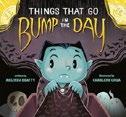
Getting a good day’s rest is tough for a young vampire.
Trying to settle down in his casket isn’t easy for little Vlad, what with the terrifying cacophony coming from outside. He complains about “CLICKETY CLACK” and “SKREEK” sounds, while an accompanying image depicts a smiling, pink-skinned letter carrier delivering mail. Mama responds that it’s just Sirus the Slithery out for a bike ride; an illustration shows a huge striped snake in a top hat. But what about that loud “HERNK” (an image depicts a wailing fire engine)? Mama tells him it’s Gogonk the Ghastly, a horned, devilish duck, on his way to pick up the paper. The witty digital illustrations will have kids chuckling. The things Vlad sees as nightmarish are portrayed in a cutesy, childlike scrawl; suns, butterflies, and even trees are portrayed with wide smiles. Meanwhile, Gogonk and Sirus are grotesque, Tim Burton–esque creatures, but Vlad finds them reassuring. Does the artwork suggest that Vlad really hears the human world? Or are these scenes the result of his overactive imagination? The final illustration, showing Mama in her coffin, tormented by thoughts of the things that go bump in the day, may influence kids’ responses to these questions. Endearing Vlad has mint-green skin and small horns and fangs; lavender-skinned Mama wears batwing-shaped eyeglasses and curls her long, dark hair with snakes. This twist on the bedtime tale will induce giggles—and, maybe, some reflection about kids’ own bedtime-stalling tactics.
Children will stay wide awake, day or night, to finish this funny sleepy-time story. (Picture book. 5-8)
WILDLIFE CROSSINGS
Becker, Erin | Penguin Workshop (240 pp.) $17.99 | Aug. 6, 2024 | 9780593523643

Three weeks before the Eighth-Grade Girls’ City Championship, two soccer players who are former best friends develop an anonymous online friendship in this queer sports romance that explores coming-of-age themes.
As captain of her soccer team, white girl Melanie Miller dreams of leading the team to a perfect winning season, especially after everything fell apart at the end of seventh grade, when Mel’s group of best friends, the Fearsome Foursome, fractured in half. White center midfielder Tory McNally said “one wrong thing” last year, and all except one of her best friends abandoned her. She still has Chloe from the Fearsome Foursome, plus her new stepbrother, Terrance (both of whom are Black), but she hesitates to open up about the problems weighing on her, like her distant relationship with her mom and the crush on her former best friend that ruined everything. Super-athletic Mel also has a secret: She writes poetry. Their identities disguised by anonymous usernames, Mel and Tory unknowingly reconnect on a school message board, rekindling their relationship as they confide in one another. Affirming family and friends surround the main characters as they struggle with changing relationships and insecurities about their identities; homophobia plays only a minor role in the conflict. Unfortunately, despite the fluttering romantic tension and fast, suspenseful pace, bland
characterizations of the secondary characters that lean into common tropes diminish the overall appeal of this debut. An engaging premise but not quite a game-winning goal. (Fiction. 9-13)
Beckerman, Nell Cross | Illus. by Kalen Chock | Orchard/Scholastic (40 pp.)
$19.99 | Aug. 6, 2024 | 9781338874679

A dramatic introduction to volcanic eruptions and those who study them. “A rumble. / A tremble. / A grumble. / Growing, / growling, / getting hot. / When will it… // POP?!” Blast out, more like, as Chock depicts in grand, painted views of glowing lava bursting upward amid billowing clouds of hot gases from peaks around the Pacific Ocean’s Ring of Fire and elsewhere. In a mix of awed free verse and blocks of prose commentary, Beckerman looks back to notable ones of the past from Krakatoa to a 2022 blast in the Tonga Islands and pays tribute to the intrepid researchers (“Superheroes? Scientists”) who venture onto shoe-melting slopes to study these spectacular “megaphones / of magma.” Backmatter describes the five types of volcanic eruptions. The author discusses hydrothermal vents (which emit hot water rather than hot rock), spotlighting them as the places where life on our planet may have originated. She also directs nods to humongous Olympus Mons on Mars and volcanos elsewhere in the solar system. “Volcanoes / everywhere,” she concludes, are worthy of deep study for the clues they hold both to our past and to what is to come.
A vibrant tribute that pops with strong feeling and riveting art. (author’s and illustrator’s notes, further reading, the big questions that volcanologists are trying to answer, additional facts) (Informational picture book. 7-9)
Bickell, Elaine | Illus. by Raymond McGrath | Flamingo Books (40 pp.) $18.99 | Aug. 6, 2024 | 9780593692387
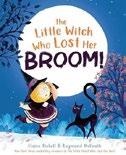
The creators of The Little Ghost Who Lost Her Boo! (2020) tell the story of a witch who must consider other transport options when her standard vehicle disappears. Little Witch can’t wait to ride her broom during the full moon tonight. She goes to dust it off, but it’s gone. She searches everywhere, even in her cauldron. The witch must find the broom before moonrise. Accompanied by her cat, Gloom, Little Witch takes to the streets. “Maybe a scooter’s as good as a broom?” But when she realizes Gloom won’t fit, she concludes, “A witch with no cat, / it’s just not right. / I cannot ride / a scooter tonight.” She test-drives a bike, a digger, and a train but ultimately rejects each one; each time, Bickell employs a variation on the earlier rhyme. What’s a witch to do? In a metafictive final twist, Little Witch gazes out at readers from the book and asks if they know where her broom is. Yes, they do (thanks to the illustrated hint). Children will enjoy this lively, unusual Halloween story, first published in New Zealand, and will particularly appreciate the unexpected, interactive ending. The tale is told in serviceable but somewhat clunky verse; the illustrations incorporate onomatopoeic sound effects. McGrath’s graceful artwork is populated by mummies, ghosts, and other sweetly scary creatures. Expressive, bespectacled Little Witch is light-skinned. A real treat, ready to be swept up from Halloween-display shelves. (Picture book. 4-7)
Blackwood, Freya | Random House Studio (40 pp.) | $19.99 Aug. 27, 2024 | 9780593707661
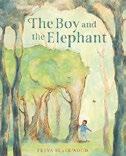
In an overwhelmingly bustling city, a boy finds solace in a nearby overgrown lot.
After wistfully looking out the window in the morning, the tan-skinned protagonist begins the day’s routine: getting dressed, going to school, and coming home to a distracted parental figure. The child feels lonesome, lost amid the go-go-go life of the city. That evening, though, the little one visits an abandoned lot and communes with trees that remarkably resemble animals; the child’s favorite is a series of trees fused together in the shape of an elephant. As time passes and the seasons change, the child bonds with his pachyderm pal and is shocked one day to learn that this natural respite is set for demolition for new development. After the protagonist desperately tries to move the trees alone, the arboreal menagerie comes alive and treks across the city in the pre-dawn light to find a safe natural space in an environment teeming with activity. Blackwood’s wistful pencil and oil paint illustrations use a palette of blues and greens to infuse this quiet wordless tale with emotion about the all-toocommon feelings of loneliness many experience in big cities.
A contemplative look at finding your place in a busy world. (Picture book. 4-7)
Bogan, Paulette | Two Lions (40 pp.)
$17.99 | July 2, 2024 | 9781662518584
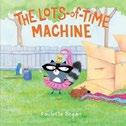
someone to play with. She asks various family members, but everyone’s too busy. Momma’s fixing the plumbing, Peapaw’s doing yoga, and Daddy’s cooking. Poor Fifi. Felix wants to play fetch, but Fifi has other ideas. She and Felix steal something from each adult and build a Lots-of-Time Machine in the backyard out of boxes and blankets. When she and Felix trick the adults into joining them in the yard, Fifi tells them it costs 10 minutes to enter the machine, where they can play games and read stories together. When Felix accidentally pulls down the machine, Fifi helps Momma and Daddy with their chores while Peapaw builds a new tent for play in the yard. Though the ultimate message is that family time is the best time, readers may wonder why the young protagonist ignores a perfectly good playmate in her puppy, and the Lots-ofTime machine doesn’t really make sense even with toddler logic: It’s unclear why the adults suddenly have time for Fifi or why they aren’t frustrated that she’s taken items that belong to them. The illustrations, rendered in watercolor and digital media, are serviceable, but the oddly football-headed raccoons seem out of place against the backdrops. Readers needn’t make time for this one. (Picture book. 2-5)
Boniello, Alex & April Lavalle | Illus. by Olivia Chin Mueller | Abrams (40 pp.)
$18.99 | Aug. 6, 2024 | 9781419772443

No one has time to play with Fifi. In her tutu and crown, a young raccoon named Fifi tells her dog, Felix, that she needs
Boniello and Lavalle, the Tony-winning producers of Hadestown, tell the story of a ghost attempting to raise her pal’s spirits. Besties Ollie and Ellie have haunted their house for centuries. When Ellie calls on Ollie in his “dead-room” so they can play her “grave-orite” game, Ollie tells her he’s feeling “a bit boo.” Supportive Ellie suggests doing fun activities. They visit old friends at the graveyard, slam the doors, make the furniture float, and play songs on the old-fashioned record player. Nothing’s working, Ollie says, but he
thanks Ellie for trying. Still, she keeps pushing fruitless ideas. It’s nearly morning, and the pair are exhausted. When Ollie finally manages to get a word in edgewise, he offers a suggestion: that they simply sit together—silently. They do. The illustrations depict both pals’ faces visibly brightening at sunrise, and Ollie thanks Ellie for the period of hushed reflection, acknowledging that he feels better. Next night, Ollie’s ready for ghostly shenanigans again, apparently without a haunt, er, hint, of boo-ness. Peppered with spooky puns, this story reassures readers that we all feel “boo” at times and that companionable silence can work wonders; sometimes, just being there is enough. Children will appreciate this expressive spectral duo’s tender friendship. Though Mueller adorns Ollie and Ellie’s haunted house with details such as cobwebs and cracked walls, her illustrations have a warm, cozy vibe that’s more sweet than scary. Hauntingly good fun. (Picture book. 5-8)
Buchet, Nelly | Illus. by Janie Bynum Feiwel & Friends (32 pp.) | $18.99 June 11, 2024 | 9781250878779
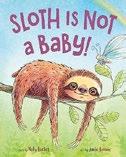
A young forest dweller faces a new challenge with a mixture of doubt and determination. Sloth and her friend Moth climb high up in a tree before looking down to see how far they’ve come. Moth reminds her that Worm told them that baby sloths were too scared to climb so high, but they’ve shown him! Sloth retorts, “I’m not a baby”—a refrain that repeats several times over the course of the story. Though Sloth initially delivers her response with beaming confidence, fear begins to seep in with Moth’s reminders
that she could fall, which would be scary…if she were a baby! Sloth points out that other animals—various insects, Monkey, and Snail—are capable of climbing high. Moth counters her arguments: Insects have wings, Monkey is really fast, Snail is incredibly sticky. Close-ups of Sloth’s animated facial expressions convey her growing trepidation. As Sloth becomes convinced that she will fall, a storm hits, and all the other animal friends are momentarily flung off the tree, despite their climbing advantages. Only Sloth manages a tight grasp, and as the storm lifts, Moth celebrates Sloth’s unique talent for holding on. Told simply, with effective use of repetition and expressive cartoon illustrations, this story will appeal to children who are similarly finding their footing in a sometimes-scary world. An uncomplicated celebration of daily triumph for those who refuse to be babied. (Picture book. 2-5)
Carnavas, Peter | Pajama Press (32 pp.) $18.95 | Aug. 20, 2024 | 9781772783216
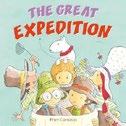
In this tonguein-cheek tale, a band of children travel from one house to another, crossing a playground on their supposedly treacherous trek.
Before any characters appear, a scroll-like document begins: “On 20th August, a group of young explorers was charged with a dangerous mission. They were to travel across wild country to deliver a valuable parcel.” The document notes that two heroes would be recognized by the end of the journey. Every page uses similarly dramatic language as narration, and every page’s humor lies in how the artwork—delightful sketches
A contemplative look at finding your place in a busy world.
rendered in ink and watercolor—subverts the text. An ordinary-looking parent in a bathrobe handing a beribboned box to a young boy named Robert is in fact the “senior officer” who sends him on the mission. Team leader Robert’s exploring party loses members along the way: Biologist Henry succumbs to an insect bite; botanist Ivy is “ambushed” by another “senior officer,” who shows up, glaring, with Ivy’s ballet slippers; Lily the animal handler and Floyd the dog leave when Floyd gets distracted by a thrown stick. When only two explorers remain, navigator Will tumbles to the ground in the “sandy desert”—a sandbox, of course—and Robert lets him ride on his back until they reach their destination, where more revelation awaits. Children will appreciate this absorbing adventure, which honors the power of imagination as it tickles the funny bone. Most characters are light-skinned; Henry is brown-skinned.
A lighthearted hero’s journey. (Picture book. 4-8)
Carson, Mary Kay | Photos by Tom Uhlman Clarion/HarperCollins (80 pp.) | $21.99
Aug. 13, 2024 | 9780063271470
Series: Scientists in the Field

Wily coyotes may be living next door.
Husband-andwife team Carson and Uhlman
follow the work of the Urban Coyote Research Project, started by urban ecologist Stan Gehrt in the late 1990s, when residents of Cook County, Illinois, began reporting coyote sightings. These scientists are attempting to answer a variety of questions: Are these animals a threat to people? Could their presence lead to a healthier ecosystem? Carson examines the history of coyotes in North America, their move into former wolf territory north and east of their original range in the western prairies and deserts, and how these animals have been able to adapt to a variety of environments. She goes more deeply into tracking techniques and
The award-winning author introduces time travel into the life of a Delaware teen on the cusp of Y2K.
BY MATHANGI SUBRAMANIANTWO-TIME NEWBERY Medalist Erin Entrada Kelly’s latest book, The First State of Being (Greenwillow Books, March 5), takes place in the summer of 1999, when the anxious biracial Asian American protagonist, Michael, can’t stop obsessing about Y2K. Even without the possible end of the world approaching, Michael has plenty to worry about: He and his single mother struggle with money, he’s dreading starting a new school year, and he has an unrequited crush on his babysitter, Gibby, whose lack of romantic interest constantly reminds him of his shortcomings. Michael’s perseveration pauses when he and Gibby meet Ridge, a boy who claims to be a time traveler and encourages Michael to live in the present. The boys develop a friendship that teaches them both about worry, love, and valuing what Ridge calls the “first state of being.”
Like all of Kelly’s books, The First State of Being is warm, thoughtful, and full of unexpected twists and turns. I recently spoke to the author about her writing process, researching the year 1999, and channeling her own childhood anxiety. This conversation has been edited for length and clarity.


myself through Michael, but also letting him be himself. Then I thought about how I could marry Michael’s story with time travel.
Why did you set the book in 1999?
How did you come up with the title, The First State of Being ?
The book is set in Delaware, and Delaware is the first state. It’s on all our license plates here, so it’s a shoutout to Delaware and also to the present moment.
Speaking of the present moment, why did you
decide to write about time travel?
In many ways, the book is a love letter to When You Reach Me by Rebecca Stead, which is one of my favorite books and also includes time travel. But it all started with Michael. I was a lot like Michael when I was a kid—a worrier. The book is me channeling
We’re living in a very anxious time right now. People have a lot of anxiety about a lot of things for a lot of valid reasons. And being a kid is already an anxiety- provoking experience! Y2K was a natural reason for Michael to be anxious; setting the story in 1999 allowed me to explore the timeless nature of anxiety.
One of Michael’s sources of anxiety is money. I really appreciate this, because we rarely see working- class Asian American kids in fiction. In a lot of books today— and definitely when I was a
kid—money is not mentioned. It’s just assumed that the family has money or is middle class, or at least lower-middle class. But when I was growing up, money was definitely an issue. It’s certainly an issue for many, many families, especially now. I wanted to reflect that reality.
How did you research the time period?
I was an adult in 1999, but it’s hard to remember where we were as a society with technology because everything has happened so quickly since the internet. I did some deep googling and used the Wayback Machine to look at websites from back then to try to figure out where we were, technology-wise.
I also read a lot of articles about Y2K. I did
newspaper research because I remember that Y2K was all anyone talked about back then. I bought a Y2K survival guide written by a survivalist who thought that everything was going to shut down, and that helped inform how I wrote Michael. I bought a stack of TV Guides from August and September of 1999, which helped a lot. I also watched commercials from [that time]. And I reread the Christopher Pike book [Last Act ] that Gibby’s reading.
I loved the Pike reference, but isn’t Judy Blume one of your favorite authors? Why not include a book by her?
Good question! I do love Judy Blume, but I really wanted Gibby to read Christopher Pike because he’s such a 1990s cornerstone. Plus, I wanted Gibby to be reading a mystery.
How did you figure out Ridge’s reactions to 1999?
Most of my decisions [while] writing Ridge came from thinking about time-traveling 200 years. If I traveled to 200 years in the past, what kinds of things would interest me? And the things that would interest me are the everyday things. That’s why Ridge is so fascinated by things like phones and microwaves and cars.
I feel like I learned a lot about Ridge from the transcripts of his family’s conversations in the future. What inspired you to include those?
I wanted the book to solidly stay with Michael’s
perspective. But it became clear to me that I needed to show Ridge’s point of view as well, and to show the world he’s coming from, to provide context for Michael’s world. Plus, I wanted readers to understand how and why Ridge got to 1999 and that his family cares a lot about him and is searching frantically for him. So that’s how all those transcripts came to be.
I noticed a lot of parallels between Ridge’s and Michael’s relationships with their mothers. I definitely intended to show a parallel relationship between mothers and sons. The biggest difference is that Michael clearly understands that his mother loves and cares
for him. I wanted to show a single mom who’s trying her best. And even though she works all the time, they still have this loving, close connection. Ridge maybe doesn’t have that same closeness with his mother, but I wanted to show that it’s there, even if Ridge doesn’t perceive it.
The book alludes to future technologies, but we never get to see them. Do you know what they look like?
Yes! I didn’t put them in because, like Ridge says, a bunch of inventions have to happen before the technology happens in the future world. I have ideas about everything, including the internal device that Ridge has under his skin.
I was a lot like Michael when I was a kid—a worrier.

Kelly, Erin Entrada
They’re just not in the book.
What else don’t we see in the book?
There’s more backstory—like Ridge’s competitive relationship with his siblings and their collective relationship with their mother. But I didn’t want to get too much into that because I wanted to leave room for the reader’s imagination.
You’ve thought everything out so carefully! Do you outline your stories before you write?
Before I start writing, I always have a beginning, middle, and end of a story in mind. I have a very, very clear picture of who the characters are, and I have an idea of how I want the characters to change. Kind of like a story shape. Because if you can see how your story is unfolding, then you’ll be able to pace yourself better. Usually, I sit with a story for months, teasing it out in my head. Once it’s taken shape in my mind, and the characters feel real to me, then I’ll start writing.
Last question: Is the Christiana Mall still in Newark, Delaware? Yes, I go there all the time! There’s no longer a Waldenbooks or KB Toys, but there’s an amazing Barnes and Noble there, and it’s two stories. Unlike Ridge, I’m not a mall person. But I do love bookstores.
Mathangi Subramanian is a novelist, essayist, and founder of Moon Rabbit Writing Studio.
discusses coyote family life as the scientists find a den with a litter of pups—new coyotes to be microchipped and followed. Well-chosen and mostly well-captioned photographs make it easy for readers to get a sense of these scientists’ activities and to admire the animals—especially the tiny pups. Carson adeptly weaves a great deal of information into her descriptions. Her readable account includes specifics of the scientists’ activities—caging, tranquilizing, and collaring coyotes—as well as important background. Most interestingly, she emphasizes the animals’ innate abilities to adjust their mating and breeding rates according to the carrying capacity of their environment. Most scientists present white in the photos.
Will leave readers with a newfound appreciation for these fascinatingly adaptive creatures. (glossary, further information, sources and selected bibliography, index) (Nonfiction. 10-14)
Christmas, Johnnie | HarperAlley (256 pp.) $24.99 | July 16, 2024 | 9780063056824
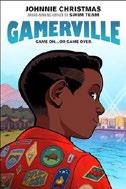
Can online gaming strategies help a boy escape from summer camp in time for a video game tournament?
Maxwell lives for video games, and qualifying for the Gamerville tournament is his greatest achievement yet. However, recognizing the negative impact excessive gaming is having, Max’s highly protective mother realizes he needs more outdoor time: She signs him up for technology-free Camp Reset, a place she has fond memories of attending as a child, although it conflicts with the tournament. Zanzi, the greatgreat-granddaughter of Camp Reset’s founder, strictly and enthusiastically adheres to tradition, causing her friends to pull away. Camper Dylan struggles with overcoming his past as a cyberbully. Through his video game lens, Max at first sees other kids as recruitable allies, but he
gradually realizes they’re true friends. Still, he’s determined to escape to Gamerville; could strategies he’s learning at camp help? Max’s and Zanzi’s families are Black; the supporting cast is racially diverse. This vibrant, colorful graphic novel shows that change engenders growth and improvement, and that strategies and skills are transferable between very different settings. The lavish facilities (for the small number of campers), minimal adult supervision, and questionable safety protocols strain credulity, but Christmas’ work commendably demonstrates respect for both video game culture and unplugged living, showing the positives and negatives of each while offering valuable representations of Black kids enjoying nature and gaming. Themes of positive change thread this tribute to video games, summer camp, and emotional growth. (Graphic adventure. 9-12)
Cleaver, Samantha & Reuben Nantogmah Illus. by Bri Marie McNish | Feiwel & Friends (32 pp.) | $18.99 July 16, 2024 | 9781250883599
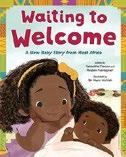
A story about a Ghanaian naming tradition, from the enthusiastic perspective of an impatient child. Andani is excited to have a new cousin, but in her culture, newborns aren’t given a name or brought outside the home until seven days have passed. The baby has a week to decide whether to stay in the human world or return to the spirit world. Until then, Andani must await “the
stranger,” a placeholder used to refer to a baby before the “outdooring” naming celebration occurs. Waiting isn’t easy for Andani, though she and her relatives keep busy. Cassava needs to be prepared, corn needs to be milled, beans must be boiled, and Andani is there for all of it. The faster the work is completed, Andani thinks, the sooner they’ll all learn the stranger’s name, but the artwork makes it clear that Andani’s assistance may not be as helpful as she imagines. On the day of the ceremony, family members arrive in formal dress: colorful kabas, formfitting smocks, traditional caps, hair tucked into dukus. “The stranger is almost here.” And when the baby does arrive, it’s time for Andani’s most important task: announcing the new name loudly and proudly. Capturing the characters’ delight, energy, and movement, the story brings to life a loving West African community. In the warm digital illustrations, each family member’s brown skin is depicted with richness and depth. A joyful tale, steeped in cultural meaning. (author’s note, glossary) (Picture book. 3-8)
Coelho, Joseph | Illus. by Daniel GrayBarnett | Wide Eyed Editions (40 pp.)
$16.99 | Aug. 6, 2024 | 9780711287402
Series: Poetry To Perform
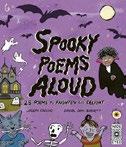
An atmospheric gathering of chill-some verses from a U.K. Children’s Laureate. In a themed set of mostly new poems, Coelho prompts budding poets to
A flower-loving child helps a grouchy neighbor blossom.
JUST FLOWERS
imitate examples of tricky set forms such as the villanelle and pantoum while also, more helpfully, demonstrating how to use repetition and other language techniques to create shivery effects. The author shows a casual disregard for regularity in rhyme and meter, and the overall quality of his work varies considerably—from the alliterative bounce of “Pranking Ghost” (“I’m a gagging ghoulie, / I’m a jackanaping vision, / I’m a wicked wraith, / I’m an aping apparition”) to “The Poo of Death,” crapulous in all senses of the word: “Little David needed the loo, / but inside lurked an evil poo. / He tried in a rush / to give it a flush / but got covered in icky brown goo.” Though Coelho offers some guidance for would-be writers, readers hoping for performance tips along the lines of those in Poems Aloud (2020) will be disappointed. The variously laughing or terrified-looking figures (human and otherwise) strewn across the pages by Gray-Barnett display a broad range of skin tones. A slapdash, superficial follow-up. (Picture book/poetry. 6-9)
Collins, Jordan | Illus. by Phil Lesnie Candlewick (40 pp.) | $18.99 Aug. 6, 2024 | 9781536232738

A child “straight from the center of the universe” faces a smallminded world.
The darkskinned young narrator, wearing a striped woolen hat, fields the same question over and over: “Where are you from?” Words in different typefaces surround the child on the opening spread, and the protagonist pulls on the strings on the hat, seemingly for protection. The child wonders, “How am I supposed to respond?” Tumbling through a door in the clouds into a vast galaxy, the child declares, “I’m from the interiors of collapsing stars” and “the iridescent glow of a nebula.” The protagonist comes from the moons of Saturn and Pluto, from redwood trees and ocean tides, from voyagers and artists. The child continues
even as others persist with the same question, which really means, “Why is your skin that color?” and “Why does your hair look like that?” But the child counters: “You see skin and I see supernovas.” Lesnie’s dazzlingly vivid illustrations immerse the child in a rich imaginative world, depicting lush green trees, rainbow nebulae, and luminous golden lanterns on dark water, in stark contrast to the more muted colors of the child’s real, harassed life. Though Collins’ reflective text doesn’t offer a simple resolution, the child nevertheless has the last, definitive words to settle the issue. An unusual and inventive selection for beginning tough conversations with young readers. (a note from the creators) (Picture book. 4-8)
Cool, Annemarie | Illus. by James Jones Tiger Tales (32 pp.) | $18.99 Aug. 20, 2024 | 9781664300453

Cool and Jones break down the United Nations Sustainable Development Goals into concrete steps.
Twelve colorful, cartoonish smiling heroes introduce themselves with the empowering idea that everyone can improve the world by sharing, eating and living well, conserving water and energy, safeguarding the environment, being curious and kind, and ensuring that others receive fair, respectful, and equal treatment. These goals might seem unattainable, but the heroes reassure readers that they can be achieved if everyone takes manageable steps and works together. The book is organized into colorful, lively, comiclike panels. In each, a different hero explains why the goal is important and presents easy ways to realize it. Stay Well Hero notes that washing your hands, exercising, and getting plenty of sleep are all necessary for keeping the body strong and the heart healthy, while Water Hero advises readers not to litter at the beach and to take shorter showers. The language is direct and
child-friendly: “It’s cool to take care of yourself. Be kind to your mind. Take care of your body. Stay active for your heart.” Easy, enjoyable activities and questions accompany the simple, conversational texts.
A fun, idea-filled book that will get kids excited to help themselves and the world. (Informational picture book. 6-9)
Dealey, Erin | Illus. by Kate Cosgrove Sleeping Bear Press (40 pp.) | $18.99 March 15, 2024 | 9781534112827

A flower-loving child helps a grouchy neighbor blossom. Dark-haired, brown-skinned Izzy’s a botanical whiz kid. Izzy’s determined to befriend the new next-door neighbor, a light-skinned fellow gardener obsessed with growing roses. Izzy reaches out, only to be repeatedly rebuffed. The neighbor’s garden still hasn’t produced roses, though Izzy brightly announces what is growing: buttercups, parrot tulips, and more. Once the roses bloom, the crank tells Izzy to take those other flowers away from his precious roses. Izzy does. Others benefit from Izzy’s generosity, among them Izzy’s mom, the mayor, and migrating monarch butterflies, which stop at the milkweed waystation Izzy has created. When Izzy wins the Green Thumb Award, the curmudgeon’s outraged that his roses have gone unrewarded; he doesn’t comprehend that Izzy’s blooms— seemingly “just common flowers”— have brightened lives. In the end, the grump proves that he knows plenty about plants, too—and reveals a happier disposition. This bright, bouncy story offers some lovely messages: Kindness can soften the hardest hearts, and we miss out when we make snap judgments. Cosgrove’s colorful illustrations have a childlike exuberance, set against textured backdrops. Laudably, professionals such as a pediatrician and a school
principal are depicted as femalepresenting people of color. Dealey never explains why the neighbor is so ill-tempered, but kids will be happy to see him welcomed into the fold. A vibrant reminder to look beyond appearances—a lesson that applies to flowers as well as to people. (flowers and plants you’ll find in this book, note on monarch migration waystations) (Picture book. 5-8)
del Mazo, Margarita | Illus. by Guridi Trans. by Cecilia Ross | NubeOcho (44 pp.)
$14.99 | June 4, 2024 | 9788419607508
Series: Another Charlie Book

Nerdy, feckless Charlie faces a new challenge: camping!
Charlie’s antithesis, Big Louis, with his bowling-ball physique, glowering unibrow, and huge, tapering arms, intimidates everyone. But not Charlie! He’s excited to partner with Big Louis on the class camping trip. Admittedly, Charlie’s backpack is “a little heavier than usual,” thanks to his family members, who have advised him to be as prepared as possible. On the trip, a combination of Charlie’s clumsiness, carelessness, and errors soon incapacitates Big Louis: He is wounded, drenched, and hoping to be freed from his well-meaning partner. Then, confronted by a huge bear, Big Louis turns “whiter than a vampire’s backside.” Charlie’s intervention seems futile, and when he runs to his tent, it looks like he’s abandoning his buddy. Instead, he returns with an improvised catapult. Why the bear hasn’t already dined on Big Louis isn’t explained, but the catapult sends several jugs of honey into the forest, where the bear happily follows, earning Charlie a new title: “the Scarebear.” The hyperbolic line drawings—predominantly black and
SOMETIMES WE FALL
white (emphasizing Louis’s black, skull-adorned T-shirt and black hair) with touches of color (Charlie’s enormous red eyeglasses)—play up the absurd contrast between the two characters. While the conclusion to this tale, translated from Spanish, may feel a bit out of the blue, it’s nevertheless a funny and satisfying one. Characters have skin the white of the page.
Another triumphant adventure for this ever-striving hero to the bespectacled and undersized. (Picture book. 4-7)
del Mazo, Margarita | Illus. by Guridi
Trans. by Cecilia Ross | NubeOcho (44 pp.)
$14.99 | Aug. 27, 2024 | 9788419253958
Series: Another Charlie Book

The latest in a series, originally published in Spanish, featuring the resourceful and persistent Charlie. Charlie is exceptionally small, with oversized spectacles, which he acquired in the first installment. Now he’s obsessed with flies. He follows their flight paths so fixedly that his teacher calls him out for daydreaming. Surely the world needs a fly-inspired superhero? Charlie may not be “tough and strong,” but he trains hard. His buddy Big Mike notes that he needs an appropriate costume, so Charlie devises one from bits and bobs, confident that he’ll be “the first superhero in the world to wear eyeglasses!” Charlie is equally certain about his superpower: He can make himself invisible to the human
eye. Unfortunately, not to the canine eye: He’s soon terrorized by a dog “the size of an elephant.” What a metamorphosis. Having just been “defeated” by the dog’s gargantuan tongue, Charlie suddenly presents himself as “Fearless Dog-Tamer!” The abrupt, head-spinning ending might baffle some readers, but kids will root for this underdog and enjoy the tongue-in-cheek humor (Charlie genuinely believes that his teacher pays such close attention to him because he’s her favorite student). The quirky line drawings effectively amplify the exaggeration of the text; Charlie’s body is relatively tiny, while his huge, black-framed glasses dominate his small face. Characters have skin the white of the page. Readers will cheer this minuscule, bespectacled hero. (Picture book. 4-7)
Star
de Sève, Randall | Illus. by Kate Gardiner Random House Studio (40 pp.)
$19.99 | Aug. 6, 2024 | 9780593645499

A mama and baby bear demonstrate the importance of trying despite the possibility of failure. A mama bear is nestled high up in the branches of a tree, munching on a juicy purple plum. From below, the baby looks up at her longingly, worried about scratched paws and bumped noses; mostly, this little one is afraid of tumbling to the ground. Ultimately, the baby bear does fall, “which happens sometimes. And it’s
okay.” Sound life truths. De Sève expertly depicts the mama bear as a loving caregiver who, with wisdom and encouragement, guides the baby bear from above, though she allows the little one the freedom to make mistakes and even get a bit roughed up along the way. And what follows is a tasty reward: The baby bear obtains its purple plum. Gardiner’s illustrations mirror the text’s soft elegance with a muted palette full of tans, lavenders, and deep browns. The bears are simply drawn but expressive. Feelings of longing and anxiety are palpable in a close-up of the baby bear’s face, its ears back as it begins to climb. What a lovely story of parenting and childhood, of paving the way without smoothing it.
A meaningful and tender tale of learning through experience. (Picture book. 3-5)
Desnitskaya, Anna | Eerdmans (40 pp.)
$18.99 | Aug. 20, 2024 | 9780802856319

Inspired by her family’s experiences of leaving Moscow following Russia’s 2022 invasion of Ukraine, Desnitskaya examines the effects of emigration. A mother and child, pale-skinned with reddish hair, have left home. The youngster shares details about the big city they’ve left behind. A star-shaped cardboard lamp used to hang in the apartment’s kitchen window, orienting the child while the little one headed home from music lessons. As war began, “We left for another country. It’s not like home here.” The language, the food, the
view from the bleak new apartment: all unfamiliar. A gifted illustrator, Desnitskaya contrasts past and present in facing spreads with varied color intensities. Prior scenes show the family’s contentment as they eat and read in the warm glow of the star lamp. There’s a redhaired, light-skinned adult in one scene: Dad? The new city and apartment are unremittingly gray, with shop and street signs depicted in intentionally obscure text. People’s word bubbles reveal only scribbles. “Even Mom is different.” She bends over her phone, her back to the narrator, effectively personifying the desperate attempt to connect with what—and who—has been left behind. When Mom brings craft supplies home one day, the pair make a cardboard star and rig a lamp for the window. “After that, everything around us became a little less different.” Scenes brighten as the city grows more decipherable, and the narrator makes a friend. The blue-and-yellow color palette poignantly hints at Desnitskaya’s sympathies. Beautifully crafted and warmly empathetic. (author’s note) (Picture book. 5-9)
Dolan, Elys | Candlewick (48 pp.) | $17.99 Aug. 13, 2024 | 9781536231427
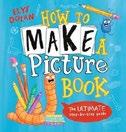
Interested in creating a picture book? Look no further.
Directly addressing readers, the author/ illustrator (depicted here as a worm) offers guidance to would-be writers and artists. Elys and her quirky assistant, Bert (a blue bug), begin by discussing a few of their favorite things—among them dinosaurs and pizza—and develop them into a full-fledged book about
Marge, a pizza delivery dino turned chef. Step-by-step sections cover inspiration, characters, setting, and plot, as well as more advanced concepts such as pagination, color theory, and bookbinding. Each section includes an explanation, examples, and an activity prompt to help children create a story of their own. This structure lends itself well to integration into classroom activities or writing workshops, especially given that some children may need adult support to complete the activities. Elys and Bert’s relationship imparts levity to the instructional content, although their dialogue adds to an already-lengthy work. The detailed descriptions and activities will limit the book’s audience to children who already have interest and skill in both writing and drawing. Those who do fit the bill, however, will find this offering an exciting launchpad for their creativity.
A pint-size masterclass for aspiring picture-book creators. (Picture book. 7-11)
Drage, Emma | Illus. by Carmen Saldaña | Templar/Candlewick (32 pp.) $17.99 | July 16, 2024 | 9781536234978

A sweet tale to help adults gently ferry children toward peaceful slumber by using mindfulness techniques.
As sleepy youngsters glide through the natural world, they’re invited to say good night to drowsy elephants, giraffes, turtles, and other creatures; occasionally, the animals are depicted nodding off with companions or progeny. Kids are encouraged to employ various relaxation methods and take deep in-out breaths. By performing these activities, they’ll hopefully become one with their surroundings and achieve a state of mindful peace. Drage urges readers to “let the day go,” “think positive thoughts,” “let the relaxing feeling flow through your body,” and “relax in your bed.” The final page asks youngsters to “gently close your eyes” and fall asleep
Kirkus Starwith a majestic smiling whale and its child. This lovely book is expressed in soothing prose that sets an appropriately tranquil bedtime mood; the sights of the delightful sleepy animals throughout are very comforting. The gorgeous hues of the digitally colored pencil and watercolor illustrations burst from the pages. Additionally, little ones will learn a thing or two about the animals’ habitats and preferred sleeping habits. An appealing, relaxing, and peaceful journey guaranteed to bring a restful night’s sleep. (author’s note) (Picture book. 4-7)
Ehlert, Molli Jackson | Illus. by Fanny Liem | Feiwel & Friends (32 pp.)
$18.99 | Aug. 13, 2024 | 9781250854452
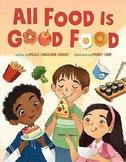
An uplifting ode to food’s tastes, functions, and varieties.
A child’s tummy rumbles one morning: “That’s your body saying, ‘Feed me!’” Subsequent spreads feature children engaged in various activities while snacking. A juice box gives a child energy to ride a scooter. Chips fuel doodling. A plate of cookies sits beside a youngster who gazes through a microscope. “All food has a purpose,” whether giving us “energy to wake up” or “strength to do hard things.” Best of all, food is yummy and will “make your taste buds sing.” Ehlert digs even deeper into food’s effects on the body as she briefly explains the functions of fats, carbs, proteins, and sugar. Short snippets about where food comes from and depictions of various mealtimes close out this smorgasbord of informational foodie fun. In addition to being a
delightful contrast to the cadre of books that yuck someone else’s yum, this affirming title resists diet culture. A section of FAQs for grown-ups explains the concept of intuitive eating (listening to our body’s signals and eating the foods we’re craving) and the importance of food neutrality (not ascribing moral judgments such as unhealthy to food). The sheer variety of foods included in the colorful, cheerful illustrations is like a delicious sampler platter. A child with a cochlear implant, wheelchair users, and a youngster with a prosthetic arm round out the diverse cast.
A recipe for success. (Picture book. 4-8)
Elle, J. | Bloomsbury (304 pp.)
$17.99 | July 9, 2024 | 9781547606740

Two young witches have an adventurous spring break at a magical camp. Kyana Turner returns after saving Park Row Magick Academy from closure in A Taste of Magic (2022). Now the school is in the position to create a thriving environment for her local magical community. However, the responsibility seemingly falls to Kyana to keep the other students engaged and connected—and she’s feeling the pressure. Ashley Martinez, Kyana’s best friend, is an introvert who prefers the solitude of being in the Between Realms, and she’s not thrilled when her mom suggests yet another spring break spent at Enrichment Camp. That is, until she hears that a famous inventor who specializes in Availables—magical creatures that tether to inanimate
A child hears music in every sound, however ordinary.
ELOÍSA’S MUSICAL WINDOW
objects in our realm—will be there. After Kyana is mysteriously attacked by an Available, leaving her susceptible to drastic emotional mood swings, the girls decide that attending camp might help them find a cure. However, their plans change when the portals unexpectedly close, trapping all the campers on the island. The brilliant young protagonists work together with their allies to figure out what’s happening, uncovering a dastardly plot along the way. Told in Ashley’s and Kyana’s dual perspectives, the book immerses readers in a richly whimsical magical world. The writing is straightforward and accessible yet engaging enough to keep readers interested. The diverse cast of characters who make up the Magick community further reinforce themes of allyship and recognizing different strengths. A heartfelt follow-up, perfect for readers in need of a bit of courage. (Fantasy. 8-12)
Elliot, Rachel | Illus. by Genevieve Lacroix Thames & Hudson (48 pp.) | $18.95 June 11, 2024 | 9780500653395
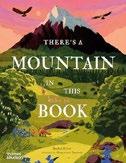
Shaped gatefold flaps add further detail to visits through mountainous habitat zones and up slopes on four continents.
Dubbing any mountain (redundantly) an “interconnected ecosystem,” Elliot invites readers to take particular note of local flora and fauna as she leads expeditions up Kilimanjaro and generic slopes in the Rocky Mountains, the Alps, and the Himalayas—highlighting at each stop just one of its four habitat zones, from foothills to snowy summits. Using expansive landscapes as backdrops, Lacroix superimposes images of journal pages with sketches of a skimpy assortment of plants and animals sharing space with brief nature notes; on select spreads, contoured gatefolds open to add closer looks or to peek beneath
the surface to reveal lake and cave life or the deep structures of volcanos and other mountain types. Guidelines for young explorers and warnings about changeable mountain weather will make these imaginary journeys more immersive, as will a closing calendar recommending the best times of year to scale major peaks in several parts of the world. Human figures are rare; some appear to be people of color. Stimulating fare for armchair mountaineers. (glossary, index)
(Informational picture book. 7-9)
Ellis, Deborah | Groundwood (248 pp.)
$18.99 | Aug. 6, 2024 | 9781773068572
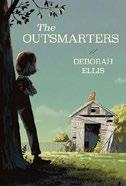
Kate’s advice booth is gaining traction, but keeping her anger in check can be challenging in a small Canadian town steeped in secrets and where people’s assumptions can feel limiting.
Twelve-year-old Kate has lived with her irascible grandmother for several years. She does chores at Gran’s business (the Junk Yard) and yard work for neighbors—though she chafes at Gran’s habit of teaching her real-world lessons by taking a hefty cut of her earnings. Still, Kate decides it’s worth renting an old shed on Gran’s property for her summer moneymaking idea, and she distributes flyers announcing “PHILOSOPHIC HELP / Get answers to life’s questions from History’s Greatest Thinkers. / $2 per question.” Kate leans on angermanagement techniques from a ’70s publication called Get Back to Groovy, scavenges usable cast-offs in the Absolutely Unsellables back lot, and finds solace among friends who are grappling with their own issues. Kate’s increasing desire to understand her past heightens Gran’s fears about the possible effect of Mom’s dysfunction should she reenter Kate’s life. Kate’s first-person narration allows her quirky, perceptive, and wryly funny
worldview to shine. The main characters are richly drawn, while a couple of the baddies are more one-note evil. Ellis deftly presents subplots that explore serious and troubling themes without minimizing their impact or unseating Kate as the center of the story as the various strands converge in a hopeful ending. Most characters read white. An insightful young person makes a powerful difference in this emotionally astute work. (Fiction. 10-13)
Eloísa’s Musical Window
Engle, Margarita | Illus. by John Parra Atheneum (40 pp.) | $18.99 Aug. 27, 2024 | 9781665935289
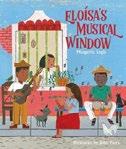
A child hears music in every sound, however ordinary.
Eloísa loves music, but her family can’t afford a radio. So she sits by the window, “listening to la música that floated in from a neighbor’s house.” Other sounds surround Eloísa. Parrots and doves share “nature’s gentle serenades,” cats and dogs meow and bark, el lechero’s cow clip-clops, and a boy on a horse tap-taps past the window as she and her brother, Pepe, watch. It’s enough to make Eloísa run outside and dance—but she’s too shy. Outgoing Mamá would be dancing, but alas, she’s sick in bed with a fever; Papá goes in search of medicine. One sunny day, the neighborhood children gather near Eloísa’s window, maracas, claves, drums, and more in hand to create música. Heartened by the festive sounds, a recuperated Mamá rises from bed, aided by Eloísa, Papá, and Pepe, as music beckons from the street. Drawing from her mother’s childhood stories, Engle tells a tale of everyday inspiration, propelled by a lilting text that reverberates. Parra’s
acrylic paint artwork uses warm colors and earth-toned landscapes to depict a Cuban neighborhood brimming with smiling, brownskinned faces. An appended catalog succinctly traces the origins of Cuban musical instruments. A harmonious triumph.
(Picture book. 4-8)
Fang, X. | Tundra Books (48 pp.)
$18.99 | Aug. 6, 2024 | 9781774882023
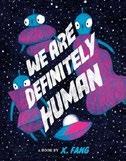
Three blue, oddly shaped strangers appear in Mr. and Mrs. Li’s backyard one night. A UFO is seen falling from the sky behind a small farmhouse. Mr. Li goes to investigate, and the big-eyed creatures introduce themselves. “Hello,” the tall one says. “We are DEFINITELY human.” They also claim to be having car trouble and explain that they are from…Europe. With impeccable comedic timing and deadpan humor, the actual humans in the story respond with help and kindness. Mr. Li gives them shelter, then takes them to town to get supplies. There, they meet other kind humans who want to lend a hand. Soon, there’s a little car-fixing party in the woods with music, hot dogs, and dancing. No one bats an eye at the visitors’ claim that they “make business” and “play sports ball” or need instruction on how to eat. The importance of kindness shines through this farcical tale, and the creatures know it, too: “Wherever they went next, they would remember the kindness of humans, and do what kind humans do—offer help to anyone who needs it.” Finely detailed and textured illustrations complement the humor. The Lis are cued East Asian; other human characters are racially diverse.
DEFINITELY a good book.
(Picture book. 4-8)
Ringgold was known for her work in painting, quilt art, and children’s books.
Faith Ringgold, the artist known for her work in painting, quilt art, and sculpture, as well as for writing and illustrating children’s books, has died at 93, the New York Times reports.
Ringgold was born in Harlem and began painting and drawing as a child, a hobby she picked up because of chronic asthma. She was educated at the City College of New York and worked as a public school teacher for 18 years while pursuing her art career. She embarked on her first art collection, the American People series, inspired by the Civil Rights Movement, in 1963. She later pivoted to quilt art and received acclaim for pieces including Who’s Afraid of Aunt Jemima? and



Change: Faith Ringgold’s Over 100 Pounds Weight Loss Performance Story Quilt .
In 1991, Crown published Ringgold’s first children’s book, Tar Beach, which won the Coretta Scott King Award. In a starred review, a critic for Kirkus praised the book as “beautiful, innovative, and full of the joy of one unconquerable soul.”
Her other books include Aunt Harriet’s Underground Railroad in the Sky, Cassie’s Word Quilt, Bronzeville Boys and Girls (written by Gwendolyn Brooks), and We Came to America Ringgold’s admirers paid tribute to her on social media. On X, artist and author Ayanna Dozier posted, “My fourth grade teacher got me a book of her work, [which] was fundamental in seeing and setting me on the path of pursuing visual art. Her work, especially for children, unlocks a sense of possibility, that they can do it.”—M.S.




A Pennsylvania school board voted to reinstate the out gay actor and author’s middle school talk.
Following a public outcry, a Pennsylvania school board has reinstated Maulik Pancholy’s planned author visit to a middle school, the New York Times reports.
The Cumberland Valley School District had voted unanimously to rescind the out gay actor’s invitation to speak about his children’s books, The Best at It and Nikhil Out Loud, at Mountain View Middle School. Bud Shaffner, one of the school board members, had said, “He labels himself as an activist, he is proud of his lifestyle, and I don’t think that should be imposed upon our students at any age.”
The cancellation made headlines and drew

objections from many, including the Cumberland Valley School District superintendent and student Flora Hicks, Pancholy’s niece, who told the school board, “Your choice to cancel the assembly has also sent out a very important message to the LGBTQ community that they aren’t accepted.”
Pancholy himself spoke out against the cancellation, saying, “When I visit schools, my ‘activism’ is to let all young people know that they’re seen. To let them know that they matter.…”
The school board ultimately voted 5-4 to reinstate Pancholy’s visit. Board member Shaffner reversed himself and apologized, saying, “I will accept the blame because of the insensitive word I spoke on April 15. I fully understand the interpretation of my poor word choice.”—M.S.

Gabeira, Maya | Illus. by Ramona Kaulitzki | Abrams (40 pp.) | $18.99 Aug. 6, 2024 | 9781419760013

A Brazilian professional surfer recalls challenges overcome in her youth and expresses strong environmental concerns. Depicted in Kaulitzki’s nautical-themed illustrations as a figure of ambiguous age with light brown skin and evocatively flowing hair, Gabeira dives into her story as she dives visually over and under the waves—writing rapturously in third person about how neither asthma nor bullies kept her from catching waves or exploring and delighting in the wonders of the bright “rainforest of the sea.” After swimming with whales and sea turtles, she encounters a great white shark trailing fragments of fishing net who warns her of the dangers of overfishing and plastic pollution.
“Life here is disappearing fast,” he tells her. “Please be our voice.” And so in response she returns to the shore to speak to small groups, to join sign-wielding marchers, and overall to deliver a message: “The ocean is in danger, and we must protect it. The time to act is now!” In more personal language, she closes with a restatement of that message, with leads to ocean conservation organizations with which she works. Figures in her audiences are racially diverse but uniformly serious in their cause. A strong addition to the chorus of voices demanding action. (Informational picture book. 5-7)
Gardner, PJ | Illus. by David Mottram
Balzer + Bray/HarperCollins (208 pp.)
$18.99 | July 23, 2024 | 9780063134713
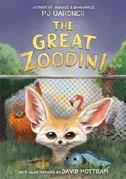
A fennec fox named Zoodini is determined to escape from wherever humans put him.
Zoodini, who’s been let down by everyone he’s ever trusted, constantly attempts to break out of the zoo, where he’s a misfit, and attain a life of fame and fortune. He’ll be safe—and he’ll never have to depend on anyone else again. The closest thing he has to family is his best friend, Hoppy, a stuffed rabbit who also functions as his conscience. When the zoo ships Zoodini off to Twin Buttes Animal Sanctuary, at first he thinks it’s just another place to escape from. But—against his will—he starts to get attached to the accepting, friendly animals there. Then the kindly owner, Latine-coded Linda, is tricked by her nefarious cousin into taking a trip to Denver, leaving the animals vulnerable. Zoodini seizes the chance to manipulate the others into helping him with his biggest escape attempt yet. A further twist heightens the stakes for all the animals—and the emotional stakes rise as Zoodini continues to lie about his motivations. The schemes are wacky, and the animal characters are quirky yet endearing, brought to life by Mottram’s black-and-white spotlight illustrations. Themes of connection and trust (and mistrust) are well incorporated and rooted in
empathy. Zoodini’s once-bittentwice-shy characterization leads to compelling internal conflict as he’s torn between playing it safe and forging real connections. Final art not seen.
Adorable anthropomorphic exploits with emotional depth. (Fiction. 7-12)
Garland, Sally Anne | Beaming Books (32 pp.) $18.99 | July 23, 2024 | 9781506490151

A little one confronts perfectionism. Poppy the piglet has a new box of crayons with perfect points and many colors to choose from. While her friends are busily scribbling away, Poppy’s not using her crayons. If she does, she’ll spoil them, and they won’t be perfect. Poppy’s friends generously lend her their worn-out, imperfect crayons. She accepts, unconcerned they might break or be otherwise harmed, since they’re already shabby. Temporarily forgetting about perfectionism, Poppy works on a picture of a rainbow. Now, however, she needs “just a touch of lilac.” Nobody has it. Hmm. What color is dilemma ? Poppy remembers her new crayon box, then surveys the pictures her friends have produced with beat-up crayons. Is it finally time for Poppy to relent? Color the answer “yes”—to the tune of Poppy scattering all her new crayons around so her pals can share them. They work together on a large drawing and make Poppy’s crayons imperfect, which is perfectly OK with her. Poppy realizes that friendship, generosity, helpfulness, and cooperation beat perfect crayons. This sweet story makes the point that maintaining friendships and having fun, especially collaboratively, are more important than holding on to unworkable, rigid ideas. Poppy demonstrates agency, making the wise decision to use and share her new property in service of fun and
companionship. The lively tale is, aptly, colorfully illustrated, with an endearing all-animal cast. A charming story about friendship, sharing, and helpfulness. (Picture book. 5-8)
Gearing, Tessa | Illus. by Chris Jevons Andersen Press USA (32 pp.)
$18.99 | Aug. 6, 2024 | 9798765643488

Book characters wreak havoc in a classroom. A paleskinned, bespectacled child brings a favorite storybook to school for show and tell; things go wrong immediately. The book’s supernatural characters—a brown-skinned witch, a ghost, a green-skinned goblin, a dragon, and an alien—escape the book and create mischief. The alien leaps into the young narrator’s lunchbox, while the witch gets into the child’s gym bag before tying up the little one’s shoelaces. Not to be outdone, the ghost gets stuck in the toilet and raises a stink in more ways than one. As show and tell approaches, the child is desperate to corral everyone back into the book and finally does, just in time. The child is initially reluctant to show the book off, wary of the creatures’ behavior, but they’re “WONDERFUL!” The other students love the book, and all ends well—or does it? This U.K. import presents a humorously over-the-top scenario that kids will find very amusing. The tale’s premise—that books are inherently magical and exciting—is one that many readers will agree with, and the
outlandish humor is entertaining indeed. The writing, however, is less effective. The adventure is narrated in clunky first-person verse by the protagonist. Nevertheless, children will chuckle over the frenetically busy, colorful illustrations and the droll portrayal of the various creatures. The teacher is brownskinned; classmates are racially diverse; one child uses a wheelchair. A lively read that will have kids wondering what antics their own favorite characters might get up to. (Picture book. 5-8)
Rachel | Illus. by Clare Owen Nosy Crow (32 pp.) | $17.99 Aug. 6, 2024 | 9798887770789
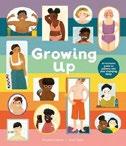
A guide to the ins and outs of maturation. Greener and Owen’s book covers physical and emotional changes, friendship, self-care, and digital citizenship and safety. Written in second person, the text addresses young readers directly, inviting them to consider their own experiences. The book both normalizes and affirms the diversity of human bodies and experiences, whether biological realities (“These changes happen at a different speed for everyone”) or bodily autonomy and choice (“Not every grown-up can or will choose to use their body to make a baby. There are lots of different ways to be a grown-up”). Illustrations rendered in gentle hues include informative biological diagrams and tools such as menstrual products; the
An extensive and accurate puberty primer.
art portrays people of diverse racial identities, abilities, religions, and body sizes going about their lives. A section on boundary setting addresses consent and the importance of listening when someone says no, though it doesn’t address affirmative consent. The author doesn’t discuss transgender experiences (beyond acknowledging that some people’s gender identities are at odds with the sex they were assigned at birth) or puberty blockers; still, her use of words such as some and most helps to avoid overgeneralization: “During puberty, most people born with a vulva will start having periods.” Frequent reminders to talk with a “grown-up you trust” responsibly keep the focus on young readers and their potential needs.
An extensive and accurate puberty primer. (extra questions readers might have, resources, glossary) (Nonfiction. 8-14)
Guo, Ye | Eerdmans (40 pp.)
$17.99 | Aug. 27, 2024 | 9780802856241

Opposites attract when Goat and Bunny strike up a friendship. When Goat discovers that he’s run out of his favorite canned grass, he heads to the supermarket to buy more and walks right into a meet-cute with Bunny, who also enjoys this delicacy. Though they have little else in common, they become fast friends. While both frequent the same coffee shop, Goat, who takes his coffee black, thinks Bunny adds too much sugar. “But it is okay, because they can still enjoy coffee together.” The titular phrase is repeated when small mishaps occur: when the two briefly get lost in the woods, when they miss their train, and when Goat can’t fit through the door to Bunny’s warren. No matter what, these friends’ mutual support
Greener,and respect are on full display. The spare text of Guo’s English-language debut doesn’t offer a full story arc, but rather brief episodes fleshed out by fully realized visual characterization and whimsical settings. Throughout, illustrations with monoprint backgrounds and details added in pencil, colored pencil, pastel and wax pastel, watercolor pen, ink, and collage display impressive command of multimedia in a style somewhat reminiscent of Maira Kalman’s work, with a dash of Oliver Jeffers to boot. A stellar story of pals weathering ups and downs with aplomb. (Picture book. 3-7)
Hamilton, Kersten | Illus. by Barry Gott | Viking (32 pp.)
$18.99 | July 9, 2024 | 9780593528396
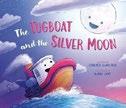
A massive cargo ship is unable to free herself without help from the moon. Tug the Tugboat notices that his friend the moon looks quite small. “I only look little because I am not yet close,” the moon explains. “It’s all part of my dance.” Tug loves the moon’s dance—it brings in the tides that allow boats to sail. Unfortunately, when the cargo ship becomes wedged in the sand and silt, the moon is still too far off to intervene. Tug attempts to help, as do three diggers and a dredger, but it’s impossible to budge the vessel from the canal. The ship is held fast for seven days until the moon reaches her largest size. Now that she’s “the fullest and closest and strongest she could possibly be,” she uses her gravitational pull to create a massive wave that lifts the ship up—with some assistance from Tug and company. The backmatter is essential to understanding what happens to the ship; it clearly explains concepts such as tides and gravitational pull. Inspired by the true story of the Ever Given , which in 2021 became stuck in the Suez
A delightful journey; readers will be eager for repeat trips.
I AM LA CHIVA!
Canal, the narrative is related in a breathtaking manner that will leave readers on the edge of their seats. Action-filled digital artwork featuring charmingly anthropomorphized characters effectively supports the text.
A dynamic rescue tale laced with an age-appropriate science lesson. (Picture book. 4-8)
Harlow, Poppy & Laura Jarrett
Illus. by Elisa Chavarri | Viking (40 pp.) $18.99 | May 14, 2024 | 9780593527108

In this collaboration from CNN Today anchor Harlow, Saturday TODAY anchor Jarrett, and illustrator Chavarri, a young girl and her class consider what love means to them.
After Ms. Clementine asks the class what images the word love conjures up, the room erupts with answers. Classmates describe special capes, baby siblings, and stuffed animals, while Grace feels overwhelmed as she considers the many things she loves. Then Ms. Clementine gives the class their assignment for the next day: “If love were a color, what color would it be?” Grace thinks hard on her walk home, struggling to pick only a single color, but when she discovers that her older brother, Dante, is home from college and making his famous gumbo for dinner, Grace knows exactly what color love is for her. While Harlow and Jarrett offer sweet prose and a cheerful look at the multifaceted ways love can manifest and the many meanings it can take on, the text nonetheless falls a little flat, with a
narrative that veers away from calm and uncomplicated into facile territory. Still, Chavarri’s illustrations bring to life what could be stagnant scenes; the art’s charm, vibrancy, and easy whirls of movement sweep readers along to the (quite literally) heartful final spread. Grace and her brother are Black, and a multiracial ensemble of secondary characters makes up Grace’s classroom. Sweet, if somewhat bland, reflections on love. (Picture book. 3-6)
Harper, Jamie & Heather Lang Illus. by Jamie Harper | Candlewick (32 pp.) | $17.99 | May 7, 2024 9781536217964 | Series: Animal Heroes

In the animal kingdom, some dads are super-involved in parenting. This entertaining companion to Lang and Harper’s Supermoms! (2023) uses the same graphic format to introduce 18 animal fathers. Comic strips depict recognizable but stylized animals in their habitats. A brief line of text that tells a very short story explains the male’s role (“An owl monkey dad plays follow-the-leader with his young”). Expanding on the text, the illustrations feature sly jokes: The horned owl chicks are less than pleased by the offer of skunk for dinner. The animals make humorous commentary in speech bubbles, much of which will elicit smiles from adult readers. Burying beetles carry a dead mouse singing, “Hi-ho…hi-ho,” and a sandgrouse flies off in search of water singing, “Up up and awaaaaaaaay.” Organized by task, the book covers
male species that incubate eggs, build nests, conceal the vulnerable babies, and feed, protect, and teach their young. The male greater rhea, pictured on the cover, “takes the prize,” since he does all the child rearing. Some animals will be familiar (seahorses, wolves), but many may be new, especially to North American children (the mallee fowl, the baya weaver bird). Two concluding pages reintroduce each species with its particular “superpower,” notes where each lives, and offers a surprising fast fact. The excellent backmatter is full of recommended books, websites, and other resources. A winning combination of humor and intriguing animal facts. (Informational picture book. 3-7)
Hemming, Alice | Illus. by Nancy Leschnikoff Ivy Kids Eco/Quarto (32 pp.) | $19.99 Aug. 6, 2024 | 9780711295384

A lonely bison searches for companionship. This gentle tale stars an unhappy bison who’s in need of a friend. As Bison searches for “someone to trample through the woods with,” she goes about her usual activities and meets the wildlife neighbors who benefit from her actions. Her habit of tearing off strips of bark to eat attracts insects for the woodpecker to eat, the dung beetle eats the poop she produces, and when she rolls in the dust, she creates spots for the lizard to sunbathe. Though they’re grateful for her help, these creatures prefer staying where they are; they aren’t good friendship candidates for a wandering bison. But a solitary butterfly is a perfect companion for her rambles, and they embark on a beautiful friendship. Hemming uses a lighthearted friendship story to explain the role of a keystone species, which she explores further in the backmatter; she also
notes the differences between American and European bison and discusses the Wilder Blean project, which introduces European bison into the woodlands of Blean in the U.K. Leschnikoff’s digital illustrations depict the animals with cartoonlike googly eyes and expressive faces and bodies, but they and their surroundings are recognizable. The effect is sweetly amusing and very appealing. A winsome friendship story with an important environmental message. (Informational picture book. 3-7)
Hernández, Karol | Illus. by Lorena Alvarez Gómez | Dial Books (40 pp.)
$18.99 | July 9, 2024 | 9780593529201

Climb aboard for a trip you won’t forget! La Chiva, a bus that drives through the Andes, narrates this peppy tale. Painted with vibrant hues and patterns, this open-air bus rises early—“before Señor Sun”—and picks up farmers and their products, from Doña Ines and her arepas and huevos to Don Ernesto and his pig. La Chiva and the passengers sing as they roll past a verdant countryside. But soon La Chiva gets a flat tire and must pull over. Luckily, everyone works together to replace the tire with a spare—they are a community, after all. Once they reach the lively town square, the passengers disembark and sell their wares to grateful customers, while children play tag and hopscotch. Before the day is over, the group has a present for La Chiva (a replacement tire for the spare), but to La Chiva, the people themselves are the best gift. Alvarez Gómez makes superb use of color: the lush greens of the surrounding country, punctuated by pops of red, orange, and purple; rich earth tones for the buildings in the square; and, of course, La Chiva, a veritable rainbow. Interspersed with Spanish, the rhyming
verse bounces along as energetically as the titular bus. In the backmatter, Hernández explains that La Chiva buses are common to rural Colombia and notes that the story is rooted in her own childhood memories.
A delightful journey; readers will be eager for repeat trips. (author’s note, glossary) (Picture book. 2-5)
Herz, Henry | Illus. by Mercè López Tilbury House (32 pp.) | $18.95 April 15, 2024 | 9781668936849

An introduction to gravity. The book opens with the most iconic demonstration of gravity, an apple falling. Throughout, Herz tackles both huge concepts— how gravity compresses atoms to form stars and how black holes pull all kinds of matter toward them— and more concrete ones: how gravity allows you to jump up and then come back down to the ground. Gravity narrates in spare yet lyrical verse, explaining how it creates planets and compresses atoms and comparing itself to a hug. “My embrace is tight enough that you don’t float like a balloon, but loose enough that you can run and leap and play.” Gravity personifies itself at times: “I am stubborn—the bigger things are, the harder I pull.” Beautiful illustrations depict swirling planets and black holes alongside racially diverse children playing, running, and jumping, all thanks to gravity. Thorough backmatter discusses how Sir Isaac Newton discovered gravity and explains Albert Einstein’s theory of relativity. While at times Herz’s explanations may be a bit too technical for some readers, burgeoning scientists will be drawn in. An in-depth and visually pleasing look at one of the most fundamental forces in the universe. (Informational picture book. 7-9)
Kirkus StarHicks, Deron R. | Clarion/HarperCollins (336 pp.)
$19.99 | July 30, 2024 | 9780063306417

A budding journalist uncovers a ring of saboteurs in his North Carolina town in the early 1940s. Twelve-year-old Henry Hamilton yearns to be a reporter like his hero, Edward R. Murrow, but his attempts to track down real scoops have so far been stymied by Willard Presley, a new reporter for the Asheville Citizen. So when Henry, as a junior helper for the town’s teams of air raid wardens, gets wind of something fishy going on involving the nearby Biltmore Mansion and Estate, he sets out on his own to get the story. Hicks ups the stakes nicely by adding a trove of masterpieces transported in secret to the mansion from the National Gallery of Art in Washington, D.C. (which actually happened), as well as a large bomb—and even trotting in President Franklin Roosevelt himself to preside over an air raid blackout drill. Through a combination of pluck, clever deduction, and some unexpected help from Presley, Henry figures out what’s going on in the very nick of time and plays a significant role in narrowly averting a major catastrophe. The author at first expends too much effort capturing the slower pace of life in wartime Asheville, picks up speed after the leisurely first half, and positively races through the climax. The cast reads white, and all major characters are male. A slow start and quaint casting but an exciting finish. (author’s note) (Historical mystery. 9-13)
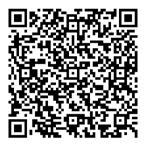
A moving post–Civil War story of comradeship and self-discovery.
THIS OPENING SKY
Ho, Richard | Illus. by Sibu T. P.
Roaring Brook Press (40 pp.) | $19.99
Aug. 20, 2024 | 9781250834171

This evocative tour of New York City’s Lower East Side celebrates the neighborhood’s immigrant cultures. A tan-skinned Jewish child, old enough for an independent outing, walks through the neighborhood toward the many varied food markets. Along the way, he connects with friends of Puerto Rican, Chinese, and Indian descent, and they gather food from each of their cultures. The wistful text juxtaposes the streetlevel specifics of urban living—a kosher grocery store, a bodega cat, a roast duck hanging in a window—with philosophical musings about the meaning of home. The digital illustrations mirror this effect, as foregrounded exchanges in the Manhattan markets give way to nostalgic backgrounds depicting the children’s families’ homelands. The postures of the children and their neighbors convey a welcoming warmth, inviting readers—and possibly newcomers—into the markets’ small domains. A quirk of the illustrated eyes, however, makes the lighter-skinned characters look overwhelmingly exhausted, a distracting idiosyncrasy that works against the deliberate positivity of the text. Backmatter provides brief context for each of the Lower East Side cultures depicted in the book, and maps on the endpapers hint at further foods and cultures around the corner. Though the text acknowledges changes over time, it doesn’t mention gentrification, which threatens the robustness of all these neighborhood microcosms.
A rose-colored homage to the power of food to build community in a Manhattan melting pot. (author’s and illustrator’s notes) (Picture book. 4-8)
Hollman, Kelly & Charlotte Watson Sherman Milk & Cookies Press (160 pp.) | $14.99 paper July 23, 2024 | 9781638192152

As Reconstruction begins, two 12-year-old girls join forces and head north to find their families. Aurelia and Halle Lujah, each living on a different Virginia plantation, narrate this verse novel, set in 1865. Aurelia, who is white, reminisces about a privileged life of parties as she attempts to raise vegetables now that the people her family formerly enslaved have left. Halle, who is Black, renames herself now that she’s free and sets out in search of her parents. The girls’ paths cross, and a tragedy finds Halle tending to Aurelia, who wants to find her brother, a soldier who fought with the Union. Both realize it’s safer to travel together, and they don men’s clothes. Aurelia now goes by “Elly,” a nickname from her beloved brother. Together the girls cross a bloody battlefield and navigate using Halle’s knowledge of the North Star. They protect each other at great personal cost, and true friendship blossoms. Elly’s and Halle’s distinct voices and strong personalities balance each other nicely as each in turn gives and receives help. While the authors tread ground that will be familiar to readers of historical fiction—Elly teaching
Halle to read—they also include thought-provoking moments as the characters contemplate death, wonder whether good acts can counteract past misdeeds, and encounter a formerly enslaved woman who has chosen to stay on her plantation despite knowing that she can leave.
A moving post–Civil War story of comradeship and self-discovery. (historical notes, publisher’s note) (Verse historical fiction. 11-14)
Hussain, Nadiya | Illus. by Ella Bailey Crocodile/Interlink (32 pp.) | $18.95
Aug. 6, 2024 | 9781623716820
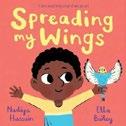
Chef and TV personality Hussain and illustrator Bailey team up once more, this time for the story of a boy and his parakeet.
A sky-blue bird named Rayf sits on the shoulder of an unnamed brownskinned boy who narrates. They go everywhere together: the supermarket, Granny’s house, the top of a mountain. Bailey illustrates their relatively simple world with cheery colors, and everyone has big eyes, including some inanimate objects. Despite the friendly vibes, on the first day of summer camp, the boy worries when he notices that none of the other children have birds. He hangs his coat up, concealing Rayf in the pocket: “As long as Rayf doesn’t fly or sing, I will be okay. No one will know that I am different.” The boy plays with the other children, tamping down his sadness about Rayf until it’s time to go outside. The boy dons his coat, and once all the kids are in the garden, Rayf flies free before alighting on the boy’s hand. The boy reddens, embarrassed to be different. His campmates, however, are bursting with praise and enthusiastic questions. The story ends abruptly, especially considering its leisurely start. While many kids will relate to this straightforward tale—a clear metaphor for learning to embrace one’s differences—others will be left with
questions: How do we cultivate self-love if others don’t accept our differences? Look here for uncomplicated validation. (Picture book. 3-7)
Jeffers, Oliver & Sam Winston Candlewick (56 pp.) | $18.99 Aug. 6, 2024 | 9781536235500
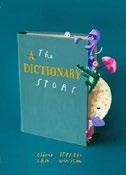
The creators of A Child of Books (2016) are back with another charming work of metafiction. A little dictionary notices that while other books tell stories, she’s just a list of definitions. Eager for change, Dictionary decides to bring her words to life, and things almost immediately get out of hand. A hungry alligator invades the D pages in search of a doughnut, which bounces further into the dictionary, running into a ghost, the moon, and a queen. All the while, and on almost every page, clues to the personalities, wants, and needs of the now-living words appear in the dictionary definitions, which are original, hilarious, and impressively plentiful. Things literally spiral into chaos thanks in large part to the appearance of a tornado, spilled ink, a Viking, and more. It takes Dictionary’s friend Alphabet, who has a helpful little song, to get things back in order once more. Unimaginable care has been taken with the very real handmade books that visibly bookend the story (the dictionary is noticeably worse for wear by the end). Meanwhile, pages are filled to the brim with tiny details for eyes both young and old to find and enjoy (for instance, the editors of this dictionary are listed as “Woliver Effers and Jam Spinston”). The occasional human characters have fanciful skin tones. With hijinks and hilarity hidden on every page, this is a sweet, strange, wordy tale bound to delight all who pick it up. (Picture book. 4-10)
Jonker, Travis | Illus. by Matthew Cordell | Viking (40 pp.) | $18.99
Aug. 20, 2024 | 9780593350577
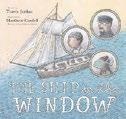
A simple ship yields a (relatively) big adventure in this classically told tale.
In a little cabin on a little lake, there lives a mouse named Mabel, a boy, and a man. The man constructs a very special model ship. “He wouldn’t even let the boy help.” Every night when she looks at it, Mabel wonders if the ship is seaworthy. She lets herself dream of piloting it through seas both rough and calm, “free and full of wonder.” When an opportunity presents itself, Mabel hesitates but reasons that the chance may never come again. Readers will be relieved to find that the ship does indeed float, but when the ship meets with tragedy, both Mabel and the man will need to find a solution. Jonker cleverly juxtaposes the mouse’s character arc alongside that of the grown man. Whereas Mabel must summon the courage to live her dreams, the man must overcome his fear of letting other people help him with his own. Cordell, meanwhile, outlines panels with rope, then fills his images to the brim with a busy cross-hatching technique that gives the book a timeless feel. Both boy and man in the book have light-brown skin. Arrr, ’tis a seaworthy tale, so set your compass toward fulfilling your dreams, and she’ll not steer you wrong. (Picture book. 3-6)
Kay, Camelia | Illus. by Allyn Howard Cameron Kids (32 pp.) | $16.99
Aug. 13, 2024 | 9781949480443
Series: Seasonal Parade

A young fox delights in the coming of autumn.
“Here comes fall. The parade is about to
>>>





 Vera Brosgol
Vera Brosgol
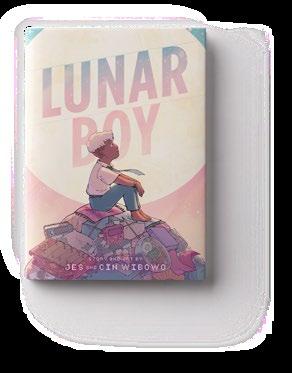


start!” Accompanied by a parent, the little fox looks on eagerly. On each following spread, the fox joyfully observes other animals gathering to celebrate the harbingers of fall, from the “first sunflower” to “plump orange pumpkins” and, eventually, “the first golden leaf, dancing as it falls.” The phrase “Here comes,” which appears on almost every spread, builds anticipation with each page turn as readers wonder what new animal or plant will show up next. Howard’s brushwork, with its vibrant oranges, blues, and yellows, beautifully captures the season’s energy and the animals’ soft fur. It’s refreshing to see animals as disparate as badgers, spiders, and a hedgehog included. Little ones and their caregivers will enjoy poring over the pages as they linger over each animal and learn their names. The simple story ends with all the animals joining in a glorious tumble in the “soft piles of fallen leaves.” This satisfying conclusion is complemented by cozy endpapers with smaller images of the fox immersed in activities such as cavorting with a butterfly and snuggling with its parent. Gentle words and softly painted illustrations convey the pleasures of autumn for the very young. (Picture book. 1-5)
And Yet You Shine: The Kohinoor Diamond, Colonization, and Resistance
Kelkar, Supriya | Candlewick (48 pp.) $18.99 | April 2, 2024 | 9781536228298

An account of the many lives of India’s Kohinoor diamond.
“A pair of brown hands” extract the fabled diamond from a river. The stone eventually becomes part of “the Peacock Throne,” finds its way onto an unnamed conqueror’s arm, and passes to a series of other unknown owners until it returns “back home— / the land where those
brown hands / first unearthed you.” The diamond ends up in the custody of a 10-year-old boy—“scared and alone, / forcibly separated from his mother”—who is tricked into signing it away to a white man, presumably a British colonizer. Cut down much smaller than its original size, the diamond is embossed onto a British crown—a literal jewel in the crown. Why does the diamond shine throughout these trials and tribulations? The book’s narrator—who addresses the story to the diamond— ultimately concludes that it’s because the stone perceives its true worth. The collage illustrations are absolutely stunning, incorporating vibrant textures and colors that let this work sparkle like the titular diamond. The lyrical text is inspiring, and the use of second person is effective. The story’s lack of specificity, however, adds an ambiguity that detracts somewhat from its emotional resonance; readers will need to consult the thorough backmatter to learn, for instance, that in 1628, Mughal emperor Shah Jahan had the Kohinoor diamond set in a throne shaped like peacocks. The mesmerizing visuals will enchant, but the text will keep many readers at arm’s length. (further reading, bibliography) (Informational picture book. 7-12)
Khan, Hena | Illus. by Nabila Adani Lee & Low Books (40 pp.) | $20.95 May 5, 2024 | 9781643794235

The story of the Al-Qarawiyyin Library in Fez, Morocco, narrated by the building itself. In 859, Fatima Al-Fihri, the daughter of a rich merchant, decided to build a mosque and school. “I began as a small corner for books, where Fatima spent hours
reading, thinking, and dreaming.” Over time, the library explains that it “grew into a grand building.” The library, which served both Al-Qarawiyyin Mosque and Al-Qarawiyyin University, was a tranquil space within bustling Fez. Visitors were greeted by a quiet courtyard filled with fountains and lanterns. A special room secured by copper doors with four locks protected its treasures: “an ancient Quran written on camel-leather pages, a philosopher’s drawings of the stars, and handwritten sheets with ink made from real gold.” Debates by Muslim explorer Muhammad al-Idrisi, Jewish philosopher Maimonides, and many others echoed in the library’s reading rooms. But eventually the library fell into disrepair, and visitors stopped coming. Its once-beautiful tiles were now broken and faded, its ceilings were cracked, and water damage threatened its books. Finally, in 2012, architect Aziza Chaouni restored this historic institution, now the world’s oldest continuously operating library. Adani’s digital illustrations highlight beautiful architectural details such as latticed partitions and suffuse the building with a warm glow. Khan’s first-person prose imbues the subject with both intimacy and a sense of majesty; readers will come away awed at the role of libraries as repositories of knowledge.
A moving tribute to a cultural treasure. (author’s note, glossary, references) (Informational picture book. 5-8)
Khan, Hena | Illus. by Safiya Zerrougui | Knopf (240 pp.) | $21.99 Aug. 6, 2024 | 9780593430484
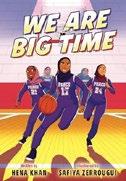
High school freshman Aliya Javaid is miffed about moving from Tampa to Milwaukee. Though she’s now closer to her grandparents, Aliya misses the
A must-read distinguished by its powerful plot and poignant writing.
SAFIYYAH’S WAR
beaches, food, friends, and her basketball team. At her new Islamic school, she tries out for the girls’ basketball team—only to realize they aren’t that good. But with their new, more experienced, coach, Jessica Martinez, they begin to practice harder, focusing both on skills and teamwork. When Aliya, whose family is Pakistani and Indian, gets overwhelmed by balancing schoolwork and practice, her grandfather’s reminder that mistakes are part of learning helps ground her. Over the course of the season, the team improves, drawing a cheering audience. When they’re unfairly matched against a higher-performing team, Coach Martinez’s advice to play their best stands them in good stead. The all-Muslim, hijab-wearing team attracts a fair share of media attention, though reporters always try to pin them down to identity-related narratives. The girls express their discomfort and collectively decide to steer their interviews to basketball and their hopes for the team. Though some of the dialogue is stilted, the story effectively builds on smaller moments and victories as the girls learn to collaborate, iron out team dynamics, and celebrate small victories. Aliya, too, grows and gains confidence in her abilities and talent. The dynamic illustrations make use of interesting compositions to reflect the game’s pace and the characters’ inner growth. An inspiring sports story that focuses on more than the score. (character studies, cover concepts) (Graphic fiction. 8-12)

For more by Hena Khan, visit Kirkus online.
Khan, Hiba Noor | Allida/ HarperCollins (336 pp.) | $19.99 May 7, 2024 | 9780063351868

In this novel inspired by a true account of French Resistance during World War II, a courageous 11-year-old Muslim girl joins the effort to save lives.
Safiyyah has an idyllic life in the Grand Mosque of Paris, where her father works and her family lives. Her existence revolves around browsing maps in her beloved library and spending Saturday afternoons with best friend Isabelle. But on the cusp of the Nazi invasion, everything is about to change. Safiyyah’s Algerian Muslim identity affords her an element of safety, but this fiercely brave girl internalizes the injustices perpetrated on her community—especially her Jewish friends and neighbors—and vows to help any way she can. Uncovering the secrets of her father’s recent strange behavior will force Safiyyah to summon incredible courage to support the Resistance and avoid revealing anything that would put lives at risk. Khan expertly weaves an engaging story filled with compassion, bravery, and commitment to one’s neighbors while addressing difficult truths and the ugly face of war in an informative yet still age-appropriate way. Many of the well-developed characters, such as Safiyyah and her family, are fictitious; others, including the
mosque’s rector and imam, are real historical figures from an underrepresented episode in history who were integral to the mosque’s rescue of between 500 and 1,700 Jews. The book’s messages of interfaith cooperation and respect for human dignity are timely and compelling. A must-read distinguished by its powerful plot and poignant writing. (glossary, historical note) (Historical fiction. 9-13)
Kochalka, James | Top Shelf Productions (168 pp.) | $14.99 paper Aug. 13, 2024 | 9781603095419

The exciting adventures of a boy and his talking elbow. Taking a daffy premise and running with it in notably surreal directions, Kochalka’s episodic comic features a very serious boy (“I wear a tie. See?”), an elbow that develops a mind of its own following a painful bump, breakfast cereal superhero Soupy Boy Action Man, and a toy truck that is evil…or maybe not. “I’m more like the true ESSENCE of your elbow,” explains the disembodied joint, floating in front of the bewildered lad’s face. “My punches are action packed. America is so proud of me,” boasts the plastic action figure. “HONK HONK,” beeps the truck enigmatically. A few freakouts at home and school, followed by a quick dive into the Backpack of Solitude to escape a visit with the principal, lead the bendy lad into and out of escalating calamities culminating in a multijoint surprise ending. If Jimmy’s grave observation that “every boy needs an elbow” seems at first glance to be the takeaway, readers primed for nothing but laffs may be in for a surprise, as the author folds quick takes on “silly” vs. “serious”—not to mention life, death, spiritual apotheosis, and what it means to be “made in America”— into the manic proceedings. Jimmy,
Kirkus Starhis elbow, and his action figure (“Made in Hong Kong. But I’m 100% American now”) are pink-skinned. Hits smack on the funny bone. (Graphic fiction. 6-8)
Kordesh, Katie | Rocky Pond Books/Penguin (40 pp.) | $18.99 Aug. 13, 2024 | 9780593620472

A youngster makes an unexpected, edible friend. Enola, a tiny tot with a wavy mop of brown hair, loves visiting Grandma Mimi. Grandma Mimi is the most easygoing, fun grandmother ever. She creates a blanket fort for Enola to sleep in, serves the best snacks, and even has an adorable pup named Hoagie. For lunch one day, Grandma Mimi makes hot dogs. Enola has never had one. Unfortunately, she can’t eat it, because, as she observes, using a child’s logic, it is “perfectly friendshaped.” (The hot dog has a squiggle of mustard and a tiny smile.) Putting Hot Dog in a stroller, the trio (plus Hoagie) have many adventures throughout the day. They go to the movies, swim in the pool, and even win at bingo (much to the dismay of others—“NO FAIR! Hot dogs can’t play bingo!”). But then, the unthinkable happens. Hoagie…eats…Hot Dog. Great big sobs erupt from a furious, red-faced Enola: “MIMI, HOAGIE ATE HOT DOG! HOW COULD YOU LET THIS HAPPEN!” For the rest of the night, Enola is inconsolable. Displaying a strong understanding of a child’s sensibility, Kordesh concludes her silly yet spot-on tale with a reminder that accidents happen, but forgiveness is always possible. Surrounding friends in the cartoon art are diverse; bigheaded Enola and tattooed Mimi are pale-skinned.
A frank look at conflict resolution. (Picture book. 4-7)
Kunkel, Angela Burke | Illus. by Becca Stadtlander | Random House Studio (40 pp.)
$19.99 | Aug. 6, 2024 | 9780593484388

The life of a great children’s book author and illustrator is set in context.
Born in Brooklyn, New York, in the Hotel Bossert, to a father who favored her brothers, Barbara Cooney (19172000) bonded with her mother over the art that would become her eventual career. Restricted for many years to black-and-white etchings after becoming a picture-book illustrator (an editor told her she lacked a sense of color), Cooney excelled when, after about 40 books, she let her colors flow upon the page. She was an inveterate traveler whose heart was most aligned with Maine, where she’d spent summers as a child. All this culminated in her work to restore a library there, shortly before her death. Kunkel’s text eschews the rote biographical format so common in other books, unafraid to muse that “a life is more than a timeline, dates set down in black and white.” Cooney’s own life is thus complemented with consistently inventive descriptions of her adventures (“Barbara drives a yellow Volkswagen across a brown landscape, soaking up sun, and color, and light”). The result is a celebration of the living of a good life rather than a focus on her successes in her chosen field. Meanwhile, the book’s gouache art evokes Cooney’s own without replicating it. The delicate lines and colors serve as a spectacular homage in and of themselves. A delight to eye and ear alike, this biography provides an abundant dignity and beauty worthy of its subject. (author’s note, bibliography) (Picture-book biography. 4-8)
LaRochelle, David | Illus. by Mike Wohnoutka | Candlewick (48 pp.)
$17.99 | May 7, 2024 | 9781536222067
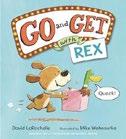
From the Geisel Award–winning team behind See the Cat (2020) comes another surprising, amusing, and educational treat for beginning readers. With a “One…two…three,” an unseen narrator tells light-skinned Jack, brown-skinned Jill, and Rex the smiling pooch to “Go and Get” objects beginning with a given letter. Rex (less excitable than Max, the previous series’ star) wordlessly woofs but is revealed to be cleverer than readers might initially assume. For the letter F, the kids bring a “FROG” and a “FISH,” but Rex brings a duck…who is quickly revealed to be a “FRIEND.” For the letters S and M, Jill returns with a “SKUNK” and a “MOOSE,” while Rex persists with ducks— who slyly turn out to fulfill the requirements (a pair of “SISTERS” and a group of “MUSICIANS”). Finally, it’s time for the letter D! While Jack rides in on a “DINOSAUR in a DRESS with a DRUM,” and Jill produces a “DRAGON at a DESK drawing a DAISY,” Rex is empty- handed. The narrator is “disappointed,” until a few woofs convey that Rex is, of course, a “DOG.” Expert pacing enhances the humor. Expressive cartoons highlight the deadpan moment before the narrator (and readers) catch on to Rex’s unexpected wins, and a final spread features many D-related words. Quirky, unexpected fun. (Early reader. 4-7)

Lincoln, Beth | Illus. by Claire Powell Dutton (304 pp.) | $17.99
Aug. 20, 2024 | 9780593533260

The over-the-top Swift family might be able to reconcile with their cousins— if art theft doesn’t interfere. In this second series entry, as delightfully hilarious and witty as the first, Shenanigan Swift learns she has family in Paris—the Martinet cousins—with whom the English Swifts have long been feuding. The Swifts’ new Matriarch, Fauna, decrees that they must make peace with the Martinets, especially after the theatrical theft of a painting from the Swift family home. Ouvolpo is a flamboyant crime collective that lifts looted and stolen art and returns it to the rightful owners, leaving behind fantastical crime scene tableaux. Does their theft of A Clown Laments His Lot in Life by the famous surrealist Pierrot mean Ouvolpo believe the painting rightfully belongs to the Martinets? Piratical Uncle Maelstrom takes Shenanigan and her sister Phenomena to Paris, where Shenanigan is overwhelmed by the city, charmed by artist cousin Pomme, and enraged by the thieves. “No one breaks into my House, leaves behind an inflatable bird, and gets away with it,” she declares. But some of the Martinets are untrustworthy, even by family standards. Even Maelstrom’s loyalty is questionable, since he keeps flirting with The Law (in the person of his nemesis, Haitian Interpol inspector Hugo Rousseau), leaving Shenanigan, Phenomena, and Erf, their nonbinary cousin, to save both families. The family is multiracial, and queerness is comfortably
normalized. Abundant wordplay and humor will keep the pages turning. An amorally charming hero stars in this comically flamboyant heist mystery. (Mystery. 10-13)
Liu-Perkins, Christine | Illus. by Lynn Scurfield | Bloomsbury (40 pp.)
$18.99 | Aug. 20, 2024 | 9781547608058
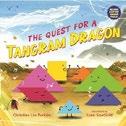
Introducing the classic puzzle known as the tangram, a simple tale shows how seven geometric shapes can be arranged into a host of animals and other things.
“N ǐ hǎo! Hello!” While searching for a dragon to bring rain to the dry land, Little Triangle meets and makes a butterfly with Second Little Triangle. The duo encounters Square, and they all combine to create a bat. Parallelogram, Medium Triangle, and a pair of Big Triangles join the fray—until at last all assemble into a dragon that soars into the sky to create clouds. Scurfield draws simple faces but leaves the shapes intact in the illustrations so that hands-on readers have the option of placing their own “tans” from an attached sheet of cutouts (not seen) on top of each. In several full-spread galleries, she adds dozens of other tangram figures to create. Along with noting in the afterword that the seven pieces can be made into thousands more, Liu-Perkins looks at the many ways this low-tech puzzle promotes concentration and persistence, teaches mathematical concepts, and fosters creativity and storytelling skills. She also traces its history and uses in China,
where it was invented, and beyond, and notes that the animals that the shapes form have cultural significance in China. The plotline may be too rudimentary to excite much response in younger audiences, but this may well open a gateway to hours, if not years, of mind-expanding play.
Inviting, if more utilitarian than literary. (Informational picture book. 6-8)
Lloyd, Megan Wagner | Illus. by Abhi Alwar Knopf (176 pp.) | $16.99 | June 4, 2024
9780593378489 | Series: Super Pancake, 2
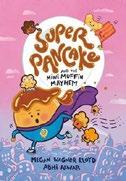
An anthropomorphic, superpowered young pancake faces her greatest challenge yet: babysitting. Secretly saving the world as Super Pancake has left Peggy Pancake little time for doing homework. She’ll be spending spring break completing a missed assignment. Even worse, her parents have signed her up for a weeklong babysitting job. Her charges, the Mini Muffin quintuplets, leave her exhausted, and after Peggy and the kids stop by her friend Professor Egg’s lab, things get even worse. The littlest quintuplet, Minnie, pilfers the professor’s doom laser and accidentally turns herself into a mega-sized muffin. Now Super Pancake and her trusty sidekick, Kid Croissant, must save the day once again. It’s a fairly straightforward tale, complete with a third-act pep talk from Peggy’s pal Stanley Bacon that motivates her and Kid Croissant, but
Sweet but substantial, just like a balanced breakfast should be.
the breakfast food–themed characters and setting infuse the story with whimsy and humor. The Pancake family house is shaped like a giant skillet, while their car is a bottle of maple syrup; before sending her off on her babysitting gig, Peggy’s mom tells her to “break an egg!” Despite the larger-than-life superheroics and quirky setting, Peggy also contends with more down-to-earth problems, such as wrangling her rambunctious charges and dealing with burnout. Alwar’s energetic cartoon illustrations are both action packed and adorable. A quick recap of the first book will make it easy for newcomers to the series to jump right in.
Sweet but substantial, just like a balanced breakfast should be. (Graphic fiction. 7-10)
Kirkus Star
Crick, Crack, Crow!
Lord, Janet | Illus. by Julie Paschkis
Margaret Quinlin Books/Peachtree (32 pp.)
$18.99 | Aug. 6, 2024 | 9781682636299

A clever young crow loves to cause trouble. Today, Crow leaves his nest primed to raise a ruckus. He steals and hides shiny objects, dive-bombs songbirds to disrupt their baths, and taunts a dog into playing chase: “Crick, crack, run! The chase has begun.” Crow’s trouble is all in good fun, though, until he tires of it and tips closer to danger—like when he flies in front of a car (“Crick, crack scoot. Honk, honk, toot! ”) or when he gets trapped in a dark barn: “Crick, crack, fear. What’s in here?”
The repetition of “Crick, crack” punctuates the scenes as the danger escalates, providing a soothing rhythm even when Crow must reckon with a menacing hawk: “Crick, crack, attack. Don’t turn back.” Crows, known for being problemsolvers and using their beaks as tools— behaviors that are on full display in the story—know how to have fun, but they also know when to band together, which they do in a dramatic conclusion. Lord’s lyrical writing and pacing make for an edge-of-your-seat journey, while Paschkis’ lively, folk-inspired illustrations bring humor and emotional resonance— and gorgeous endpapers suffused with crow silhouettes.
A compelling, joyous, informative romp that captures the craftiness and effervescence of corvids. (crow facts, scientific names, book recommendations for young and old readers, websites) (Informational picture book. 4-8)
Lund, Nick | Illus. by Lucy Rose Workman (94 pp.) | $24.99 Aug. 20, 2024 | 9781523513208
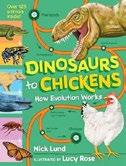
A clamber along branches of the Tree of Life, pas prehistoric ancestors of 30 animals from monarch butterflies to modern dogs, cats, and humans.
Starting off with an image of a spreading tree festooned with creatures, over the course of this book Rose arranges well over 100 extinct antecedents to living species along sinuous, branching lines that visually
connect evolutionary adaptations and cousins. Properly noting that fossil records are spotty at best—and also that, given convergent evolution and life’s reluctance to fall into tidy classifications, the whole notion of distinct species is “messy in practice”— Lund relies on researchers’ best guesses about relationships and timing as he points out significant developments in each lineage. Plants get so little attention that their appearance is misplaced on a timeline as coming after that of insects. Still, for the 30 chosen animals, at least, tracing the connections will leave readers much more conscious of how, for instance, wings developed in fauna as diverse as bugs, birds, and bats, or how the hooved, rabbit-size Diacodexis could come to count pigs, giraffes, and blue whales among its descendants—not to mention why the ability of early ape Sahelanthropus to walk upright was “quite literally, a huge step forward” on the road to Homo sapiens (both depicted here as generic sketches). Dense but readable and illuminating. (glossary, further reading) (Nonfiction. 8-11)
Maruno, Jennifer | Illus. by Scot Ritchie | Pajama Press (32 pp.) | $18.95 Aug. 27, 2024 | 9781772783209

A young witch prepares for her first flying test. Light-skinned Little Witch has curly orange hair and a pointy black hat. She practices diligently for the upcoming flying test but keeps leaving her broom in odd places, like the forest where Ramshackle Rat lives. By the time she finds it, it’s been gnawed on and its bristles are broken. As for her flying ability, she “dipped and doodled, / Rose and sunk, / Flew in a circle, / And landed BUMP!” On the big day, she arrives at the testing center looking a little worse for wear and promptly fails her first attempt; her fellow witches snicker. That night, however, she dips and doodles her way
through a thunderstorm to help Ramshackle Rat, whose house has been struck by lightning. Surprisingly, with Ramshackle Rat on the back of her broom, she “flew like an arrow, / High and aloft / And when she came down, / Her landing was soft.” With the support of her new friend, she passes the test the next day with “flying colors” despite receiving continued criticism from the other young witches. Though Maruno’s bland text and Ritchie’s heavily lined, sketchy illustrations are mildly entertaining, and Little Witch is an endearing protagonist, much of the humor—a test center reminiscent of the DMV, for instance—will resonate only with readers familiar with real-world driver’s tests.
A gentle tale of flying high that falls a bit flat. (Picture book. 3-7)
Matheson, Christie | Sourcebooks
Jabberwocky (40 pp.) | $18.99
Aug. 6, 2024 | 9781728272078
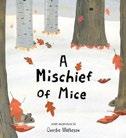
This tale does double duty as an intriguing mystery and a primer on collective nouns for animals.
A group of squirrels—called a “scurry”—express concern when a “mischief of mice” who once played in the woods disappear. After the squirrels ask other forest creatures what might have occurred and accuse still others of committing foul deeds, an aptly named “sleuth of bears” step in to solve the puzzle. The game’s afoot—literally— as the bears wisely follow tracks in the snow, which lead them to a tree. Could the mice be inside? This delightful, clever book works on several levels: It’s an atmospheric tale, told in charming, effortless rhyme, as well as a terrific vocabulary builder that introduces kids to collective nouns such as a “clutter of spiders,” a “skulk of foxes,” and a “gaze of raccoons.” These group names are fun to know, and adults sharing this book with youngsters can extend the learning by exploring the backmatter, which offers
more information on the collective nouns, and then by asking kids to consider how well these group names suit the creatures. The pleasant watercolor illustrations portray the animals and the autumn forest setting sweetly but realistically. Give a collective cheer for this tale that will charm kids while imparting fun facts. (Picture book. 5-8)
Matthies, Janna | Illus. by Ashley Wolff Beach Lane/Simon & Schuster (32 pp.)
$18.99 | Aug. 27, 2024 | 9781665911931
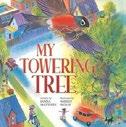
A child delivers a paean to the natural world as experienced in a backyard. Reminiscent of “The House That Jack Built,” this cumulative tale begins with the titular tree, then adds a climbing squirrel, followed by the tomatoes that both the squirrel and child nibble on. After several more spreads (each of which ends with the phrase “the towering tree / that reaches high / to cover me”), the text expands, with the child now focused on the sun, which casts its warmth and light over “all that I can see,” including the previously mentioned backyard features. Wolff’s lush illustrations bring a radiance to every spread, even before the text turns its attention to sunshine, and the rhyming text flows pleasantly. Young readers will enjoy picking out the bee that buzzes through every spread but the last, trailing a fuchsia plume that matches the jacket of the freckled, light-brownskinned child. Readers can also follow the progress of a pair of robins who build a nest at the beginning of the book and, by story’s end, have three hungry chicks. The final spread flips the book for a vertical view of the massive tree, revealing even more bird life in the higher branches, suggesting further territory for the book’s child, or readers, to observe.
A gentle appreciation of the nature around us, from the ground to the sky. (Picture book. 3-8)
Maxwell, Lisa | McElderry (320 pp.)
$17.99 | Aug. 20, 2024 | 9781534431904
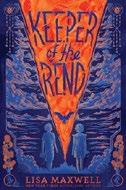
A boy’s knowledge of birds becomes essential when his friend goes missing during a war against destructive forces. After his father loses his job, Xavier T. Fletcher and his family move in with Nana Susan on her goat farm. Xavier is skittish around the herd but happy to have space for bird-watching, even though his family mocks his hobby. One day, he’s shocked to see the sky rip open and a magpie fly through the Rend, holding a marblelike object in its beak. Neighbor girl Clem Branham reveals that an ongoing battle’s underway between our world and the cold, dark Nother. The birds are Carriers, and the marbles, or Crumbs, are like seeds that sow decay in people’s souls and in our land. Clem and her family are Keepers of the bees that labor to catch Carriers. But with the bee population in decline, Clem risks her safety to catch Carriers and inactivate the Crumbs by immersing them in sugar or honey. Xavier finds it hard to suspend disbelief even as he witnesses the consequences of this struggle. With the balance tipping in favor of the Nother, the tension builds—and Clem goes missing. Xavier can help, but his ability to act and persuade others is key. The worldbuilding is tight in this eerie take on the battle between good and evil with a distinct message about the environmental impact of human activity. Characters are cued white.
Searing and satisfying. (Fantasy. 8-12)

For more by Lisa Maxwell, visit Kirkus online.
This review originally ran online Oct. 11, 2023.
A young girl’s otherworldly quest to find her grandmother continues in this middle-grade novel by Agauas, one in a series.
This novel begins with a quick recap of Grandma’s Sock Drawer (2020), the previous volume in this series: Sukey Durand’s grandmother disappears, having left a note asking Sukey to come and find her. Sukey’s grandmother also left her a key to a bureau drawer, which held three pairs of socks, each of which took her on different adventures (transporting her to different worlds) when she put them on. The action picks up with Sukey
returning to find her father prepping her grandmother’s belongings for an estate sale. Sukey has a conversation with two talking leaves from a tree who vow to help her rescue her grandmother and complete her unfinished mission. Moments later, the trio is swept up in a windstorm that sets the new story into motion. Sukey and her traveling companions encounter talking animals, a mysterious water wall, and many other mystical entities. Her quest unearths a family secret: a rift between mother and son that must be repaired for her grandmother to return. Though the text contains no
This review originally ran online April 29, 2022.
Bernard presents two connected children’s novellas of adventure in dystopian lands.
In If You Ride a Crooked Trolley…, 9-year-old Peter Myshkin Stephenson from the fictional northern New England town of Halloway is well acquainted with unhappiness and confusion. He wonders about the origins of his orange hair (his parents are both blond), his levels of intelligence and attractiveness, and if he’s to blame for his parents’ bickering. However, he puts all this in proper perspective after he finds himself in an unfamiliar, war-torn region after a ride on a yellow trolley takes him to an unexpected
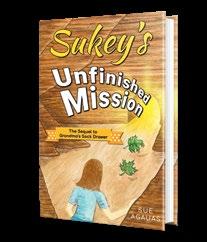
illustrations, the author does a wonderful job of creating vivid imagery with her words (“Her eyes darted to the crystal waterfall crashing onto the rocks, pouring its clear water into the pool of ink that formed the dark lake”), particularly in the moments when Sukey is being transported to other worlds. The story can get convoluted, particularly near the end, but the action moves quickly enough to keep things from ever getting dull. (This
Sukey’s Unfinished Mission
Agauas, Sue Why Not Now? | 240 pp. | $14.99 Jun. 22, 2023 | 9781732271128
book has obvious references to the first one, but a knowledge of it is not required to enjoy Sukey’s new adventures.) Agauas knows her young audience, so nothing gets too scary. The narrative reaches a satisfying conclusion, but it’s pretty clear this isn’t the last readers will see of Sukey. Young readers will be mesmerized by the magical elements that Sukey encounters in this supernatural adventure.
destination. There, a girl in a red coat named Sharlotta initiates Petey into the world of Otherwise, teaching him about the warring Paona and Korgan peoples and a “Spell” that makes it possible to “go back into past and change into future.” She needs Petey to help her find and rescue her family members, who are in a tent somewhere in a Korgan camp. In The Judgement of Biestia, Petey finds that no one believes his story of his Otherwise experience after he returns home—not even his best friend, Chace Fusillade. Later, at the beach, Chace and Petey encounter a huge wave and find themselves treading water in the open ocean. As in many tales for children,
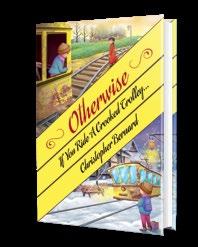
If You Ride a Crooked Trolley… & The Judgment of Biestia: Books 1 & 2 of the Otherwise Series
Bernard, Christopher Regent Press | 285 pp. | 14.95 Nov. 11, 2023 | 9781587906695
this one has Petey embarking on his adventures without proper parental supervision, and he must learn to rely on friends and his own judgment. The worlds that Petey enters are alternate versions of our own in which history panned out differently; for example, the boys’ seagoing rescuers in The Judgement of Biestia have never heard of America. Many of the people he encounters are also realistically hardened by their conditions. Characters’ dialects are also different
from standard English, lending the work further authenticity. Petey’s exits from these worlds, though, are rather abrupt; perhaps more direct comparisons to Petey’s everyday life in Halloway would have made these journeys and transitions more meaningful. Two color illustrations by Batra and Seabury, respectively, feature characters and settings from each story.
A pair of appealing adventures with an edgy throughthe-looking-glass feel.

Best Wishes Film Series in the Works
Eydie Faye will adapt the first of Sarah Mlynowski’s middle-grade books.
Lion Forge Entertainment has acquired the rights to
Sarah Mlynowski’s bestselling middle-grade book series Best Wishes and enlisted The Slumber Party writer Eydie Faye to adapt the first installment in a planned multipicture, live-action film series, Deadline reports.
The book series launched with the 2022 debut title of the same name, written by Mlynowski, illustrated by Maxine Vee, and published by Scholastic. Each book follows a different girl in a different U.S. city, who, at a challenging moment in her life, receives a box in the mail that contains a magical bracelet that will grant her a single wish.
The series’ first book, which Faye has been tasked with adapting, follows Becca Singer, a middle school girl in New York City who yearns for popularity and then grapples with the consequences, ultimately learning the meaning of true friendship. A Kirkus reviewer called the book “a coming-of-age tale told with humor, compassion, and more than a touch of magic.”

Mlynowski, who has written or co-written more than 50 books for kids, teens, and adults, said she is “thrilled” to be working with Lion Forge and Faye and “beyond excited for the readers of Best Wishes to see these four strong heroines come to life.”
—AMY REITER
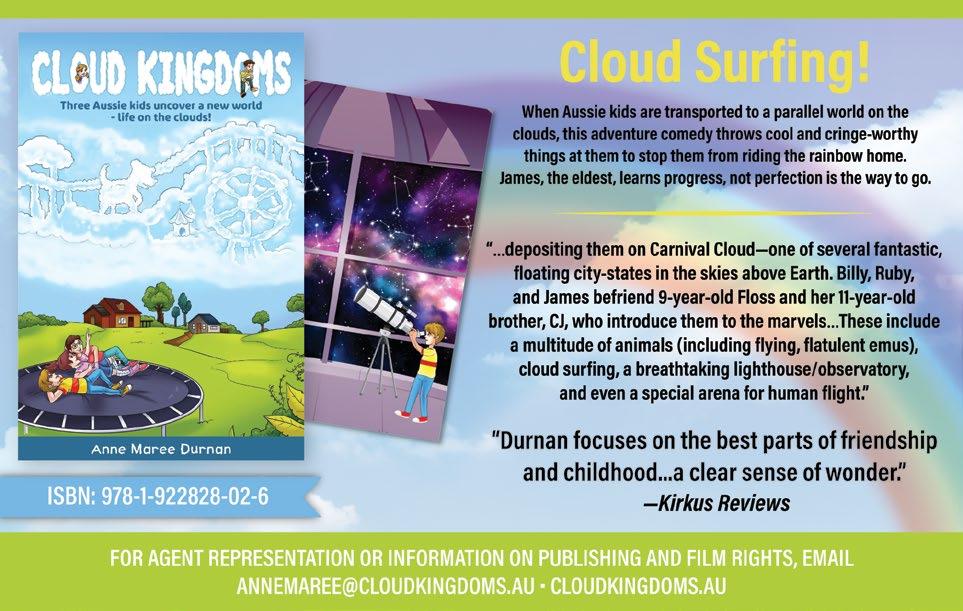
Mejia, Tehlor Kay | Delacorte (224 pp.)
$17.99 | Aug. 6, 2024 | 9780593647035

Sadie Rivera can’t recall a time when she wasn’t haunted by the jealous ghost who threatens those she loves.
In the wake of the sudden death of Anna, her best—and only—friend in Arizona, Sadie is reluctant to forge new relationships, fearing that the ghost will hurt them like she did Anna. Raised by her pale-skinned single dad after her Mexican mom left the family, Sadie feels like she lives “in a different world than any other seventh grader,” and she withdraws “into her cloud of fog and numbness” to cope with her loneliness. That is, until she meets Charlotte and Mal, two polar-opposite girls at her new school in Idaho who both take an interest in befriending her. Strangely, the ghost doesn’t make an appearance; Mal, however, makes it clear that being her best friend means being her only friend. She isolates Sadie from Charlotte while taking advantage of her guilt and grief to push her to do things she’s uncomfortable with, such as executing cruel pranks that escalate. Mejia deftly navigates the pitfalls, pressures, and pleasures of girlhood during the middle school years. Sadie deals with tough issues faced by many young people, including grief, parental abandonment, self-esteem struggles, and toxic friendships, using horror elements as metaphors for anxiety and depression. A spooky cautionary tale about the toll of unhealthy relationships and an ode to the power of true friendship. (Paranormal. 8-12)

A talking dog teaches a sixth grader about faith in humanity.
OH MY DOG!
Morris, J.E. | Penguin Workshop (48 pp.)
$16.99 | Aug. 20, 2024 | 9780593752029

Does a bear share in the woods? The answer may surprise you! Orson the bear goes for a walk and spies a big rock—an ideal napping spot! But another bear, Izzy, has her eye on the rock, too. Izzy suggests they take turns, but her turn lasts far too long, so Orson drenches her with cold water. The two rivals have reached a stalemate. Orson brings Izzy a different rock, but its thin, sharp shape makes it unsuitable. As they each grab hold of the coveted rock, they tear it apart. Eventually they decide to repair it and to amend their no-sharing policy. After all, “sharing is hard,” as Izzy points out, “but NOT sharing might be harder.” The main duo aren’t so much an odd couple as they are two of a kind, a relationship that’s underscored when they team up to loudly shoo a bird away from “our rock.” The ease with which they acknowledge their stubbornness only makes their continued argument that much more entertaining. Neither party is wrong, but the only workable solution occurs when they team up to make things right. Short, stubby brown Orson and tall, lanky, gray Izzy have complementary designs, though they would be the last to admit it. Backgrounds are full of trees and greenery, with a few pages set against mostly white backdrops. An amusing lesson in how to compromise from two bears who would rather not. (Graphic fiction. 4-8)
The House on Yeet Street
Norton, Preston | Union Square Kids (336 pp.)
$17.99 | Aug. 27, 2024 | 9781454950400

A fearless foursome in small-town Massachusetts confront an evil curse.
Thirteen-yearold Aidan is secretly in love with one of his best friends, and he expresses that love through a fan fiction–style story he writes in secret. When Aidan and the gang—swoony Kai, know-it-all Terrance, and snarky Zephyr— explore Witch House, the dilapidated haunted mansion on Yeet Street (formerly owned by a wealthy Swedish immigrant from the 1920s), Aidan decides to get rid of the evidence of his crush. He tosses his fan fiction notebook through a busted window. Upon discovering it, mean girl Bea, who works out the identities of the main characters, posts the story, making it go viral, but Aidan has other things on his mind. A spine-tingling phantasm called the Backwards Lady keeps appearing around town, and Aidan also befriends blood-covered Gabby, the spirit of a legendary local girl who was found dead in Witch House 20 years ago. Part coming-out narrative, part ghost story, and part historical fiction, the story struggles to escape the grasp of a passive writing style that’s heavy on telling, reducing the impact of the creepy and emotional moments alike. Most of the predominantly whitecued characters (Terrance presents Black) are broadly drawn and come
across as one-note. Some unexamined hurtful humor and a few odd moments, like a teenager cheerfully describing “traps” (“these girls are boys”), also mar the storytelling. Falls short of its promising premise. (Paranormal. 10-14)
Palmer, Iva-Marie | Harper/ HarperCollins (256 pp.) | $18.99
Aug. 13, 2024 | 9780063118898
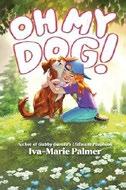
A talking dog teaches a sixth grader about faith in humanity. Caroline and her widowed father survived the hurricane that hit the Gulf Coast of Texas. But now money is tight, and Caroline’s 12th birthday present might just be jeans and underwear from the local mall. Her grieving dad tries his best, but his grocery store job only covers the essentials. Although Caroline’s best friend, Yumi, who’s Japanese and Jewish, is loyal and kind, Caroline, who presents white, wishes she were part of the popular crowd. She lands a job walking Denver, a rambunctious dog who shocks her by being able to speak— but only to her. He says he was sent with “a message from the heavens” to help Caroline remember that “goodness is out there.” Denver persuades her with a miracle: raining down grape juice and cupcakes! Caroline ends up on a news broadcast as an eyewitness, and the in crowd notices her; it’s hard to regain her belief in humanity when she’s distracted by social status. Along the way, Caroline neglects Yumi, whose unselfconscious enthusiasm seems immature compared to the cool kids. Caroline’s journey reflects positive values and messaging about one tween’s impact on her community. Denver carefully tells Caroline that his version of faith refers to people’s collective goodness, separate from
religion, but Caroline and her father are Christian, which shapes her frame of reference.
An imaginative novel that explores the path to finding faith after hope is lost. (Fiction. 8-12)
Patterson, James | Adapt. by Adam Rau Illus. by Phillip Tajall | Colors by Ray Kao
Jimmy Patterson/Little, Brown (208 pp.)
$24.99 | July 29, 2024 | 9780316454988
Series: Ali Cross Graphic Novel, 1
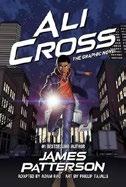
Ali Cross, the son of bestselling author Patterson’s Detective Alex Cross, finds new life in graphic novel format. Ali’s friend Gabe Qualls has disappeared; several days later, someone breaks into the Cross home. Plus, Ali’s father, under investigation for assault charges, is being hounded by the press. Could it all be linked? Ali’s friends—all people of color—are sure that the media would be covering the disappearance if Gabe were white; they and Ali’s family support him in his search. Alex helps Ali hone his deductive skills, while Ali’s grandmother reminds him that he’s capable of great accomplishments that were once out of reach for Black kids like him. Though the book includes a few brief fight scenes, this is largely a story of investigation and faith. Ali often prays for Gabe’s safe return, and several scenes take place in church. When Ali realizes that the key to the
mystery may lie in a popular video game, he begins investigating—and uncovering Gabe’s secrets. While the original story was a solidly written mystery, this adaptation falls a bit flat. Settings include many featureless rooms, even in the video game; dialogue and narration dominate, while the visuals are relatively drab and static. Nevertheless, Ali’s a compelling protagonist, and hopefully future installments will find him in more thrilling environments than bedrooms or the passenger seat of cars. Lackluster visuals hamper this adaptation, though readers will still root for its kid detective protagonist. (Graphic fiction. 10-14)
Plan, Melody Sumaoang | Illus. by Rông Ph am & Vinh Nguyėn Tilbury House (40 pp.) | $18.99 July 16, 2024 | 9781668944868
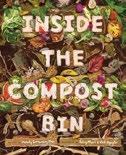
How to make compost, with the eager aid of thousands of hungry creepy-crawlies. In this handy guide for would-be garden composters, general directions for creating and using compost paired with illustrations that teem with tiny soil residents are followed by even more explicit procedures and advice featuring ingredients and temperature charts. In the appealing pictures, a light-skinned parent and child with large, shiny eyes tend to a small, leafless tree, which plainly “needs love,” by filling up a nearby bin with organic detritus that is
A fearless foursome in small-town Massachusetts confront an evil curse.
THE HOUSE ON YEET STREET
attacked by armies of small, wriggly, accurately depicted creatures erupting out of the cutaway subsurface for a “feasting frenzy.” Correctly turned and cured, the resulting product makes a great addition to garden soil—as the now flowering, plainly prospering tree at the end demonstrates. “Composting starts with a simple, plain bin, under the shade of a big old tree,” Plan concludes encouragingly. “It starts with you choosing to turn trash into treasure.” The substantial ensuing “guide for adults helping kids” includes advice about bin selection and placement, lists of types of waste recommended to maintain a healthy carbon-to-nitrogen ratio, and helpful troubleshooting suggestions. The scoop on garden soil’s best friend, rich and comprehensive despite its brevity. (Informational picture book. 6-10)
Pray, Faith | Little, Brown (40 pp.) $18.99 | Aug. 20, 2024 | 9780316541176

A family trip gets off to an inauspicious start. Mom, Grandpa, two unruly kids, and the family dog drive to the woods for a picnic and a hike. When they arrive, elder child Smudge, who narrates, runs off to climb a tree, ignoring Mom’s admonition to wait. The smart-alecky Smudge repeatedly responds to Mom’s requests with a defiant “I will NOT!” Goodhumored Grandpa shares his outdoors knowledge—“Moss sometimes grows north”—wisdom that goes unheeded but will prove useful later. Smudge tunes out and runs off again as ever-harried Mom, struggling to control the dog, warns the child not to wander off. Does Smudge get lost? Yep—then the little one finally pays attention. Fortunately, the family soon finds Smudge. But now they’re all lost! Smudge is contrite: “Are we all lost because of me ?” Grandpa reassures Smudge that it’s OK; everyone’s together. Happily, Grandpa’s earlier guideposts and the landmarks they passed help them correct their course.
In the end, they’re able to appreciate a spectacular vista—together. This high-spirited story is notable for its portrayal of loving and very realistic family dynamics. The lively, impressionistic illustrations, created with watercolor ink and colored pencil, capture the family’s relationships and scenic outdoors. The family presents East Asian. A tale readers will easily get lost in. (Picture book. 5-8)
Quintavalle, Paola | Illus. by Miguel Tanco | Enchanted Lion Books (56 pp.)
$17.95 | Aug. 27, 2024 | 9781592704088

A sunny look at living life with intention. Seemingly small moments can build character and teach lessons. Each spread in this story speaks to a common experience or feeling, from grappling with death and learning from one’s mistakes to taking the time to find the perfect leaf clover and thirsting for knowledge. This brief, ambitious book is deceptively simple. While the ideas expressed are lofty, the text never talks down to the intended audience as it stresses the importance of making space not only for the momentary encounters in life, but also for the emotions involved. Tanco’s pen illustrations are delicate and textured; the palette is limited to black and shades of gray and yellow. The brightness of the yellow tones effectively conveys mood. The spare prose (“To plant a seed…and watch it grow,” “For things that can go wrong,” “To keep a secret”) feels like a long list at times; it may make more sense if grown-ups preface the various items with the book’s title. While the work never condescends to children, adults may get more out of it, making it more appealing as a gift book than as a read-aloud. Children are depicted in various gray hues and hair textures. A reminder to embrace the smaller moments in life with purpose. (Picture book. 5-8)
Ramée, Lisa Moore | Balzer + Bray/ HarperCollins (272 pp.) | $19.99 Aug. 27, 2024 | 9780063039476
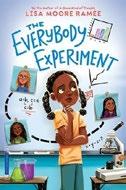
A young scientist in the Seattle area designs an experiment to prove she’s just as mature as her friends.
Kylie Stanton, who’s Black, has always been different from her best friends as a budding scientist, a karate brown belt—and an unintentional crybaby. Black and Filipino Naomi, Indian American Nikila, and white Mara never used to mind Kylie’s sensitive nature, but everything’s changing as they prepare for middle school. Kylie worries they’ll decide she’s “too babyish to hang out with.” Desperate to keep her friends, Kylie designs an experiment for the summer before seventh grade to prove she’s mature by not crying and doing everything her friends do. It seems like a foolproof plan, until she finds herself agreeing to things she doesn’t want to do and giving up things she does. She’s further confused by Naomi, who’s been lying, keeping secrets, and being uncharacteristically mean and moody. Is that what it means to be mature? Is that really who she wants to be? Kylie is an endearing, relatable protagonist readers will root for. She wrestles with moral conundrums and situations that cause confusing emotions in ways that are never didactic; this balance keeps readers interested while encouraging them to think independently. Kylie’s incremental growth is realistic and well developed, leading to a satisfying conclusion. The strong representation of a loving Black family and the accessible demonstration of the scientific method in action are added bonuses.
Heartwarming and empowering. (Fiction. 8-12)
A sweet read that will grow with readers while tugging on their heartstrings.BABY ANIMALS
Reid, Aimee | Illus. by Sebastien Braun
Sourcebooks eXplore (40 pp.)
$14.99 | Aug. 1, 2024 | 9781728275437
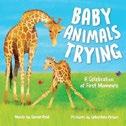
The joy of new life and precious firsts shared throughout the animal kingdom. In simple, rhyming text, the story of the early days of babies’ lives plays out along with gentle illustrations. Wolf pups howl with their pack, while a giraffe calf takes its first awkward steps. Readers will find familiar animals such as rabbits and horses alongside those that might be lesser known, including the loon. The book ends with images of human children taking part in accomplishments such as first steps; a narrator promises to “be beside you wherever you go. // Cheering with wonder and joy… / as you grow.” On each spread, readers will find a brief fact; for instance, baby rabbits don’t open their eyes until 10 days after they’re born. The balance between the flow of the concise, rhyming text and the factual information makes for a book that children will continue to appreciate as they grow. Little ones and their caregivers can read it straight through or linger and learn a bit more while also scoping out the appended “Animal Milestones” section for further information. The animals look like snuggly stuffed toys come to life rather than realistic wild creatures, but that only adds to the appeal. The few people depicted at the end have varied skin tones and hair colors. A sweet read that will grow with readers while tugging on their heartstrings. (Picture book. 0-3)
Robbins, Dean | Illus. by Matt Tavares | Knopf (40 pp.) | $19.99 Aug. 20, 2024 | 9780593479254
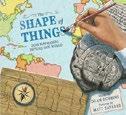
A quick overview of the history of maps and of mapmakers’ tools from stone chisels to GPS satellites. Less a factual history than a meditation on our innate need to record where the woods end and where streams or trails go, this survey begins with a prehistoric couple daubing marks on a cave wall and carving lines into a mammoth tusk, then zips in a vaguely chronological way around the world and to the present. Robbins delivers nods to old styles of maps from North America, Polynesia, China, Egypt, and Babylonia before ending with modern surveyors and a view of our planet from orbit. The author frames his terse commentary in broad, impersonal generalities (not always accurate ones: The world was probably “proved” to be round long before European explorers made their journeys), leaving it to the closing timeline to sprinkle specific names and dates next to a highly select set of historical artifacts and highlights. Conversely, Tavares focuses on the human element in his illustrations, depicting one figure in Renaissance clothing delightedly peering through a theodolite and elsewhere an individually drawn, racially diverse cast directly creating or using maps in various locales and successive eras. Along with this disconnect between the visual and
textual approaches, huge swathes of topical territory go unexamined, from techniques of undersea mapping to basics such as map projections and common symbols. A superficial, less-thaninformative sketch. (author’s and illustrator’s notes, more information on mapmaking, bibliography) (Informational picture book. 7-9)
Rosen, Michael | Illus. by Robert Starling Candlewick (32 pp.) | $14.99 | Aug. 20, 2024 9781536231298 | Series: I Am...

This little pink bunny has energy to spare!
“I’m SO wriggly… / my whiskers wiggle, / my ears jiggle.” Our young narrator wriggles on a chair and with a stuffed bear. The bunny wriggles all over the ground, makes a commotion with a cup of spoons, and plays with balloons. “I juggle my socks, / I wiggle in a box.” The little one plays with toys, pops in and out of a magician’s top hat, and “[drums] out a beat.” “If I don’t stop, I think I’ll burst. / But you know what? / I think I’ll stop first.” In this fourth tale in his I Am series, Rosen celebrates a child’s seemingly boundless zest for life. Instead of getting into trouble for being too antsy, the bunny—a stand-in for squirmy, fidgety little ones everywhere—takes joy in bouncing, hopping, and, well, wriggling. A note to grown-ups at the outset tells them to encourage children to play while reading: “If you can think of new rhymes, new ways to play with the words, do it!”
Starling’s cheery, bright illustrations of a big-eyed bunny in motion, set against plain backdrops, are, once more, engaging and silly—a perfect match for the brief yet exuberant text. Young readers with wriggles to burn will identify and come up with their own ways to express themselves.
An enthusiastic romp certain to please the endlessly energetic. (Picture book. 2-5)
Roth, Jonathan | Christy Ottaviano Books (40 pp.) | $18.99 | Aug. 20, 2024 | 9780316525541

The tale of a well-traveled piece of cloth. Intended to be made into women’s underwear, a bolt of unbleached muslin was purchased by the Wright Brothers in 1903 to cover the wings of the Flyer, which became the first airplane in history to fly. Later, the cloth was cut into swatches and donated to a museum. But this cloth still had journeys to make. One swatch flew to the moon in 1969 in a pouch carried by Neil Armstrong. In 2020, another swatch traveled to Mars with the Rover Perseverance and, in 2021, flew with the helicopter Ingenuity, “the first experimental aircraft sent to another planet.” This charming story is brought to life by Roth’s witty illustrations. He sets photos provided by NASA and the National Air and Space Museum against sepia backgrounds, adding cartoon figures and an appealingly personified flying piece of cloth. Laced with moments of wry humor, the text clearly describes each flight and builds drama and suspense by suggesting that after each adventure, the cloth would finally have a rest—and then promptly upending that assumption. The final spread reminds readers of these three history-making flights and shows an imagined scene of the Wright brothers standing on Mars and waving to Ingenuity. People of color appear in several of the photos.
A flight of fancy—and facts—sure to set aspiring scientists’ imaginations soaring. (author’s note, glossary of Perseverance instruments,
bibliography, photo credits) (Informational picture book. 5-9)
Kirkus Star
Royce, Eden | Walden Pond Press/ HarperCollins (272 pp.) | $19.99 July 30, 2024 | 9780063251403

A tragic event leads a tween to move in with his aunt and uncle in his family’s mysterious ancestral home in South Carolina. Twelve-yearold Roderick Bolden has always treasured his hair. Recollections of sitting at his mother’s feet while she braided his thick Afro as they chatted about their days are some of his most cherished memories. Following an accident in which his mom’s car was engulfed in flames, Roddie was left orphaned, with only one living family member—Aunt Angie, his mom’s sister, whom he’s only met over video calls. After Roddie’s spent two months in an orphanage, Aunt Angie and her new husband, Erik, finally return from a long, offline honeymoon in Brazil. Shocked by the news, they’re ready to reconnect with family roots and care for Roddie. The trio moves into Dogwood House, the bone-chilling fixer-upper that his mother never told him about, even though she grew up there and it’s been passed down through the generations. Aunt Angie tells Roddie about their family’s hoodoo traditions, including a legend about an evil monster who wreaks havoc with people’s shed hair. Royce’s latest offers readers a strong, character-centered, hoodoo-infused narrative that’s a tribute to the beauty of Black hair. The richly detailed settings will make readers feel as though they’re right there
with Roddie, and themes of family, heritage, and grief provide anchors for the creepy mystery.
A thrilling, hair-raising story with strong cultural roots and a well-developed sense of place. (Horror. 8-12)
Savaryn, Lorelei | Viking (288 pp.) $17.99 | Aug. 20, 2024 | 9780593524183
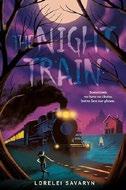
Twelve-year-old Maddie must use her new ghostseeing abilities to break a curse and save herself this Halloween. After Nana died, her ability to help ghosts find eternal rest passed to Maddie and her fraternal twin sister, Nat. Maddie just wants to be “normal,” but Nat embraces their supernatural gift. Their different feelings lead to an emotional rift between the girls; Maddie wants to repair their relationship, but her anxiety gets in the way. Then the sisters see a dead girl, her lips sewn shut, in the Victorian signalman’s cottage their parents are renovating for their YouTube channel, “Wrecked to Decked.” She needs their help to right a wrong from a century ago that causes kids to disappear during the town’s reenactment, every 13 years, of the Oct. 31, 1893, Great Hush Train Wreck. There are ominous signs that unless they solve the mystery, Maddie could be next. With help from Nat, new friend Westin, and a trusted teacher, Maddie must overcome her anxiety to save herself and the souls of all the kids whose lives have already been claimed. The central mystery keeps the pages turning in this tale of kids learning to be themselves, one that incorporates many popular paranormal and horror tropes. Maddie’s anxiety is treated with respect, and she shares exercises that help during her panic attacks. The sisters are cued white; Westin is Black.
aspiring scientists’ imaginations soaring.ALMOST UNDERWEAR
Part classic ghost tale, part cozy paranormal mystery: an accessible introduction to the genre. (historical note) (Paranormal. 8-12)
Smallman, Steve | Illus. by Joëlle Dreidemy | Tiger Tales (32 pp.) $18.99 | Aug. 6, 2024 | 9781664300439
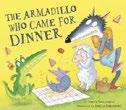
An armadillo discovers that he may be armorplated, but he doesn’t have to be thick-skinned. This unusual friendship trio—Little Lamb, Wolf, and Omelet the alligator—get an unexpected visitor, yet again. The three have just sat down to a lovely picnic when suddenly a boulder crashes through their tasty spread. But it’s not a boulder—it’s a rolled-up armadillo who smacks into a tree. Little Lamb invites the dizzy friend home for dinner to recuperate. She offers a hug as well, but Dizzy refuses, peevishly replying, “I’m a tough armadillo, so I don’t need hugs, thank you very much.” During Dizzy’s stay, Little Lamb offers more hugs, with tiny woolen arms stretched out wide—comforting ones and congratulatory ones—but Dizzy rebuffs each hug. He’s too tough for those. Until, that is, Little Lamb finds herself in a tight spot, with a real boulder crashing toward her. Dizzy saves the day and just might accept a grateful squeeze from a friend. The sixth installment in this U.K. series is a bit meandering, but it’s sweet nonetheless. The expressive animals display a range of emotional states, from joy at one another’s company and unsteadiness
after a bonk on the head (complete with unsteady eyes) to concern when one of them takes a tumble. A lighthearted lesson in letting down barriers. (Picture book. 4-7)
Smith, Brian “Smitty” | Little Bee Books (80 pp.) | $16.99 | May 7, 2024 9781499815160 | Series: Band Camp, 1
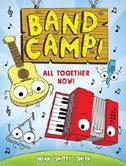
Four wildly different anthropomorphic instruments experience their first summer sleepaway camp. Ah, camp! Where lucky kids can enjoy nature, play games…and be subjected to terrifying ghost stories as well as mean jokes and pranks. Trey the triangle is skittish but also quick with a riposte. Zook the kazoo is cluelessly confident. Overenthusiastic Kaylee the ukulele can’t stop talking but has real leadership potential. Nerdy Cordelia the accordion eagerly spouts laughable statistics and factoids. The four share Bunk J—cruelly labeled “Junk Bunk” by a too-cool-for-school trio who won last year’s Big Bunk Battle. When our quartet catches on, Kaylee swings into coaching mode. They’re all eager to take home the prize this summer. But their divergent interests—nature, model building, reading, video games—divide them until they discover a shared passion for performer MC Mica. Will Bunk J be able to pull together to beat the odds? Smith has crafted a strong series starter with this graphic novel.
The vibrant art evokes old-time comics, rich in color and detail. Pacing, characterization, and conflict are deft and engaging.
A five-chapter overture to a series that campers and noncampers will tune in to with glee. (Graphic chapter book. 6-9)
Sorell, Traci | Illus. by Joseph Erb Charlesbridge (32 pp.) | $17.99 Aug. 6, 2024 | 9781623541934

Two Cherokee teams play a game of stickball in Tahlequah, Oklahoma. Vann feels insecure about having missed a key shot in last week’s match.
“Stickball requires speed,” after all, and his “towering body” won’t cooperate. As Vann and his team, the Eagles, take to the field against the Redhawks, they “zip,” “chase,” and “rush” for the ball, their wooden sticks clashing with a “CLACK, CLACK!” Coach gives the team a pep talk in Tsalagi, the Cherokee language. He reminds them of gadugi, the importance of working together. As the players return to the field to finish the game, Vann’s best friend, Jesse, gives him an encouraging smile. The game is now tied. Can Vann and his team win? Sorell and Erb, both members of the Cherokee Nation, deliver an uplifting story of team spirit and collaboration; the emphasis is on group triumphs rather than individual victories. Writing in terse, alliterative prose—“a tackle, a twist, and a wrong turn”—Sorell skillfully builds tension as she choreographs this action-packed game. Erb’s thick-lined cartoon illustrations have a pleasing solidity; they capture the chaos and drama of the game and depict players with a
range of brown skin tones. The story features frequent Tsalagi words and phrases. Backmatter stresses the importance of keeping the Cherokee language alive and explains the significance of stickball, which traditionally was used to settle conflicts.
Stand and cheer for this fast-paced tale of sportsmanship and community. (Tsalagi glossary, photographs) (Picture book. 4-8)
Swanson, Karen L. | Illus. by Laura Freeman | Calkins Creek/Astra Books for Young Readers (40 pp.) | $18.99 Aug. 6, 2024 | 9781635928136

In Depression-era America, Toni Stone, a young Black girl, grew up to become the first woman to play professional baseball.
Marcenia “Tomboy” Stone lived, loved, and breathed baseball. Her goal: to hear Negro League fans call out her name. Her parents wanted her to figure skate like other girls, which she did successfully, but “gliding solo was dull as ice.” When Stone’s family’s priest offered her a spot on the church baseball team, she “ROCKETED line drives and KABOOMED homers.” She also weathered insults from boys; the coach refused to teach a girl. As an adult, she moved to California and changed her name to Toni. She eventually landed a minor league contract, but in the racist Jim Crow South, she entered the stadium through the “colored” door, and her teammates did not welcome her (“You ought to be home washing dishes”). Her big break came when she was selected to replace Hank Aaron on the Indianapolis Clowns in the Negro League—the first woman to play professional baseball. In an author’s note, baseball enthusiast Swanson expands on the racism and gender discrimination Stone faced. Stone’s
A photographic record of an expedition to Antarctica’s forbidding Danger Islands.CHASING GUANO
words appear on banners across the bold, energetic illustrations by Freeman (“I didn’t concern myself that there weren’t any women in the game”), as well as those from the press (“an accomplished player”), all of which round out this upbeat tribute. A welcome addition to the annals of women’s sports. (Toni Stone’s baseball legacy, timeline, selected bibliography, archival photos, picture credits) (Picture-book biography. 7-10)
Tagaq, Tanya | Illus. by Cee Pootoogook | Tundra Books (24 pp.)
$17.99 | Aug. 20, 2024 | 9781774880555
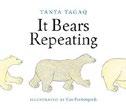
A simple counting book woven with Inuktitut language. A polar bear stretches to start the day. “Atausiq nanuq / One bear / One proud bear. / Stretching up to sniff the air. / One tall, long bear.” A page turn reveals two lumbering, powerful creatures sliding down the ice. “Marruk nanuuk / Two bears / Two sliding bears. / Fur is a perfect sled. / Two slippery bears.” The Inuktitut words are in a larger typeface and blue. The bears swim, hunt, and eat, gaining a new ursine friend each time. Every action is realistic except when the bears start to square dance, gathering in a circle, paws in the air—a somewhat out-of-place addition amid the deliberate and spare language. Pootoogook’s textured bears are fluid and sprawling; he employs a bird’s-eye view at times, looking down at the majestic, lumpy beasts
as they swim and slide. After the bears complete a full day (and Tagaq counts up to 10), another reading is encouraged—hence the titular instruction. It does, in fact, bear repeating. Backmatter includes translation and pronunciation guides, as well as a URL to a video of Tagaq reading the book aloud.
An intriguing, culturally responsive primer. (Picture book. 2-6)
Tate, June | Katherine Tegen/HarperCollins (40 pp.) | $19.99 | May 21, 2024 | 9780063114159
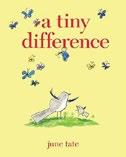
What to do about a bad mood?
Noticing that its child is “in a funk,” a bird explains that “it’s okay not to feel perfectly perfect all the time / no need to try to fix everything. / but let’s move a few things around, / see if it makes a tiny difference.” From taking deep breaths, scrunching up one’s shoulders and dropping them, and stretching to wiggling and squeezing, this interactive book encourages its audience to work through various relaxation techniques, made a bit more accessible through onomatopoeia and figurative language. The parent then tells the little bird to “take one hand, / crawl your fingers up your arm… / watch it stroll. / where is it going?” The narrative culminates in a flow of fanciful wonderings as the parent muses on all that the hand might see—from “aliens having dinner” to “grandma fluffing her hair”—and, at last, gives the little one a big hug. Though the
tips for centering oneself are solid, at times the text is a bit clunky, and the parents’ whimsical imaginings may distract from the relaxation techniques. The expressive line drawings— which resemble a child’s creation yet are imbued with sophistication—are the standouts. Set against mostly simple backdrops, they deftly bring to life hot-air balloons, woodland creatures, and extraterrestrials. Quirky and occasionally meandering, though saved by utterly charming artwork. (Picture book. 3-6)
Taylor, Helen | Tilbury House (40 pp.)
$18.99 | June 18, 2024 | 9781668944851
Series: How Nature Works
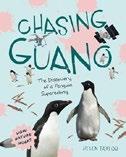
A photographic record of an expedition to Antarctica’s forbidding Danger Islands. What would cause scientists to suspect that this remote chain of islands hosted a colony of penguins? “Their poop is visible from space!” marvels Taylor—as readers can see for themselves in the satellite photos that kick off this lively account of a 2015 venture that uncovered not just a typical colony of Adélie penguins, but a supercolony numbering 1.5 million…more than the Antarctic Peninsula’s entire population of that species. The author recounts how the researchers navigated treacherously icy waters to reach the island group and how they made their count using cameras, clickers, and even a drone. She also describes what studies of the population (and its doo-doo) can reveal about changes in the colony’s size and diet over time, as well as the complex, ongoing campaign to have the region declared a Marine Protected Area. Human figures in the bright photos are generally too bundled up to see
A vibrantly presented reminder to stop and appreciate what we have.
QUILL THE FOREST KEEPER
clearly, but their names cue some cultural and racial diversity.
A stimulating tale of how poop led to a scientific scoop. (further reading) (Informational picture book. 6-9)
Tolman, Marije | Trans. by David Colmer Levine Querido (32 pp.) | $18.99
Aug. 13, 2024 | 9781646144525

Embrace the quiet moments in life while you can.
“Can you tell us the story about the Terrible Rush Era again?” a young hedgehog asks Grandpa. Back in the day, “no one had time to stop for a moment,” Grandpa responds. “In the Rush Era, everyone was always in a terrible rush.” In the accompanying image, a menagerie of animals race along the rugged terrain, leaving garbage and environmental destruction in their wake. Trailing their path of chaos is Quill the hedgehog, who, with a long green grabber, picks up the refuse they leave behind. Finally, Quill falls over with exhaustion after the trash becomes “too much for him to carry,” and he hibernates for the long winter. The forest denizens have a change of heart; they clean up after themselves and reevaluate their constant consumption, hailing Quill as the Forest Keeper. Young readers will see a parallel between the forest community and their own world, where material consumption and “go, go, go” attitudes prevail. While the story treads familiar ground, the
illustrations are standouts. Tolman turned photos of the Scottish Highlands into risograph prints and applied mixed-media drawings on top to create the bright blue and pink hues of the landscape. Translated from Dutch, Tolman’s text scans well and would be a great candidate for a gentle read-aloud. A vibrantly presented reminder to stop and appreciate what we have. (Picture book. 3-7)
Tse, Cai | Simon & Schuster (304 pp.) $23.99 | Aug. 13, 2024 | 9781665927246
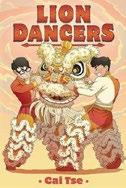
Best friends turned rivals compete to become the top lion dancer in their team. Ever since his father’s unexpected passing, middle schooler Wei has struggled to feel like he belongs. After a chance encounter leads to his joining a Chinese lion dance team, he finds a renewed love for the sport that he once enjoyed with his dad, whose team won an international championship. There’s just one problem—Wei’s former best friend, Hung, is also on the team, and he’s determined to push Wei out. With Lunar New Year performances approaching, Wei and Hung must give it their all to prove that they’re worthy of joining the competition team. But lion dance is a team sport: Can they settle their differences and make things work? Despite Wei and Hung’s rivalry being a large focus of the story, their
relationship isn’t sufficiently developed, resulting in what feels like an abrupt conclusion. Where this graphic novel truly shines, however, is in its lively and dynamic depictions of lion dancing and the admirable courage, strength, and teamwork involved in its performance. Tse deftly integrates technical information about lion dancing into the story, making it accessible even for those who are new to the sport. The author’s enthusiasm thrums through each page and is simply infectious. Wei is cued as being of Chinese descent; the supporting cast is multiethnic. A passionate and visually enticing love letter to the art of lion dancing. (creator’s note) (Graphic fiction. 8-12)
Found
Usher, Sam | Templar/Candlewick (40 pp.) | $17.99 | May 28, 2024 9781536234947 | Series: Nature Quartet
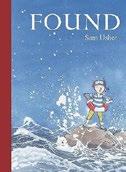
The grandfather and grandchild introduced in Usher’s Free (2021) enjoy a summer day at the beach.
When we last saw this duo, in Lost (2022), the two went sledding on a winter’s day. Now the weather is warmer, and it’s time to head to the seaside. Narrated by the child, the tale brims with excitement, reinforced by beach-related toys, gear, books, and drawings scattered across the title page and first spread. While the story generally hews to the realistic, things eventually turn a bit fantastic, due in large part to the
fanciful ink-and-watercolor illustrations. When the grandfather and grandchild build sand castles, a page turn reveals an elaborate grouping of structures in various architectural styles, some towering over Granddad. Later, this imaginative impulse is echoed when they rescue a seal pup caught in some netting and take a perilous sea journey to return it to its family. “And at last we went for our swim,” reads a subsequent understated line accompanying a full-bleed scene of Granddad and his grandchild placidly swimming deep underwater, the former still bespectacled and both fully clothed, though shod in socks and flip-flops, respectively. Gently humorous and wonderfully warm, this tale revels in its depiction of a fun and affectionate intergenerational bond. Granddad and the child present white. A great storytime find. (Picture book. 3-6)
Virnig, Christine | Aladdin (320 pp.)
$17.99 | Aug. 6, 2024 | 9781665946575

It’s Halloween every day in the town of Samhain—and not all the creepy residents are in costume.
Playing with expectations in her fiction debut, Virnig transplants sixth grader Caleb Fisher and his recently widowed mom from Los Angeles to a Wisconsin town where, to crank up the tourism, residents and buildings are dressed up for Halloween all year round. But, as Caleb quickly discovers, some of the
Revels in its depiction of a fun and affectionate intergenerational bond.
local vampires and witches are very convincing. Could they be real? The evidence remains ambiguous (at least until the climactic hullaballoo), but Caleb has help from enthusiastic classmate Tai Thompson, who’s described as standing out from her “un-diverse” peers for being not only unusually small in stature and dressed as a fairy, but for having Asian and Caribbean heritage. Together they collect clues, dig into the town’s tragic history, and, ultimately, expose a terrifying truth. The suspense and the amusingly eerie setting make effective hooks. So do both the developing friendship and an impulsive young protagonist whose emotional vulnerability in the wake of devastating family loss and sudden uprooting masks a streak of ingenuity that comes out not only in the clutch but all along in the inventive costumes he wears to school instead of the blandly conventional ones everyone else adopts. A twist at the suspiciously tidy tail end offers plenty of enticing potential for sequels.
Thrills and chills in a gloriously goofy setting. (Light horror. 8-12)
Vo, Nancy | Groundwood (44 pp.)
$19.99 | Aug. 6, 2024
9781773064017 | Series: Crow Stories, 3

A boy leaves home due to circumstances that aren’t completely clear until the book’s conclusion.
This final installment in the Crow Stories trilogy features the familiar muted palette, Old West setting, and spare narrative of Vo’s previous books. Evocative illustrations, rendered in watercolor, ink, and acetone transfers of 19th-century newspaper clippings and posters, open on Jack, a lightskinned, dark-haired boy who “had many reasons to run, but when illness took his ma, that cinched it.” A sign for cholera prevention provides context.
Jack is a resourceful traveler, sneaking onto a moving wagon and quenching his thirst at a woodland river. Two figures on horseback—concerned for his safety—bring him to their encampment, where he trades labor for food. The only clue to his mindset is a locket he holds dear with a photo of him and his sister. It is she, paleskinned, with dark braids and wearing the orange scarf she sported in the second book in the series, The Ranger (2019), who finds him. A rust-colored tail visible at their reunion belongs to the fox Annie befriended. She explains that she had “many reasons” for being away so long but that she had always intended to come back for him. What links these titles other than the obvious? Perhaps each character is on a journey of grief, searching for the antidote. Is the outlaw in the first book possibly their father—one of his children’s “many reasons”?
A satisfying finish, even as questions linger. (Picture book. 5-8)
Ward, Lindsay | Harper/ HarperCollins (40 pp.) | $15.99 Aug. 20, 2024 | 9780063208179

An introduction to the president’s home and office and many of the people who work there.
Taking the people-first approach of her Trusty Town Hall (2023) and The Capitol (2022), Ward punctuates her tour of the White House’s public spaces (and a few glimpses behind the scenes) with portrait galleries of those who keep it running—from the first family (here, a Black woman and her spouse and son) on up to select members of the permanent staff such as groundskeepers, cooks, a hijab-wearing assistant usher, and the beekeeper. A cutaway view of the residence provides overall orientation as a young tourist, the
All the shivery feels, escalating to the nightmarish in spots.
THE GHOSTS OF NAMELESS ISLAND
son of one of the chefs, and the first kid chase after the errant first dog through hallways and larger rooms. Along with bustling scenes of tour groups (including one visitor who uses a wheelchair) and banquet preparations, peeks into meeting rooms and additional lineups of the president’s cabinet and other high-level officials provide an overview of the executive branch’s functions. Befitting the building’s richly documented past, pictures are accompanied, not too obtrusively, by historical facts. More details can be found in the backmatter, along with sources of even more information. The chase ends in the Oval Office, where a quick encounter with the first mom ends the tour on a giddy high note. Figures throughout, large and small, are racially diverse. An expansive reminder that the U.S. government is of, as well as by and for, the people. (search & find, glossary) (Informational picture book. 7-10)
West, Carly Anne | Illus. by Teo Skaffa Andrews McMeel Publishing (304 pp.) | $12.99 paper
July 23, 2024 | 9781524888114
Series: The Ghosts of Nameless Island, 1

A run-down mansion next to an old cemetery makes an uncomfortable new home for a boy who can see ghosts. Still weirded out six months
after the sudden disappearance of his dad, 12-year-old Gus Greenburg arrives with his likewise traumatized mom at Rotham Manor, which is located on a small island in Washington state, only to discover that the place has been mysteriously ransacked. As if that and the misty old adjacent burial ground weren’t creepy enough, there’s an angry child ghost that only Gus can see lurking in an upstairs closet (“Why does it always have to be closets?”). Along with this classically atmospheric setting and scary thumps and other noises aplenty, West treats readers to multiple specters that are even more rousingly hideous in her descriptions than in Skaffa’s spiky, stylishly grotesque monochrome scenes and spot art. The author also kits Gus out with new friends and instant allies: purple-haired Tavi, who has two moms and, like Gus, is Jewish, and Korean American Miles, an eager “ghostologist.” In the course of various unauthorized exploits that leave all three in deep doo-doo with their parents, the trio uncover evidence of the ghostly child’s identity. Hints of dark doings in the island’s past also emerge before this trilogy opener ends with a sudden and terrifying cliffhanger.
All the shivery feels, escalating to the nightmarish in spots. (map) (Paranormal mystery. 8-12)


CONSIDERING HOW central sports are to many teens’ lives as a source of friendship, belonging, accomplishment, and mental and physical wellness, it’s surprising that more books don’t make athletics an important part of the storyline. Fortunately, in a marked departure from previous publishing trends, many recent titles are showcasing a broader range of sporting activities and refreshingly diverse characters. Even readers who prefer watching from the sidelines will get caught up in the action, which frequently revolves as much around the emotional and interpersonal
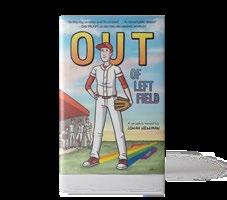

aspects of competition as the game play.
Out of Left Field , by Jonah Newman, colors by Donna Oatney (Andrews McMeel Publishing, March 26): Cartoonist Newman’s graphic novel debut is a touching coming-out story inspired by his own high school experiences. Bright, vibrant art and touches of humor help soften the more emotionally challenging, all-too-recognizable moments of shame and bullying as a nerdy boy is motivated by a crush to join the school baseball team, soon becoming immersed in jock culture.



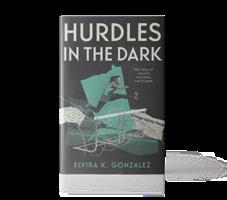
The Misdirection of Fault Lines by Anna Gracia (Peachtree Teen, April 2): Former elite athlete and coach Gracia brings her tennis knowledge to this emotionally astute novel. Three girls from very different backgrounds—financially struggling Alice Wu (who’s grieving her father), wealthy it girl Violetta Masuda, and Leylah Lê, who has diabetes and possibly an attitude problem—face the pressures of competition alongside family and friendship issues.
Lucky Break by Brooke Carter (Orca, April 16): Carter, whose own rugbyplaying days came to an end after an injury, introduces readers to Trinidadian and Irish Canadian rugby player Lucy in this accessible, well-written page-turner that will immediately hook reluctant readers. Seventeenyear-old Lucy, who’s also a top student, sees her promising future derailed by a broken ankle sustained during a game, and her mental health suffers as a result.
Crash Landing by Charmaine Anne Li (Annick Press, April 16): Skater Li’s debut taps into the tremendous popularity of skateboarding. This beautifully realized coming-of-age story centers around a diverse community of Vancouver teens. The queer Chinese Canadian leads— close friends (and eventually
more)—boost one another’s dreams. Jay’s filming of Ash’s skating forms an art school portfolio for Jay and a skate competition entry video for Ash.
Pillow Talk, by Stephanie Cooke, illustrated by Mel Valentine Vargas (HarperAlley, April 30): Competitive pillow fighting may not yet be well known, but Cooke (who actually participated in a Toronto league!) and Vargas will grab readers with their colorful, action-packed, and deeply affirming graphic novel. Ontario college student Grace Mendes struggles with poor self-concept, but pushing past her comfort zone to do battle as pillow fighter Cinderhella opens up a new world.
Hurdles in the Dark: My Story of Survival, Resilience, and Triumph by Elvira K. Gonzalez (Roaring Brook Press, May 28): This courageously honest memoir by a former elite athlete and track-and-field coach will help many readers feel seen. Gonzalez’s remarkable story includes surviving traumas such as her mother’s kidnapping by a drug cartel, suicidality, time in juvie, and sexual abuse by her high school coach. Ultimately, her determination and hard work won her a college sports scholarship.
Laura Simeon is a young readers’ editor.
LAURA SIMEON Illustration by Eric Scott AndersonIn this historical and cross-cultural exploration of gender, Wind invites readers to expand their understanding beyond the oppressive limits of the gender binary. Humans love to categorize, but just as different cultures have trained people to see varying numbers of bands of colors in a rainbow (three in ancient Greece, five in ancient China, seven in modern America), gender is more complex than a simple binary. Beginning with this apt analogy, the informationpacked introduction clarifies key terminology, offers scientific explanations to distinguish sex from gender, compares frameworks for
understanding gender, and prepares readers for a reflective journey through time and around the globe. The chapters that follow discuss the experiences and cultural contexts of diverse groups of people (and some individuals), including eunuchs, hijras, and māhū, among others. Throughout, Wind points out the recurring impact of European influence, but he delves deeper into the topic in the chapter entitled “The Colonization of Gender.” Another recurring theme is the harmful conflation of gender and sex, a topic explored further in a chapter focused on intersex activism. The conclusion emphasizes that everyone benefits

Wind, Lee | Zest Books | 312 pp. $19.99 paper | Aug. 6, 2024 9781728414546 | Series: Queer History Project
from liberation from the gender binary. In bubbles in the margins, Wind inserts additional commentary, helpful explanations, and definitions. The conversational tone keeps the text engaging. Questions at the end of each chapter promote active learning
through self-reflection, and the extensive source notes are an open door to further inquiry. An accessible, thorough, curiosity-provoking introduction to gender. (author’s note, resources, index, photo credits) (Nonfiction. 14-18)
Thoughtfully examines inequities that leave a caring teen mother without support.
FIREBIRD CAGED
Chhabra, Maya | Jolly Fish Press (160 pp.) | $9.99 paper | Aug. 1, 2024
9781631638374 | Series: Horizon
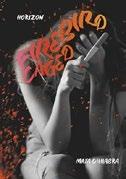
A pregnant teen undergoes a harrowing journey in a county juvenile shelter in this accessibly written, drama-filled novel. High school senior Ashley Muller has moved with her divorced mother to a small town several hours away from Milwaukee. Her mom, who became pregnant with Ashley at 16, didn’t go to college, but she hopes that Ashley will stay focused and get a degree. After Ashley discovers she’s pregnant with ex-boyfriend Danny Morales’ child, she decides she’ll keep the baby. Her mom (who was pressured by her own religious parents to give Ashley up for adoption) is concerned for Ashley’s future and at first suggests an abortion. After their landlord evicts them, Ashley stays with Madi Wendt, a wealthy friend who offers her Xanax for a panic attack. When Ashley takes it again to help her sleep, she seeks mental health support from a doctor, who pressures her to enter an in-patient rehab center. Ashley refuses, and the police take her into custody for child neglect. Meanwhile, Danny takes his paternal responsibilities seriously, getting a job and saving for the baby. This believably told story thoughtfully examines inequities that leave a caring teen mother without support while purporting to protect her child. Ashley’s inspiration from the ballet The Firebird is woven throughout this important work about a young woman who doesn’t give up despite tremendous odds. Ashley and Madi read white; Danny is cued Latine.
A poignant, heartbreaking tale that will keep reluctant readers riveted. (Fiction. 14-18)
Chow, Keshe | Delacorte (496 pp.)
$19.99 | Aug. 6, 2024 | 9780593707500

Reflections from a mirror world hold secrets long ago forgotten. Ying Yue’s betrothal to the crown prince has not gone the way she had hoped. Instead of finding a man interested in getting to know her, she’s been locked away, seeing no one except her handmaiden. As her wedding draws nearer, Ying begins to see strange things in the mirror, until she’s suddenly pulled into a mirror world that’s much like her own but with its own dangers as well. There’s a Mirror Prince, too, and he’s different from the one she knows—more attentive and interested in her well-being. But not everyone from the mirror world is so friendly, and, like it or not, Ying discovers she’s at the center of an ancient prophecy that affects both this reflected world and her own. Unfortunately, Ying repeatedly falls for deceptions that come her way, all the while distracted by her feelings for two different princes, both of whom she barely knows. While the mirror world’s trappings are chilling and possess an alluring aesthetic, and the doubles are eerie, these elements unfortunately aren’t enough to elevate the novel, which gets bogged down in the plot contrivances that Ying encounters and ever-so-luckily survives. This quick
read delivers a strong Chinese-based fantasy setting but leaves something to be desired in terms of character and plot development.
Atmospheric but ultimately unfulfilling. (author’s note) (Fantasy. 14-18)
Cotugno, Katie | Delacorte (240 pp.) $19.99 | Aug. 13, 2024 9780593433324 | Series: Liar’s Beach, 2

Two years down the road from the traumatic events of Liar’s Beach (2023), a Harvard freshman finds a second corpse— this time in his girlfriend’s bed. Cotugno kits out her whodunit with the requisite red herrings, enigmatic clues, sudden twists, and even an Agatha Christie–style denouement that wraps things up. But her sequel’s focus and drive center on the emotionally messy romantic triangle that develops as Linden finds himself caught between a rekindled relationship with former high school classmate Greer and a previously platonic one with close childhood friend Holiday. It’s Greer’s roommate who winds up in her bed, wearing her clothes, and dead of an apparent overdose while, as in the opener, Holiday is the story’s observant, analytical Poirot—to the point that she’s the one who actually goes ahead and sets up the climactic scene after making a few telling discoveries while Linden is stewing at home, suspended in the wake of being framed for a rash of student pilferage. Along with marveling anew that Linden, the still thoroughly self-centered and clueless narrator, has any love life at all, readers will be less likely to be swept up in the details of the crime than the tale’s whirl of intelligent banter, alcoholfueled parties, hormonal heat, and pretty post-adolescent confusion. Main characters present white. Dark doings and mildly steamy desire in the dorms. (Mystery. 14-18)
Davidhizar, Megan | Delacorte (352 pp.) $19.99 | Aug. 6, 2024 | 9780593705643
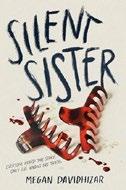
A teen’s lost memories may hold the key to her missing sister’s fate.
Outgoing, athletic Grace and shy poet Maddy, sisters born just 10 months apart, were on their senior trip when they went outside during a storm, and only Grace returned. Grace can’t remember anything after getting on the Forest Lane Academy bus for a week in the mountains at Shady Oaks Lodge, and she struggles to recover her memories while she heals from a head wound she got that night. The police are getting nowhere, so Grace sets out to figure out what happened to her sister, but their schoolmates are acting strangely, and an anonymous blogger is posting theories about what happened, some of which point the finger at her. The more details Grace uncovers about Maddy’s life, however, the more unsettled she becomes. Both girls were keeping secrets—but were any of them serious enough to put them in danger? The suspense builds steadily, and multiple red herrings will keep readers guessing. Maddy’s poems are interspersed throughout the text and add to her characterization as an isolated, angsty lost soul. The twisty plot will engage teens who enjoy stories told from multiple perspectives and by unreliable narrators, and it culminates in an explosive ending. Most characters are cued white. Twists abound in this thrilling debut. (Thriller. 12-18)

Dhondy, Farrukh | Tradewind Books (144 pp.) | $12.95 paper
June 1, 2024 | 9781990598272

The Freezies, three determined social outcasts, try to help a quiet man in need. Kai, Leo, and Suleikha (who goes by “Sully”) live in an English village. Some locals, who wish to keep away “squatters and travellers,” quickly become outraged when an unfamiliar van towing a trailer shows up on the common. The driver, Mr. Christaki, plays the violin beautifully. When a small mob of residents recruits the police to evict him, Leo’s parents, a lawyer and a barrister, instead invite Mr. Christaki to relocate to their property and hire him to teach Leo violin. Following the winter holidays, Mr. Christaki returns from a trip to London with a 4-year-old girl, and he’s suspiciously vague about her parents’ whereabouts and how long she’ll be staying. Then one day, the van, trailer, and both inhabitants are gone. In alternating points of view, the young narrators recount these events—including a revelation about Mr. Christaki’s identity—with delightful frankness. Leo, who reads white; Kai, who has Jamaican and Polish heritage; and Sully, who is of Indian descent, are by turns unintentionally amusing (“We don’t play. We hang out or chill”) and trenchant in their observations (“Parents don’t know how hard it is to make friends and keep them”). The trio, who share strong convictions about standing up for others, also learn about trade unions, asylum law, and xenophobia over the course of the story.
Young activists set an example for their community in this accessible adventure that conveys both humor and pathos. (Fiction. 12-16)
Eller, Marissa | Holiday House (304 pp.)
$19.99 | July 2, 2024 | 9780823456215
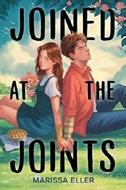
A North Carolina teen with rheumatoid arthritis and social anxiety confronts changes. Ever since Ivy Harding’s grandmother died on the day Ivy turned 12, birthdays have been nothing to celebrate—especially not her upcoming 18th. As if the pressure to mark this milestone weren’t enough, she’s been avoiding her best friend: She fears telling Rory about her arthritis, since disclosing her diagnosis ended a previous friendship. But anxiety isn’t the only reason Ivy prefers staying home and creating gluten-free versions of her grandmother’s recipes. Her arthritis is worsening, sapping her energy. When Mom, who has lupus, suggests that Ivy and Caroline, her outgoing older sister who has celiac disease, attend a support group for chronically ill teens, Ivy is reluctant to participate. But she’s drawn to witty, handsome group member Grant, who also has RA. Gradually, Ivy and Grant’s relationship becomes an endearingly supportive romance to swoon for. But when Ivy, encouraged by Grant, discloses her RA to Rory, the unexpected consequences threaten to ruin everything. Candid discussions and vivid descriptions of life with chronic illness will resonate with readers navigating similar circumstances; Ivy’s conflicted feelings about a medication that
Multiple red herrings will keep readers guessing.
SILENT SISTER
contraindicates pregnancy are particularly poignant. Ivy’s close-knit family adds warmth, and her grief for her grandmother is touchingly explored. Realistically, not every conflict is neatly resolved, but debut author Eller, who has RA herself, ends on a hopeful note. Most characters read white. Frank, sweet, and uplifting. (author’s note, resources) (Romance. 14-18)
Galarza, Josh | Henry Holt (320 pp.) $19.99 | July 23, 2024 | 9781250907714

A teenage boy in Tucson struggles with grief and disordered eating in this emotional debut. At almost 16, Brett has worked out how to make himself feel better. All it takes is a “Costco-sized bottle of vodka,” a generous assortment of treats from every drive-thru restaurant in the area, and the privacy to dream up new adventures for Kid Condor, the hero of his own lovingly crafted comic-book universe. And lately, he’s needed a lot of cheering up: Between his adoptive English professor mom’s cancer diagnosis and new tensions with best friend Reed, who has taken to young adulthood with more grace, game, and abdominal muscles than Brett can fathom, there’s a lot of fear to push away. Enter Mallory, a fat classmate who recognizes Brett’s eating disorder for what it is before he’s found the words to describe it himself. She takes Brett under her wing, demonstrating a path away from diet culture and the shame it enforces. Galarza brings humor and sensitivity to the story, permitting his characters to move organically through even the uglier moments of growth. Brett’s internalized fatphobia brings a body-focused valence to his friendship with Mallory, but not at the expense of Mallory’s depth of character. Mexican American Brett is mestizo, and his roots play an important role in his storytelling
in the Kid Condor universe. Other major characters are white.
A moving, funny story expressing the tenacious voice of a survivor. (author’s note, resources) (Fiction. 13-18)
Glaze, Amanda | Union Square & Co. (384 pp.)
$19.99 | Aug. 27, 2024 | 9781454951926

A descendant from a long line of witches is poised to continue the family responsibility of safeguarding her townfroma centuriesold curse.
As 17-year-old Nev Blackwell prepares to honor her ancestral vow of watching over Hollow Cliff, the arrival of a mysterious stranger sparks doubts in her mind about the truths she’s long been taught about her family’s role in the town’s tragic past. Nev’s coastal Northern California home, the Blackwell House of Spirits, serves as both a haunting tourist attraction and a repository for closely guarded family secrets. Explorations of the theme of familial betrayal and a reckoning with uncomfortable history add an additional layer to the narrative, illustrating the haunting impact that past actions can have on future generations. Glaze deftly weaves the past into the present, delving into the depths unlocked by a mere drop of family blood while gradually unveiling answers. The sense of urgency she creates heightens both the tension and the pacing. Rich cinematic descriptions of the setting and nuanced character development foster a deep connection with the quaint yet enigmatic town. Despite some repetitive, one-note dialogue, the foreshadowing and subtle hints invite readers to revisit the story, unraveling its intricate ghostly
elements upon a second read. Fans of Maggie Stiefvater and Mary Downing Hahn will be drawn into this enchanting tale, a gripping supernatural thriller that’s characterized by a strong blend of light romance, moody gothic ambiance, and magical mystery.
Highly recommended for those seeking an atmospheric page-turner. (Paranormal thriller. 14-18)
My Salty Mary
Hand, Cynthia, Brodi Ashton & Jodi Meadows | HarperTeen (448 pp.)
$19.99 | Aug. 20, 2024 | 9780062930101
Series: The Lady Janies

A saucy, feminist take on “The Little Mermaid.” This clever mashup includes actual 18th-century women pirates Mary Read and Anne Bonny, not to mention Blackbeard’s son, Tobias, legendary pirate Calico Jack, and a whole host of captains (Ahab! Crunch! Hook!). Woebegone mermaid Mary falls in love with a boy she rescues and becomes human to be with him. Alas, he turns out to be a narcissistic blowhard. After Mary jumps overboard, she’s rescued by pirates and pretends to be a boy in order to join their crew, which includes Tobias. Later, she runs into Calico Jack, her cousin who’s also Above, or in our world. He’s searching for his human father when he meets and is smitten with pugnacious Anne Bonny. At the AARP conference—the Admirable Association of Retired Pirates, that is—Mary, Jack, Anne, and Tobias learn that there’s to be a contest to determine the next Pirate King; whoever brings back
This delightful farce contains seamless twists and gripping action.
MY SALTY MARY
the most treasure wins. Tobias knows where Blackbeard’s treasure is hidden. Meanwhile, Mary’s overbearing father, the Sea King, agrees to a bargain—either she becomes Pirate King or he takes her back home to Underwhere. This delightful farce contains seamless twists and gripping action, as well as some somber nods to harsh gender and racial inequalities. Tongue-in-cheek references, accessible writing, and dialogue that readers will connect with all create an immersive reading experience. The leads are white; Tobias is brown-skinned. This swashbuckling tale anchored by historical details is a treasure. (authors’ note) (Historical fantasy. 13-18)
Holden, Elizabeth | Flux (304 pp.) | $14.99 paper | Aug. 20, 2024 | 9781635831030

A roller derby–loving teen from the Chicago suburbs faces turmoil and discovers her inner strength. Millie Novak is a queer, white sophomore who loves dyeing her hair fun colors and struggles with anxiety. Millie’s parents are finally divorcing after years of fighting. She attends school online, and her older brother is away at college, so she’s on a mission to make friends. The one place Millie feels like she’s a part of something bigger is at the rink, playing roller derby. When Millie (aka Dino Might or Mighty) makes it onto the Prairie Skate Juniors team, along with Pumpkin Slice Latte, who’s Latina and her only friend, she’s thrilled. Getting to know Pumpkin better offers Millie a glimpse into the type of friendship she’s been missing ever since leaving public school in sixth grade after being seriously bullied. Pumpkin starts to become a distraction during practices, however, and their friendship begins to hinder Millie’s progress in the sport. By contrast, another teammate, Stork, is a focused athlete who takes an interest in Millie’s growth. Along the way to trying to win the Soy Anything tournament,
Millie will need to navigate complicated crushes and friendships. Holden’s debut invites readers into Millie’s fast-paced journey of self-confidence and growth that’s set against the vibrant culture of roller derby, making for a delightful coming-of-age story. Quirky characters and a swiftly moving plot will keep the pages turning and inspire readers to lace up their own skates. (Fiction. 14-18)
Jae-Jones, S. | Wednesday Books (368 pp.)
$20.00 | Aug. 6, 2024 | 9781250191458
Series: Guardians of Dawn, 2

In her newfound identity as the Guardian of Fire, Jin Zhara continues her journey to find the other Guardians of Dawn and defeat the Mother of Ten Thousand Demons.
Following the defeat of the Frog Demon of Poison and Pestilence in Zhara (2023), Zhara and Han continue their search for the scholar Li Er-Shuan and the Songs of Order and Chaos, the book that holds the key to defeating the Mother of Ten Thousand Demons. But they quickly find that they don’t just face demons—the undead are attacking, and the same magic is bleeding the land of ki. The solution, they hope, lies in Kalantze with the Qirin Tulku. There they meet Li Ami, the daughter of Li Er-Shuan, and Gaden, the Left Hand of the Qirin Tulku. Together, they set out to figure out what force is behind the hordes of undead—and how to stop it. This sequel is fast-paced and exciting, immediately jumping back into the magical world of the Morning Realms. With their consistently satisfying character arcs, the intriguing cast members continue to be among the most delightful aspects of the series. Jae-Jones infuses this world with East Asian elements, and she weaves strong queer representation naturally into the story. Though the intense worldbuilding is initially overwhelming, this
worthwhile sequel is easy to dive into and lives up to its predecessor. An action-packed and inherently magical sequel. (Fantasy. 13-18)
Johnson, Maureen | HarperTeen (384 pp.) $19.99 | Aug. 6, 2024 | 9780063255951
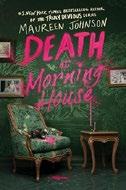
A Syracuse, New York, teen takes a summer job as a tour guide at a remote estate that was the summer home of a wealthy and eccentric family in the 1930s. Marlowe Wexler is stunned but delighted that her crush on Akilah Jones, her classmate and ice cream shop co-worker, is reciprocated. But when she accidentally causes a house fire on their first date, she’s overwhelmed by anxiety, embarrassment, and doubt. When her history teacher recommends her for a job at historic Morning House in the St. Lawrence River’s Thousand Islands, Marlowe is eager to escape to a place where no one knows her. Soon she’s trying to find her footing among a troubled group of teens working there, all with their own messy secrets. Johnson’s latest juxtaposes Marlowe’s clever, funny, slightly neurotic firstperson voice with chapters about the mysterious historical family, which included six children who were adopted from England during World War I by Phillip Ralston, a eugenicist physician. The other household members were Ralston’s sister, his actress wife, and their youngest child, a biological son. Compelling mysteries unfurl in the past and the present, centering on tragedies that befall both groups. Marlowe serves as an anchor amid the many contemporary characters who seem like they may be deceiving her, keeping readers guessing. Lesbian Marlowe reads white; Akilah is cued Black, and there’s diversity in race and sexual orientation among the supporting cast.
An engaging and expansive mystery. (map) (Mystery. 13-18)
The fantasy author views classic fairy tales through a modern lens.
BY ILANA BENSUSSEN EPSTEIN
“IT’S EASIER TO track a story if it’s bleeding,” says Princess Eve, the protagonist of Sleep Like Death (Bloomsbury, June 25), Kalynn Bayron’s new, Snow White–inspired fantasy-horror novel. It’s a sentiment the book bears out, with Bayron once again proving the timeless appeal and endless interpretive potential of fairy tales. Kirkus’ starred review calls the book “a spellbinding narrative of betrayal, redemption, and the enduring magic of maternal love.”
Eve has spent her life training to face the Knight, a spectral figure who prowls her queendom, offering the tantalizing promise of wishes fulfilled, but only at a terrible price. Eve is well acquainted with his horrific bargains, having seen her mother transformed by his cruel games. As Eve collects accounts of his crimes in her pursuit of justice, she learns not only about her own origins, but about the nature of storytelling itself.
Kirkus spoke with Bayron via Zoom from her home in Ithaca, New York. The interview has been edited for length and clarity.
What’s your favorite part of working with fairy tales and fantasy? Do you consider your stories to be retellings?
I use the term retelling loosely, especially within the framework of my stories, but it’s true. They are retellings, or maybe reimaginings—I like that term a little more. I like to think of my stories in conversation with the generally accepted versions of these fairy tales, which for a lot of us is the Disney version, although many of these stories predate Disney, of course. But I enjoy stories
that have a thread of horror in them, and stories that are a little gruesome, and I get that with fairy tales.
It’s exciting to rework them with a modern lens. Fairy tales give us a very specific snapshot: We’re getting the main beats of the story, but we don’t see the before and we don’t see what happens after they ride off into the sunset. I’m searching for that broader view within these stories.
How do you prepare to write a novel like this?

I try to read every version of the story I can get my hands on, and, thank God for the internet, they’re easily accessible.
I’m a fan of the Marvel Cinematic Universe, and the form of storytelling with some characters who are pillars in the world, and their stories are familiar to us, but we then get to see all these other, branching timelines. I think of my work existing in a similar space: I have the freedom to take the research I’ve done, and the story versions I’ve collected, and fit them together in a way that expands on a story we all think we know. I’m also hugely inspired by things like Wicked, which takes a story we think we know and flips the point of view. I think these stories require interpretation to get to their true meaning.
There’s a throughline of parent-child relationships in this book.
A theme I lean into with Sleep Like Death is motherhood, and mothering done by people who are not our mothers. What kind of trauma and trials do we go through in those roles? Because I think society vastly underserves people in caregiver roles.
I really enjoy writing about complicated relationships, and especially if you’re someone like me—someone who has a complicated relationship with your parents—those themes are present for a reason. Storytelling can be transformative, so I hope even in a YA fantasy novel there’s room to find comfort and healing.
We’re accustomed to the fairy-tale trope of a couple
who wish for a child. You subvert that trope when it comes to the character of Leah Kingfisher, whose wish for children turns into a curse.
The Kingfisher storyline felt horrifyingly timely. This couple wanted children so badly, but their dream turned into a curse because they were given no say in how they would enter into parenthood. They love their children, but the tragedy that befalls them is timely and it speaks to the question: Who is allowed to have that kind of power, and who is allowed to make those choices?
The Knight presents characters with an illusion of wonderful choices, but really, there’s only the choice that he wants to give, and it’s no choice at all. I think we see that dynamic in the real world all too often. Putting him in the story as a figure they’re working to defeat gives us something to cling to, and characters to root for, and space to think about how we can do that in our own reality.
You mentioned Wicked and broadening the scopes of stories to reveal new facets of characters. With the Knight, we learn his backstory, but it doesn’t make him any less of a villain.
Sometimes, villainy just exists. That can be a difficult concept to grasp, because it’s hard to grapple with an evil that has no reason and cannot be reasoned with. It’s a frightening prospect.
Your previous foray into fairytale reimagining, Cinderella
I enjoy stories that have a thread of horror in them, and stories that are a little gruesome.
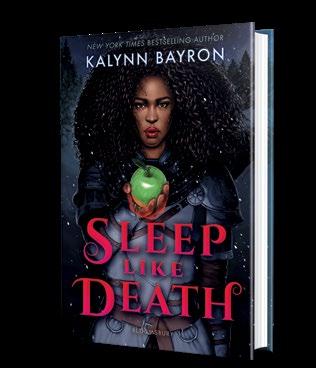
Bayron, Kalynn Bloomsbury | 400 pp. | $19.99 June 25, 2024 | 9781547609765
Is Dead, has been the subject of censorship challenges. How do you handle these kinds of attacks?
It’s unfortunate that I spend so much time thinking about it, but it has affected my career and my life so drastically that I do have talking points. Right now, more than ever, young readers need mirrors. Especially when we’re talking about young readers who have marginalized, historically excluded identities. Especially when we’re talking about queer kids.
I try to keep that in the back of my mind. I try to remember that young readers deserve these stories, and the rest is just background noise. I have to listen to [the noise], of course—I have to deal with it and make plans—but in the end, my goal is to put as many queer stories in the
hands of as many young readers as possible.
There’s an interesting parallel between thinking of literature as a mirror and considering the very famous mirror in this story.
I can’t talk about mirrors without talking about Dr. Rudine Sims Bishop’s [article] “Mirrors, Windows, and Sliding Glass Doors.” That’s very literally what this story is about: It’s about being able to look at yourself, and look at interpretations of yourself, and taking the hand of someone who is close to you and saying, We’re going to go through this together. That’s storytelling, and that’s what Sleep Like Death is. I feel really proud of that.
I also saw that Cinderella Is Dead was optioned recently. What do you hope for from an adaptation of your work?
What I want more than anything is for the heart of the story to stay intact. I think we’ve all seen adaptations that didn’t quite do what they needed to do. Sleep Like Death, Cinderella Is Dead all of my work, really—is about the queer, Black experience, and whatever that looks like for the situation, because we are not a monolith.
I want so badly, not just for myself but for my colleagues, to see those adaptations. I want to see the adaptation of [Tracy Deonn’s] Legendborn; I want to see the adaptation of [Bethany C. Morrow’s] A Song Below Water, and all these amazing Black fantasy stories. Seeing us center stage in these roles is a powerful thing.
Ilana Bensussen Epstein is a writer and filmmaker in Boston.
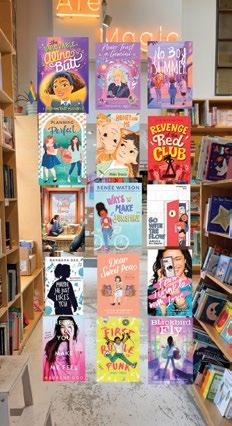












The trilogy will complete the novelist’s Shadowhunter Chronicles.
Cassandra Clare will conclude her popular series of young adult fantasy novels, The Shadowhunter Chronicles, with a new trilogy of books.
SPONSORED CONTENT

Alfred A. Knopf Books for Young Readers will publish Clare’s The Wicked Powers trilogy, the publisher announced in a news release. The first volume of the new trilogy is slated for publication in the spring of 2026; according to Clare’s website, it will be titled The Last King of Faerie The Shadowhunter Chronicles, set in a world populated by both mythical creatures and regular humans, kicked
This review originally ran online April, 2022.
A princess finds hidden strength and purpose in a kingdom filled with intrigue and treachery.
In this debut YA fantasy, Seeling delivers creative tweaks to familiar tropes of the genre, building a compelling world of magic, warfare, powerful evildoers, indelible dragons, loyal horses, and a princess and others tested by adversity. While the last section of this three-part epic occasionally loses momentum due primarily to overt proselytizing (Christianbased but not named as such), the author successfully navigates multiple interwoven plotlines. Love (romantic, platonic, and parental) is a recurring theme. So are betrayal, transformation,
and self-discovery. Although Seeling’s villains are one-note (an evil queen, a sadistic emperor, a pair of tyrants), her heroes have strong emotional dimensions. Among them, timid book lover Princess Isladora must overcome fear, physical weakness, and a traitorous queen to save her father’s kingdom. Meluha Crocus, an ancient spirit held captive in Isladora’s magic ring, offers wisdom and guidance. Tobin, the commoner who comes into Isladora’s life, finds his nobility in words and deeds. Half dragon, half human Ariah and her wyvern (dragon) companion, Json, must escape their enslavement to fulfill a destiny they never imagined.
off in 2007 with City of Bones, the first volume in The Mortal Instruments series. Five more books in that series followed, as did more series of novels: The Infernal Devices, The Dark Artifices, The Eldest Curses (co-written with Wesley Chu), and The Last Hours.
The Shadowhunter Chronicles spawned a 2013 film, The Mortal Instruments: City of Bones, and a television series, Shadowhunters, that ran from 2016 to 2019.
In a statement, Clare said, “I am delighted to have Knopf and Penguin Random House as my publishers for this last trilogy in the Shadowhunters world. They truly understand
what it means…to wrap up such an epic tale that has been told over so many years.”—M.S.

To hear Cassandra Clare on the Fully Booked podcast, visit Kirkus online.

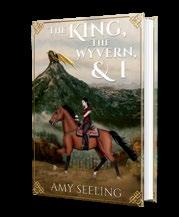
Commander, the deposed leader of the wyverns, finds a new life underground and a nurturing imperative to aid tiny “Annites” as they face the threat of extinction from “Protectors.” (The despotic ruler of these potent Protectors, refusing to acknowledge the Annites’ existence as sentient beings, plunders their subterranean habitat for magic “frost.”) Unfortunately, Isladora begins sermonizing in earnest in Part 3 (“Meluha Crocus was the antithesis of religious, and she knew he was in pain because he wanted to believe. She prayed
The King, The Wyvern, and I Seeling, Amy Dorrance Publishing Co. 572 pp. | $33.00 April 10, 2020 | 9781647021900
that God would show him the way”). Still, one of the surprises Seeling has in store for readers reveals how Meluha came to be entrapped in a ring. Other twists: the truth of Isladora’s parentage, how the wyverns bond with their half human companions, how the Annites thank Commander, and weapons and fight training. The most cinematic element in this far-reaching plot is the strange trajectory of Json and Ariah’s relationship. Imaginative storytelling that delivers memorable characters, human and otherwise.
Kirkus Star
Memories of Ash
Khanani, Intisar | Snowy Wings Publishing (336 pp.) | $29.99 March 26, 2024 | 9781958051306
Series: The Sunbolt Chronicles, 2

In the second installment of The Sunbolt Chronicles, Hitomi finds herself grappling with her past and navigating a perilous present.
It’s been almost a year since Hitomi nearly killed herself with her sunbolt, and she’s been secretly training with mage Brigit Stormwind while struggling to recover her lost memories. But Hitomi’s world is soon upended when Stormwind is summoned to stand trial by the High Council of Mages, facing allegations of treason made by Arch Mage Blackflame. Left to fend for herself, Hitomi sets off through the desert in hopes of preventing Stormwind from being imprisoned. Over the course of a journey that’s fraught with danger and discovery, Hitomi’s choices bring her back into contact with friends from the first novel, along with unexpected new allies. Khanani wastes no time plunging readers into the heart of the conflict, weaving a tale that’s both unpredictable and engaging. As Hitomi ventures through diverse landscapes and encounters their inhabitants, the author skillfully incorporates elements reminiscent of the Arab world, adding depth to the story’s worldbuilding. Hitomi’s quest for justice is balanced by her cleverness, making her a protagonist worth rooting for and a hero whose growth feels genuine and earned. With its richly imagined world and compelling characters, this entry is a worthy successor that more than does justice to 2023 series opener Sunbolt . A thrilling, slow-burn adventure. (Fantasy. 13-16)
Lee, Wen-yi | Gillian Flynn/Zando (336 pp.)
$19.99 | Aug. 13, 2024 | 9781638930587

Children are dying in the eerie town of Slater—and Isa’s been unknowingly drawing their deaths before they occur.
Eighteen-yearold Isadora Chang left home two
years ago in the wake of the tragic suicides of close friends Wren and Zach, the only other people of color her age. But the new life she’s built comes crashing down when her art school portfolio showcase consists of gruesome sketches rather than pieces on her proposed theme. Although her professor grants her an extension, completing the work necessary to retain her scholarship feels like an insurmountable task, especially after she’s persuaded to go home for her abusive father’s funeral. Returning to Slater means reuniting with Mason, the only other surviving member of their friend group. It also means hearing the mountains sing to her again. As a bisexual Chinese American girl in a highly Christian quarry town, Isa always felt that staying put would mean death. This fear is heightened when Mason seeks her help: He believes that Wren and Zach were murdered by a mysterious force and that Isa may be the key to solving everything. Told in Isa’s resonant first-person voice, this debut transcends the supernatural mystery genre with its emotional depth and engaging setting. As a contemplative alternative to actionfocused horror, its striking explorations of grief, shame, love, and queerness will haunt readers with how true they ring. A powerful, introspective gothic tale filled to the brim with horror. (Horror. 14-18)

Maines, Nicole | Illus. by Rye Hickman Colors by Bex Glendining | DC (208 pp.) $16.99 paper | April 2, 2024 | 9781779510457
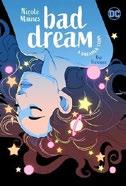
transgender teen alien discovers superpowers and queer community in this work by actor Maines, who played Dreamer in the TV show Supergirl . Nia doesn’t fit in in her “Nowhere, USA” community. Even in a rural town where half the residents are aliens, Nia is all too aware that “somehow, I’m the weirdo.” But when Nia, who’s dad is human, discovers that she’s unwittingly inherited the precognitive powers that her sister has been training her whole life for, she decides to run away to the big city of Metropolis. There she meets other trans and queer girls (including a trans alien like herself) and even attends a ballroom competition before her family’s past catches up with her. This is the best kind of story about a trans character: one where the core plot is interesting and compelling whether the main character is trans or not, yet being trans affects the character and their life in realistic ways, and their identity isn’t merely tacked on. This graphic novel manages to satisfy both as a transgender coming-of-age story and an alien-filled superhero origin story. Readers don’t even need to be DC Comics fans to enjoy it. Nia Nal and everyone on her side are likable and easy to root for. The art, awash in vibrant colors, is beautiful and expressive while remaining unfussy and imaginative. Nia reads white; two of her new Metropolis friends have dark brown skin, and the third is purple-skinned. A sweet, engaging, and beautifully executed adventure. (Graphic fantasy. 13-17)
Kirkus StarTHE DARK WE KNOW
Ng, Freeman | Atheneum (368 pp.)
$19.99 | Aug. 27, 2024 | 9781665948593

Despair and hope mingle in this free-verse novel set in the Angel Island detention center in 1924.
The destruction of birth records as a result of the 1906 San Francisco earthquake meant that immigrants from China could attempt to elude the 1882 Chinese Exclusion Act by claiming to be related to Chinese residents already in the U.S. Seventeen-year-old T.G., who’s arrived with his father and grandfather, is one of many people shuffled off to the barracks. There, he waits for his interview with an immigration officer who will scrutinize his “paper story.” The living conditions are unpleasant: The men sleep in cramped rooms, consume tasteless meals, and suffer at the hands of callous guards. Carved into the walls around them are poems composed by those who came before, expressing the same longing and misery felt by T.G. and his fellow immigrants. Day after day, T.G.’s father exhorts him to “jab the awl,” a phrase that evokes focus and self-discipline. But when T.G. stumbles upon a clandestine meeting of the Resistance—men seeking to effect change in the barracks—he decides to join their cause despite the risks of upsetting the status quo. The limited setting and the repetitive nature of each day in the barracks establish a distinct sense of place with a restrictive atmosphere. Moments of levity and genuine human connection ease the often bleak mood.
A vivid depiction of a lesser-known chapter in U.S history. (historical note, resources) (Verse historical fiction. 14-18)
Pete, Alina. | Iron Circus Comics (120 pp.) | $20.00 paper Aug. 27, 2024 | 9781638991335
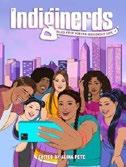
A book of 11 different stories featuring Indigenous geeks as the throughline. This compact graphic memoir anthology covers a lot of ground, including stories with ensemble casts and ones that focus on a single protagonist. Some entries include positive queer representation, and many show that Indigenous people come in all shapes and colors. Each one is anchored in themes around healing and looking to the future. Another thread connecting them is the characters’ Native heritage and passion for various forms of contemporary pop culture, including tabletop role-playing games, virtual reality, TikTok, and Star Trek. This collection stands out for centering on contemporary representations of First Nations peoples rather than their history. Several of the stories address darker themes such as bullying, peer pressure, and domestic violence, although the characters also engage in activism by setting up pirate radio stations to strengthen communities, supporting language revitalization over Twitch, and exploring Indigenous representation in speculative fiction. The authors and artists come from many different backgrounds, and they highlight their own nations’ cultures. Another of the book’s major strengths is the variety of art styles it features; the contributors all offer readers a different visual
perspective and a taste of their craft. This engaging compilation shows that nerd culture can be a powerful way to find your community. A compelling volume that explores different worlds through a nerdy Indigenous lens. (concepts and development, contributors) (Graphic anthology. 12-18)
Phillips, Jennifer | Jolly Fish Press (160 pp.)
$9.99 paper | $28.50 PLB | Aug. 1, 2024 9781631638411 | 9781631638404 PLB
Series: Horizon

A high school junior finds her voice when her grandmother’s personal freedoms are challenged. Alia is a nationally ranked tennis player whose learning disabilities make academics hard. But when her world history class begins studying the warning signs of genocides, Oma, her German immigrant grandmother, encourages Alia to look closely at what’s happening around the country. Recently, the government has begun closely monitoring citizens 80 years and older; those who get a poor Senior Situation Score are moved into assigned housing, the argument being that the senior population is depleting funds targeted for other things. Attacks on elderly people are on the rise. Alia attends an activist meeting with Oma, and as she learns more about what’s happening and starts to gain confidence in her leadership abilities, she encourages her friends to get involved. Alia and Oma are interviewed on news shows and are subjected to harassment by groups advocating for government oversight of older people. But as the teens’ local efforts gain momentum, a local congressman goes on record supporting senior citizens’ rights, signaling a shift in public opinion. The short chapters and spare text will pull reluctant readers in, and the realistic portrayal of grassroots activism will keep them reading this well-told story. Most characters are cued
white; Alia’s close friend Jonah is a member of an unspecified Native American tribe.
A timely tale with real-world connections to the power of speaking out against injustice. (Fiction. 12-18)
Roach, Mary E. | Disney-Hyperion (304 pp.) $18.99 | Aug. 6, 2024 | 9781368098403

A pair of queer teenagers attempt to unravel the mysteries of a small town’s murderous history. Lucy is begrudgingly spending her spring break in Haeter Lake, Tennessee, population 1,376, because her mom, the renowned private detective Katy Preston, has made an unexpected detour. She’s there to investigate the death of Pierce, the powerful Anselm family patriarch. Audrey Nelson is at the scene of the crime, stealthily hiding, when Lucy and her mom arrive, and the two teens lock eyes; Lucy doesn’t say anything, though she’s intrigued. While Katy tends to the crime solving, Lucy discovers that her mom has a whole history of her own that’s connected to Haeter Lake that Lucy knows nothing about. Her curiosity piqued, she begins her own investigation, but she’s warned by Arthur Joyce, the town’s longtime librarian, to stop digging around. Audrey and Lucy are attracted to each other and immediately become entwined—and as they grow closer, the stakes ratchet up, especially when the town sheriff looks to pin the murder on Audrey’s mother. But beyond the suffocating grip the Anselm family has on the town, the atmosphere seethes with
racist overtones. Audrey (who’s white) and Lucy (whose dad is white and mom is cued Black) are determined to find out the truth—and stay alive while doing so. The chapters alternate between the girls’ first-person perspectives.
An intriguing and quick-moving thrill ride of a whodunit with a fledging amateur detective driving the tension. (Thriller. 13-18)
Rodriguez, A.G. | Deep Hearts YA (401 pp.) | June 11, 2024

Borrowing from Latin America’s Indigenous history, this fantasy series opener reimagines a culture that was violently disrupted by colonialism. When the high priestess of her religious order instructs Hildy, 15, to deliver the Telling (her people’s origin story) over three nights at the Areíto Festival, Hildy resists—she’s shy, stutters, and fears angering Luisa, her intimidating youngest sibling. But, supported by her faithful best friend, Izzy, Hildy summons the courage. Hildy’s Telling takes up most of the novel, describing how their ancestor, Jenaro Albizu del Rios, confronted Maboya, the god of death. Jenaro’s reluctance to abandon his faithful companion, Agostin, caused Yaya, the creator, to return Jenaro to life. When Jenaro angered his father by backing out of an arranged marriage, he was reminded that Yaya’s blessing isn’t necessarily benign. On the second night, while Hildy continues their ancestor’s story, Luisa abruptly disbands the
The poems explore themes around family dynamics and personal acceptance.
Temple, interrupting the festival and forcing Hildy and Izzy to flee the chaos. Hildy’s role mostly consists of channeling Jenaro’s picaresque adventures, but the cliffhanger ending points to her potential as a protagonist in future installments. Referencing his Puerto Rican heritage, the author weaves what’s known of Taíno culture, language, and history into a coherent fantasy. After a bit of awkward scene-setting at the outset, the narrative finds its footing and gathers momentum and power, leaving readers to guess how Jenaro’s and Hildy’s stories might merge.
An inventive, organically grown hero’s journey. (map, glossary) (Fantasy. 12-16)
Russell, Mark | Illus. by Ben Caldwell Colors by Jeremy Larson | DC (184 pp.) $16.99 paper | June 4, 2024 | 9781779528964

With the 2048 U.S. presidential race at a deadlock, an unexpected nominee emerges: Eugene, Oregon, 19-year-old Beth Ross.
When Beth’s hair gets caught in
a deep-fat fryer at her fast-food restaurant job, she goes viral as Corndog Girl. All she wants is to focus on community college and taking care of her dying father, who’s confined to a hospital bed, in need of treatment that his insurance won’t cover. But the power of social media turns Beth’s overnight fame into a political candidacy—and, shockingly, she wins, despite the best efforts of corrupt senators and CEOs. Beth doesn’t want anything to do with the presidency, but she realizes this opportunity gives her a chance to enact real change for the country. So Beth steps up and gets to work tackling war, international diplomacy, climate change, and corporate greed. This reformatted and expanded release of the 2016 original contains the first six issues of the DC Comics series, plus
Catwoman: Election Night #1 and a new Prez story, “The Final Frontier.” This work seamlessly meshes comedy with refreshingly blunt commentary on major social and political issues. Teens will appreciate this laugh-out-loud funny and visually enticing read that’s illustrated in a classic comic-book style with vibrant colors and expressive characters. Many recurring characters read white; there’s ethnic and racial diversity among the supporting cast. A beloved and engaging series that’s more relevant than ever. (concept sketches) (Graphic fiction. 14-18)
Ryan, Lexi | HarperTeen (432 pp.)
$19.99 | July 30, 2024 | 9780063311909

Three years after a human slayed the evil faerie king and took power in the Unseelie Court, two young women from different backgrounds are brought together by destiny.
Three years ago, Princess Jasalyn was freed from captivity under evil faerie king Mordeus, but she can’t escape the memories of torture. At night she uses a ring forged with witch magic, giving the kiss of death to those who once hurt her. She’s shocked to learn that Mordeus may somehow be alive. Then Jasalyn is kidnapped during one of her secret outings by Hale Kendrick, the man whose presence in the dungeons buoyed her when she felt ready to die, and she’s offered a chance to fight back against the Magical Seven, who helped Mordeus take power. All she must do is swap places with Felicity, an Eloran Echo whose magic allows her to take the form of others and access their memories. Felicity will pretend to be the princess while Jasalyn works with Kendrick to kill Mordeus for the safety of the realm. This duology opener, set in the world of Ryan’s These Hollow Vows series (but accessible to new readers), is told from Felicity’s and Jasalyn’s alternating first-person
perspectives, and it takes readers on a journey of intrigue, conspiracy, romance, and healing. Both leads open themselves up to love and friendship, helping readers become invested. The writing is fast-paced, the narrative is engaging, and the characters are dynamic. Main characters present white.
Thrilling and romantic. (map) (Fantasy. 13-18)
Schmidt, Gary D. | Clarion/ HarperCollins (208 pp.) | $18.99
Aug. 27, 2024 | 9780358659648

Having lost one beloved foster sibling in Orbiting Jupiter (2015), Jack Hurd faces the devastating prospect of losing another in this equally intense companion volume. Schmidt packs his story with seemingly tough but emotionally vulnerable males circling orphaned Jupiter, who is 3 years old and a charismatic scene stealer. Eighth grader Jack, her foster brother, is positively head over heels, but so (startlingly) is his cross-country running mentor and erstwhile tormentor, Jay Perkins. Then Jupiter’s birth mom’s parents suddenly show up with a custody claim just as her formal adoption is about to go through. Even her thoroughly unlikable, domineering grandfather turns out to be harboring a deep-seated grief that shows itself when tragedy seems about to strike that troubled family once again. Despite his first-person narration’s straightforward tone, Jack is anything but reserved in his feelings, and whether moved by rage, pain, or (most often) joy, he’s constantly breaking into tears. Readers’ eyes aren’t likely to stay dry, either, considering the sharply felt emotional stakes and the growing tension as the legal claim heads to a hearing, while Jack’s small town loyally rallies around him and his loving foster family. The outcome remains in doubt until a final, powerful release. The cast presents white;
returning fans will welcome back several characters from previous outings, most notably Coach Swieteck, a hard-nosed, amputee war veteran. Lachrymose but brimming also with love and heart. (Fiction. 12-16)
Shanté, Angela | Page Street (160 pp.)
$18.99 | May 7, 2024 | 9798890039538
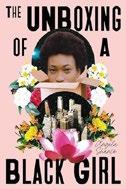
An African American poet explores the special joys and challenges of Black girlhood. Educator and writer Shanté draws on her life story to explore what it means to be a Black girl in contemporary society. From the beginning, she pays homage to wide-ranging experiences, some positive, some not, of women of all ages, while acknowledging her connections to them through her writing. She uses a variety of poetic forms, including free verse and haiku, to describe ways that Black girls are characterized from an early age. Others negatively judged Shanté’s mother’s status as a single parent, even as her mom sought supportive connections: “she wanted us to know / that we had community / a culture / a home / a safe space / to land. / In a hard / hard / world.” Her mother’s guidance was critical to Shanté’s ability to overcome limitations imposed both from within and outside the community. By weaving her personal experiences with reflections and observations, the author provides a rich tapestry of perspectives on Black girlhood. In addition to culturally specific episodes, the poems explore universal themes around family dynamics, coming of age, and personal acceptance. The author effectively uses the imagery of being boxed in (and stepping outside boxes) to link the poems and vignettes. Footnotes cleverly expand on the ideas contained in the main text. A comprehensive readers’ guide completes this unique literary package. A highly creative way of providing insightful social commentary. (Poetry. 14-17)
Stringfield, Ravynn K. | Joy Revolution (288 pp.) | $12.99 paper
Aug. 20, 2024 | 9780593571545
Series: Love in Translation, 1

A 17-year-old Black American girl is determined to have the best love-free semester in Paris possible with the help of her extensive bucket list and a grudging tour guide.
Aspiring triple threat Whitney Curry is finally living her dreams in Paris. Despite the city’s reputation for romance, she’s determined to eschew love in favor of sightseeing and doing research for her senior thesis, a one-woman play about the life of her idol, Josephine Baker. But the perfect start she imagined is immediately derailed. Whitney alienates her roommates, Belgian Nora and Swiss Sophie, clashes with her (unfairly) handsome and grumpy French tutor, Thierry, and finds her classes more intimidating than expected. So when Thierry rescues her from a sticky situation, Whitney sees her chance to salvage her semester with a deal: If he guides her around Paris, she’ll write the good tutoring review he needs to end his suspension from his soccer team. The added bonus? His grumpiness will make it easy to keep him at arm’s length—or so she thinks. Whitney and Thierry are easy to root for: Their romance is sweet, and the story is suitably escapist, reminiscent of ’90s romcoms. But the imbalance in time devoted to their relationship versus Whitney’s project, combined with various underdeveloped themes, all results in a final act that feels rushed, confusing, and unearned. Several main characters are Black, including Thierry; Sophie is implied to be queer. A sweet, escapist romance that stumbles due to some inconsistencies. (Romance. 12-18)
plenty of excitement.
KISSES, CODES, AND CONSPIRACIES
Urban, Diana | Putnam (368 pp.)
$19.99 | Aug. 13, 2024 | 9780593625088

A secret party in the Paris catacombs sounds like the experience of a lifetime— until you’re lost in the tunnels of the dead.
Ruby has been looking forward to her French class trip to Paris for ages; she’s especially excited to explore locations for her YouTube channel, “Ruby’s Hidden Gems.” When her adventurous bestie, Val, sneaks off to meet up with a handsome stranger, Ruby follows, accompanied by former BFF Selena and class valedictorian Olivia. The four girls trustingly follow the mysterious Julien into the Paris catacombs for an illegal cataphile party, but they all end up lost. Aboveground, Ruby’s other best friend (and crush) Sean and Selena’s girlfriend, Aliyah, help the police search for the missing teens. Underground, Ruby, Val, Selena, and Olivia confront the fractures in their friendships and struggle to find their way out. But wait—did some of the bones just come to life? From teen drama to suffocating nightmares, this book takes readers through twists and turns in the maze of tunnels beneath Paris. Urban’s prose is absorbing, leading readers through frightening scenes at a breakneck pace. Ruby’s narration of her harrowing journey is fast-paced and exciting. Sean’s chapters, which focus on his attempts to assist with the rescue, unfortunately distract from the far more compelling story playing out underground. The lead characters are white; Selena reads Latine, and Aliyah is cued Black.
A nonstop thrill ride through an eerily claustrophobic setting. (Thriller. 14-18)
Vohra, Ambika | Quill Tree Books/ HarperCollins (368 pp.) | $19.99 Aug. 27, 2024 | 9780063347168

A senior’s fervent attempt to stretch her horizons reveals that some things just can’t be planned. Aisha Agarwal, who’s attending Arledge Preparatory on a scholarship, always aims for the top—from the school of her dreams (Stanford) to the boy of her dreams (Brian Wu, co-valedictorian and former childhood friend). With Brian recently out of a relationship and maybe, finally, speaking to her again, the main thing still tugging at Aisha’s mind is a Stanford application prompt: “Share a time you left your comfort zone.” When a mix-up introduces Aisha to the beaming, laid-back Quentin Santos, a biracial (Italian/Filipino) tennis player from a neighboring public school, their ensuing friendship results in Aisha’s tutoring Quentin in exchange for his helping Aisha follow through on a list of beyond-her-comfort-zone experiences she wants to complete by graduation—things that she told herself she couldn’t do earlier due to her academic focus and the strictness of her Indian immigrant parents. Along the way, Aisha discovers that people, herself included, tend to be far less one-note than they might appear. With equal parts humor and gravity, the narrative tackles subjects such as self-acceptance, anxiety, differences in socio-economic status, and cultural and religious traditions
(Aisha’s family is Hindu; Quentin’s is Catholic). A lovable cast of characters, laugh-out-loud scenes, and a slow-but-steady romance all make for a breezy yet earnest read. A charming debut with real substance. (Fiction. 13-18)
Wen, Abigail Hing | Feiwel & Friends (320 pp.) | $19.99
Aug. 13, 2024 | 9781250883230

Seventeen-year-old
Tan Lee thought living with his crush was awkward enough, until his ex-girlfriend showed up with stolen goods. After Winter Woo’s dad died, she and her mom rented rooms in the Lees’ house so they could stay in Palo Alto, California. Although the attraction between the Chinese American teens is mutual, Tan and Winter are mindful of their position as landlord and tenant and agree to remain platonic. When all three parents leave for a Maui vacation, Tan braces for a week of being around Winter with only Sana, his 5-year-old sister, as a buffer. Things go smoothly until the unexpected arrival of Rebecca Tseng, Tan’s ex, whose wealthy, controlling parents whisked her home to Shanghai several months ago. Rebecca has run away with her father’s Tang dynasty gold coins to pawn to fund her new life. But after Winter’s 911 call—an attempt to get legal protection for Rebecca that instead draws the attention of men sent by Rebecca’s father to capture her— they’re all forced to flee. The ensuing chase takes the foursome around the Bay Area as they try to protect the coins—which are not what they at first seem—from their pursuers. Cryptography enthusiast Tan is better at cracking codes and ciphers than sorting out his feelings. His romantic dithering occasionally trips up the otherwise action-packed adventure,
complete with hostages and an all-out rooftop showdown.
A fun romantic thriller that offers plenty of excitement. (Thriller. 13-18)
Wilson, Wayne L. | Kinkajou/Artemesia (260 pp.)
$14.95 paper | May 14, 2024 | 9781951122874

A first-person coming-of-age tale set in 1961 that follows a preteen and his family as they become the first Black people in an all-white neighborhood. Inquisitive 12year-old Samuel Cole and his parents have lived in the same modest cottage in Los Angeles since his birth.≈Originally from Oklahoma, the couple embraces the idea of the “New Frontier,” a term used by then– presidential nominee John F. Kennedy, and they strategize ways to seek a better life, starting with purchasing a new home. Despite encountering obstacles, a year later they succeed, but that means leaving behind a tight-knit community. Samuel hates how eerily sterile his new neighborhood is: “Everything [is] amazingly clean…[Does] anyone even live here?” His reservations turn out to be well founded; the family members experience racist torments, including the vandalization of their car with a racial slur soon after they move in. In the midst of his new normal, Samuel makes friends with Patsy McGuire, a white girl who eventually helps with uncovering a neighborhood secret. Wilson infuses the story with moments of levity and occasionally charming dialogue, but the writing overall feels dated, and the execution is uneven. The author also ties history into this well-intentioned story, touching on the inner lives of Black people who believed in promised new beginnings during the tail end of the Great Migration. An accessible but lackluster tribute to Black families who were in constant search of dignity. (publisher’s note) (Historical fiction. 12-14)
Yasmin, Seema | Simon & Schuster (352 pp.) | $19.99
July 9, 2024 | 9781665938440
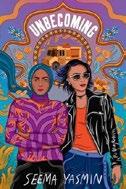
Two Muslim high schoolers seek to help other teens access safe abortions in this fiction debut by medical doctor and journalist Yasmin. In a Texas where abortion is illegal and anyone attempting to get one (or help someone else get one) risks imprisonment, best friends Laylah Khan and Noor Awad are determined to write an “inclusive, straightforward, and helpful guide” for teens who need to find an abortion clinic. Indian American Laylah, who’s a practicing Muslim, wants to go to medical school and specialize in obstetrics and gynecology. Palestinian American Noor wants to become a journalist; she identifies as pansexual and culturally Muslim. Alternating chapters from the girls’ points of view capture their thoughts and emotions as they each hide something from each other. The pace escalates toward the end as the friends open up to one another. Laylah reads about her grandmother’s personal experience with a compulsory sterilization program in Indira Gandhi’s India that was pushed by the U.S.—information that offers valuable context for her family’s supportive attitudes. However, because a major plot point comes fairly late in the story, the ending feels rushed, not allowing enough space for the leads and their relationship to change and grow.
Laylah and Noor are strong characters with clear goals and aspirations; Yasmin weaves in their opinions on Islam and relationships, emphasizing the importance of being able to make the choices that affect one’s life. Timely, important subject matter; uneven execution. (author’s note) (Fiction. 14-18)
The show, based on S.E. Hinton’s young adult classic, has opened on Broadway.
A Broadway musical based on S.E. Hinton’s classic young adult novel The Outsiders
has opened, and critics are mostly pleased with the adaptation.
The Outsiders , which Hinton wrote when she was 16, was published in 1967. It tells the story of two Tulsa, Oklahoma, gangs who are at war with each other.
The musical adaptation features a book by Adam Rapp and Justin Levine and music and lyrics by Levine and the folk band Jamestown Revival. Danya Taymor directs a cast that includes Brody Grant, Sky Lakota-Lynch, Joshua Boone, Brent Comer, and Jason Schmidt.
At the New York Times, Jesse Green had qualified praise for the show, writing that “the structural

problems mean its achievements don’t stick. But they’re still achievements, and a show need not be for the ages to be for the moment.”
Johnny Oleksinski of the New York Post praised Grant’s “sublime” performance and writing that the musical is “driven by authenticity, earnestness, youth and ample heart.”
Sara Holdren of Vulture found the show enjoyable but flawed, writing that it “sometimes traffics, perhaps unavoidably, in cliché, [but] it makes up for it with the tenderness and muscle of not just its songs but its staging and performances.”

The Outsiders is currently playing at the Jacobs Theatre in New York. —M.S.

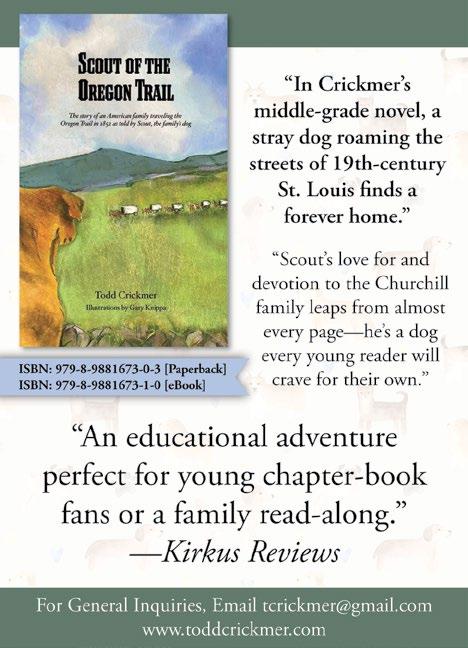
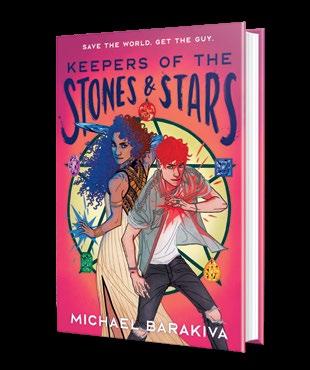
 Demitria Lunetta
By Ella McLeod
R. M. Romero
Demitria Lunetta
By Ella McLeod
R. M. Romero


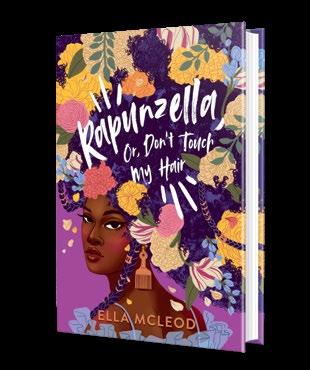
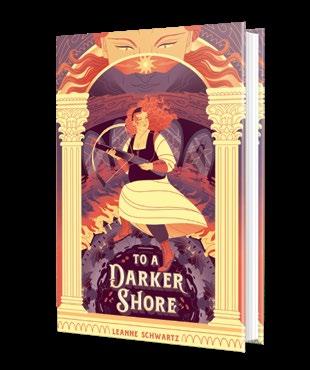
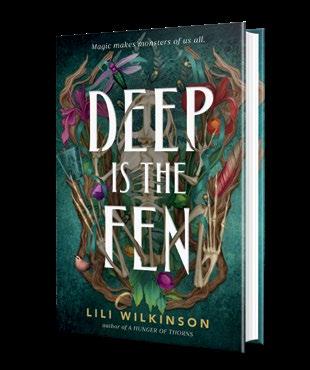
Scan the QR Code to listen now:
New episode every Tuesday
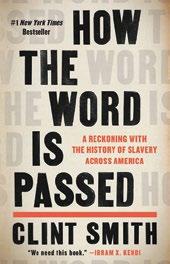









EDITORS’ PICKS:
Just Another Epic Love Poem by Parisa Akhbari (Dial Books)
The Walk of the Field Mouse by Nadine Robert, illus. by Valerio Vidali (Milky Way Picture Books)
Funny Story by Emily Henry (Berkley)
THANKS TO OUR SPONSORS:
Crazy Hawk by R.J. Stewart
Children of the Sun by Harry Allen
Hollis and Gray by J.P. Zeigler
Four Reasons To Die by K.P. Gresham
Of Vital Interest by Frank Demith
Fully Booked is produced by Cabel Adkins Audio and Megan Labrise.
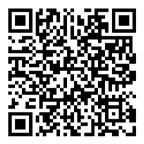
Guest host David Levithan talks with YA novelist Gayle Forman on this episode.
BY MEGAN LABRISEOn this episode of the Fully Booked podcast, special guest host David Levithan celebrates the publication of Wide Awake Now with friend and fellow Authors Against Book Bans co-founder Gayle Forman. The Fully Booked Takeover invites a beloved bestselling author to become our special guest host for one episode. They choose another author whose work they admire for an in-depth conversation, writer to writer. The questions they ask and the topics they explore are all up to them.


Levithan is the bestselling author, co-author, or editor of dozens of books for young readers focusing on love, friendship, and standing up for what you believe. Highlights include Boy Meets Boy , Nick and Norah’s Infinite Playlist (with Rachel Cohn), the Every Day series, Two Boys Kissing , and The Full Spectrum: A New Generation Writing About Gay, Lesbian, Bisexual, Transgender, Questioning, and Other Identities (with Billy Merrell). He is the founding editor of Scholastic Press’s YA imprint, PUSH, and co-founder of Authors Against Book Bans, an advocacy group organizing in support of the freedom to read.
His latest novel, Wide Awake Now (Knopf, April 16), reimagines Wide Awake, the political, forward-looking love story he published in 2006: “In Wide Awake (2006), Levithan imagined a political gaytopia in a divided nation roughly 20 years in the future; now he reimagines this world during the election of the first gay Jewish president of the

Awake Now
David Knopf | 272 pp. | $19.99 April 16, 2024 | 9780593706978
U.S. in 2024,” Kirkus writes in a starred review. “Emotionally charged, boldly confrontational, and brilliantly executed.”
He is joined in conversation by award-winning novelist and journalist Gayle Forman, the bestselling author of If I Stay, I Have Lost My Way, Frankie & Bug , and others titles—for readers of all ages— focusing on love, friendship, and standing up for what you believe in. Her essays and nonfiction have appeared in the New York Times , Elle , the Nation , and Time
Then Laura Simeon, Mahnaz Dar, and Laurie Muchnick share their top picks in books for the week.
AT SOME POINT, every child considers a career as an astronaut; it must be among the top five answers to the perennial question, “What do you want to be when you grow up?” It makes sense that writers of children’s books have embraced space travel; a few classics even predate real-life space missions, including Antoine de Saint-Exupéry’s 1943 novella, The Little Prince, and H.A. Rey’s Kirkusstarred 1957 book, Curious George Gets a Medal , in which the lovable protagonist successfully completes a mission to become “the first space monkey.” Indie authors, too, have created kids’ books in which their young characters travel to the stars. Here are three, all recommended by Kirkus Indie: Jo Ann Jeffries and Lukas Kaiolohia Bob’s 2021 novel, Astronaut Kids, featuring illustrations by David Faber Rosenberg, tells the story of five American children selected for a voyage to the dwarf planet Ceres, located in the asteroid belt between Mars and Jupiter. They all
have their own cool research projects: 10-year-old Kai from Hawaii is studying how weightlessness affects his pet cat, among other things, while 13-year-old Texan Greg is working on a time-travel device. Not everything goes as planned, however, and the children must work together to deal with unexpected difficulties. Kirkus’ reviewer notes that “the book fairly vibrates with enthusiasm—and employs many exclamation points—but also takes science seriously, modeling teamwork and depicting realistic problems.”
The fun 2022 picture book When I Was a Baby, I Went Up to Space, by Ezra Dutch Kimsly, with illustrations by Mike Cañas, is a bit more whimsical in its tale of a baby who’s accidentally launched into space after his big sister ties his highchair to a flexible tree branch, flinging him into orbit. Among other things, he sees a bear (the constellation Ursa Major), a toucanlike satellite, astronauts “dancing” during a spacewalk, various
anthropomorphic planets, and the moon—complete with the cow, dish, and spoon from the “Hey Diddle Diddle” nursery rhyme. Young readers need not worry about the young narrator, though, since he safely returns to Earth with his parents none the wiser. Kirkus’ reviewer praises the cartoon illustrations and the story’s sly humor, as in one notable background gag: “Pluto asking ‘Hey guys, am I in or out?’ will amuse parents who grew up with nine planets to name.”
Vincent on Mars (2024), by author/illustrator Marc Elliott Davis, is another memorable space-based picture book, albeit with subtler charms. Here, a young boy named Vincent has a vivid dream in which
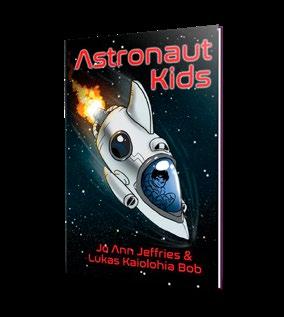

he finds himself in a red desert with gravity that’s much lighter than what he’s used to—as evidenced by the great leaps he’s able to take. He’s an artist, so he paints what he sees, including a crater below a blue sunset. It’s soon clear that he’s on the red planet Mars, and he imagines its craters full of water giving life to lush vegetation. Kirkus’ reviewer calls the work “visually dazzling”: “Davis’ full-color, painterly illustrations are truly stunning (reminiscent of Vincent Van Gogh’s work, of course), with swirling skies and softly hemispherical detail; visible brush strokes add dimension and nuance.”
David Rapp is the senior Indie editor.

 Illustration by Eric Scott Anderson
DAVID RAPP
Illustration by Eric Scott Anderson
DAVID RAPP
A Chinese American woman looks back on poverty, war, and family betrayal in this heartfelt memoir.
Jensen writes in her mother Helen’s voice as she recaps Helen’s life story, starting with her childhood in Detroit in the 1920s and ’30s, where her father, Ho Sin, and mother, Bo-Ling, both Chinese immigrants, ran a laundry that barely provided for them and their six children. In 1936, after Bo-Ling’s death, Ho Sin returned to China with the children, remarried, and then returned to America, leaving them in the Tai Ting Pong village in the care of their new stepmother, Seam. Jensen paints a detailed portrait of the traditional village lives they led, which were culturally vibrant but materially austere, a problem
exacerbated by their uncle Ho Huang, who gambled away the family’s farmland and brutalized his wife. In 1940, Ho Sin brought 17-year-old Helen to the San Francisco Bay Area, where she re-Americanized herself and waitressed at swanky eateries—her recollections of Chinatown are colorful and bustling. Later chapters describe her version of the American dream, with nice suburban houses and the resources to put her daughters through college. Jensen’s absorbing narrative spotlights the clash between old country and new—Ho Sin almost disowned Helen for waiting tables, a disreputable occupation for a woman from China, he believed—and the discrimination Chinese immigrants faced in America. It’s also a story of family values under

Jensen, Karin K. | Balestier Press | 310 pp. $15.99 paper | March 1, 2023 | 9781913891299
the pressure of a poverty that forces agonizing trade-offs between love and material sustenance, as when Seam stirs her stepchildren’s resentment by giving her own daughter extra rice and sausage. Jensen relates all of this in richly evocative writing that sometimes achieves a plangent poetry. (“A man’s wife was his property…After each
beating, Auntie would cry great sobs. Then she would be quiet for a while, and then she would gather herself to continue the day’s business.”) The result is an engrossing read that brings to life both the strength and adaptability of its subject and the wrenching changes she endured.
A classic, vividly written immigrant saga. 157
By Tim Lane By Karin K. JensenMURDER AT THE LAKE
Father of One
Anttola, Jani | The Book Guild (320 pp.) | $18.86 paper
July 28, 2023 | 9781915603982
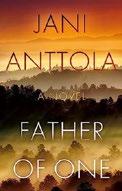
A man races to escape the fall of Srebrenica in Anttola’s war novel.
For three years, Maka Delić has defended the Muslim enclave of Srebrenica from the army of Serbs seeking to overrun it. Now the town has fallen, the other members of Maka’s unit are dead or scattered, and he is forced to tramp through the Bosnian forest with a motley collection of survivors, dodging Serbian military units and death squads sent to kill anyone unlucky enough to remain in the conflict zone. Maka can see that the cause is lost, and he wants nothing more than to escape and reunite with his wife, Amelia, who was pregnant when she was evacuated at the start of the conflict, and meet the son she has been raising on her own. Maka falls in with a number of comrades, including a radical Serbian contrarian, a teacher who knows how to use a hunting rifle, and a goldsmith toting his gold along with him, though the hellish circumstances on the ground mean that Maka is often separated and on his own again. The narrative also follows Amelia, who is living as a refugee in Munich with their son, Dino, aware that Srebrenica has fallen but unsure of her husband’s fate. Through skirmishes and imprisonment, Maka does whatever he can to survive and make it to his family—but his fate may already have been sealed long ago when he decided not to flee
Srebrenica with his wife. Anttola, a veteran of the Bosnian war, captures the horrors of the conflict with surreal precision: “He went down to the bodies and started walking among them, turning over some that lay face down. His shadow stirred up clouds of flies, the buzzing convulsing into a wild drone. The faces of the dead were already swollen and discoloured like winter pumpkins.” The claustrophobia of the tiny war zone, and its displaced population with no safe place to retreat, will undoubtedly remind readers of contemporary conflicts. The impact of these scenes of humanity and inhumanity will be felt long after the book ends. An affecting and timely novel of war.
Arnold, Carolyn | Hibbert & Stiles Publishing (286 pp.)
$29.99 | $19.99 paper | May 2, 2024 9781998095032 | 9781998095018 paper

A decades-old murder case resurfaces with more questions than answers in Arnold’s mystery, the 13th entry in a longrunning series. This latest entry in the author’s Madison Knight series characteristically begins with a crime—in this case, it’s the horrific rape and murder of teenage Emily Kane at a high school senior-class beach party by someone she knew (“As her brain screamed for oxygen, the spinning in her head began to slow. This is how I die! ”). Fast-forward 24 years to the newly discovered corpse of Kane’s former classmate, 41-year-old Dylan
Graham, found in his home next to a handwritten suicide note, computer printouts about Kane’s murder, and an accusatory diary entry pointing to classmate Troy Matthews as the girl’s real killer. Veteran Braybury police detective Carson Snow reopens the case and apprehends Matthews—who is a fellow officer—on the day of his wedding to police detective Madison Knight. Knight is immediately spurred into action to both solve Emily’s murder and absolve her fiance. With his bail posted, Knight gets to work sifting through clues and crime-scene evidence while the novel fills in some critical backstory by revisiting the night in question and the hard-partying group of teenagers (who all believed that Richie Klein, the boy who was eventually convicted of Emily’s murder, was actually innocent). Klein’s recent release from jail could afford him the opportunity for revenge against his boyhood friend, Troy. As Troy’s sister Andrea (the local police chief) and Detective Snow desperately investigate the crime, Madison’s faith in her fiance’s innocence never wavers. Arnold’s grasp of police-procedural conventions is assured. The mystery opens with a murder, and all of the primary players immediately fall into position with a few hairpin turns, conveyed in short, crisply written chapters that lead to a satisfying resolution. While this installment can be read as a stand-alone entry, readers new to the Madison Knight mystery series may want to backtrack several books to become familiar with the recurring cast of characters. Arnold has mastered the recipe for an engrossing, rousing, and ultimately gratifying mystery, and this installment is no exception.
A brisk and appealingly twisty mystery, reliably anchored by the series’ resilient lead.
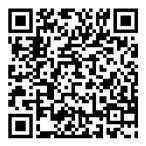
For more Indie content, visit Kirkus online.
bin Vilio, Katib | Palmetto
Publishing (260 pp.) | $15.99 paper
April 9, 2024 | 9798822941434

In bin Vilio’s novel, three Black women encounter spirits during a road trip just before the nation descends into chaos.
Ida Bridges and her friends Soweto and Abeni have come of age in a racist America, struggling to assert their identities. Ida was found as a baby amid the floodwaters of Hurricane Katrina in 2005, and she was adopted by a white mother and a Black father. Her skin is affected by vitiligo, and she lost her hearing during the storm. Years later, when Ida is in college, her mother gives her and her friends a copy of the Safe Negro Travel Guide, which assisted Black travelers in the Jim Crow–era South, and she urges them to take a road trip of their own. As the journey unfolds, ghostly apparitions of men and women greet the young women with the words “Black, Girl, Chosen” in Black American Sign Language. When the friends’ lives are in danger, these same mysterious figures rescue them; soon, the trio realize that Ida is the “Chosen” one. Meanwhile, as the apparitions appear to other Black men and women throughout the country, law enforcement starts rounding people up and quarantining them with alleged “acute African psychosis syndrome.” This compelling and unpredictable novel features strong characters and a nuanced presentation of modern racial discrimination. Bin Vilio guides readers through an alternate America in which the victims of oppression effectively make their presence known, rising from the water in a powerful symbol of both birth and erasure. Readers will find this work informative and haunting as it speaks to the power of remembering the past and hearing its plea for a true and enduring justice.
A brave and affecting story of resilience.
Breen, Amy | She Writes Press (280 pp.) | $17.95 paper June 4, 2024 | 9781647426743
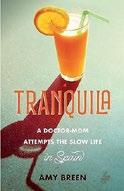
A doctor relocates her unprepared family to Spain in Breen’s debut travel memoir. In 2013, the author and her husband, Tim, moved their three kids from Silicon Valley to Barcelona. Breen, a doctor, felt like she was missing her kids’ childhoods as she worked evening shifts at the emergency room; when the couple heard how much their neighbors were earning from renting out their house on Craigslist, they quickly followed suit. Picking Barcelona as a destination, based on little more than a cursory internet search and Tim’s high school and college Spanish, the family flew off for a planned yearlong stay with visions of tapas, cava, and the tranquilo lifestyle dancing in their heads. The reality was not quite so rosy—first came the realization that, in Barcelona, people speak mostly Catalan, an entirely different language from Spanish. Second, getting the kids (aged 9, 7, and 5) to their international school every morning would require an uphill hike, a train, and a bus ride. Breen soon began to wonder if her attempt to spend more time with her kids while broadening their horizons in one of the world’s great cities might merely have guaranteed them (and her) a year of stress and alienation. To rise to the occasion, she was forced to adapt in ways she never would have thought possible. Breen writes with self-deprecating humor, as when she describes balancing the need to practice Spanish with the urge to make friends: “My Spanish at this point was restricted to the present tense, and to the subjects of food or modes of transportation. So with my desire to deepen our friendship with Claudia and Tomás, I pushed the English.” Perhaps the author is playing up the Breens’ naïveté—the degree of the family’s ineptitude in unfamiliar surroundings is sometimes difficult to
comprehend. Even so, the reader’s early feelings of schadenfreude for this woefully unprepared clan soon morph into a more complex appreciation for how shifting every aspect of life—language, food, housing, transportation—lays bare the fundamental structures of motherhood. A colorful, mortifying memoir of relearning to parent in a foreign country.
Burton, Douglas A. | Silent Music Press (274 pp.) | $22.99 paper March 25, 2024 | 9781733022156
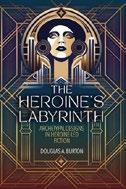
Burton pitches a female counterpart to the “Hero’s Journey” story structure in this craft book and writer’s guide. The author, a writer and speaker, was deep into writing his first novel, Far Away Bird (2020), when he noticed a problem. He’d long relied on the “Hero’s Journey” structure coined by mythologist Joseph Campbell, who famously used a theory of primordial archetypes to identify a “universal” story pattern of a central hero leaving home and crossing a threshold into an unknown world to defeat evil. Burton found that in many woman-led stories, protagonists didn’t leave their home or “native culture” to confront conflict, but rather moved deeper into it, uncovering its labyrinthine secrets. From this key difference, Burton argues, an entirely different story structure unfolds, one that “exists now, has always existed, and will continue to exist for as long as there’s still a heroine to write about.” This “heroine,” while generally female, can be any protagonist whose story follows this “inward” journey. Burton guides us through what he has identified as key “heroine” archetypes, presented not as inviolable, linear story beats, but in the more “intuitive” form of overturned tarot cards, creating “a loose story structure for your imagination and creativity.” The archetypes, including figures like the
An earnest and well-written account of a search for self.
charming but villainous Masked Minotaur and story beats such as the Captivity Bargain, are grouped under three linear acts: Orientation (Immersion), Exploration (Self-Realization), and Permutation (Rearrangement). Each chapter ends with a deft, bullet-pointed summary of the archetype and its function in the “Heroine’s Labyrinth,” as well as a series of writing exercises encouraging readers to identify the archetypes for themselves in popular movies and TV shows (The Hunger Games series, Moana, and Ex Machina feature prominently). A final rundown of popular genres from horror to memoir notes which “Heroine’s Labyrinth” archetypes may be more or less prominent within them.
Burton’s prose is accessible, lucid, and concise without sacrificing detail: He moves quickly through the traits that make up his “Heroine’s Labyrinth,” substantiating his theories with more than 200 examples from texts, from the Bible to Barbie. The book can be useful for developing and conceptualizing structure, even for readers who don’t subscribe wholesale to archetypal theory. The book occasionally runs the risk of taking a gender-essentialist approach to its story structure. Luckily, Burton largely sidesteps this trap, noting that the “heroine” structure can apply just as easily to some stories led by men ( Amadeus, The Dark Knight, and Fight Club, to name a few) and repeatedly emphasizing the first rule of the labyrinth: “Even under the most oppressive, worst-case scenarios, we must see the heroine as the sovereign being.” His work smartly illuminates the way that the same “home” that serves as comfort for Campbell’s male hero figure may be both cage and battleground for protagonists subjugated by the society they live in. The result is an incisive, highly
quotable work that doubles as both applicable writing advice and sharp cultural critique.
A readable, refreshing entry in the cluttered world of writing advice.
Carty, Dave | Guernica Editions (200 pp.) | $18.95 paper
April 1, 2024 | 9781771838832
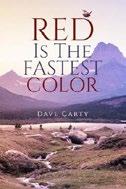
In Carty’s novel, a retired teacher finds purpose caring for his Parkinson’s disease–afflicted sister in rural Montana. Jamison Everett has always been far more comfortable within the literary worlds of Rilke and Steinbeck than the one he lives in; at 72, he’s consummately lonely, retired, and living in Minneapolis on his teacher’s pension. He was never close to his younger sister, Monna, a painter long living in the rural town of Aden, Montana, with her blue-collar husband, Ben Van Hollen. But her Parkinson’s symptoms are getting worse, and they need some help around their homestead. Jamison’s relocation quickly forces him to confront his interpersonal shortcomings, including his simmering tension with Ben and his lack of emotional intimacy with his sister. Ben and Jamison are ideologically at odds; Jamison’s middle-class upbringing and higher education imbue him with a condescension he can’t quite recognize, while Ben’s working-class experience seems to preclude vulnerability or the desire for contemplation. But as time goes on, the two find common ground in their love for Monna and recognition of the other’s value in small moments.
Monna, meanwhile, withdraws into herself. While the author largely stays close to Jamison’s perspective, Monna’s solitude while the men are away conveys her deep anguish and indignation at the loss of her artistic and physical abilities. Montana’s harsh winter landscape proves fertile ground for Carty’s introspective, subtle prose—the naturalistic imagery destabilizes Jamison’s inner narration and his opinion of how he’s lived his life: “There was more here than the absence of the city…in the same way that a deer hidden in tall grass vanishes maddingly when viewed with purpose and intent, he had been frustrated in his inability to see all that was here to be seen.” Some readers may find the book’s ending unsatisfying, but it offers the characters the kinds of choices their lives hadn’t yet provided. A quietly potent rumination on the costs, and rewards, of how life ends and begins again.
Chann, Marpheen | Islandport Press (256 pp.) | $16.13 paper
June 21, 2022 | 9781952143359

This memoir follows a Cambodian American gay writer and activist’s quest through childhood and adolescence to find his identity.
Chann was born in 1991 into a Cambodian refugee family in Stockton, California, and in his early years, he lived with his mother, his grandmother, or his godparents in the state. Later, he moved with his mother, his sister Tanya and other siblings, his grandmother, and his mother’s abusive partner to Portland, Maine. By 2000, Chann and his sister were living in Acton, Maine, in the first of a series of foster homes; they would finally end up living in a rural part of the state with the Berrys, a family of white, middle-class evangelicals; their
religious views created a feeling of dissonance as the author came to understand that he was gay. Throughout his childhood, he writes, he was frequently the only Asian American student at the Christian schools he attended; he reflected upon his identity and belief system and, after transferring from a biblical college to the University of Southern Maine, became what he considered his truest self. Throughout this remembrance, he offers striking details, particularly about food, which effectively mirror his internal emotional landscape: “Food was another language that my grandmother spoke—and this one I could understand. She fed me. I ate. And if my plate was empty of jasmine rice, she’d pile on another plate’s worth, as if to declare the abundance of her love.” This sometimes-heartbreaking narrative illustrates multiple levels of identity development, showing how children often reject parts of who they are to blend with a dominant culture. However, he also lucidly shows how he found his authentic identity as a gay man in college, and later integrated his Cambodian sense of self after meetings with his mother, biological father, grandmother, and extended family members. Some readers may wish that Chann had included more about his later adult life. However, as is, this is a beautiful story that will resonate with a wide audience. An earnest and well-written account of a search for self.
Cherin, Alexander Hamilton Self (172 pp.) | $19.99 paper Feb. 20, 2024 | 9798989467204
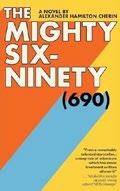
based out of San Diego. Disenchanted with the station’s new management and wanting a career change, Michael decides to hold a treasure hunt as a last hurrah before hopefully moving on to greener pastures. The station hides $50,000 and Michael discloses a new clue to his listeners each day, hinting at the money’s location. The three (ultimately four) contestants at the center of the narrative are Danny Baker, a lonely motorcycle racer who spends much of his career crashing his bike; Sally Lang, a single mother and bank teller who is stealing money from her job; and Augie Kloptman, a Holocaust survivor who relocated from New York after losing his wife, Esther. Danny has dreams of opening a mechanic shop. Sally needs the money because an auditor is coming to check up on the bank—a co-worker knows she has been embezzling, so Sally needs to cover her tracks. Augie, a janitor at a local shul, enlists the help of 14-year-old Jason Schneidman to decode the station’s clues, and the pair form an unlikely but charming partnership. What comes through most strongly in Cherin’s tale is the strange but heartwarming interconnectedness of existence, symbolized in this case by the radio. Supporting this theme are the ways in which the characters solve the station’s clues by associating the answers with memories or events in their lives (in a manner reminiscent of the film Slumdog Millionaire). Cherin’s prose is richly detailed, deftly describing the early ’80s setting as well as illustrating the specific environs of the characters: “She buttoned her blouse and walked through the dimly lit bedroom, an aroma of cigarette stains and mold wafting from the walls, and bounced her way like a pinball down the hallway.” Cherin’s story, equal parts engaging and evocative, feels human and lived in.
Cousins, John | Self (194 pp.) | $17.99 paper April 18, 2023 | 9798391784050

Investor and tech-company founder Cousins breaks down the stock market to its core components for the uninitiated hoping to find success in investing.
In Cherin’s novel, four strangers aim to win $50,000 in a contest from a Southern California radio station.
In 1981, Michael Kingman is a DJ for the “Mighty 690,” a Top 40 radio station
A thoroughly enjoyable and skillfully crafted tale.

For more Indie content, visit Kirkus online.
“While investors beat the market, it’s certainly not easy,” the author tells readers toward the end of this book. As with any enterprise, one must first understand the details of stock investing in order to be able to do it well. In these pages, the author presents a brisk but highly comprehensive examination of many key elements of high finance and investment, and he tackles a wide range of common queries: What are a chief financial officer’s main concerns? What exactly does a financial statement reveal? Are there specific ways to best understand a company’s 10-K annual report? Cousins offers complete answers to these questions and a great many more. Before delving into the complexities of modern portfolio theory (also known as mean-variance analysis) and the best ways to diversity one’s portfolio, the author provides granular details on how companies operate. For newcomers to investing, he effectively demystifies what exactly constitutes a stock and how it functions in the real-world economy. As one might expect, billionaire investor Warren Buffett and his approaches to successful investing loom large in Cousins’ cleareyed analysis of the stock market; however, so does the author’s mother, whom he characterizes as a “skillful investor” who “managed her finances with care and foresight, shared her financial wisdom with me, and planted the seeds of curiosity and ambition.” The author’s knack for balancing the technical with the homespun makes for a highly readable exploration of often dense material. Diversification, for instance, is a lot easier for novices to understand when
the explanation includes an umbrella company and a suntan lotion company (own shares in both, the author notes, and you’re covered). For every in-depth analysis of “acid-test ratios” and “beta coefficients,” the author includes well-grounded explanations, best summed up by age-old nostrums such as “not putting all your eggs in one basket.” A comprehensive but easy-to-understand primer on investing for newcomers.
Crump, Tracy G. | Àse Publishing Group (186 pp.) | $19.95 paper May 18, 2023 | 9798218127923
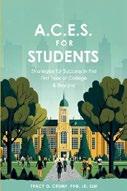
A comprehensive guide for beginning college students on what to expect and how to succeed. A wide range of skills are needed to succeed in college, and Crump tackles them all with her “Achievement-driven,” “Capacityinformed,” “Enthusiasm-oriented,” “Skill-building-focused” (A.C.E.S.) method. The author divides the book into three parts, beginning with common emotional issues that face incoming freshmen. These include challenges like the development of self-identity: “You will also start forming and evaluating your self-image (i.e., how you see yourself), self-esteem (i.e., the value you place on yourself), and ideal self (i.e., the type of person you aspire to be). At the same time, you will begin building your foundational understanding of your social identity.” Part 2 delves into practical advice on such topics as note-taking methods, learning strategies, and time management. The last section explores postcollege concerns and includes guidance on how to benefit from professors’ experience and prepare for a successful career. Fill-in worksheets contain reflective prompts based on
their particular chapter’s material, such as “What is your life goal?”; “What resources do you use, and what resources do you need to meet this goal?”; “What motivates you to reach this goal?”; and “What current skills do you use to assist in meeting this goal?” Occasional diagrams will appeal to visual learners, and activities like a campus scavenger hunt encourage readers to physically explore their campus and resources. Crump’s advice proves to be both theoretical and practical—she offers many actionable tips in addition to research-backed information, from ideas for integrating multiple learning styles while taking notes to hacks for planning a class schedule to suggestions of pre-semester activities to help new students feel more comfortable on campus.
Crump’s voice remains clear and concise—almost clinical—throughout, lending the guide an authoritative air that further adds weight to her counsel (there is no warm and bubbly “You got this!” cheerleading). But this doesn’t mean the text is not encouraging—it’s simply good, solid advice given in a calm and knowledgeable way that will likely appeal to anyone who likes to have a game plan in place (but not so much to those who like to be coddled). Readers will likely find themselves highlighting every single one of Crump’s sentences, because everything here feels essential— even the layout is organized for maximum re-readability. The author never talks down to her audience, instead treating incoming freshmen as adults who are fully capable of forging successful lives for themselves at college: “You will likely use multiple note-taking strategies to capture your knowledge of course material. As such, you may begin by outlining during the course lecture, then use the Cornell Method to write more detailed notes and summaries, and then engage in mind-mapping to synthesize the material to explain your understanding to your professor.”
Crump’s no-nonsense approach even extends to the softer topics she covers, such as tips for overcoming homesickness. She also spends some time encouraging readers to keep up with their “mental hygiene,” a phrase that
delightfully captures the book’s down-to-earth approach to an often overwhelming experience. A practical college guide that covers all the essentials with precision, respect, and reassuring authority.
Daniels, Marc | Outskirts Press (206 pp.)
$21.95 paper | July 24, 2023 | 9781977261502

A Jewish American activist looks to his faith for ways to remedy America’s political divisions. Daniels made national headlines during the 2016 and 2020 presidential election cycles with his distribution of tailor-made red and blue kippahs (also known as yarmulkes) for supporters of the Republican and Democratic candidates. Careful to reach out to all sides, including supporters of Donald Trump and Bernie Sanders, the author sought to spread a message of peace and reconciliation; the inside of each kippah featured a nonpartisan prayer for Muslims, Christians, and Jews to “weed out hate.” They were part of a national movement that Daniels led, which he surveys in his previous book, Weed Out Hate: Plant a Rose (2020). The author is the grandson of the inventor of the Ross Root Feeder, a popular horticultural tool, and he uses the invention as an extended spiritual metaphor throughout both books. Just as his family’s business centered on nurturing rosebushes and trees “at the deepest roots,” so, too, does Daniels see his kippah-distribution movement as one that has spread nutrients of peace and cooperation. At its best, the book blends an account of the author’s spiritual vision with a campaign memoir that recounts his interactions with some of the nation’s leading politicians. Vice President Mike Pence, Daniels notes, posted a picture on Twitter of himself hugging the author, and former secretary of state Hillary
Clinton, he says, insisted on calling him “Rabbi,” despite his insistence that the title didn’t apply to him.
The author also openly admits to the initial naïveté that infused his movement, noting that he’d long been “fascinated” by Trump as a fan of his NBC TV show The Apprentice. During Trump’s first run, Daniels presented the Republican candidate with 50 gold hats that featured the words “Donald Trump 2016” in Hebrew and English; Trump said “I love it” and asked that Daniels give them to his son-in-law, Jared Kushner. The author now describes his interactions with the Trump campaign as “dancing with the devil,” and he relates his appearances at Trump’s campaign rallies as reminiscent of his own visits to the Dachau concentration camp; he also compares one of Nazi propagandist Joseph Goebbels’ speeches and “today’s right-wing ideologies.” In this book, he offers an alternative vision (“Making America Kosher Again”) that blends Kabbalah mysticism and the “deepest roots of the Torah” to offer a spiritual vision that turns Trump’s campaign slogan, Make America Great Again, “on its head” by encouraging civic prayer and collective intentions for “cultural unification.” Despite the book’s dire assessment of contemporary Republicans, the author is relentlessly positive in his belief in civic transformation. This belief in the fundamental goodness of humanity may be refreshing to readers tired of cynicism, but it may strike others a s overly optimistic. Still, Daniels is effective at making his argument, and he approaches this brief book with an enthusiastic writing style. The engaging narrative is complemented by a wealth of full-color photographs of political figures, credited to various photographers. A timely and accessible political commentary that draws on Talmudic wisdom.
DeJong, Lisa J. | Illus. by
PiaReyes FriesenPress (28 pp.) | $26.99
Jan. 8, 2024 | 9781039196810
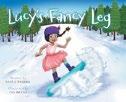
A young inventor designs the perfect prosthetic leg for her after-school activities in
DeJong’s illustrated children’s book. Freckle-faced Lucy, who was born “with one regular leg and one little leg,” has a special talent. She’s an inventor who has a workshop in her closet for building special prosthetic legs. Before school, she debates which one she’ll wear. Her spring leg will be too bouncy, and the flipper on her swimming leg might trip her up in the classroom. Her snowboard leg is out of season. Finally, Lucy decides on her walking leg, which does everything she needs—until it flies off when she kicks a soccer ball too hard. Luckily, a friend catches and returns it, so Lucy can go to dance class. One thing she can’t do in ballet is get her walking leg to point; she returns to her workshop and soon returns with a perfectly pointed, sparkly ballerina leg. The “fancy leg” is just right for all her activities, but especially for ballet. DeJong uses accessible language in a conversational tone to engage young readers. Lucy is a cheerful, smart protagonist who doesn’t let the lack of a pointed toe get her down for long. Instead, she recognizes problems and finds solutions, surrounding herself with supportive friends and family. DeJong captures the protagonist’s attitude in phrases such as “She had a lot more legs than most of her friends.” Lucy’s community readily accepts her differences and values her imagination and skill, which young readers with their own assistive devices may find affirming. Illustrator Reyes captures Lucy’s
Devere, Ox | Self (486 pp.) | $17.99 paper Dec. 8, 2023 | 9798989542406

Clandestine operatives race to prevent an ancient threat from unleashing global destruction in Devere’s paranormal thriller. The mythology surrounding the historic Knights Templar has inspired much popular fiction, including, of course, Dan Brown’s bestseller The Da Vinci Code (2003). Fans of the genre won’t be disappointed in this actionand character-driven debut novel, which offers a fizzy blend of religion, real and imagined history, recent current events, political upheaval in the Middle East, and supernatural horrors. The story opens in Paris in 2022, during the restoration of Notre Dame Cathedral, which was nearly destroyed by fire in 2019. Workers make a shocking discovery under the broken flooring: an ancient iron sarcophagus with etchings of protective biblical warnings “against the forces of evil.” Witnessing the private opening of the sarcophagus are Ridley Samaras and her partner, Henri Michel, operatives of the CIA’s top-secret Osprey Division. The group’s off-the-books mission is to investigate bizarre, disturbing, and potentially world-upending phenomena. The mysterious sarcophagus fits the bill when the powerful jinn inside is unleashed, leaving destruction and bloodshed in its wake as it searches for its demonic brethren and pieces of an ancient artifact that, if joined,
>>> enthusiasm and inventiveness in her full-color cartoon illustrations. The scenes that Lucy imagines when she pictures wearing the wrong leg capture her humor, and Reyes’ use of lighting gives the images welcome depth. Lucy is depicted with brown skin; other characters have a range of skin tones. A clever tale of invention and creativity.


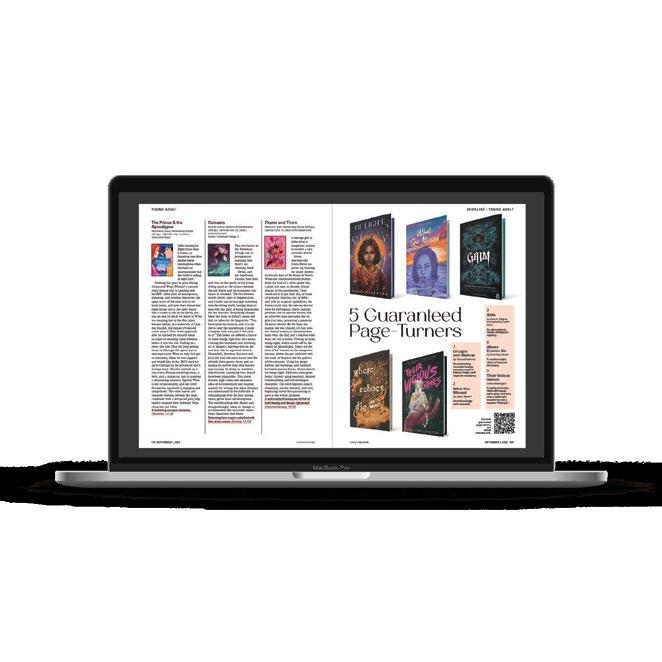

Author of Jellyfish Have Eyes
Please tell a little about yourself and Jellyfish Have Eyes. Raised in an artistic family (father a cellist; mother a sculptor), I became a research scientist, spending most of my career at the National Institutes of Health. After closing my laboratory 15 years ago, I devoted my time to writing. My literary work crosses borders between science, fiction, and art. In addition to authoring numerous scientific publications, including a book on evolution, I have penned a memoir, a trilogy of novels (starting with Jellyfish Have Eyes), two books of short stories, and a book of essays. I am presently working on a fourth novel.
How did you construct the world(s) within your novel?
I love to play with the relationship between imagination and reality, which forms the basis of my novels and short stories. Jellyfish Have Eyes, and the other novels in the trilogy, mix fantasy and imagination with my lifelong experiences as a research scientist at NIH and in Puerto Rico (as in the novel), where I conducted research on jellyfish. My novels are fictional—yet entirely plausible—stories of how research is drawn together through experimentation, imagination, and narration. Even fantasy plays a role in science. For example, jellyfish seeing evolution, proposed by Ricardo in Jellyfish Have Eyes, is considered too fantastic for reality. However, evolution is written in the genes, suggesting that a yet-to-

be-discovered mechanism to read those genes may be a way of “seeing” evolution. Even outrageous suggestions may ultimately prove to have a touch of reality.
How did you research your book?
Jellyfish Have Eyes draws from my wide experiences as a research scientist. I didn’t need additional research about science and its career to write the novel. I did, however, seek knowledge about criminal indictments and trial procedures through discussions with an experienced lawyer.
How has critical and/or reader response influenced the way you think about your work?
Feedback from critics has convinced me (1) that readers prefer science presented as concepts in layman terms they can relate to and as a narrative telling a story that makes sense; (2) that science progresses, like all stories, with interesting characters interacting in scenes; and (3) that characters deal with challenges of overcoming obstacles. Also, I believe surprising twists, including fantasy, often keep readers curious and turning pages. I keep an open mind to possibilities that may seem unlikely at first, but then become important. I hope readers will keep an open mind as well.
Is there anything you would do differently in your next book?
Yes. My next novel, in progress, focuses on the consequences of


Jellyfish Have Eyes Piatigorsky, Joram
imagination and uncertainty and, for the first time for me, involves two narrators with different perspectives and points of view.
Portions of this Q&A were edited for length and clarity.

For a review of Jellyfish Have Eyes, visit Kirkus online.
will have dire consequences for humanity. Ridley and Henri’s desperate race to stop it, in competition with a 700-year-old Templar splinter group’s deadly agenda, takes them from France to England, Italy, Syria, Portugal, Egypt, and finally to Jerusalem, “the city of ancient cities, the epicenter of faith for billions,” where forces target the intersecting holy places of three major faiths, threatening worldwide conflict. In Devere’s novel, readers will find that the decks are so thoroughly stacked with deliciously horrific manifestations of evil that there’s real suspense in wondering how good can prevail. There’s swift action, as well as lavishly described weaponry and tactical specifics, and the primary characters, led by Ridley, have enough individuality and well-integrated backstory to make them more than mere action figures. A few loose ends leave opens the possibility for sequels.
A dynamic convergence of politics, religion, and the supernatural, featuring a strong protagonist.
Dixon, Victoria J. | Illus. by Sera Latterell Verseland Press (20 pp.) | $11.50 Oct. 31, 2023 | 9798988861706

A mother shares how she prays for her child— from before birth through every day of their life—in this sweet rhyming picture book.
From the very first moment the mother learns she’s pregnant, she prays for her future child to be healthy. As the baby moves within her, she prays it will grow up to think on its own and ask questions. While choosing the child’s name, the
mother prays for her child to have an impact that will last. And once the child is born, she gives thanks to God: “Then we prayed your ears would hear wisdom, / and you would heed correction, / and every day of your life / would be full of peace, love, and protection.” The mother pledges she will pray for her offspring every day and encourages the child to commune with God as well. With smooth rhymes and a sometimessyncopated cadence, Dixon offers a lullabylike rhythm for these words of deeply felt hope and love. Though not specified, the phrasing and illustrations (a written prayer, a cross necklace) indicate these prayers are from the Christian tradition. The diversity in the families pictured (Black, Asian, white, multiracial) gives many believers opportunities to see themselves within these pages. Latterell’s fine digitally painted illustrations, which focus on the mothers, radiate the warmth of the families.
A gentle wish; ideal for lap readers in faith-centered families.
Downer, C. Jean | Bella Books (300 pp.) $18.95 paper | Dec. 19, 2023 | 9781642474893 Series: Sloane West Mystery, 1
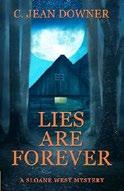
In Downer’s mystery, a no-nonsense private investigator must navigate a hidden world of magic to find a killer.
Former New York City police detective Sloane West is still grieving the death of her mother, Jane, who died in a violent car accident before the story opens. Now a private detective living on her own with a strangely humanlike cat named Bear,
Ideal for lap readers in faith-centered families.
Sloane receives a surprise visit from Harold Huxham, a Canadian lawyer bearing news that she is about to inherit a large estate from grandparents she never knew existed. But just as Huxham is about to show her the papers, a gunman bursts into Sloane’s apartment, shoots Huxham in the head, and fails to kill Sloane—only because she kills him first. These bizarre events send Sloane on a voyage of investigation and discovery, taking her to the tiny community of Denwick on Vancouver Island. There, she finds a small number of tightly connected families who own the land in common and, it transpires, maintain a wiccan coven with abundant magical powers. She is told by her mysterious cousin, Dorathea, that Jane disappeared from their community just before Sloane was born, and that the coven had searched for her in vain. “You and your mum were both wrapped in spells strong enough to keep us from finding you. We are unaware of their source or how she accomplished them.”
Shocked, Sloane soon realizes that dark magic was behind her mother’s and grandparents’ deaths. Thrust into a strange world of demons and talking cats, Sloane must plumb the secrets of the Denwick coven to expose the guilty party. This novel is well written and fast-paced, and the methodical process by which Sloan uncovers the secrets of the insular wiccan community will hold the reader’s attention throughout. Sloane West is a sharp, no-nonsense character whose skepticism about the supernatural elements of the story adds an element of realism to a narrative that is otherwise replete with otherworldly elements. An engaging supernatural whodunit with a compelling lead and a magical setting.

For more Indie content, visit Kirkus online.
Duff, Lori B. | She Writes Press (256 pp.) $17.95 paper | Nov. 12, 2024 | 9781647427368

A rookie small-town lawyer fears a loss when she takes on a popular high school football coach for a client.
Jessica Fischer, 29, is “an inexperienced lawyer just on the brink of competence.” She’s moved to the small town of Ashton, Georgia, where she is the town’s only female lawyer and where “the order of worship was first Jesus, second America, and third the high school football coach, with the second two interchangeable if it were a winning season. It was often a winning season.” The team’s coach, Frank Wishingham III, wants her to defend him after he is served with a lawsuit. The petitioner, Sarah James, claims that Wishingham is the father of her now 16-year-old daughter and wants him to pay past and present child support and cover her health insurance. The coach is a bigot and homophobe (among other things), but he has been advised that having a woman represent him would make for good optics and that Jessica is “a real pistol and would be discrete.” Jessica also tackles the case of Kaitlyn, the pregnant 17-year-old niece of her paralegal, Diane. Kaitlyn’s boyfriend is trying to get into West Point and wants her to get an abortion, which her parents oppose. Meanwhile, the coach is quite adamant about not meeting the daughter in question. Jessica correctly predicts that the two will “have lots of arguments before this [ends].” Duff is a humorist and a self-described “recovering lawyer.” Both skills serve her well in this series launch: The likably modest Jessica easily wins the reader’s rooting interest. The portrayal of the coach flirts with stereotype, but he reveals unexpected layers. A love interest, “nice guy” Bobby, a reporter with the local paper, is a little high school cute, but not ickily so. One looks forward to Jessica building her practice and getting to know more about the town and its residents. Duff scores with a winning protagonist and a captivating courtroom procedural.
Ensign, Diana J. | SpiritHawk Life Publications (244 pp.) | $19.84 paper Feb. 24, 2024 | 9780988332034

The ongoing climate crisis has propelled author and speaker Ensign on a personal journey to uncover all the ways that disaster may yet be averted.
A sense of melancholy and heaviness pervades every step of the author’s yearlong exploration of three key questions: “What harmful human actions are causing our environmental crisis? How do we learn to work together to solve the challenges we face? What positive actions can we take to benefit our Earth home and all of Earth’s inhabitants?” She initially visited parks, farms, woodlands, and nature preserves all around the Midwest, hoping to find answers. Feeling discouraged and overwhelmed, the author wisely chose to kick off her main expedition at a cloistered hermitage nestled deep in a forest. Nature’s rhythm and flow provided her with the inspiration she needed for the task ahead. She later met a Lakota healer who called Ensign a “frightened fox” who needed to “release the fears from [her] past and look toward the future.” The author discovered that the answers she sought were in abundance. Some solutions draw on time-honored traditions of Indigenous people, she notes, regarding being good stewards of the land. Other remedies stem from technological advancements, including “solar trees” that can scrub the air of greenhouse gases. Some readers may find her encouragement to vote for environmentalist candidates to be naïve, and others may roll their eyes at the notion that humanity can assuage global warming by simply adjusting some personal buying habits and recycling more. At the same time, Ensign does acknowledge that “individual action alone will not solve our environmental challenges.” Much of her on-the-ground reportage heavily emphasizes what one can learn from nature. Despite her
ambivalence and doubt about humankind’s ability to overcome the ongoing crisis, her decision to turn her one-year mission into a two-year endeavor underscores the abundance of options. Also, her acknowledgment that people need to “implement solutions that come from the people: not solutions for the people but from the people” provides further credibility to her findings, which ultimately make this book an uplifting journey.
An earnest antidote to the climate crisis blues.
Flynn, Kevin | Price World Publishing (348 pp.) | May 14, 2024 | 9781662950179
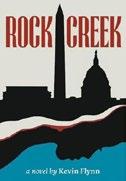
In Flynn’s mystery set in 1950s Washington, D.C., a self-destructive detective risks everything to learn the truth behind the death of a young woman.
Detective Shane Kinnock, a traumatized World War II veteran, was once a man of principle who thanklessly investigated police corruption and longed to right the world’s wrongs. Now he’s a heavy drinker who’s only hanging on to his job because his congressman father knows the right people. In Rock Creek Park, an untamed wilderness in the middle of Washington, D.C., he finds the body of a long-dead young woman. It’s a mystery that will test him to the breaking point before he learns the truth of who this woman was and who wanted her dead. Shane becomes a man driven by his own ghosts, determined to find justice for this victim, and perhaps redemption for himself. Flynn combines the best of noir detective fiction with spartan, affecting prose. The tale highlights the rampant corruption and flagrant racism of 1950s Washington (“a town full of hatreds”) while still weaving a thread of hope via the character of Shane, a grieving knight errant who still longs to do right by a world that has often cast him as a villain. He travels the streets of beautiful, broken Washington
following desperate leads, trusting the wrong people, and finding unlikely allies, unable to stop until he finds his answers. Readers will hope he finds some relief for his self-hatred and begins to find his true self again. Flynn’s writing also drives the story of a young woman with a tortured past and intertwines it with the protagonist’s determination to solve the mystery of her death. Overall, it’s a riveting whodunit with surprising twists that calls to mind the works of Raymond Chandler. An affecting and compelling crime novel.
Goldstein, Julia L. Freer & Paul FoulkesArellano | Routledge (270 pp.) | $42.95 paper April 12, 2024 | 9781032529325

A comprehensive discussion of environmental sustainability as it applies to the materials used in manufacturing.
Goldstein and Foulkes-Arellano (the founders of JLFG Communications and Circuthon Consulting, respectively) astutely observe that, while natural processes tend to be circular (material inputs are typically matched by material outputs, leaving little waste), human commercial activity is largely linear: “A true circular economy is one where products and materials are kept within productive use for as long as possible, then looped (or circled) back into the manufacturing ecosystem.” Per the authors, our “disposable society” reflexively chooses low costs, innovation, efficiency, and economic growth over sustainability. They analyze the possibilities and challenges of achieving circularity from the perspective of material selection, assessing its significance both within the processes of extraction and manufacturing and from the more synoptic angle of overarching product design. As they see it, material selection is vital to the goal of circularity, and they provide an impressively thorough and intellectually
exacting consideration of the materials in question, including metals, wood, glass, and plastic. The authors also discuss, with rigor and clarity, the profound challenge posed by the crucial need to reduce toxicity in materials and manufacturing, the threat posed by electronic waste, and the potential embedded within various commercial and political strategies available to us. This is an exceedingly practical work, packed with concrete illustrations of the authors’ principal points and interviews with industry insiders. The authors impressively balance prudent realism with informed optimism (“It is possible to celebrate advances while being realistic”). For example, they concede that disposable packaging isn’t going to vanish anytime soon, but note that doesn’t exclude the possibility of meaningful progress in the future. Although this is a reference volume—it is not meant to be read through all at once, but rather to be consulted as needed, like an encyclopedia—absorbing it in its entirety leaves one feeling well armed with empirical information and convincing arguments.
An impressive combination of analytical meticulousness, intellectual scope, and philosophical restraint.
Green, Jewel | Self (115 pp.) | $26.99
$11.99 paper | Feb. 12, 2024 9798879341454 | 9798878706681 paper

Green offers a book of poems about overcoming adversity. The poet effectively invites readers to join him on a journey from surviving to thriving in this collection. These works’ straightforward simplicity may appeal most to newcomers to the poetic form, as when the author begins with a simple scene of a child sleeping on a mother’s chest in “I
Took It From You,” prompting the speaker to contemplate what happens when children lack paternal love: “Some are filled with anger, hate, and resentment. / So, they start a life of crime / To say, at last, this is mine.” Feeling caught in “This wretched pace / The rat races,” the speaker of “Where Is Hope?” seeks hope in a nature walk and his lover’s eyes. “Playing Outside” fondly recalls “Growing up poor but so rich / in imagination and dreams” in a world before smartphones. As the speaker of “AMAZE” sees that “Freedom and choice are taken, and fear is in their place,” he mourns what he thought life could be when he was a child. “The Beat Inside” draws insight and a sense of calm from a drum line, and ultimately, finds a sense of peace in “living by the light.” Green also includes unique sensory details, as when relating the sound of the “Night Train”: “The screeching of the brakes / It sounds like the moans of the departed.” However, although the poet unflinchingly describes struggle, he never strays far from hope or his faith in the good of humanity. Indeed, “Go Before Us” reads like a beautiful prayer: “Go before us / let us see: / The person before us / we long to be.” He encourages others to share in lines such as “What’s your story? / I bet it’s extraordinary” (“Once Upon a Time”).
Throughout, the author’s hand-drawn grayscale and color illustrations creatively enhance the work, often employing abstract imagery. An uplifting and empowering collection.
Gutmann, Martin | Springer (210 pp.) $31.14 paper | Sept. 27, 2023 | 9783031378287
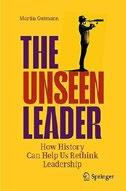
A historian challenges popular trends in leadership studies in this nonfiction book. With American companies spending more than $50 billion annually
on leadership development and leadership studies becoming one of the fastest-growing academic disciplines, “leadership is all the hype these days,” according to Gutmann. And while he sees value in the field, as a scholar of history, he is disturbed by one of the area’s most prominent trends: drawing inspirational leadership lessons from history’s most recognizable names, from Genghis Khan to John F. Kennedy. The historical narratives crafted by some of the principal books of the genre fall victim to what the author describes as the “Action Fallacy” or “the mistaken belief that the best leaders are those who generate the most noise and sensational activity in the most dramatic circumstances.” Not only do these stories ignore the nuances of historical, cultural, and social forces that shape the lived experiences of humanity, but they also contribute to a misunderstanding of what makes a good leader by “promoting the wrong people for the wrong reasons.” Centering on four case studies—explorer Roald Amundsen, Haitian revolutionary Toussaint Louverture, archeologist Gertrude Bell, and British prime minister Winston Churchill—the book offers a convincing revisionist take on leadership studies. Gutmann emphasizes his belief that “successful leadership has little to do with Hollywood stereotypes or heroic struggles,” as many leaders were “at times mere side characters, barely hanging on to the coattails of history.” Beyond its astute analysis, the book suggests that perhaps the greatest insight history provides on leadership studies is that the best leaders are not those who draw the most attention through “bluster,” but those who are able to read the trends of their time and “swim with, instead of against, the current.” With a Ph.D. in history and as the author of multiple books, Gutmann has a solid command of historical context, and backs his argument with a network of more than 300 research endnotes. The book’s impressive scholarship is balanced with an engaging and accessible writing style that targets general readers. A convincingly argued, well-researched counternarrative to the history of “great leaders.”
A spirited and richly informative history.
Haugaard, Janet Butler | St. Mary’s Press (419 pp.) | Sept. 21, 2023 | 9780978726911

Haugaard chronicles the lives of two forward-thinking reformers in early 20th-century Maryland in this nonfiction work. The author opens her narrative of St. Mary’s County in southern Maryland circa 1911, when her two subjects did not yet know their full destinies. At the time, Adele France was a faculty member at St. Mary’s Female Seminary; “she wanted to work for women: their education, their sense of self-worth.” Jesuit John LaFarge was an assistant priest in the area but “not yet awake to the work he would undertake in providing education for Blacks—Catholic and otherwise.” The book’s narrative follows their subsequent evolutions as tireless advocates for education and other civil rights. Haugaard cautions readers, “Woe to the persons who think they can discuss the work of either John LaFarge or Adele France apart from the history of St. Mary’s County,” then proceeds to describe that history in extensive (and heavily footnoted) detail—200 pages into the text, readers are still learning about King Philip II and Sir Francis Drake and Lord Baltimore, taking in quick portraits of famous visitors to America like Frances Trollope and Charles Dickens, and only gradually coming back around to the lives of the narrative’s two crusaders. This structure can be a bit disorienting at first, but the author navigates the
limitations of her primary sources with easy skill, and she does a confident job connecting the lives of her subjects to the broader issues of their time. Both France and LaFarge grow as characters over the course of the story, particularly France, as she guides the transformation of the seminary into a full-fledged junior college while stalwartly pursuing her life’s goal “to educate girls and women to recognize their inborn abilities and cultivate their skills.” This is a stirring double portrait of two forward thinkers.
A spirited and richly informative history of two progressive Maryland groundbreakers.
Kapri, Shadan | Kapri Publishing (208 pp.) | $14.99 paper
June 24, 2021 | 9781734644647
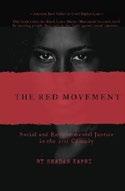
An attorney examines the merits and shortcomings of the Black Lives Matter movement, then offers what she believes is an even more actionable alternative for achieving global justice.
When George Floyd’s murder was broadcast to the public in 2020, the Black Lives Matter movement saw a massive resurgence. Floyd’s death— along with those of Breonna Taylor, Daunte Wright, and other Black American victims of police brutality— gave way to nationwide protests that called for an end to systemic violence. Reading lists boasted everything from James Baldwin to Isabel Wilkerson,
sparking a mainstream discourse about institutionalized racism in America. In this info-packed manifesto, attorney Shadan Kapri praises the impact of BLM but calls it “the tip of the iceberg when it comes to confronting, understanding, and dismantling systemic racism, discrimination, and social injustice in America and around the world today.” In its stead, she introduces the Red Movement, which she describes as “a grassroots international movement that helps people understand their role in the fight for social and environmental justice.” She argues that slavery didn’t end with the emancipation of enslaved Black people in the South, but has quietly grown more pervasive across the globe. “The number of people living in slave-like conditions today is more than three times [the trans-Atlantic slave trade] amount at over 40 million,” she writes. Furthermore, Kapri makes a case for divesting from corporations and industries that benefit from forced or unlawful labor, from “Big Chocolate” to electronics manufacturers to major sporting events. While Kapri is prone to redundancy and veers far too often into ad-speak when discussing the book’s eponymous cause (“Welcome to the Red Movement. We’ve been waiting for you”), she presents a compelling underlying message: The individual is not powerless in ending systems of oppression. An exhaustive look into modern-day slavery and how to actively condemn it.
Kravetz, Jonathan | Running Wild Press (292 pp.) | $19.99 paper May 20, 2024 | 9781960018915
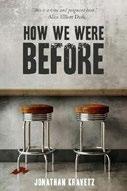
has a line on a story that will appeal to bigger publications: 18-year-old Billy Lawson, during a burglary, shot and killed elderly Pete and Tara Blythe in their sleep. As Matt interviews Billy’s mom, will he become more devoted to the sympathetic woman than to his “juicy” news story? This is the first of 12 interlinked tales that highlight various characters in the homicide’s aftermath over the course of 2014. Shelby, the older of the couple’s two daughters, bonds with a local female reporter and debates what type of letter to send Billy in prison—scornful or empathetic. Shelby’s sister, Samantha, is estranged from her husband, Carlton, a sanitation worker with plans to confront the former police chief who had a hand (however inadvertently) in Billy targeting the Blythes. The author breaks up these stories with glimpses of Pete and Tara’s married life through the decades as they struggle with infidelity and the pressures of raising kids. Kravetz’s stellar characterization pays off in a series of profound turns as his cast question not only the horrifying crime but also their own lives. As these tales aptly reveal, such misfortunes as loneliness, alcoholism, and broken relationships may start with one or two people but hurt myriad others. Characters pop up in multiple stories, giving readers varied perspectives (Billy’s friend, Barry Epstein, seems both a troublemaker and a troubled soul).
Throughout, the author ornaments the taut prose with metaphors that pack a punch (“Life is a broken jaw, always aching”; an end-of-the-workday body is “wrung out like a damp washcloth”).
Kirkus Star
Lane, Tim | In Love With Plaid Press (254 pp.) | $12.00 paper Feb. 16, 2024 | 9798218377700

In Lane’s historical novel, a college student stumbles his way through the alternative music scene of Flint, Michigan, in the 1980s.
A startling double murder shakes a small American town in Kravetz’s debut novel.
Reporter Matt Foster, after five years at a weekly in Benfield, Massachusetts,
A fascinating, potent examination of how a single violent act can spark endless repercussions.

For more Indie content, visit Kirkus online.
Phil McCormick declares to readers early on that he’s usually doing one of four things: attending his creative writing class at the University of Michigan-Flint, helping his roommate organize punk rock shows, managing a small pizza counter, or selling recreational drugs (or “candy” as he lovingly calls them). Phil also dwells in gritty venues on Flint’s East Side, such as the El Oasis or the Rusty Nail, where club kids and skate punks gravitate to him: “The party must continue to rage despite Ronald Reagan’s trickle down economics,” he explains. Phil spends most of his time with Joe, his charming, popular roommate; Stuart, who goes on such intense benders that Phil often has to carry him back to his dysfunctional family’s home; or Karen, a sharp-tongued marketing major who compulsively steals. Karen is the object of Phil’s affection, but she never seems interested in pursuing a romance with him. As the crew shuffles between dance floors, bathroom drug deals, and greasy diners, Lane creates an episodic, slice-of-life story about youth, rebellion, and an increasingly desolate city on the cusp of economic meltdown. The story of a recently departed friend named Nigel, who managed to escape Flint for Washington, D.C., before ceasing contact with his former posse, provides a loose narrative backbone, but it never builds to anything too surprising or important. The focus is on Phil’s wry, personable, and fascinating point of view regarding this time and place (“It might appear that Flint is composed of different levels of danger on account of the homicides,” Phil says, “but this is
something very few of us who are actually from here ever really consider”). All of Lane’s characters feel disaffected and cynical, recalling the fiction of Bret Easton Ellis, but Phil’s charm allows the author to build a world that’s both subversive and inviting. There’s something hopeful and familiar here as his characters head for certain doom—probably because they’re having so much fun. Smart, dynamic writing that brings a very specific 1980s subculture to life.
Levin, Donna | Arcade (408 pp.)
$32.99 | April 23, 2024 | 9781648210310
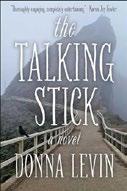
A woman and her former friend run rival support groups in Levin’s comic novel.
Hunter Fitzgerald suffers one indignity after the next. First, she loses her job when the fitness center she manages shuts down. Then her husband, Peter, leaves her for her newly sober friend, Angelica, a longtime partier and sponge whose memoir has just hit the bestseller list. Peter tries to sell their house out from under her just as Hunter realizes he’s destroyed her credit by maxing out credit cards in her name. Finally, while working at her new job at a Starbucks, Hunter learns that Angelica has trashed her in the memoir, accusing Hunter of allowing Angelica to get raped while they were out drinking one night. Hunter’s luck finally changes when, during an oppressively foggy day at a Bay Area flea market, she acquires a “talking stick” from a mysterious woman in an Airstream trailer. “It was given to me by a woman I knew in an artists’ colony in New Mexico,” the woman tells her. “It’s been passed down from mother to
daughter and used in female-only groups. Sometimes to settle a dispute among the women.” Upon receiving the stick, Hunter knows immediately what she needs to do: form a for-profit support group for women focusing on physical and emotional health. The first meeting, held at Hunter’s now-for-sale house, attracts a not-quite-promising group of three, including Penelope, an elderly hypochondriac obsessed with dying; Dannika, a young woman who can’t get into college and is still mourning her dead mother; and Alicia, an OB-GYN who refuses to date out of concern for her teenage daughter. Meanwhile, Peter— who also retains access to the house—allows Angelica to use it to start her own, larger support group, the Fourteenth Step, in the room next to Hunter’s group. Despite her reservations, Hunter sticks it out with her sad trio, and the four of them begin to help one another get past the barriers that have been keeping them from happiness. But can they help Hunter save her house from Angelica’s growing army of supportees?
Levin writes with tenderness and humor, capturing the particular insecurities of each character. Here, Dannika hopes that friendships will develop between the members of the group, even as she frets about being judged by the other women: “Penelope’s house was a little closer to Dannika’s, but it was even swankier than Hunter’s, which made her feel embarrassed about her own place, with its old, cat-and-dust-covered furniture. True, the talking-stick women probably wouldn’t visit her often. Or ever.” Hunter, a California Republican and proud atheist who collects potentially valuable Barbies that she finds at flea markets, is a memorable and utterly believable character. It’s a pleasure to see her heart softened by the equally specific members of her support group. The book is perhaps
An often compelling spy tale with plenty of twists and turns.
longer than it needs to be, but readers will enjoy the extra time they get to spend with these characters.
A funny and occasionally touching novel about rebuilding your life after a crisis.
Levin, Jeffrey Jay | Black Rose Writing (182 pp.) $18.95 paper | June 27, 2024 | 9781685134365
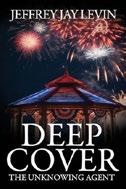
In Levin’s thriller, a Soviet espionage project reemerges decades after the end of the Cold War. In the 1970s, hundreds of highly trained operatives of the U.S.S.R. infiltrated the United States, posing as ordinary U.S. citizens and integrating themselves into American society. In 2011, Lisa Jones, a 28-year-old genetic researcher, receives a strange call, consisting of random Russian words spoken over the 18th-century musical arrangement “La Voltaire et La Franklein,” and goes into a trance. A week later, her 30-year-old boyfriend, Stephan Beck, who interprets intercepted Russian messages for the U.S. Army Intelligence and Security Command, translates one that’s partially concealed by a series of noises; he later discovers that the same sequence—hidden under “La Voltaire et La Franklein”—is on a recording he made at Lisa’s class reunion months before. It’s revealed that Lisa’s parents, Roxanne and Peter, were among the aforementioned Soviet agents, and that Lisa’s school was teaching more than the usual subjects. As Stephan tries to figure out what’s going on, Lisa continues to receive trance-inducing phone calls; soon, she is roped into a clandestine project with dangerous implications. Levin delivers an action-packed novel with a fresh, engaging plot and memorable characters; in some ways, it feels like a love letter to classic spy tales, such as Walter Wager’s Telefon (1975). The story unfolds through multiple perspectives, although all but one of
them—Stephan’s—are written in the third person, which some readers may find distancing. Additionally, the narrative reveals some major plot points very early, including Lisa’s parents’ past and the truth about the school, which takes away much of the element of mystery. Still, it’s an entertaining read that explores rivalries, secrets, and vestiges of Cold War tension. There’s also some metafictional humor: “Turning back to the work waiting on her computer, she thought, ‘You know, I’d make a really excellent spy, just like in those old Cold War novels.’ ”
An often compelling spy tale with plenty of twists and turns.
Kirkus Star
Manus, Michelle | Seclusion Publishing (514 pp.) | $29.99 $24.99 paper | March 19, 2024 9781954400368 | 9781954400375 paper
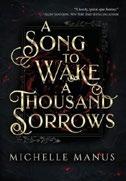
A young woman must learn how to control her magical powers before they end up controlling her in Manus’ fantasy novel. Twenty-year-old Clare Brighton escapes desolate, treacherous Renault County with only a guitar and the clothes on her back. She hitches a ride to Veralna City, the capital of the Faelhorn Provinces, with Lord Verol Arrendon and his husband, Marquin. Desperate to escape the trauma of her past, Clare is determined to make a name for herself as a singer. But even as a talented Songweaver—a type of mage whose magic comes in the form of music—she faces a steep uphill battle. She must not only contend with stifling regulations and an exploitative Musicians Guild, but also register as a mage and start an apprenticeship, as is required by law. The Arrendons take her into their home as a new apprentice of Verol, a mage who’s gifted with a form of magic called Kinthing,
which compels him to protect certain people. And although Clare is fiercely independent, she needs protection, as she’s possessed by an ancient power that gives her the preternatural ability to sway others to her will. Clare calls the entity “the Song” and tries to contain it so it doesn’t control her, but the Song is constantly fighting back, and she may have even more latent abilities lying within her. She must learn to harness her powers before she attracts the attention— and wrath—of scheming, tyrannical warlord King Alaric. In this epic fantasy, Manus presents an emotional story about overcoming trauma, learning to trust others, and reclaiming one’s agency. The story is told through multiple perspectives, and all the major characters are fully developed and complex. The author expertly explores Clare’s arrogance and reluctance to be vulnerable, making her an intriguing and compelling protagonist. However, the book’s greatest strength lies in its extensive, well-crafted worldbuilding. The novel also features enjoyable, action-packed battle scenes, as well as wry humor, as when Numair, a prince and Clare’s love interest, “contemplated the new and fascinating ways in which he was an idiot.”
An often thrilling fantasy with memorable characters.
McCormick, Gail | She Writes Press (336 pp.) $17.95 paper | June 11, 2024 | 9781647426828
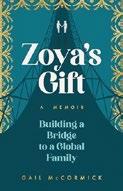
In McCormick’s memoir, a found family connects cultures, overcomes language barriers, and crosses borders. In the 1990s, the author and her husband, Michael, who live in the Seattle area, struggled with infertility and experienced multiple miscarriages. A mental health counselor, she also suffered from chemical sensitivity, which caused “physical, psychological, and emotional reactions to neurotoxic chemicals found in
ordinary products considered to be safe.” In 1997, the McCormicks connected with Children of Chernobyl Northwest, an organization that brings kids to Seattle for summer vacations free from radiation exposure. Maria and Vika Petrova, 8-year-old fraternal twins from a town in Belarus to which residents from the Chernobyl radiation area were relocated, come to stay with the couple, beginning a lifetime connection. The girls return in 1998, 1999, and 2001; with the author and Michael, they play the card game Uno, have competitions to see who has the funniest laugh, and enjoy swimming, among other experiences. A prolonged separation after 2001 was difficult for the author: “Knowing we would always view the same moon provided me with the comfort of a touchstone I could never lose.” Six years later, she and Michael reconnected with the young women during a transformative trip to Ukraine and Belarus. They met Vika and Maria’s parents, Zoya and Ivan, and their beloved babushka (grandmother) in person. “My picture of motherhood—and myself—had been transformed when Zoya recognized me as the honorary mother and babushka of her daughters and grandchild,” writes McCormick. In 2014, Vika and Maria traveled to Seattle with Vika’s 2-year-old son and their niece. Over the course of this memoir, McCormick’s eloquent writing about the physical and emotional effects of her medical challenges is touching, and it is likely to resonate with many readers. Her account of the love between the families, her own hopes for the future, and her strong belief in the power of individual acts to bridge cultural divides is inspirational, as when she writes, “I’ve learned that relationships bound by the heart can survive grievous obstacles in a splintered world.”
A moving affirmation of the healing power of interpersonal connection.

For more Indie content, visit Kirkus online.
Nieber, K. | Pen It! Publications (138 pp.)
$13.99 paper | Aug. 23, 2023 | 9781639844272
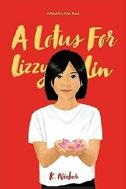
In Nieber’s middle-grade novel, an adopted girl reluctantly visiting her birthplace in China learns to open up her heart to new experiences.
Twelve-year-old Lizzy, who was adopted as a baby, lives with her “heart mom” in Madison, Wisconsin. She and her mother prepare to travel to Lizzy’s home country of China on a post-adoption “bonding experience” trip to connect with her heritage and with other adoptees. The guide group they’re traveling with requires Lizzy to write a letter to her biological mother. They head to Beijing, with Lizzy still struggling to find kind words for the woman who abandoned her simply because Lizzy was a girl. But when she tours the rice paddies where many baby girls have been left to die solely due to their gender, Lizzy suddenly realizes how lucky she really is: “At my birth I was abandoned at the train station where I was sure to be found. Someone cared enough to call the police and they brought me to the Chenzhou orphanage. I wasn’t left to drown by my bio mother. I swear the first thing I’m going to do when we get to the hotel is rewrite my letter, thanking her for my life.” Lizzy tries to deliver her new letter to her old orphanage but discovers that it’s been torn down. With a newfound sense of belonging, Lizzy leaves her letter amid the rubble anyway and reflects on the friends that can be made with a truly open heart. Lizzy’s situation may be specific, but her feeling of never being able to fit in is universal enough to appeal to a wide middle-grade audience. Despite a few typos and occasional passages of stilted dialogue, the brisk plot manages to convey much sensitivity and compassion for Lizzy on her complicated emotional (and physical) journey. When Lizzy finally
finds her voice, readers should be inspired to be themselves and to remember that it’s possible to make friends wherever they go. An uneven but ultimately heartwarming tale of a girl learning to find her place in the world.
Orkin, Haris | Black Rose Writing (312 pp.) $22.95 paper | July 11, 2024 | 9781685134457

An American psychiatric patient who believes he is a British spy flies to London to save the woman he loves from an evil Russian oligarch in Orkin’s comic thriller.
In the fifth installment of this series, the author returns to the strange but hilarious plight of James Flynn, a patient at a psychiatric institution in Los Angeles. He suffers from delusion—despite growing up in Burbank, California, he believes he is a British agent in His Majesty’s Secret Service and that the hospital that houses him is really a clandestine redoubt providing him with a cover. Despite the inarguable insanity of these beliefs, he is an inexplicably talented man who has in fact become famous for saving the world repeatedly, making him a delightfully complicated hero, drawn with great comic effect. When Caitlyn Valentine (a CIA agent with whom he enjoyed a romantic connection) stops returning his phone calls, he assumes she’s in grave danger and tracks her down to London, accompanied by his psychiatric nurse (aptly named Sancho). He finds Caitlyn posing as a bodyguard for Oleg Ivanov, a nefarious Russian billionaire who owns a lab devoted to creating
dangerous computer viruses and who plans to take over the world. This volume in the series is more prone to slapstick humor than its predecessors, as in this exchange between James and Sancho in which James complains about traffic rules in London: “‘Driving on the left feels rather wrong.’ ‘Yeah, but it’s right.’ ‘Right?’ Flynn started to veer. ‘No! Left! Left!’” The inventive premise of the series has lost some of its novelty and, as a consequence, some of its comic sparkle. Still, James remains a memorable protagonist, one whose principal strength as a faux secret agent might be his mental health issues, which make him profoundly unpredictable. Despite lacking some of the luster of the earlier entries in the series, this stands as an endlessly entertaining novel.
A deeply funny novel, artfully composed.
Ormond, T.R. | FriesenPress (198 pp.)
$34.99 | $18.99 paper | Jan. 30, 2024 9781039182066 | 9781039182059 paper
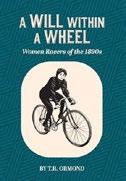
Avid cyclist Ormond offers a history-rich fictional account of the trailblazing women who cast aside corsets and crinoline to become competitive cyclists. The author begins this novel with an insightful introduction to the 1890s bicycle craze, and then turns the spotlight to significant event spaces and the powerhouse women who race in them, challenging sexist attitudes with their sheer tenacity. The women are portrayed as tough, cutthroat rivals, brazenly hurling insults while pedaling at breakneck speeds in pursuit of glory, prizes, and potential sponsorship
A deeply funny novel, artfully composed.
deals. As a result, many suffer harrowing crashes that leave them banged up and bloody. Spectators flood arenas, disparagingly viewing the women like circus acts and ruthlessly scrutinizing and criticizing their attire. Tillie Anderson, a hardscrabble Swede who immigrated to the United States and boldly abandoned her seamstress job to pursue professional racing, is a real historical figure and a key character in this narrative. Ormond’s sensory descriptions of the Royal Aquarium, a grand building once inhabited by marine life, almost leaps off the page: “The tanks were drained, and a crusty, white patina dried onto the glass with frothy, green algae blooms clinging to the corners. A silent, murky gloom reigned.” However, the tone of the writing is often overly formal and scholarly; at other times, it takes on an antiquated, melodramatic style: “The men fail to see it, but the women are messengers from some mighty realm of eternal heroes, bearers of some spark in the darkness emanating from an ancient and enduring fire.” Ormond proves to be a meticulous researcher and skilled illustrator; the author’s black-and-white pen-and-ink artwork, depicting various people and places in the story, is often charming. However, lengthy passages about literature, fairy tales, and politics diverts attention from the novel’s most captivating women at the heart of the narrative. At its best, however, Ormond’s novel delivers an enlightening portrait of fortitude in a work that’s nicely suited for history and cycling aficionados. A worthy journey, despite a few meandering detours.
Pass, Will | Thiessen Press (387 pp.) Oct. 1, 2024 | 9798989180509

An imaginative “autobiography” by Leo, a mixedbreed, large-eared dog with extraordinary abilities.
We meet Leo, who at this point is nameless, while
he’s riding in a car with Mary, a woman who works with Hoover Animal Control. She rescued him from the road where he landed after he was thrown from a van while it was speeding down a desert highway. The pup has a broken leg and a badly bruised head and is barely conscious when Mary brings him to the vet, Dr. Francis. The trauma of his injuries causes Leo to lose all memory of his life before he was thrown from the van. That night, Birdie, a cat who lives at the veterinary hospital, comes to visit and taunt Leo, telling him they’re going to cut off his leg and his “doodads.” Fortunately, Mary comes to his rescue once again, offering to pay for the expensive orthopedic surgery that will save his leg. So begins Pass’ complex, frequently comedic fantasy, an adventure in which all the animals speak with one another, but they can’t communicate with humans—with one exception. As the story progresses, Dr. Francis discovers he can understand Leo, a revelation that begins to drive the poor doctor mad. After the surgery, Mary brings Leo home, names him Leonardo DiCaprio (aka Leo), and introduces him to the other rescue animals who live with her: Shakespeare, an ebullient pug; Antonio, a loquacious macaw; and Dwid, a one-eyed cat. Shakespeare, delighted to acquire the big brother he’s always longed for, devotes himself to Leo, who gradually begins to recover the skills he’d accumulated during his life before the van. He can read—he loves books—and he’s a philosophical thinker who changes his name to Rousseau, aka Rou. But he has no recollection of his puppyhood. He knows only that he’s different—not quite like any other dog, yet certainly not human—and he’s determined to solve the mystery of his origins. With the faithful Shakespeare by his side, he escapes into the desert, convinced that the bright light in the distance holds the answer.
The author, a former veterinarian, portrays his canid characters (both dogs and coyotes) and cats with an understanding of each species that brings them to life, no matter how far-fetched their capers. He takes readers on a lengthy, complicated, rowdy ride through the
desert, to a coyote den, and through a city of lights and fountains. The humans in the narrative have more quirks than the animals, especially Dr. Francis, whom we meet again roaming with a pack of stray dogs. Rou is a stalwart lead, smart as a whip and tenderhearted, and second banana Shakespeare is an endearing, jovial ball of energy. Pass’ novel abounds with witty dialogue, biting sarcasm, and page-turning action. The short epilogue suggests that a sequel may be in the works. Although most appropriate for YA readers, this sometimes overly intricate romp will appeal to all ages. A madcap, entertaining escape from reality from the canine perspective.
Kirkus Star
Perlstein, David | iUniverse (196 pp.)
$16.99 paper | April 8, 2024 | 9781663261878
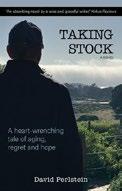
In Perlstein’s novel, a bereft man, after the death of his wife of 46 years, examines his life with an aim of becoming “another version” of himself.
Steve Goldman has had an undeniably successful life in many ways. He’s a former officer at a San Francisco bank who’s found time to indulge his passion for fiction writing over the years; he knows he’ll never be as talented as Bernard Malamud or Philip Roth, but he’s content with that. Now he’s a retired widower who’s feeling his own mortality. One day, he sits down at the kitchen table and creates a life ledger of sorts, focusing mostly on his relationships with lifelong friends and thinking about when he’s been a “mensch” and when he’s been a “schmuck.” His greatest touchstones are three people he’s known since they attended junior high in Queens—Arnie Lieberman, Jeffrey Shiffrin, and Gary Weisbrod—all of whom he considers blood brothers. They’ve stayed in touch, or at least their paths have occasionally crossed, over the decades. Toward the very end of the novel, Steve offers an account of how the
four took a train trip up the California coast for old times’ sake. The trip was instigated by Jeffrey, who was dying. They were all successful in their careers—Jeffrey, a lawyer; Gary, a wildly popular artist and genius self-promoter; and Arnie, an advertising agency art director-turnedpainter. Arnie never forgave Steve for jilting his sister, Joyce, so many years ago; also, Steve feels that Jeffrey treated him and his wife, Evelyn, badly in the settling of her late father’s estate. All these people, and others, find their place in Steve’s ledger. Perlstein, like his protagonist, lives in San Francisco and is a prolific and successful writer in his own right. That he writes well is hardly surprising. Steve’s voice is delightful: self-regarding, conversational, honest, and witty (“I was determined to hold my ground rather than be shoveled into it”). Steve is a man who, whenever he lets himself off the hook, immediately realizes it and backtracks. Early on, he takes a walk in Golden Gate Park to clear his head and finds a split-open suitcase in the bushes; from this find, he concocts a wonderful (and sad) domestic story, establishing his writing credentials. He tells many other stories along the way, such as that of his flamboyant Uncle Max, who crossed the mob and had secrets. An account of Gary’s art installation, which has a comeuppance along the lines of “The Emperor’s New Clothes,” is priceless— and it also happens to dovetail with when Steve met Evelyn. Through it all, a tortured Steve issues dicta such as “I found myself powerless to keep self-justification from duking it out with guilt.” Steve eventually realizes that his ledger may not be the salvation he’d hoped for, since life is much too messy and accounting is for CPAs. But all this reflection, all this revisiting, certainly helps him get through a very tough couple of days.
An absorbing novel by a wise and graceful writer.

Some, Nelly | NS Publishing (186 pp.) May 21, 2024 | 9798990282605
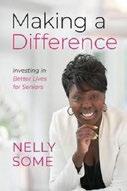
Small residential care homes are good for the elderly and for the bottom lines of investors, according to this insightful business study.
Some, a real estate broker and owner of residential care homes in the Seattle area, touts the residential care home model—featuring ordinary suburban houses with six to ten residents and round-the-clock professional staffing—as a more humane approach to elder care than large, institutionalized assisted living facilities and nursing homes. When done right, she argues, residential homes have a comfortable, familylike atmosphere and a high staff-to-resident ratio that permits individualized care for residents. Employees, she notes, can make home-cooked meals to residents’ specifications, served when they want them instead of at rigidly planned meal times; help residents practice their preferred hobbies and activities instead of relegating them to once-a-week bingo games; accompany residents to medical appointments; and spend time chatting and forging meaningful relationships. The author contends that her model of highquality care makes for happier residents who are less prone to depression; in turn, residential care homes can charge higher rents with higher profits. Some’s primer often reads like a business plan, replete with hard-headed financial reasoning. (“Two vacancies would be a $14,000 shortage every month. Could you afford to keep a place running with that much of an income drop?…That’s why I have focused on avoiding those empty beds. By keeping employees motivated and well compensated, the home succeeds as a business.”) But she also pays attention to the softer side of
elder care, writing of the wrenching psychological dislocations many elderly people endure in sensitive, nuanced prose: “When I was working at an assisted-living facility and a new resident would arrive, I would greet them and try to get to know them a little bit. One of the first things they would ask me would be ‘Does this mean I am never going back to my home? Will I be dying soon?’” Some’s expertise and passion for elder care makes her pitch all the more persuasive. An informative and business-savvy proposal for small-scale, attentive elder care.
Sterling, Will | Subplot (320 pp.)
$20.73 paper | March 5, 2024 | 9781637557372

Sterling presents a Hollywood mystery that focuses on the human costs of celebrity culture. Critics and fans alike are unsurprised when the body of former child star Molly Mandrie is found hanging from a tree on L.A.’s Mulholland Drive. For 15 years, her chaotic existence has been on public display on her reality TV show, Molly’s Messy Life. She suffered through bad relationships and relapses of drug and alcohol addiction on the show, which featured a revolving cast of co-stars, many of whom would move on to headline their own reality shows. But to movie star Hector Espinoza, who was Molly’s devoted admirer, something about her suicide just doesn’t add up. He asks his old friend and current manager, Murphy Beck, to help him look into unanswered questions surrounding her death. For instance, why didn’t Molly leave a suicide note? And why didn’t Guy Maker, who was Molly’s longtime friend and her show’s executive producer, attend her funeral? Hector, who has a dark secret of his own, throws himself into solving the
mystery: “He needed leads. He needed to talk to the people she knew best, who might have known Guy even better.” As he untangles the threads of Molly’s life, however, he finds that the world of reality TV is full of terrible secrets; everyone seems to seek fame and wealth at other people’s expense. In this skillfully written novel, the author (an L.A.based writer and actor) thoroughly roots his story in a dysfunctional Hollywood culture that he seems to know well. Sterling richly describes the emotions and motivations of the major characters—mostly young men and women who live their lives constantly in front of cameras—with a strong sense of compassion. His story is clearly inspired by how the #MeToo movement rocked Hollywood starting in 2017, but it powerfully focuses on the lesserknown exploitation of actors from the LGBTQ+ community.
A fast-paced but sensitively told story set in the world of reality TV with an intriguing whodunit at its center.
VanPatten, Bill | Self (312 pp.) | $12.99 paper Jan. 2, 2024 | 9798873520886

In VanPatten’s novel, a recently widowed gay father tries to help a niece whom he suspects is being abused.
After being disowned in Texas as a “sinner” by his parents, Jesse Pérez eventually finds happiness in California with his partner, David, and Matthew, their son with autism. Following David’s untimely death, Jesse and his child attempt to settle into their new reality. Another upheaval occurs with the sudden appearance of Gloria Salazar, Jesse’s teenage niece from Lubbock, who’s pregnant and reluctant to disclose details. Jesse accompanies Gloria when she gets an abortion, knowing it could be risky with Texas’ strict anti-abortion laws that even reach
across state borders. Gloria wants to live with Jesse, rather than return home— but then Jesse’s brother-in-law brings her back to Texas against her will. Jesse’s reluctant to leave his routineloving son, and he also finds himself drawn to Bobby Martínez, a widowed Californian cop he just met; however, he decides to return to the Lone Star State to help his niece. In this novel, VanPatten explores such difficult subjects as antigay bigotry, rape, grief, and religious intolerance. However, the story also has a pleasant flow, with natural, unforced dialogue. It’s very easy to tell the good people from the bad, but this isn’t necessarily a bad thing; Bobby, for instance, is shown to be a helpful police officer who brings Jesse’s son cookies and assists with homework. At another point, a protective services agent lets Gloria stay with her for a few nights, and Jesse’s former high school teacher tells him “I like to think I helped you on your own path.” Spiteful characters, including Jesse’s parents and sister, and a Texas cop who pulls a gun on Jesse, are shown as twisted by discriminatory religious doctrines, while others act from sheer ignorance. For the most part, though, this is a sweet story of how members of chosen families can soothe and heal one another. Although the romance between Jesse and Bobby lacks surprises, this fact enhances, rather than detracts, from the pleasure of reading this comforting book. An earnest and positive novel that explores heavy topics.
Kirkus Star
Heavenbreaker
Wolf, Sara | Red Tower Books (448 pp.)
$29.69 | May 21, 2024 | 9781649375704

Set in the distant future (3442) on a space station orbiting a gas giant, the story revolves around Synali von Hauteclare, a young woman living in the poorest section of the station. The product of an ill-advised tryst between the head of a noble house and a lowly commoner, Synali saw her life descend into tragedy when her beloved mother was killed by assassins sent by her father. Now, fresh from murdering her father with her own hands, the vengeanceobsessed Synali sets out to destroy the entire House Hauteclare. When she meets a former prince named Dravik who has similar retributive motivations of his own, the two conspire to take down the political hierarchy by competing in what is basically a jousting competition between houses. Instead of horses, the competitors drive massive “steeds”—military machines left over from a distant war—through space. These steeds are as “tall as buildings,” powered by strange technology, and they inevitably destroy their riders if they compete for too long. Synali doesn’t care about the dangers involved—she, in fact, wants to die, but not before delivering karmic justice to everyone involved in her mother’s death. While the SF elements (including intricate worldbuilding and mindblowing revelations regarding the aliens that humankind defeated in that distant war) are brilliantly done, it’s the insightful characterization and emotional vulnerability of Synali that power this story. Her pain, incendiary anger, self-doubt, and ultimate courage will resonate with more than a few readers. “Where does a twisted girl like me fit in the universe? Everyone else is full, whole. No one wants the darkness— they want the stars.” Synali could be the next Katniss Everdeen—the potential is certainly there.
The first installment of Wolf’s SF series chronicles a young woman’s quest to avenge the murder of her mother and destroy all of those involved in her death.
A highly palatable fusion of SF elements.

For more Indie content, visit Kirkus online.
Author of The King, the Wyvern, and I
Please tell us a little about yourself and The King, the Wyvern, and I.
I wanted to create an interesting and intriguing world, with high stakes and engaging action. My purpose was to engage the mind of the reader’s inner warrior using emotion, body language, and internal reactions. I develop my own inner warrior through martial arts. I’ve been training for almost 30 years now, so you’ll find teaching moments throughout the story.
There are many aspects to martial arts, just as there are many aspects about life. If you only focus on one aspect, you’ll become unbalanced. This fantasy is about that balance, regardless of race or gender.
Martial arts contain fighting but are not about fighting. They create a lifestyle of strength, discipline, and self-control. This fantasy encompasses these ideas, both ambition and pride, and the honing of the spirit and control.
I also work in the energy industry and brought a lot of that world into my fantasy realm. Enjoy!
How did you create/acquire the cover art for The King, the Wyvern, and I ?
The cover art was designed by a family friend, Elisha Bryant. The model for the horse was my sister-in-law’s horse, a champion jumper named Cassius. The golden dragon is one of the characters in the story; she’s not fond of humans, so she’s portrayed here with a curling lip and a fierce snarl.

The rider is another character in the story, Isladora, complete with her forearm guards and a magical ring, two items she acquires in her journey of growth and strength.
How has critical and/or reader response influenced the way you think about your work?
Early readers gave me so much perspective in what worked, what didn’t, and ideas for plot development. There is one character in the book, Kaigen, that is different from any of the races; she is unique. Readers have asked for her backstory, or maybe even a future book just about her. It’s exciting to get this type of feedback. Quite a few readers have told me this fantasy world would make a fantastic movie production or series; now that would be even more sensational!
What are you working on now?
I’m almost finished writing a nonfiction book to help people derailed by some event in their life or those needing inspiration to make a life change. The healing, transformative power of love is central to both the fantasy novel and this new work.
More than two decades of teaching martial arts has given me certain insights and wisdom into character building, goal crushing, and reaching outstanding performance. It’s also taught me how closely related the mind, body, and spirit are. The book will include scripture to empower and inspire. The book is an easy read with

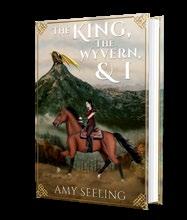
advice on how to circumvent pitfalls, ways to quiet the many desires and needs of our body, and reasons to avoid the tantalizing dangers of evil.
Portions of this Q&A were edited for length and clarity.
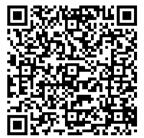




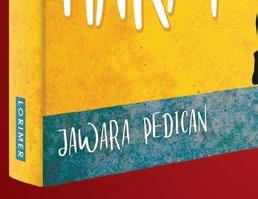

“…does a wonderful job of normalizing opening up and using counseling services, especially for boys and young men who often feel that they have to bottle up their emotions. A sincere, inspiring look at dealing with and overcoming self-doubt...”
— Kirkus Reviews
“A potent message about the mental toll of elite sports and the value of playing for love of the game will resonate with teens. Recommended for high school libraries.”
— School Library Journal

“A laugh-out-loud hi-lo gay romantic comedy… Highly recommended for hi-lo readers who loved Heartstopper.”
— * starred review, School Library Journal
“A sweet queer love story unfolds on a train… cute banter between the boys will keep readers engaged as the sparks fly… An adorable romance with strong coming-ofage elements.”
— Kirkus Reviews


